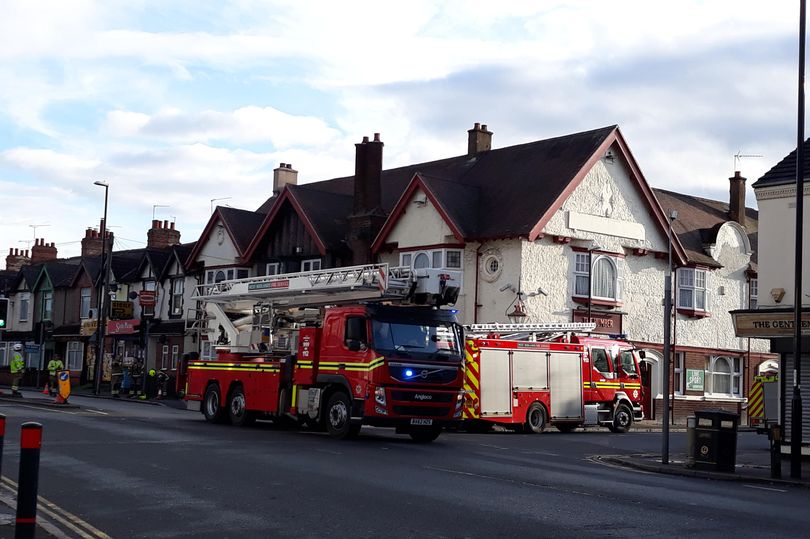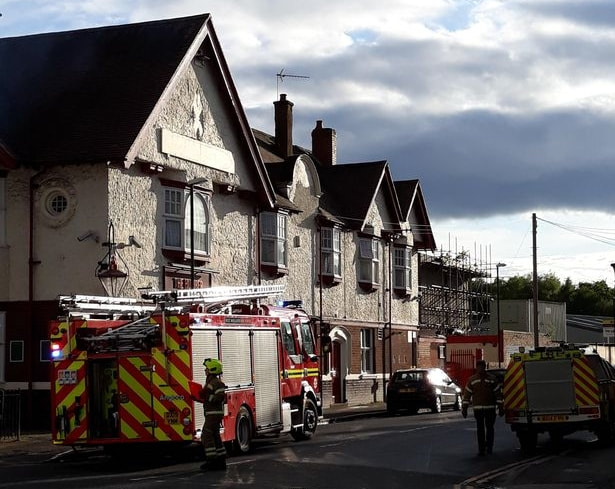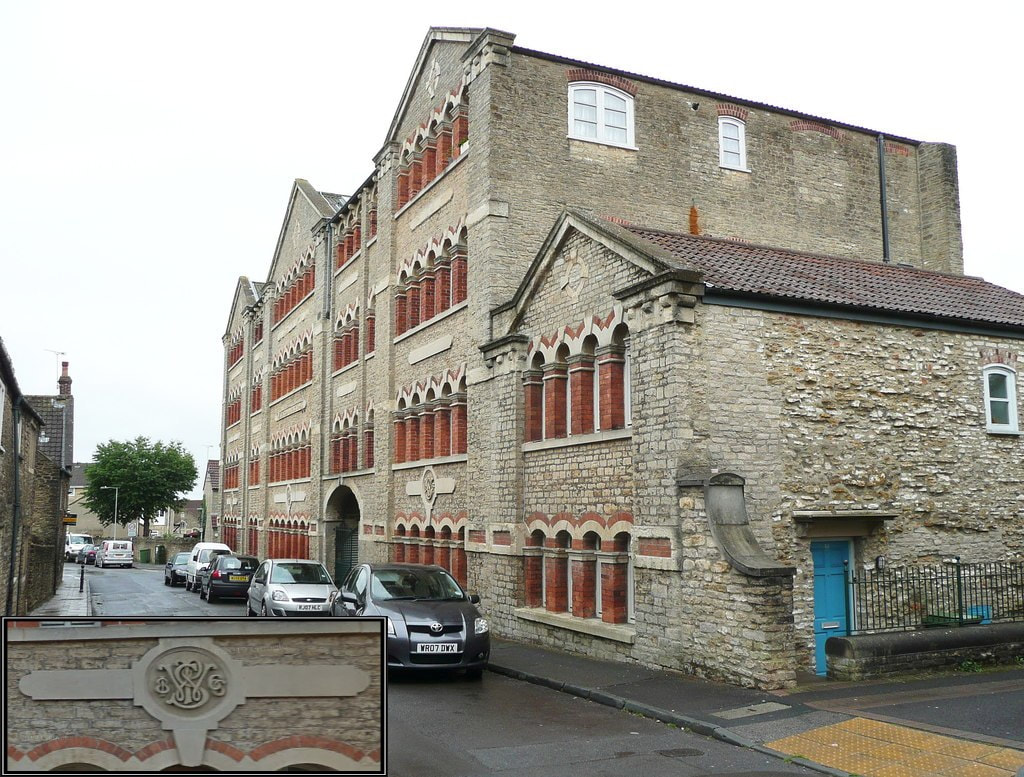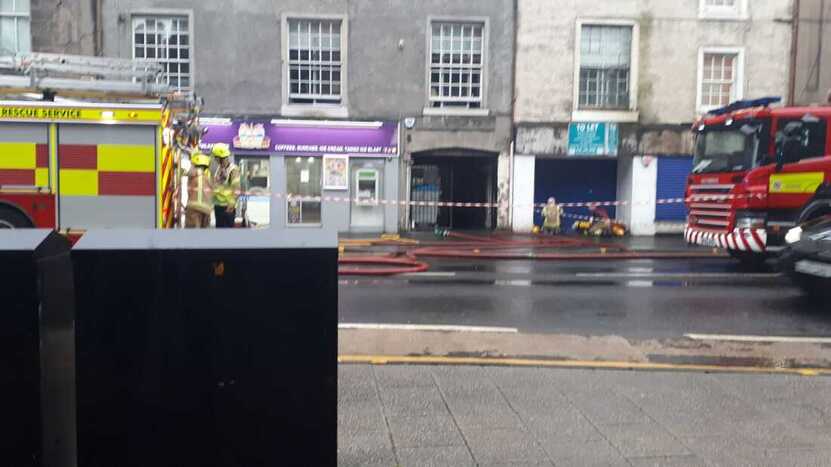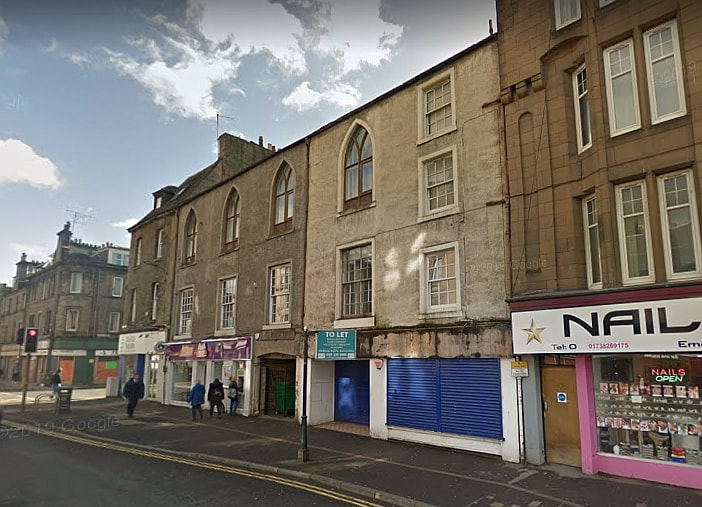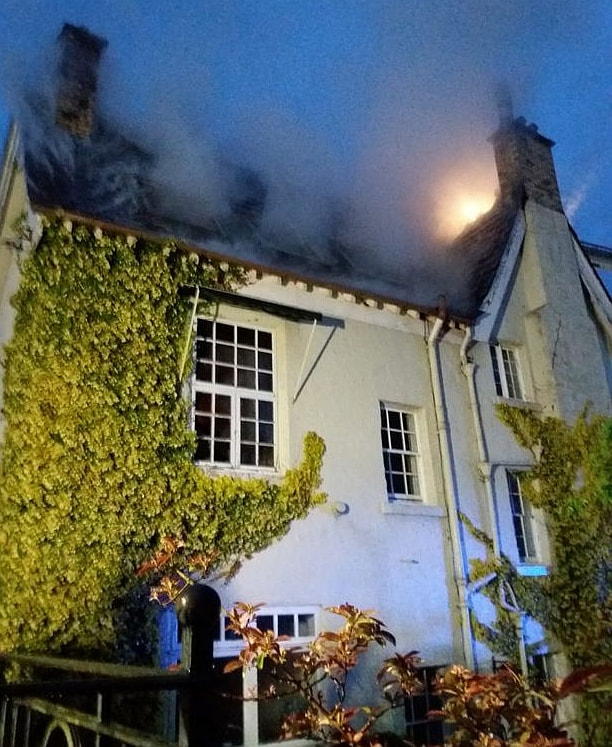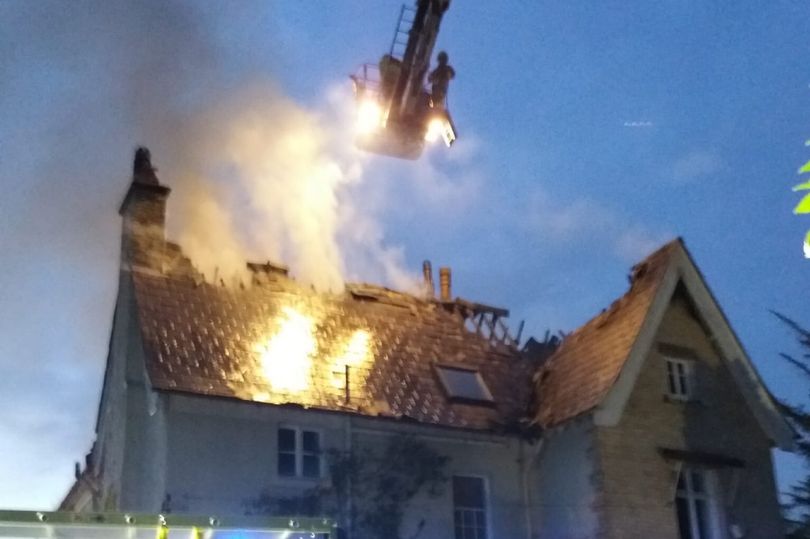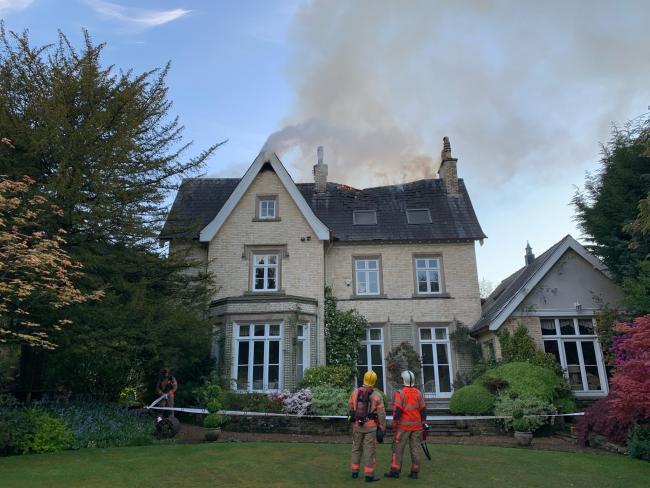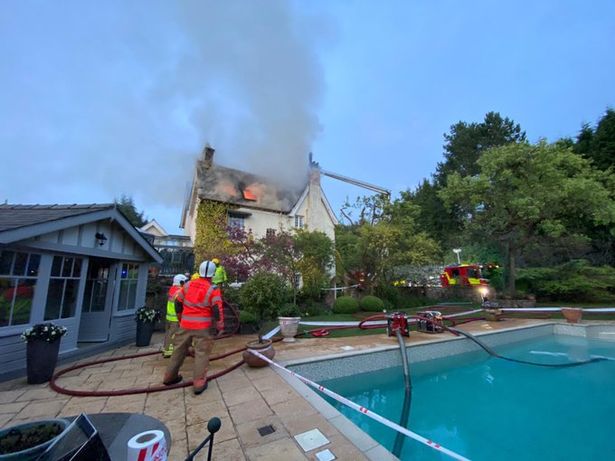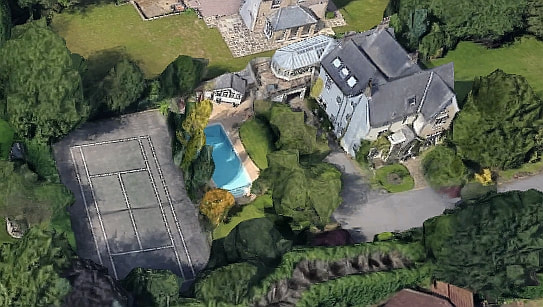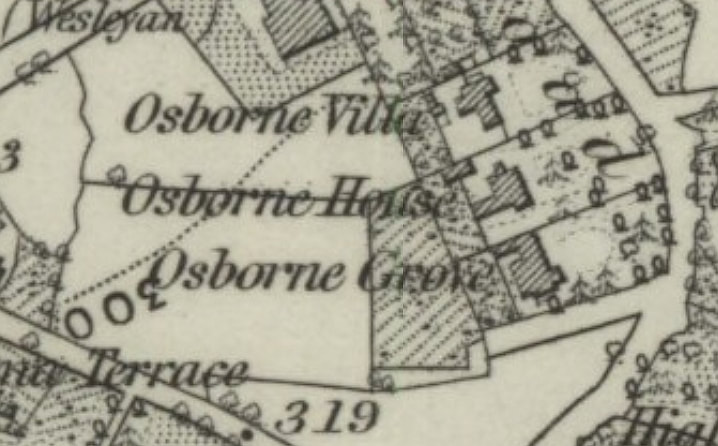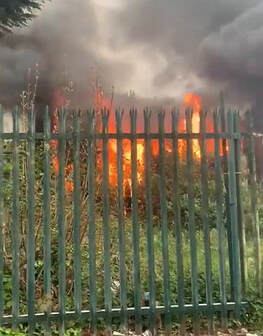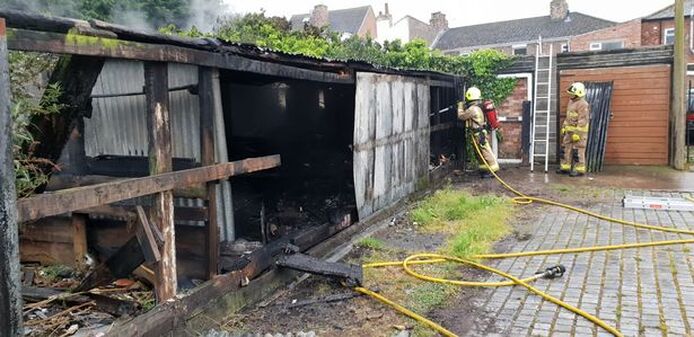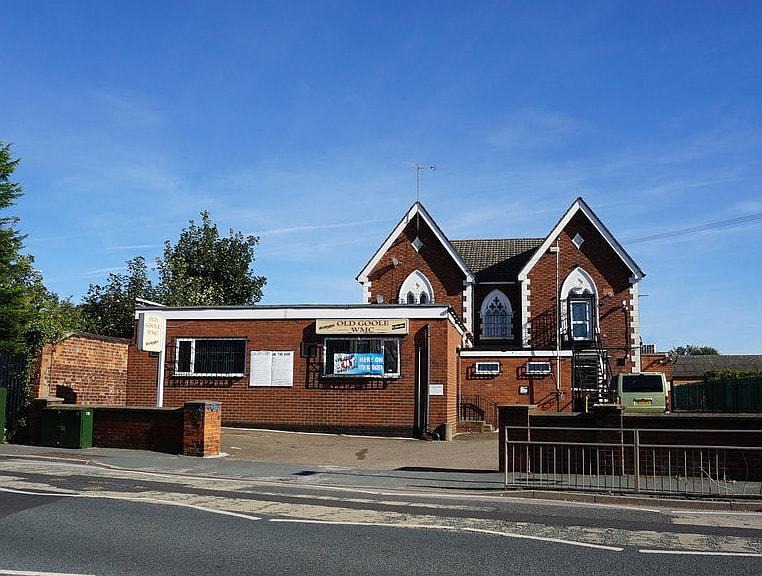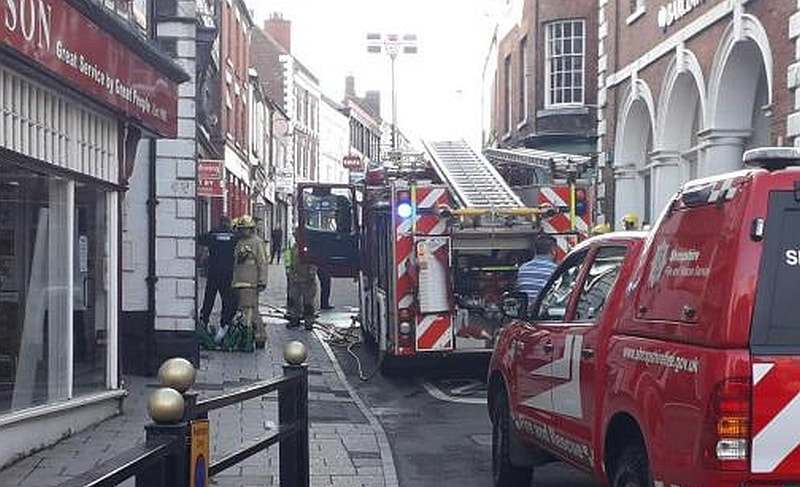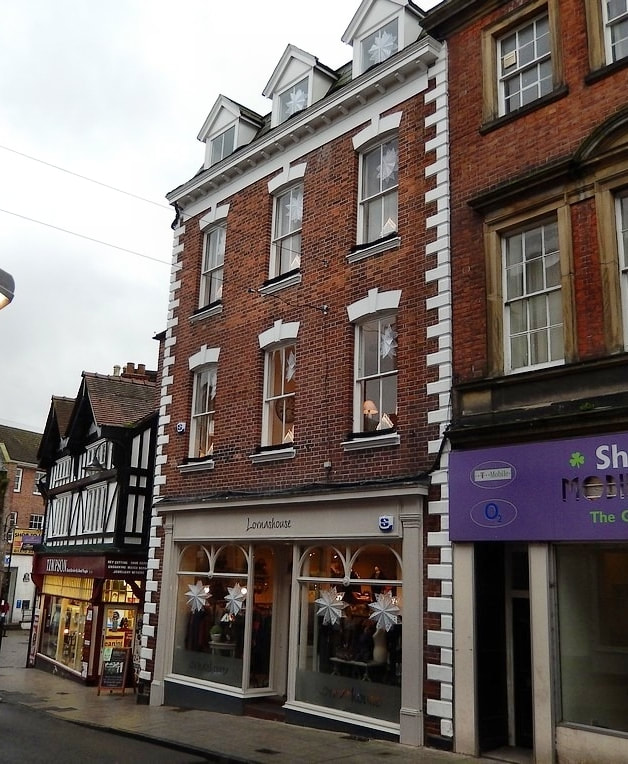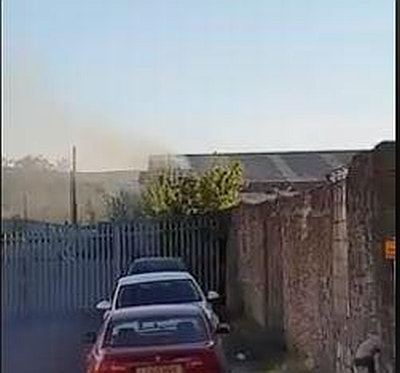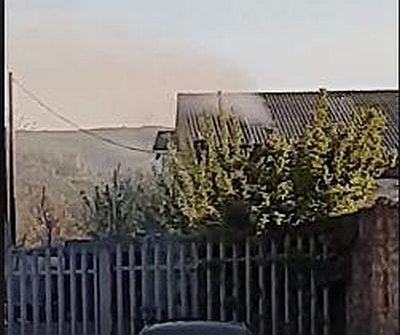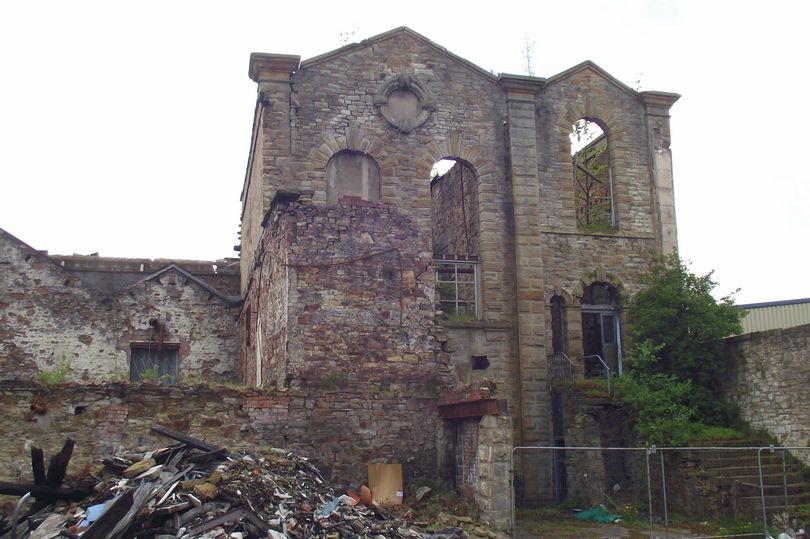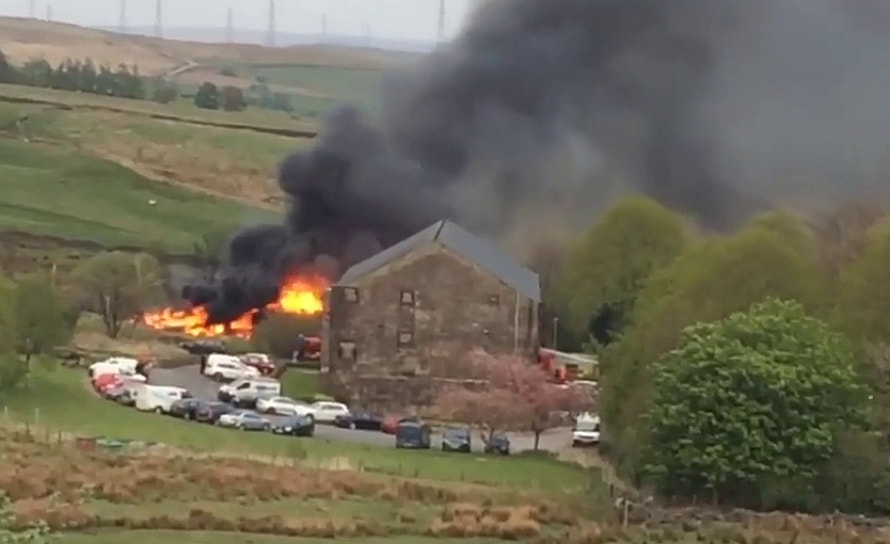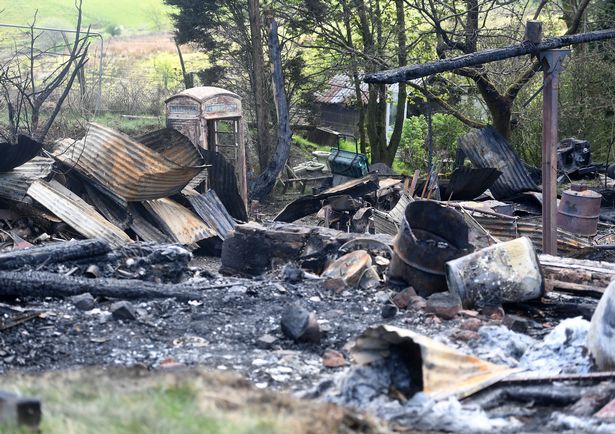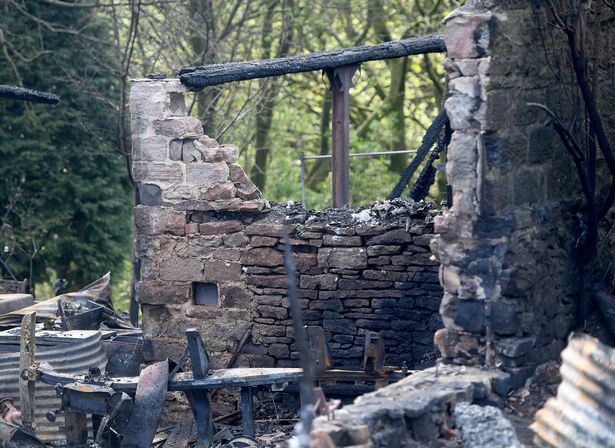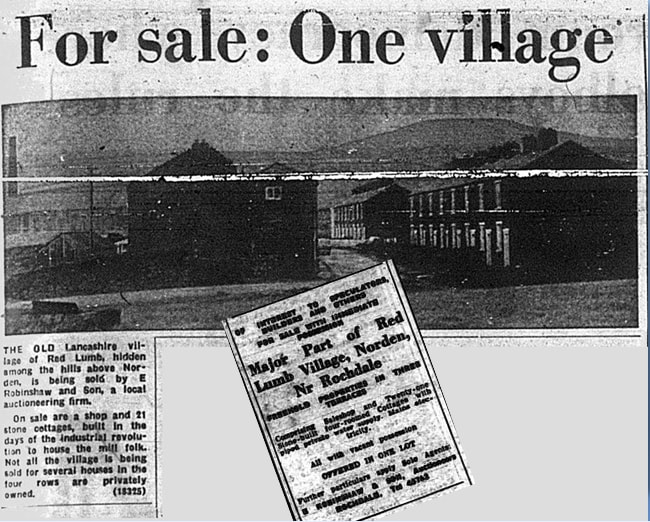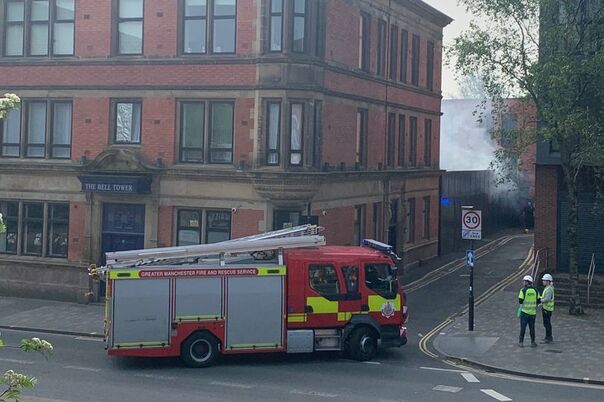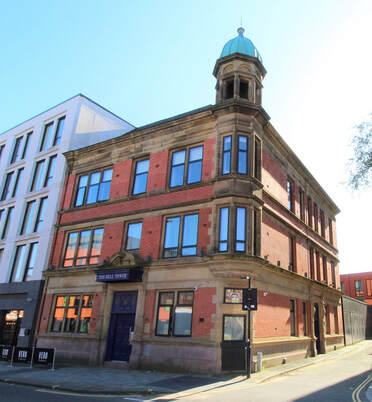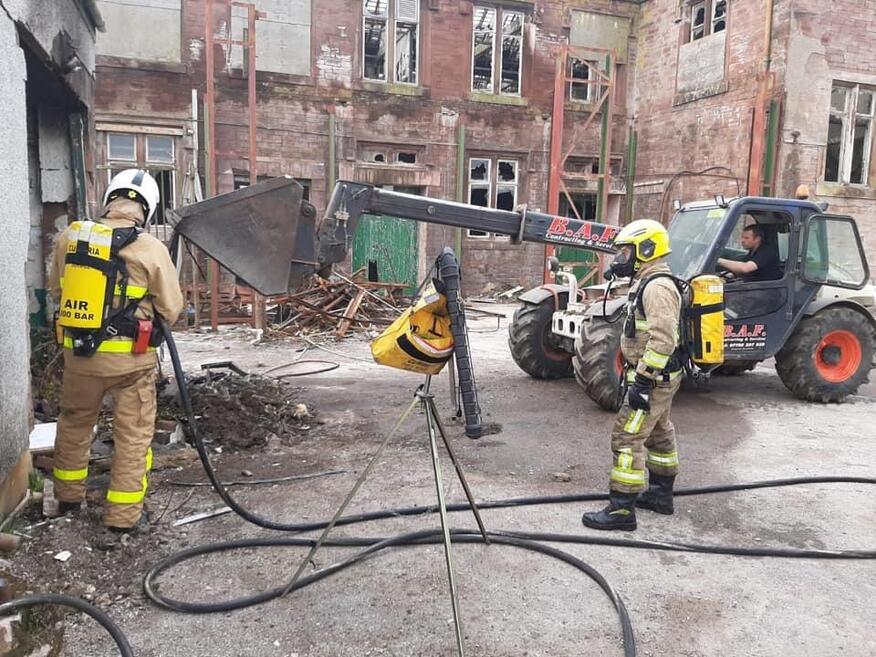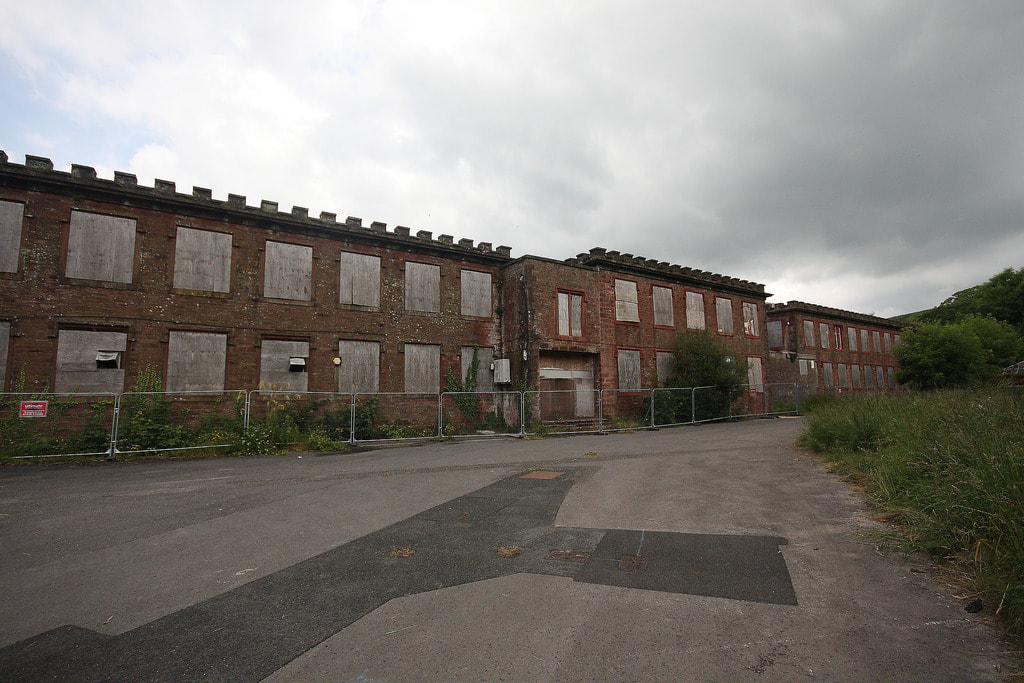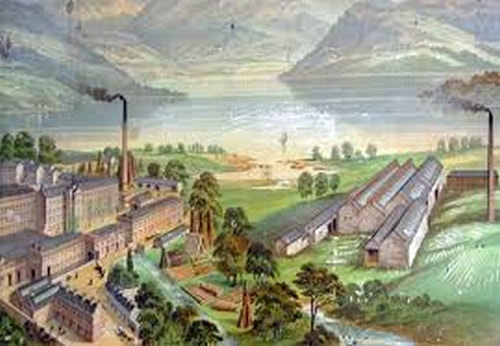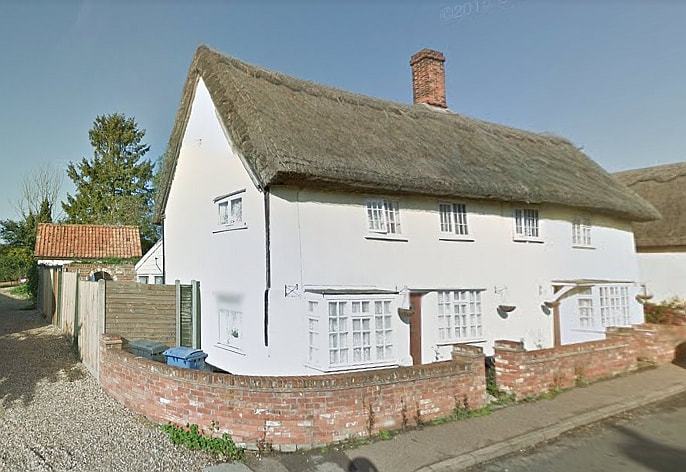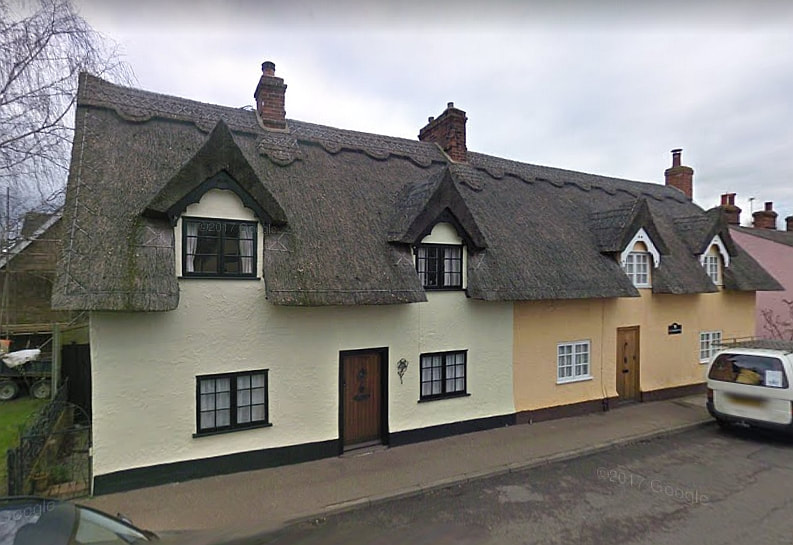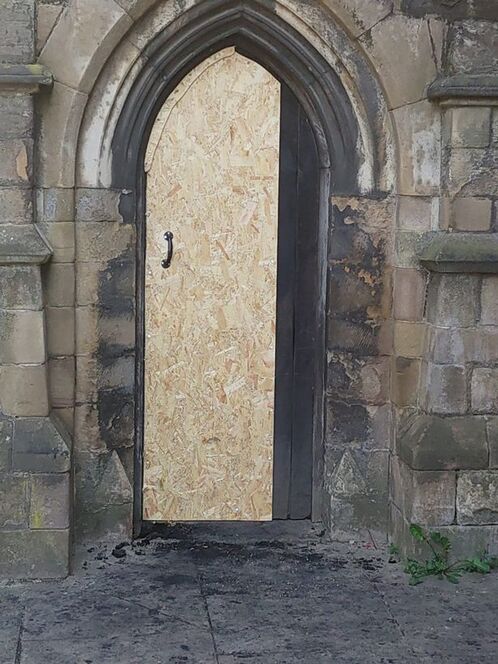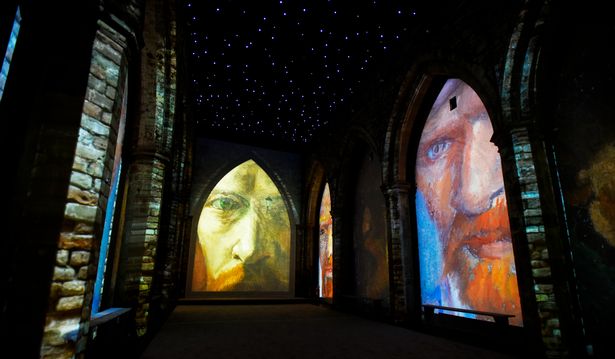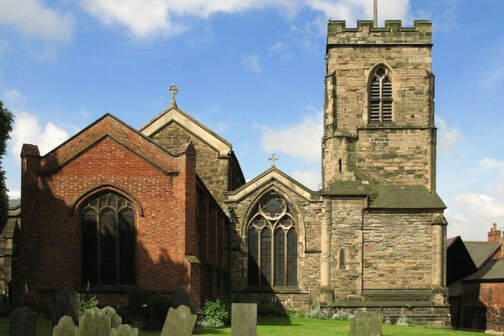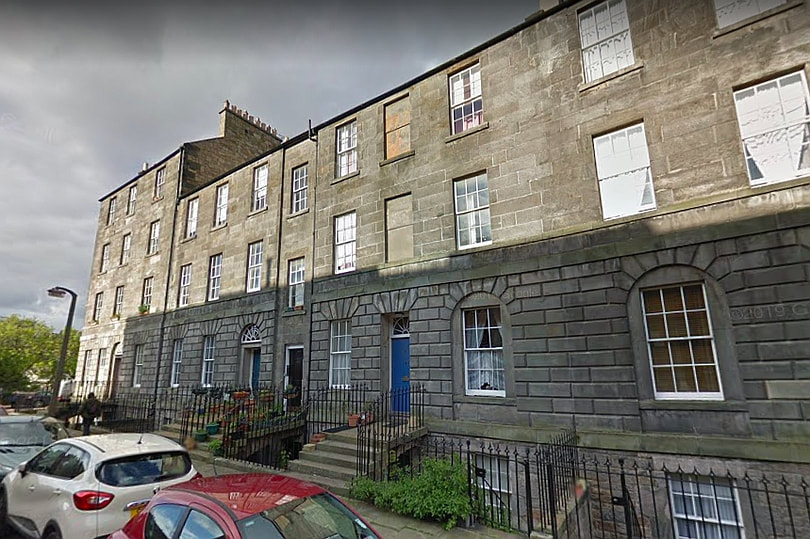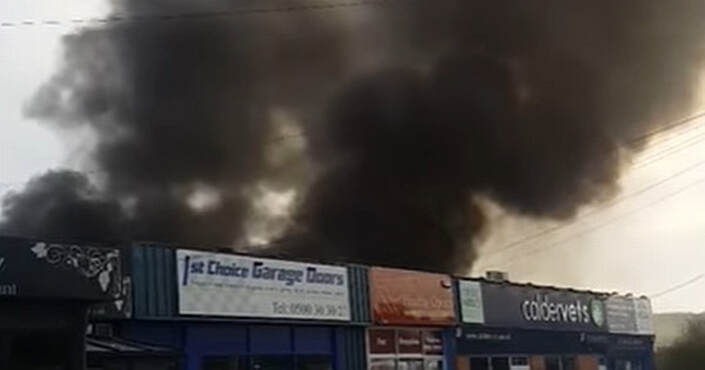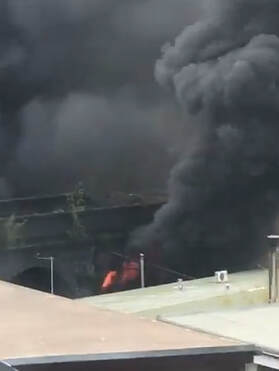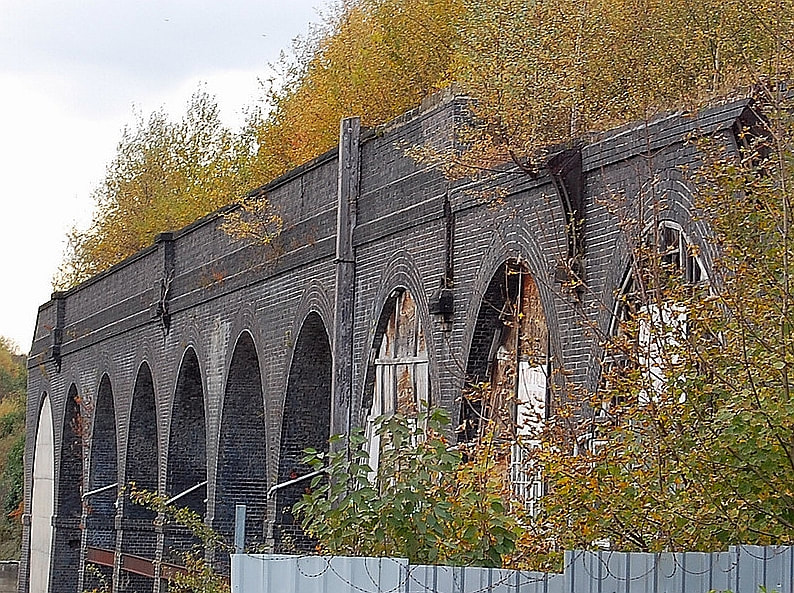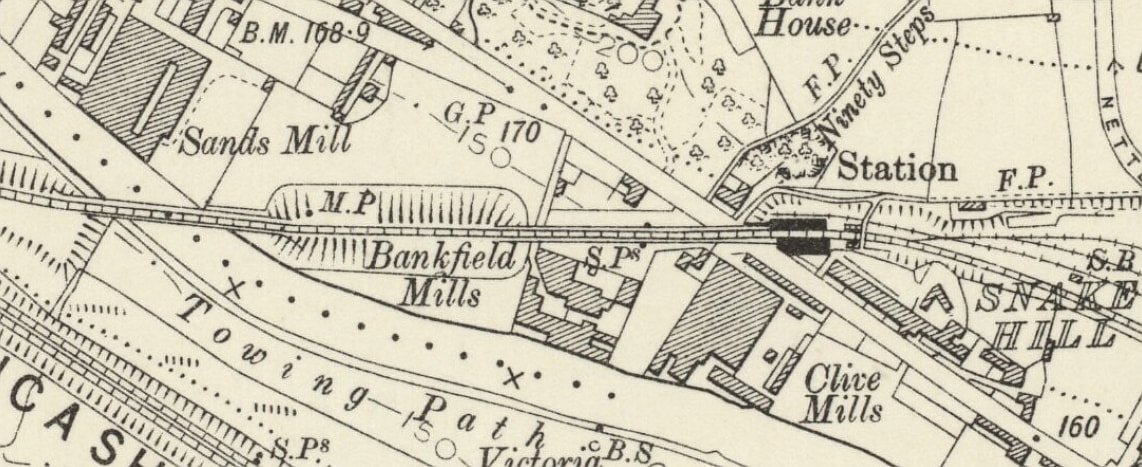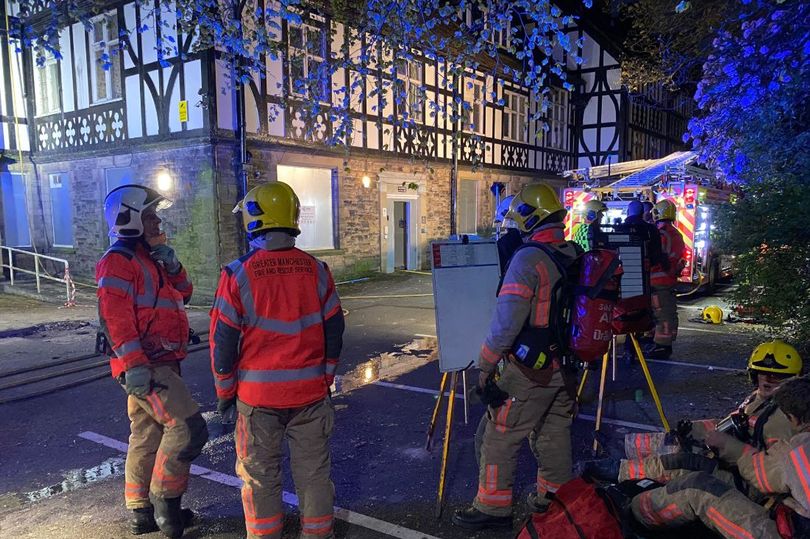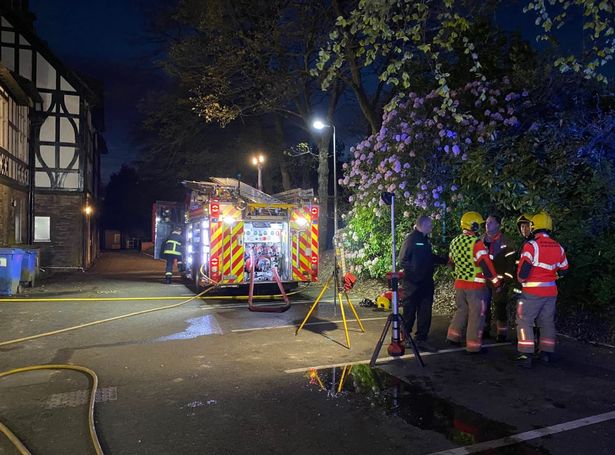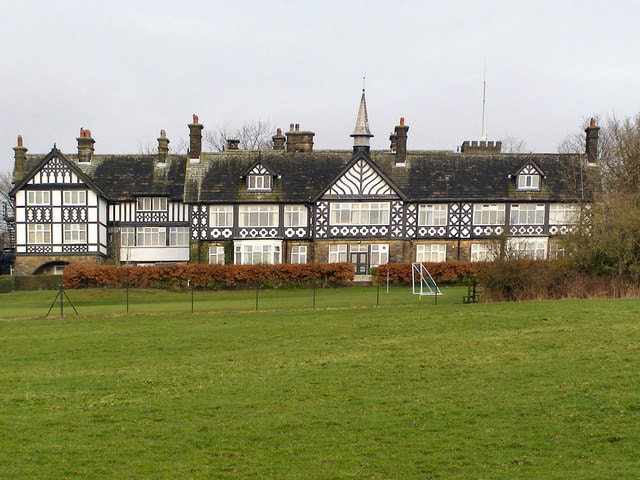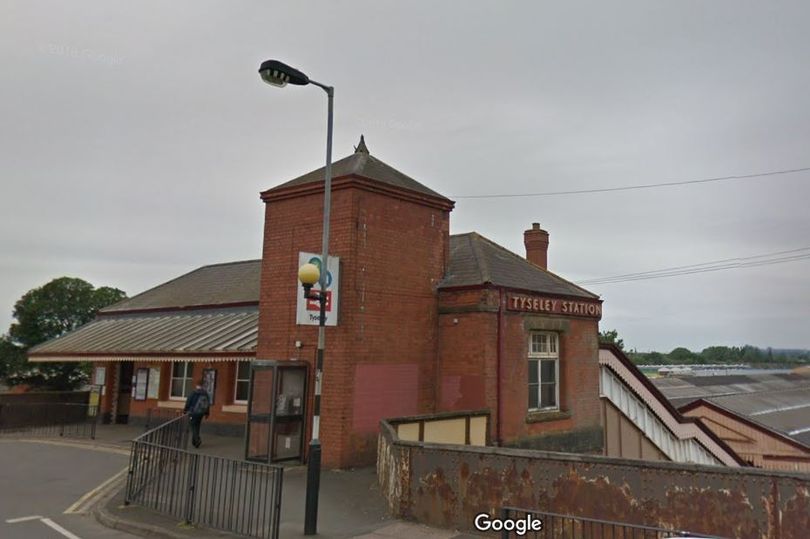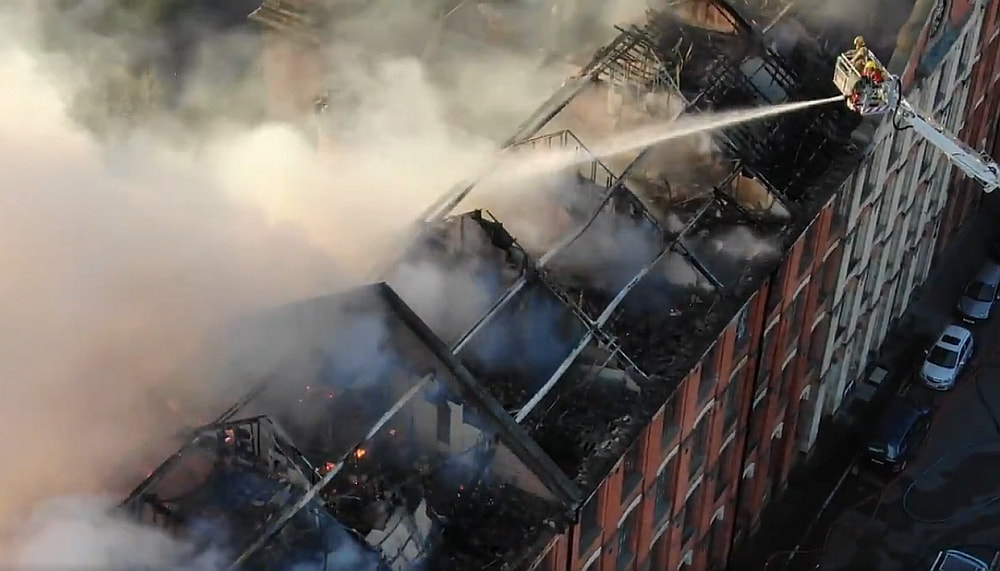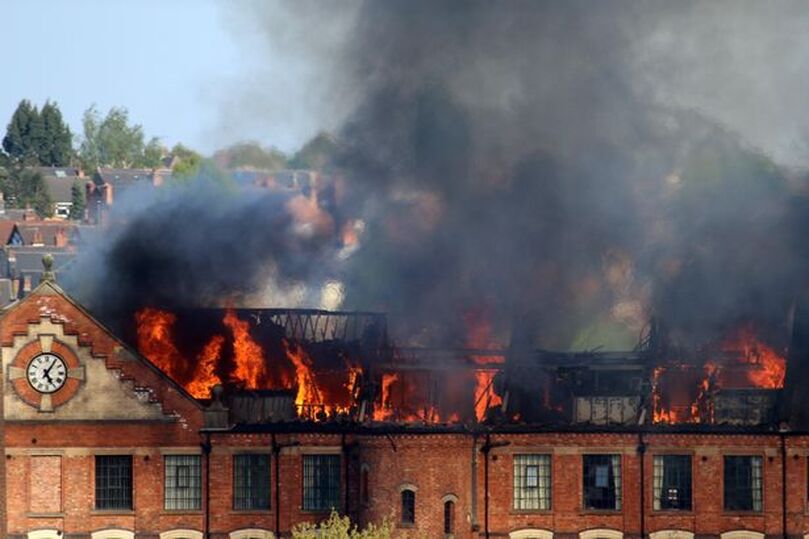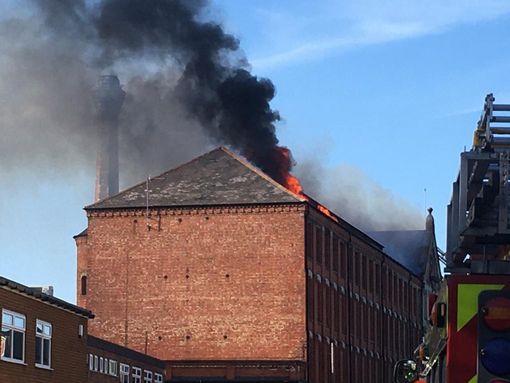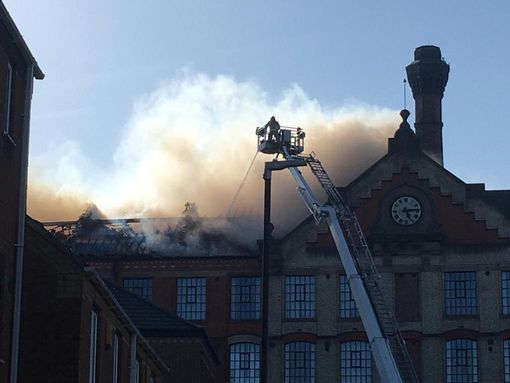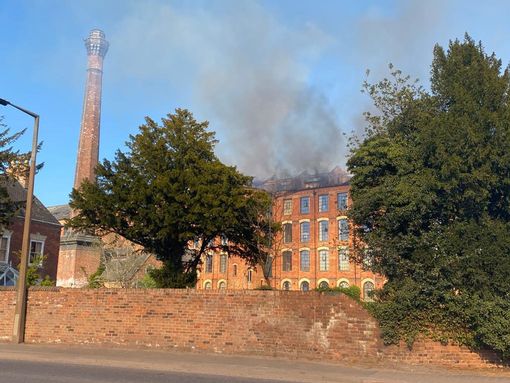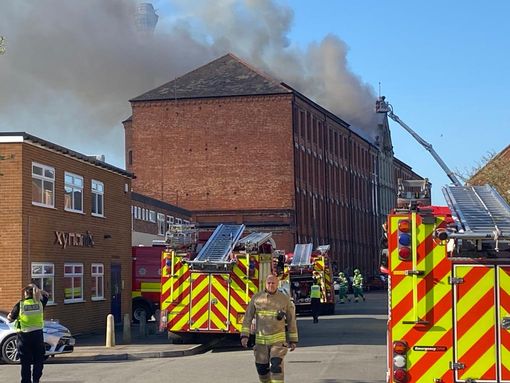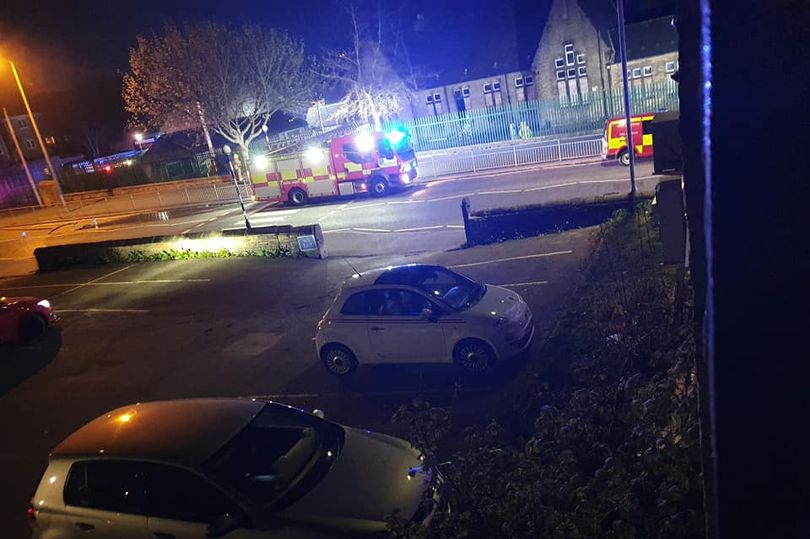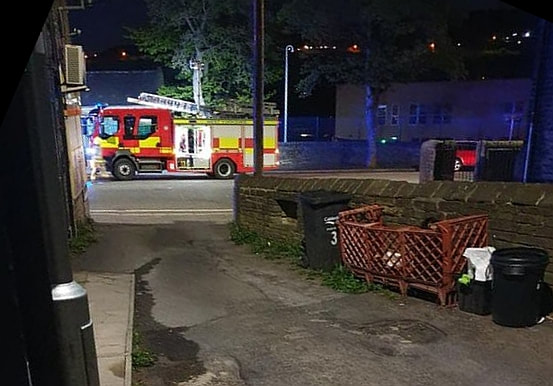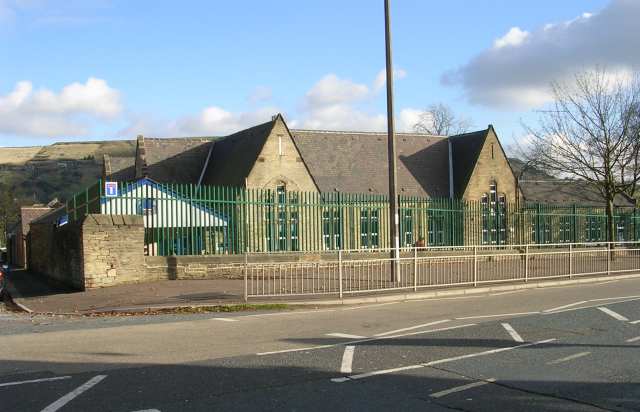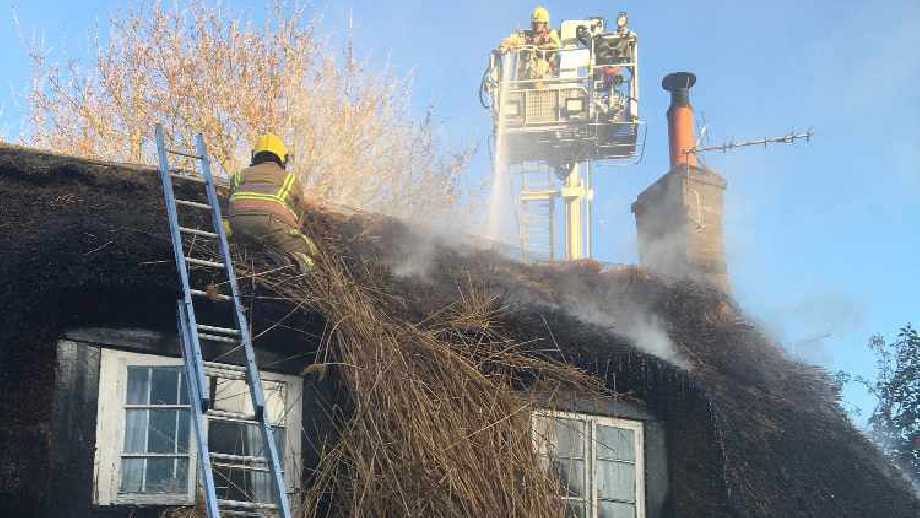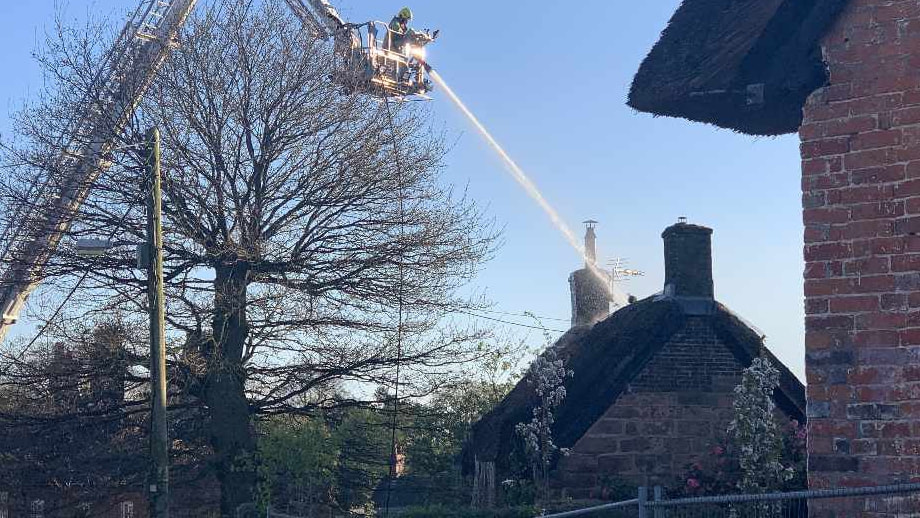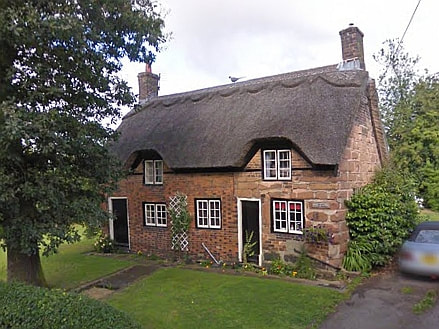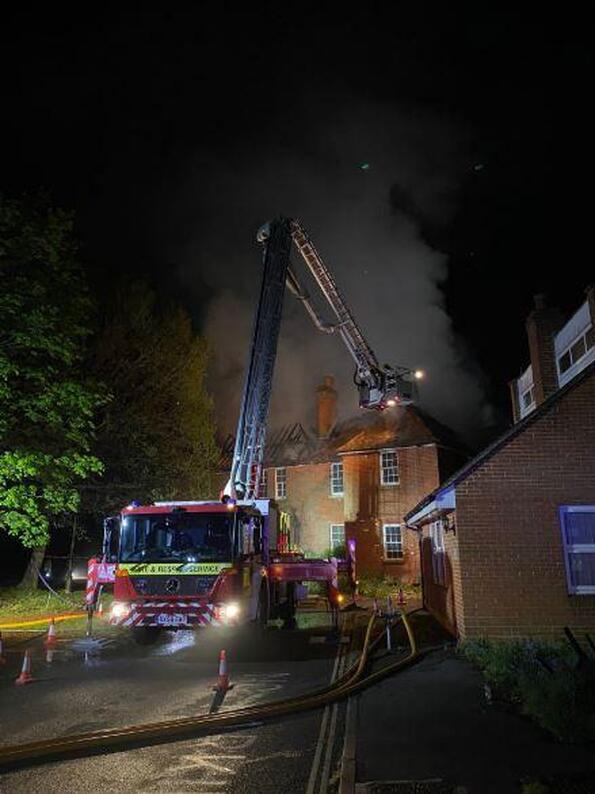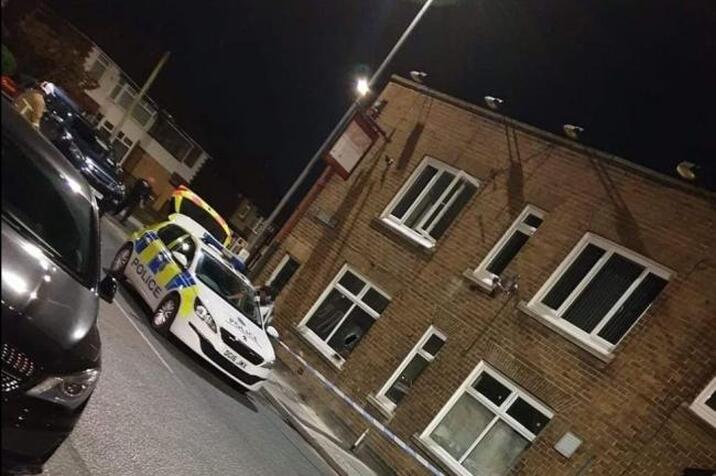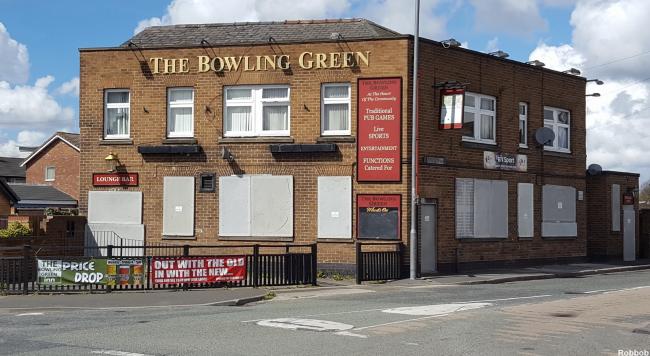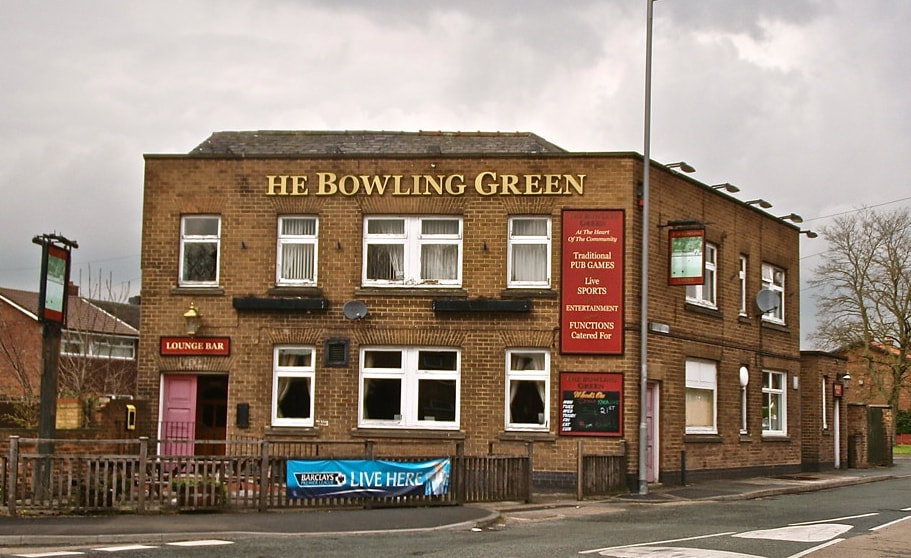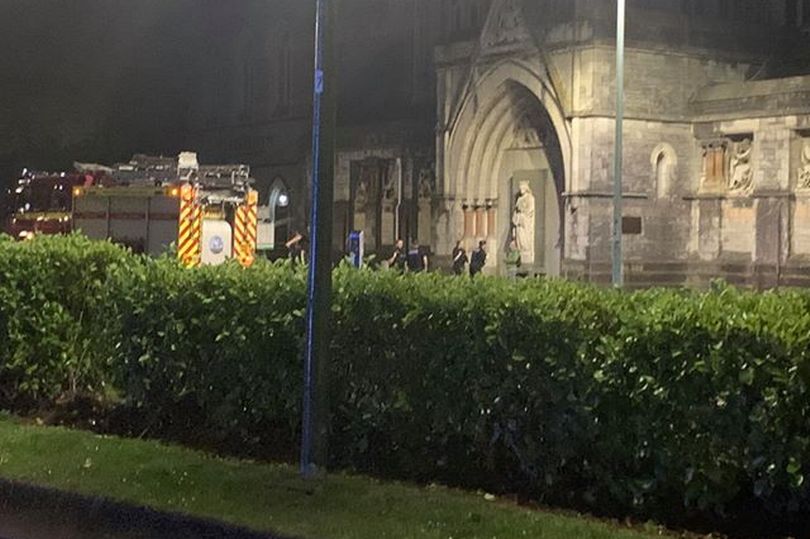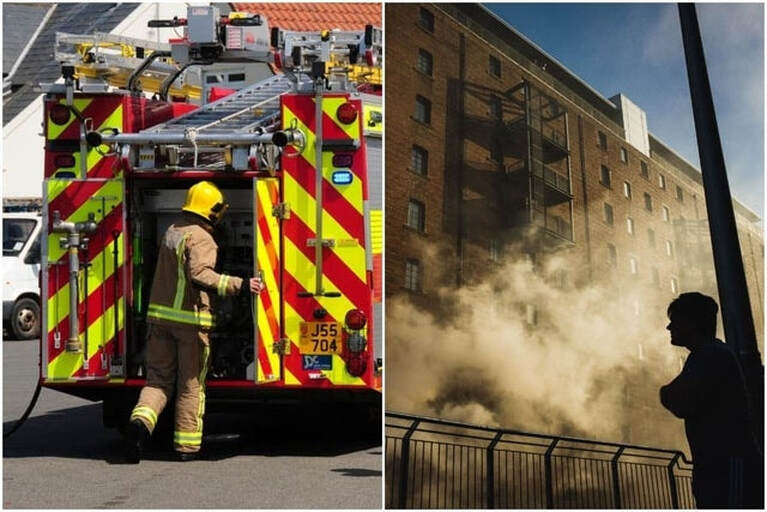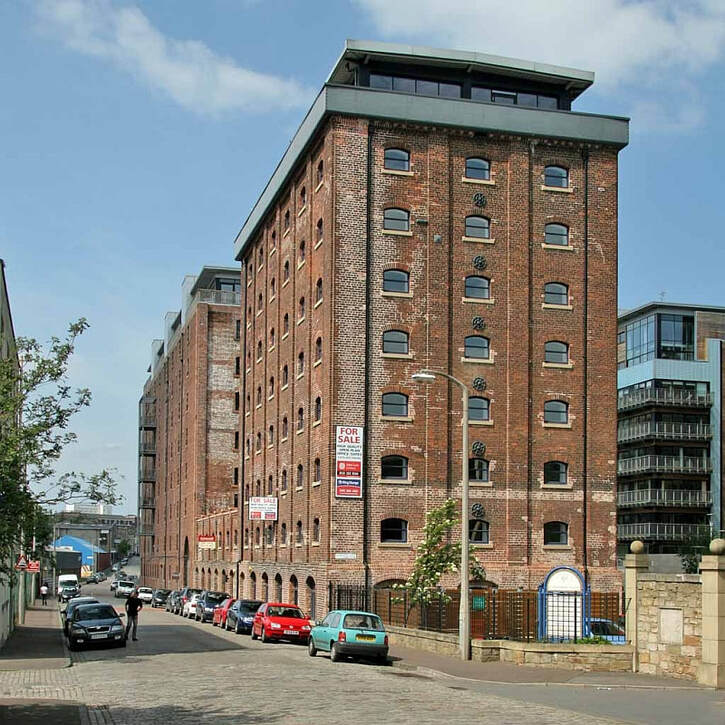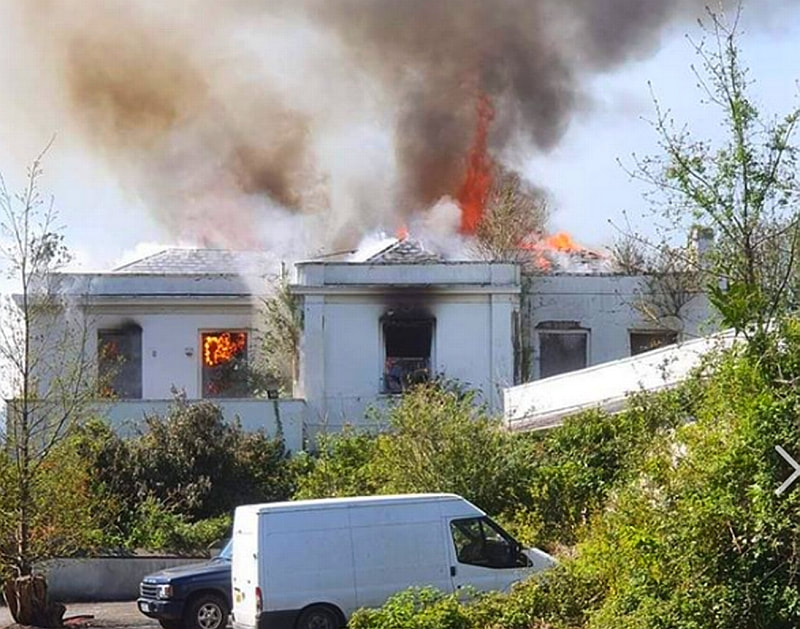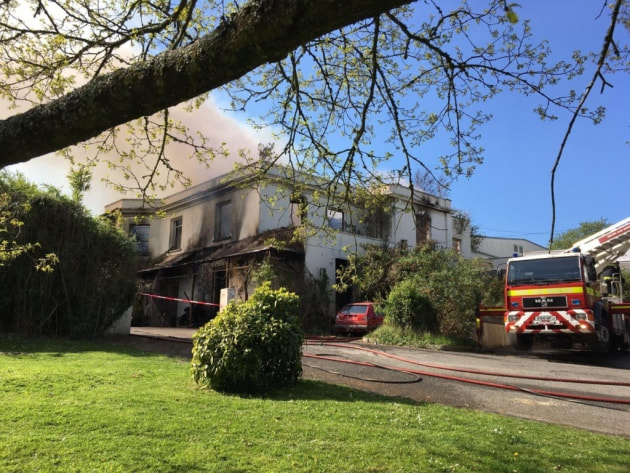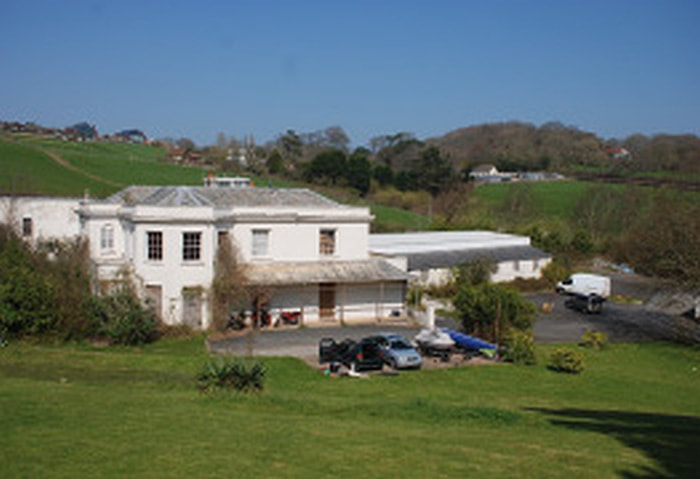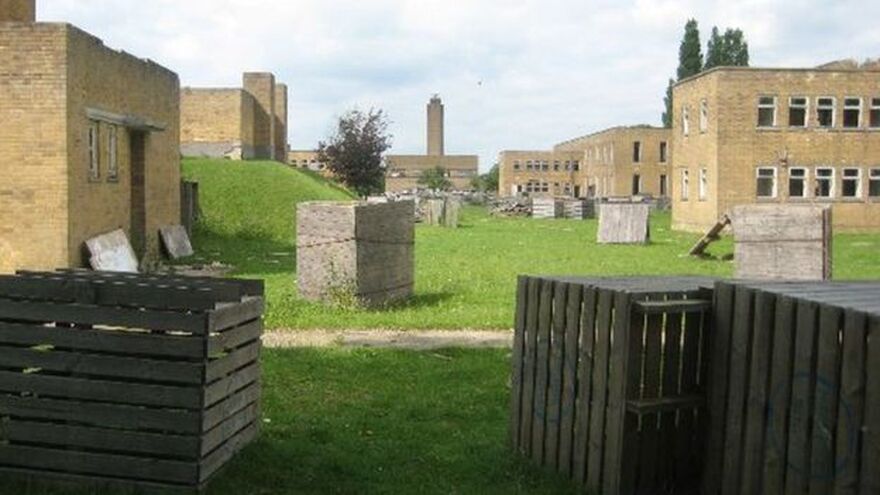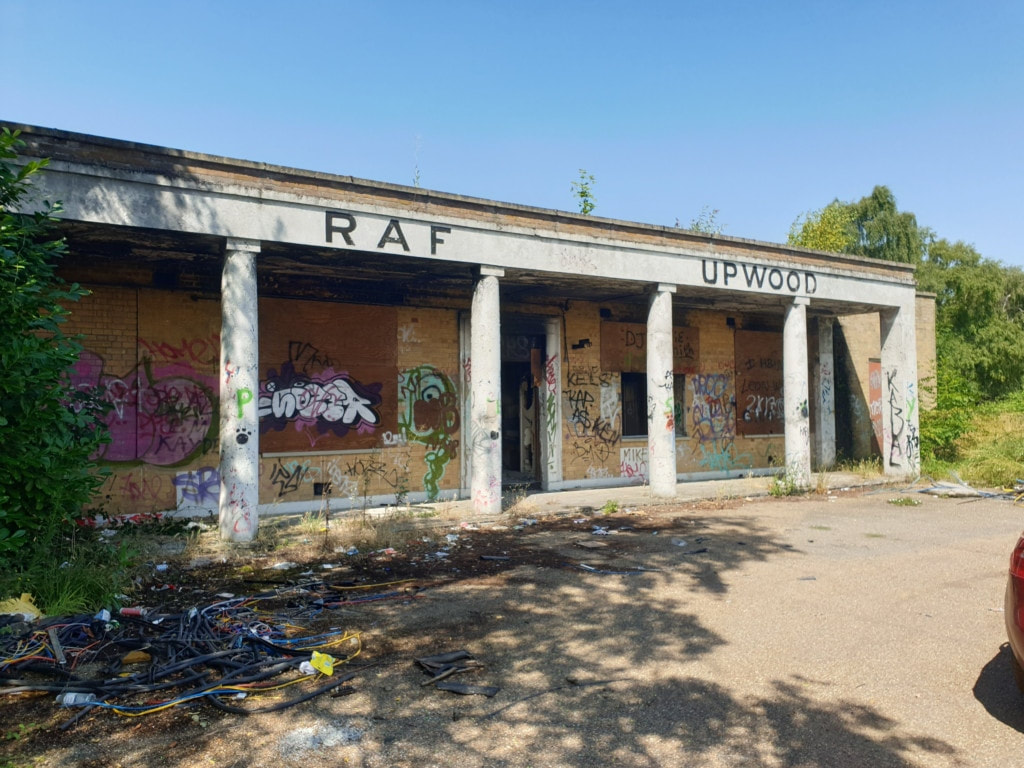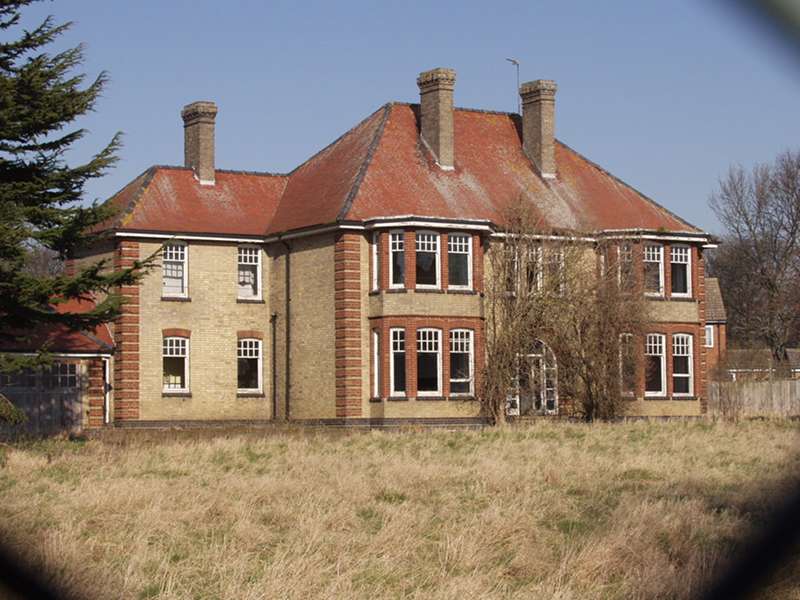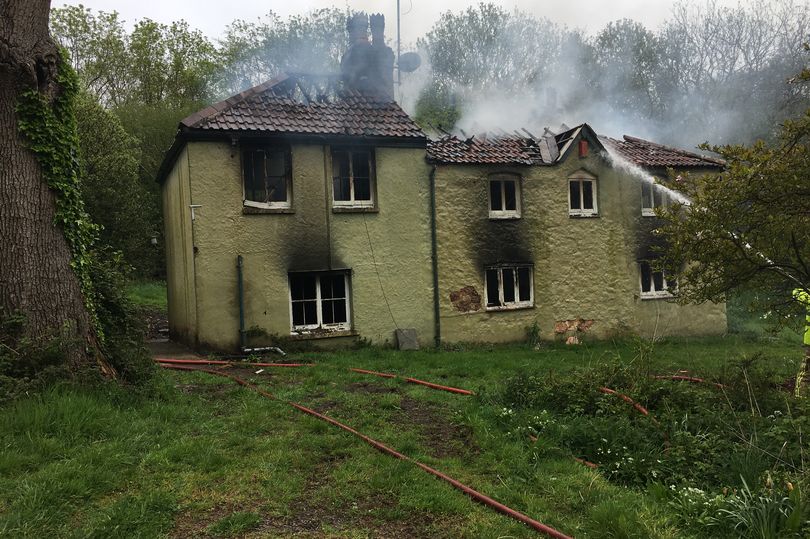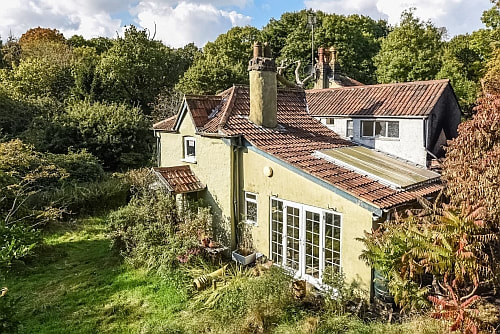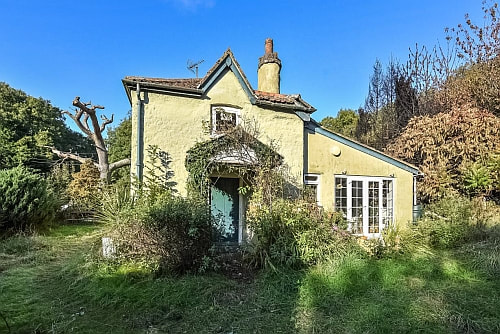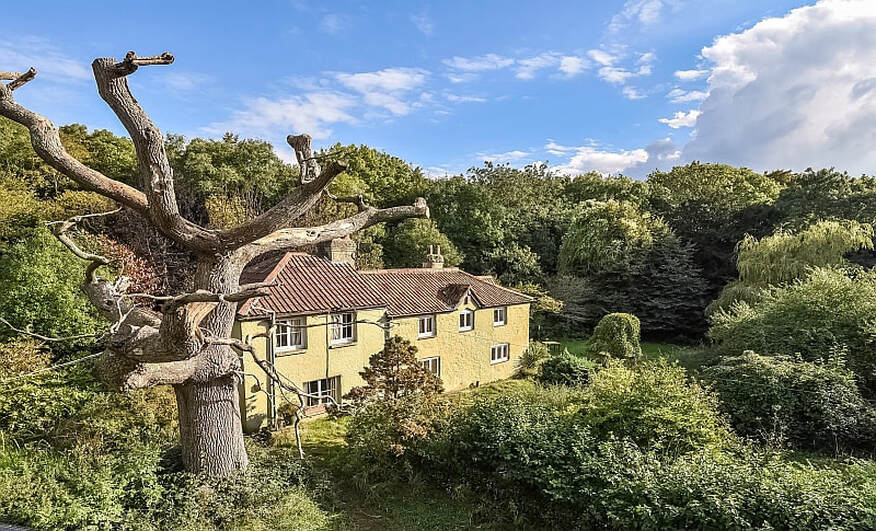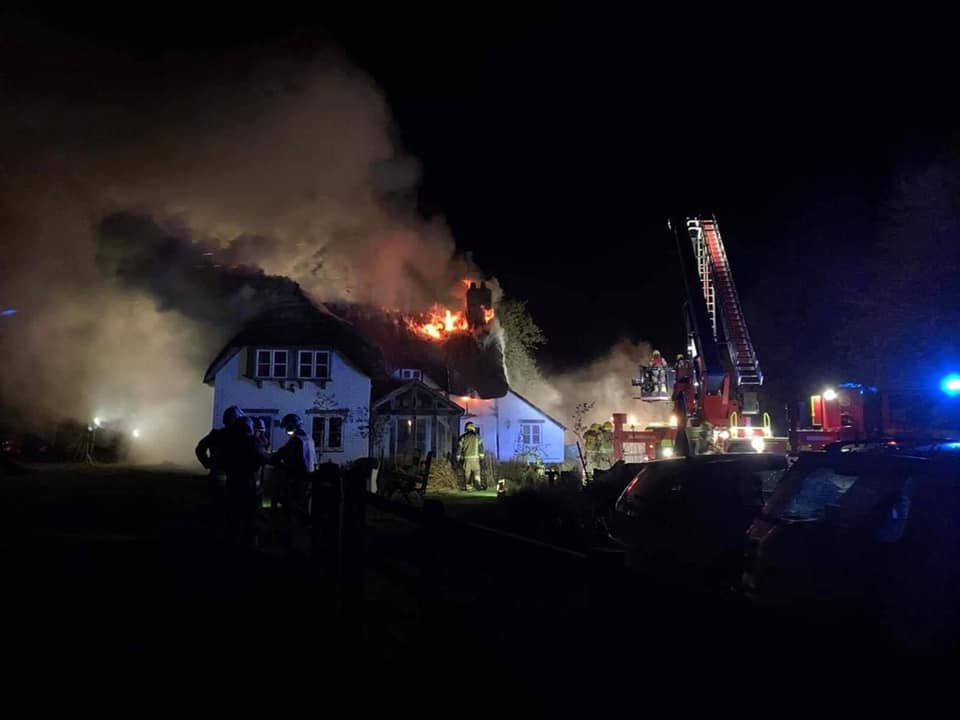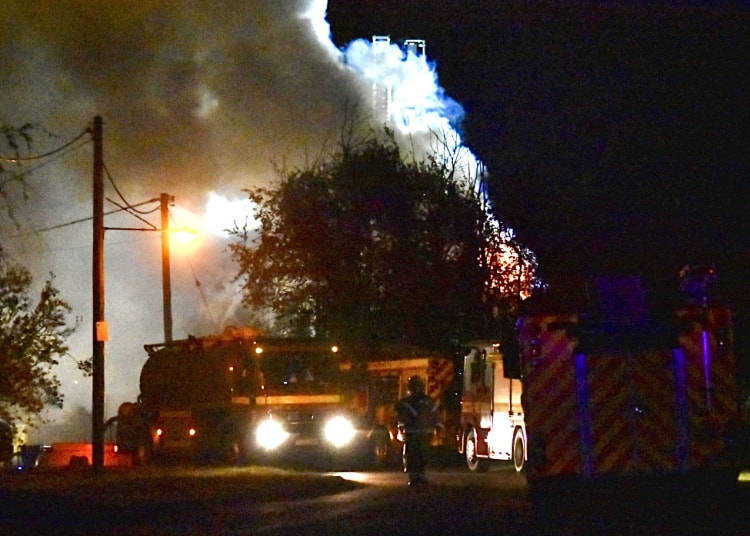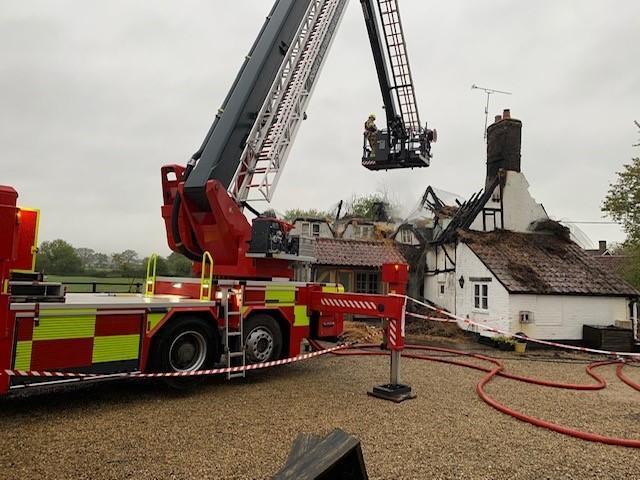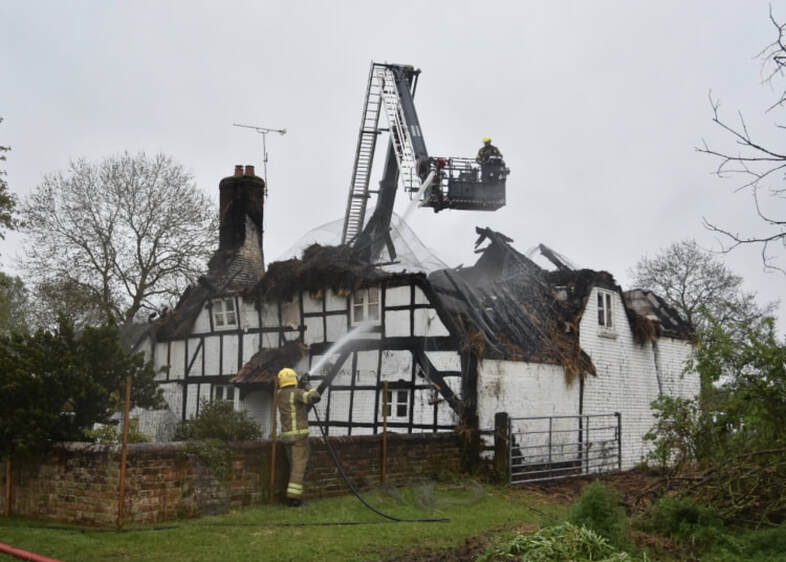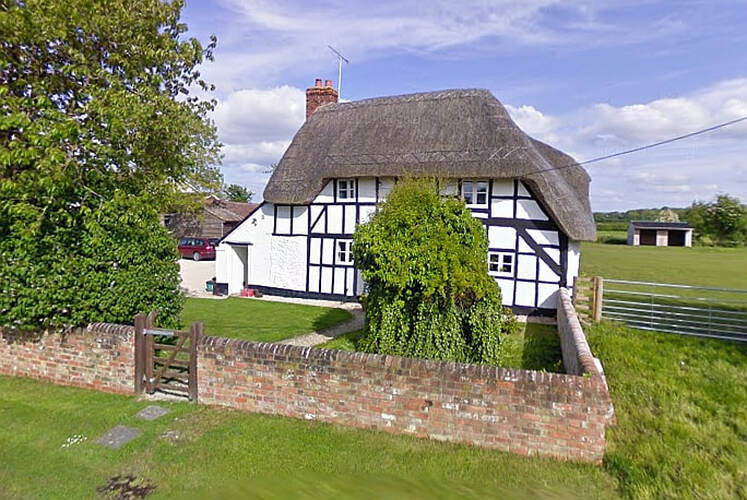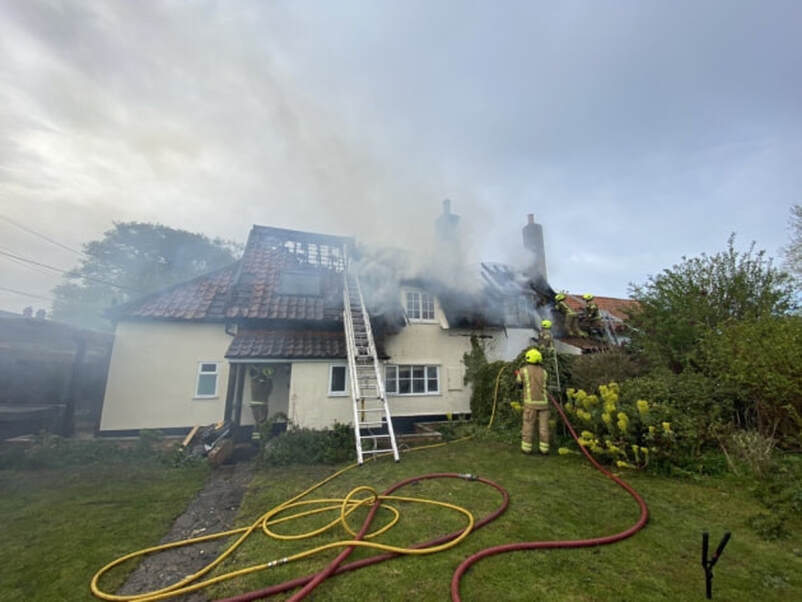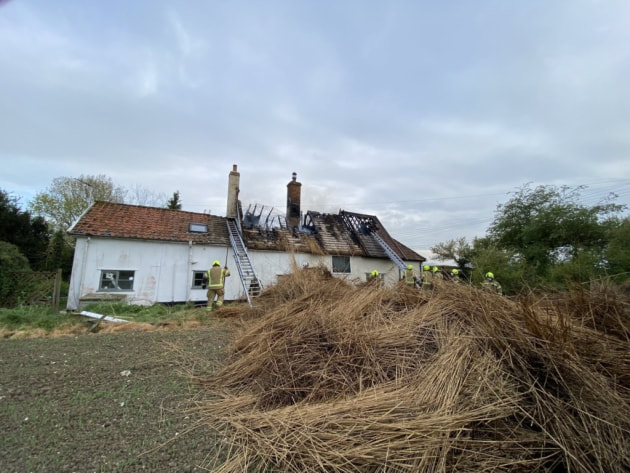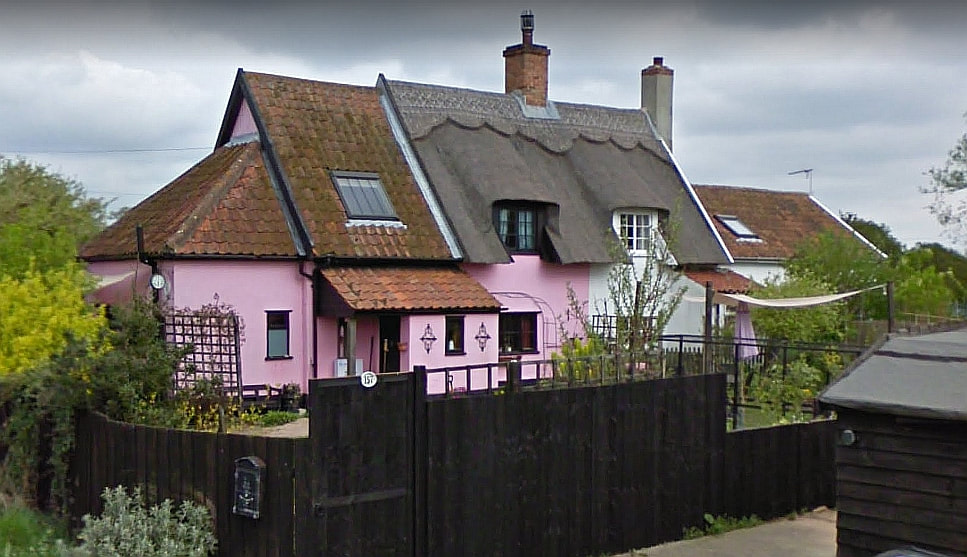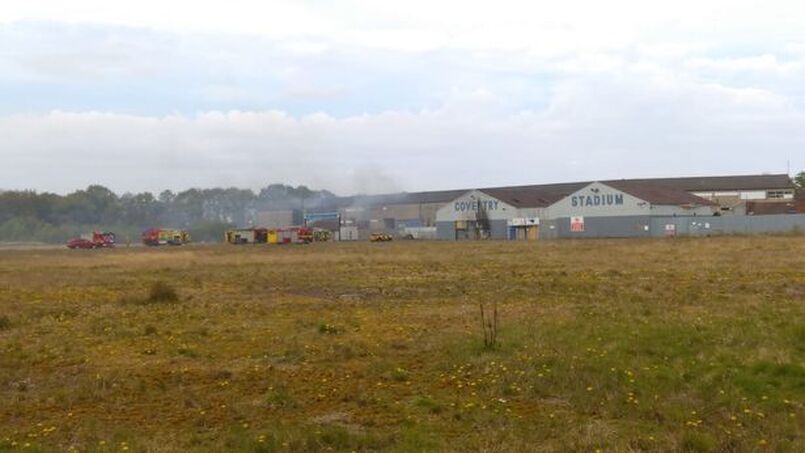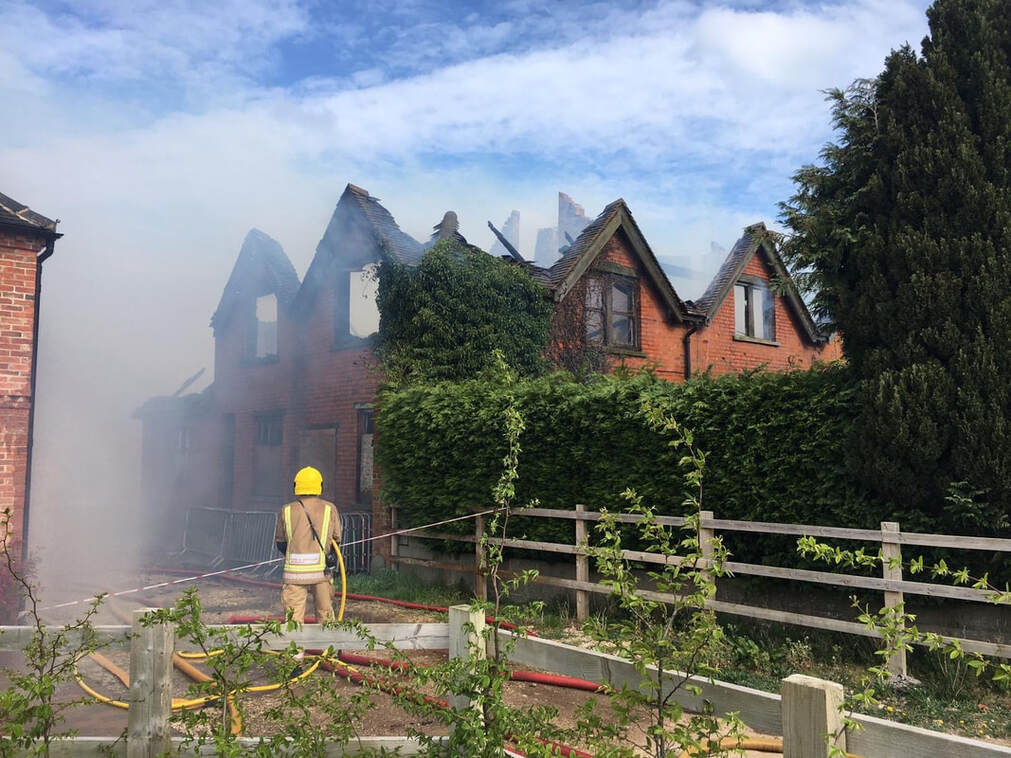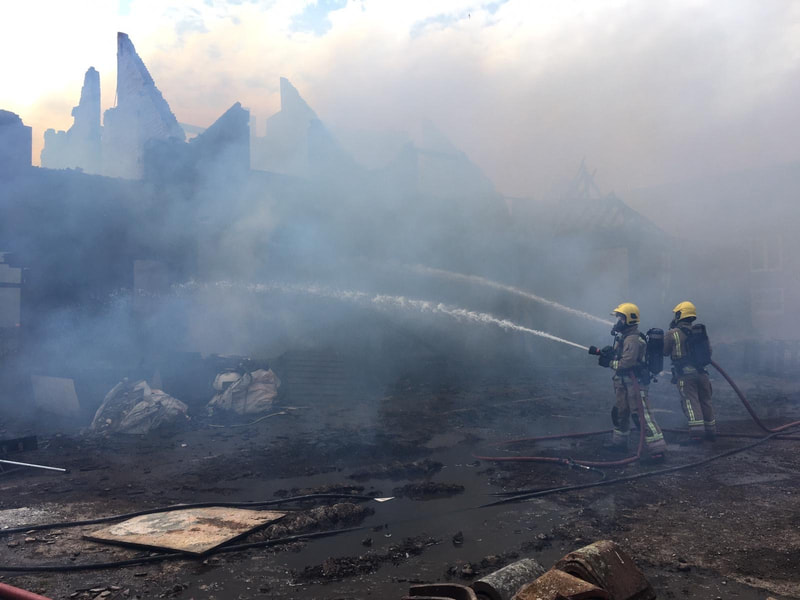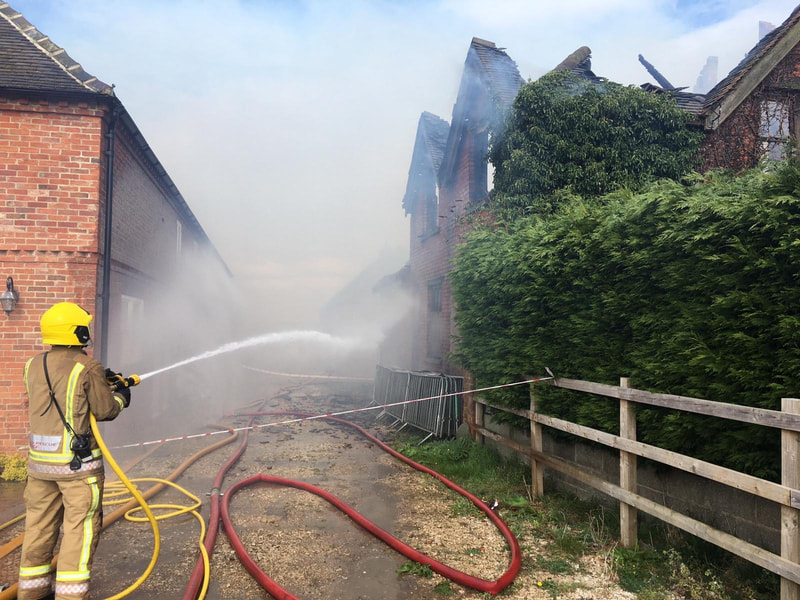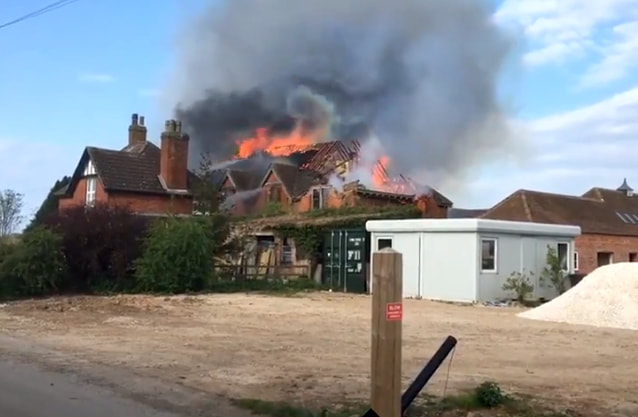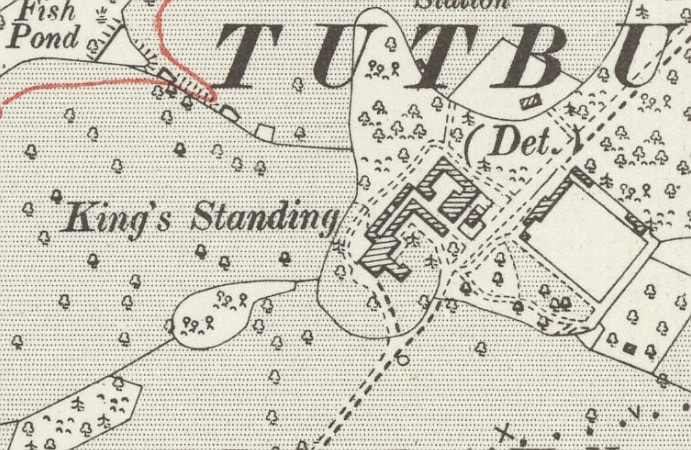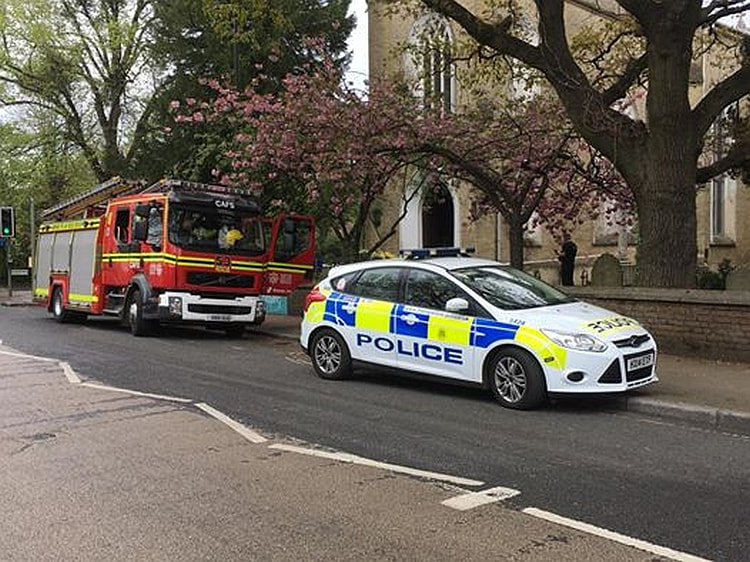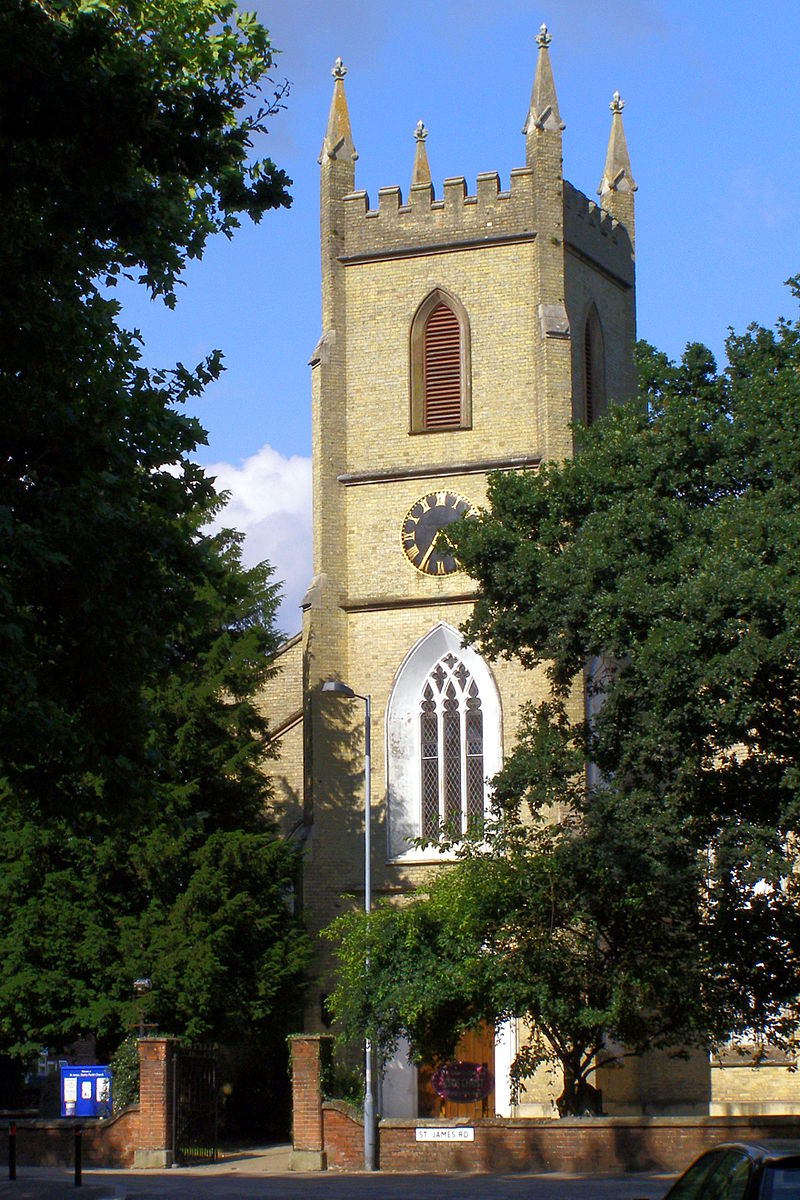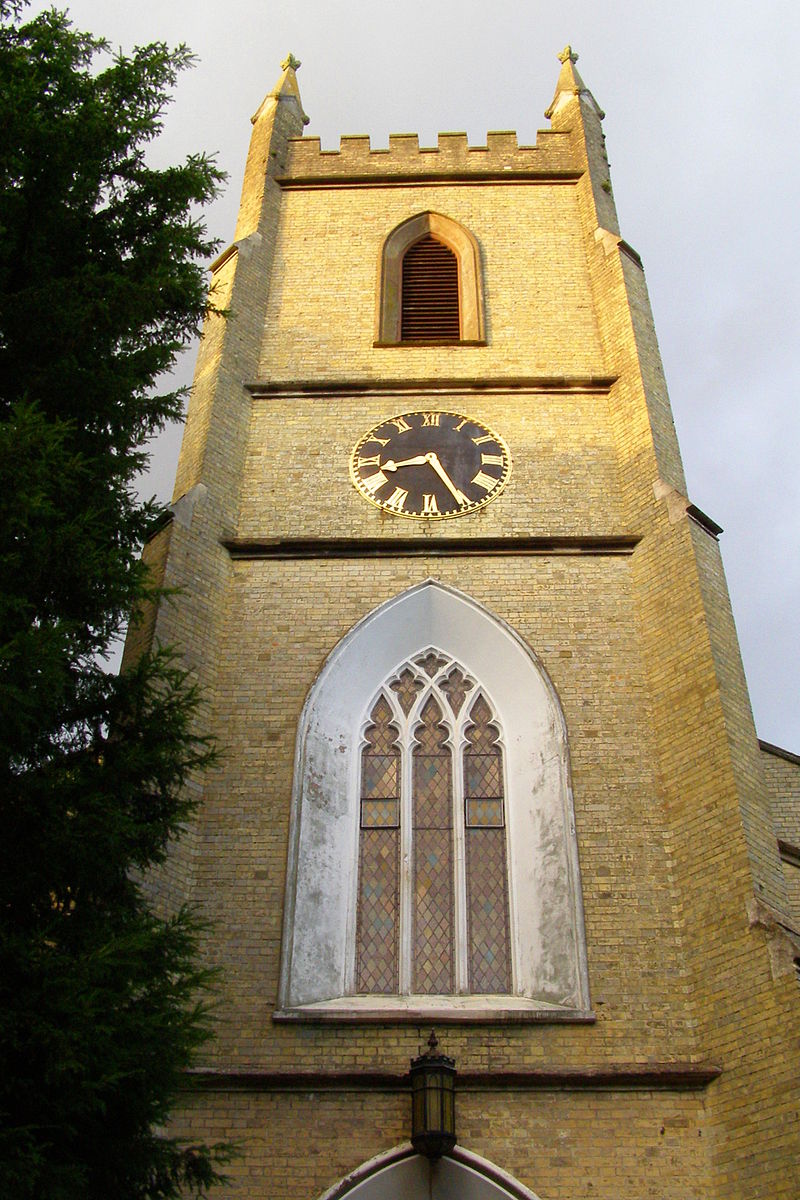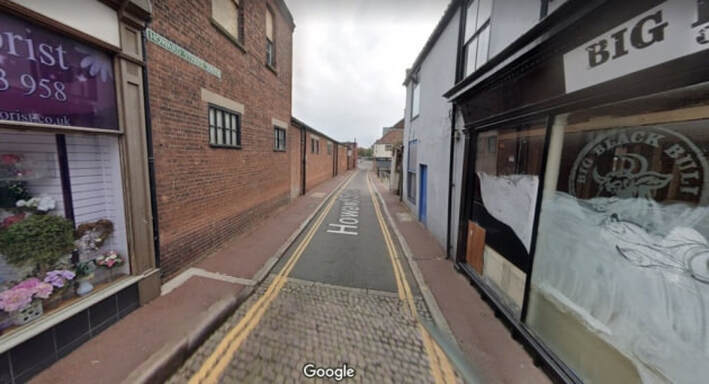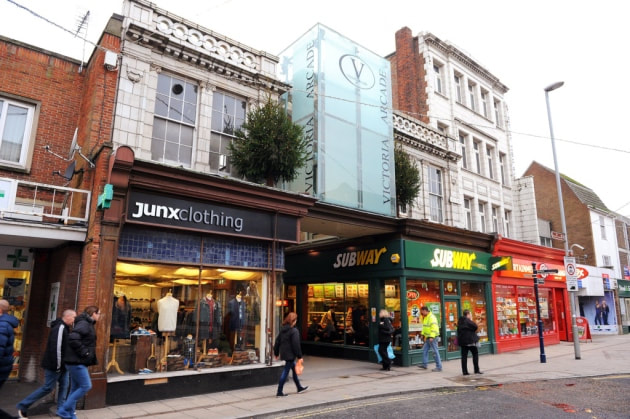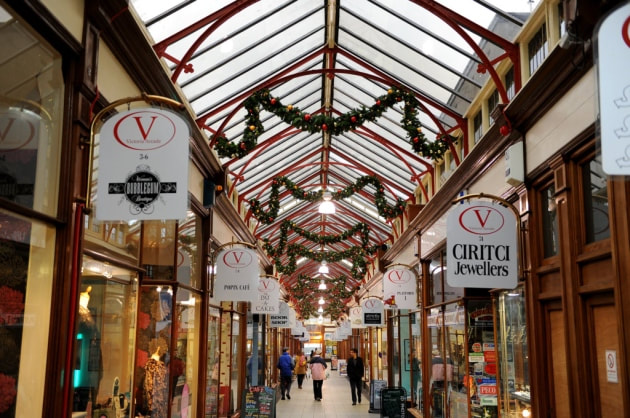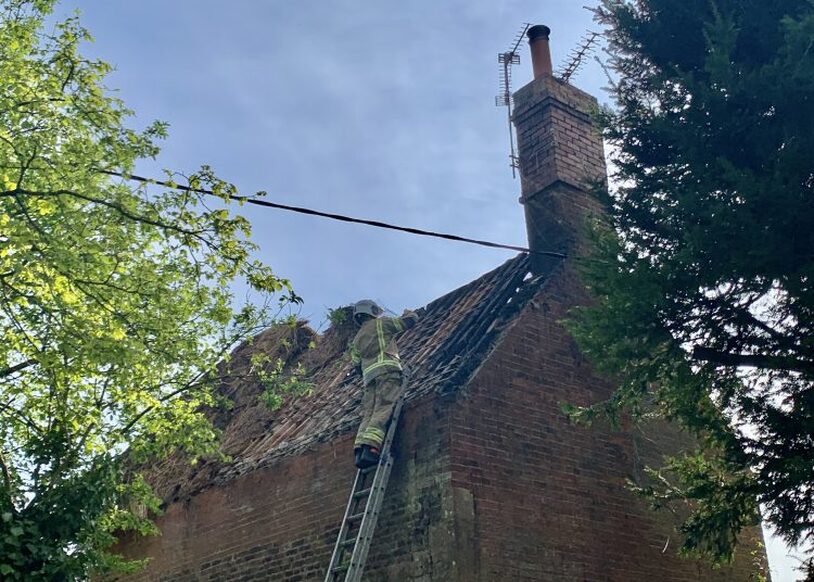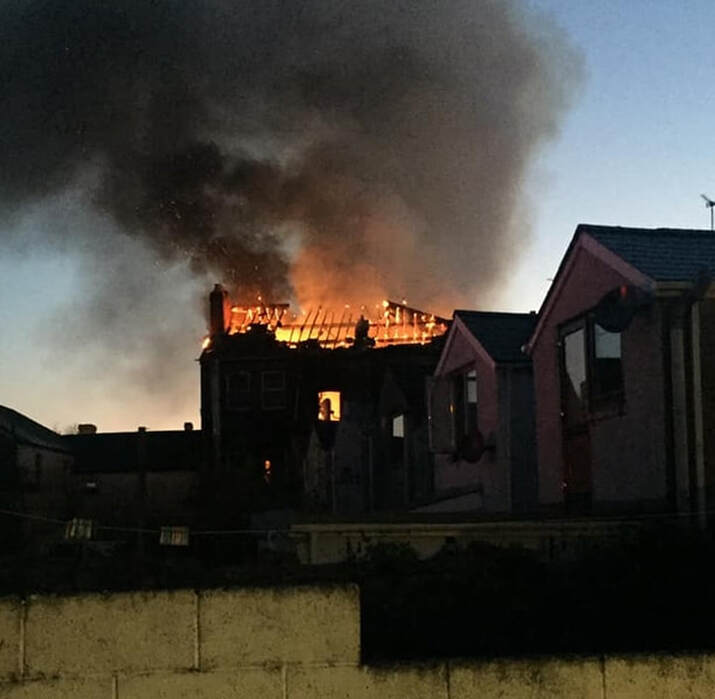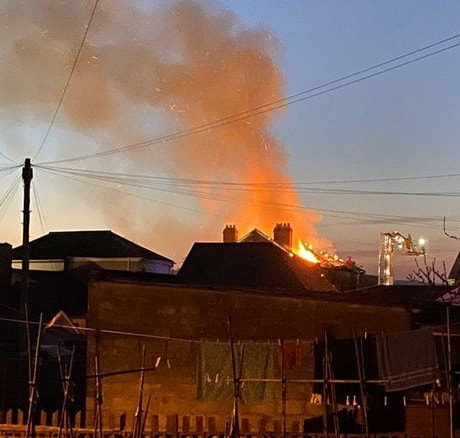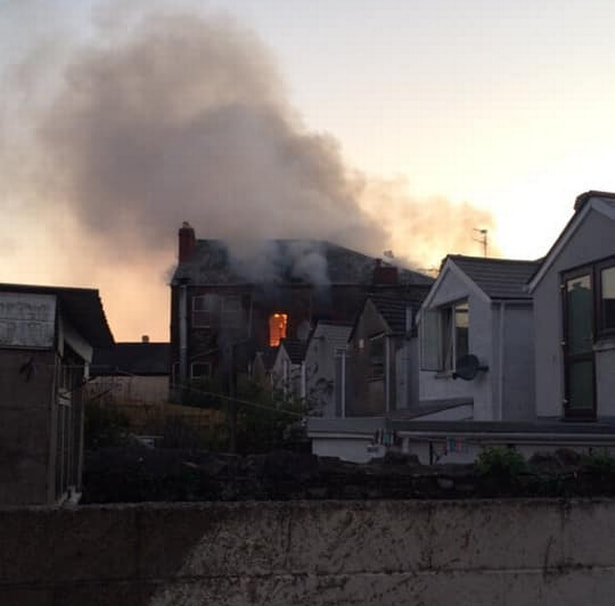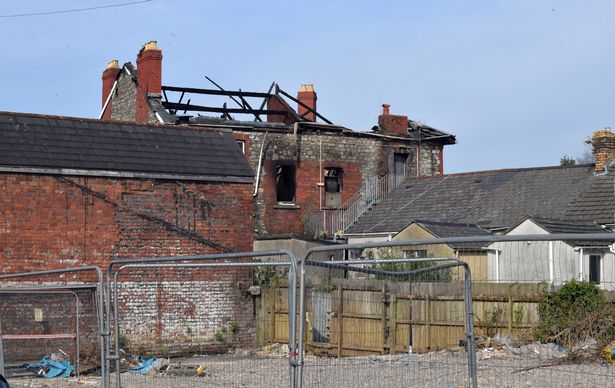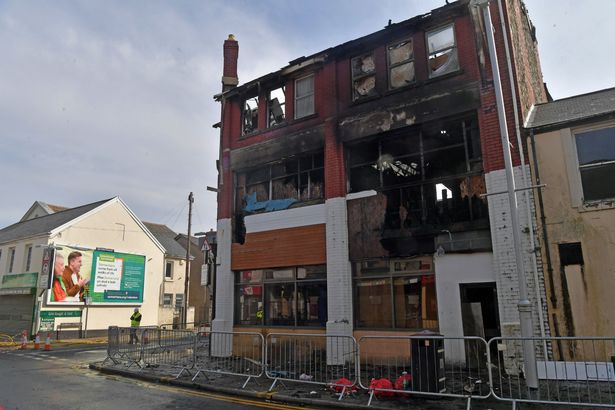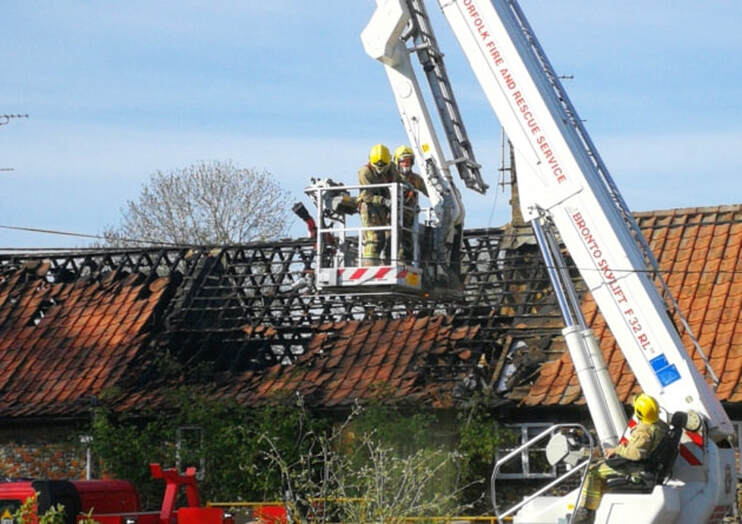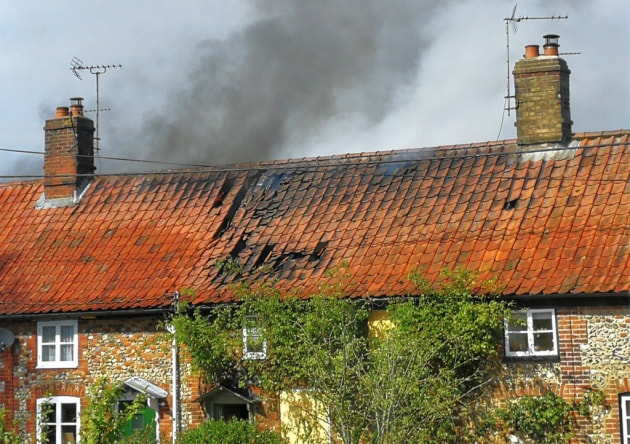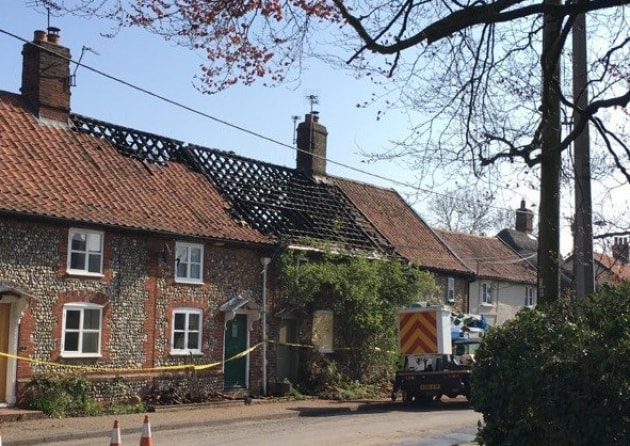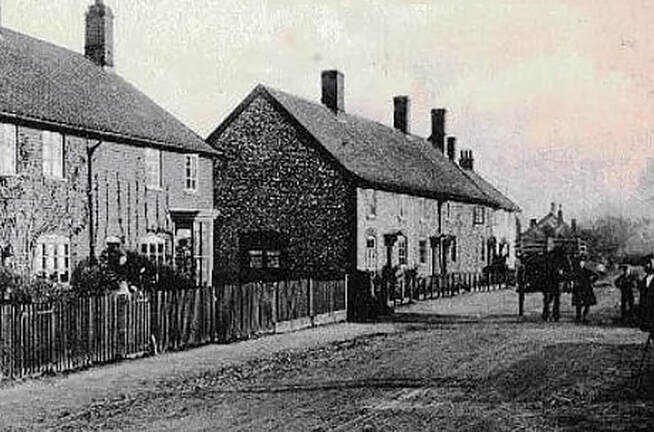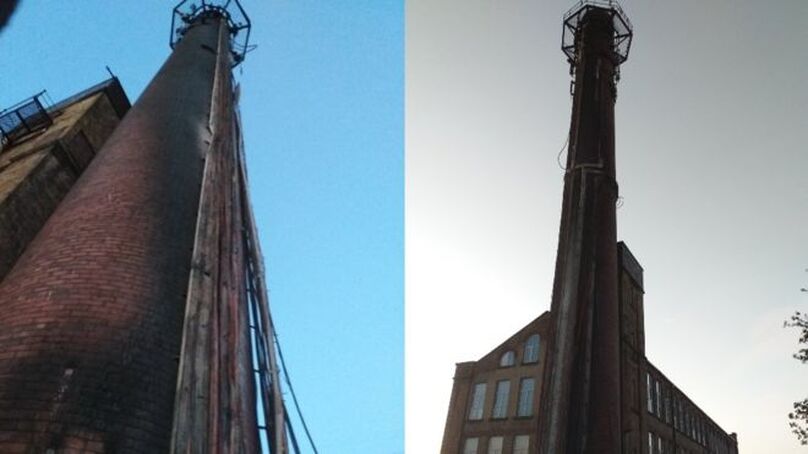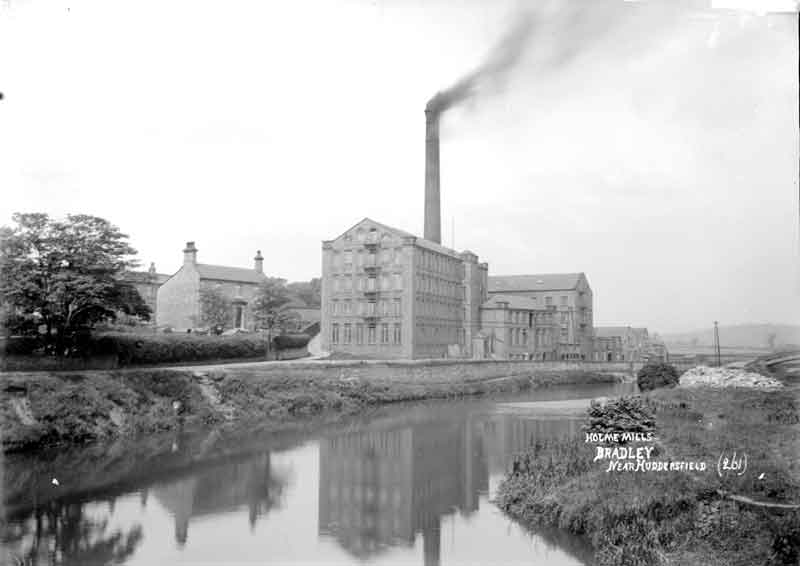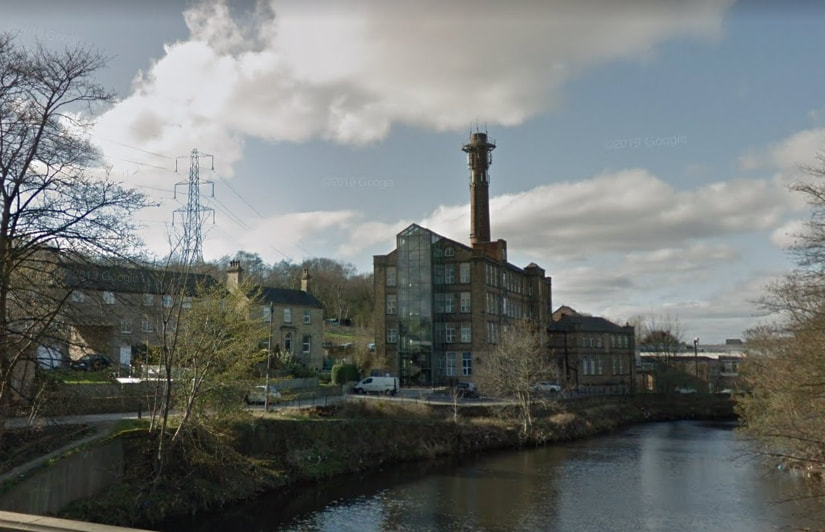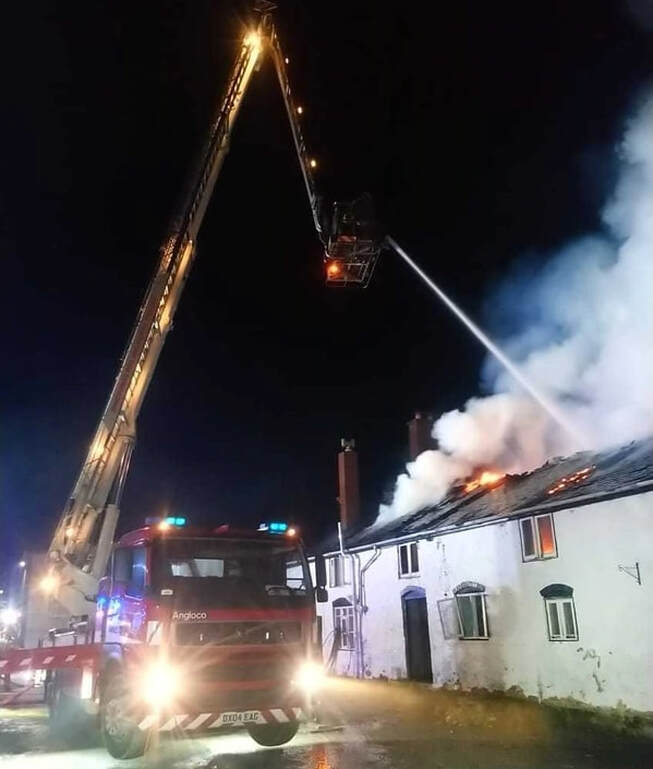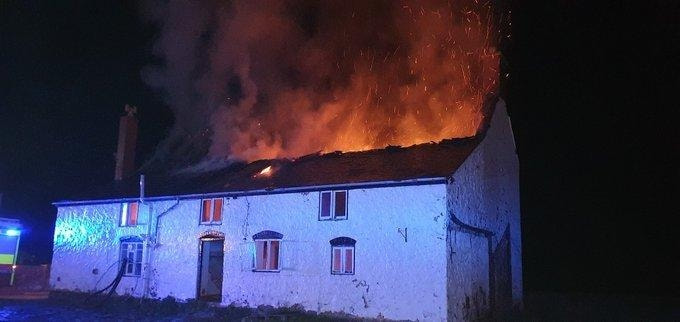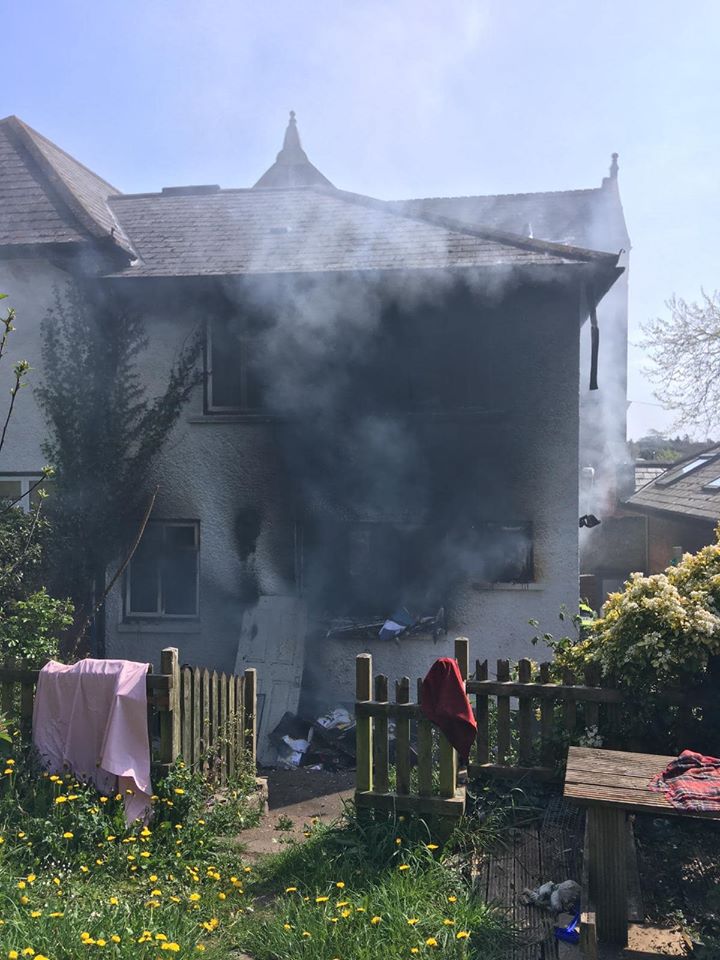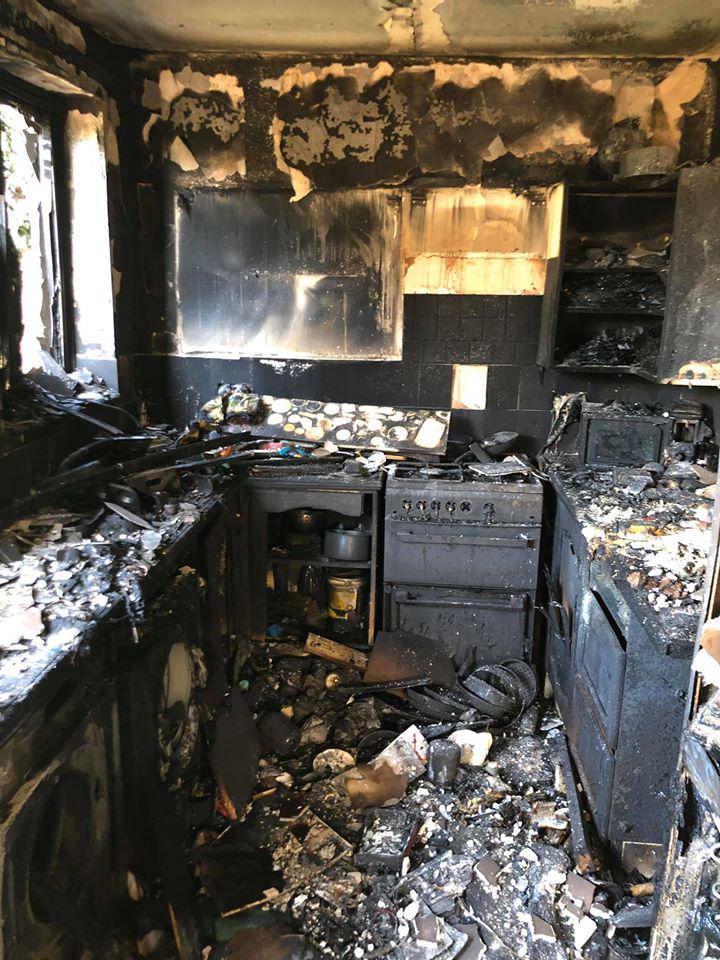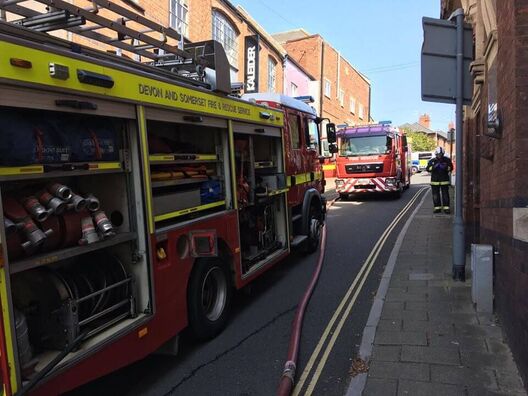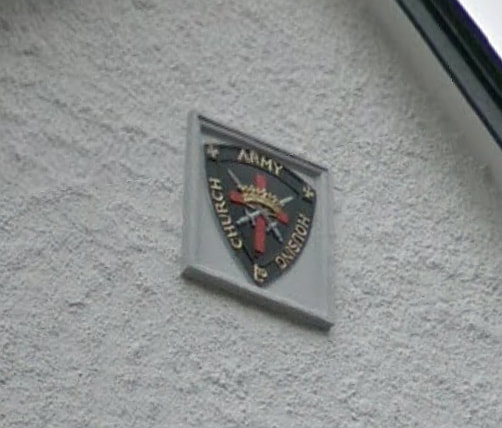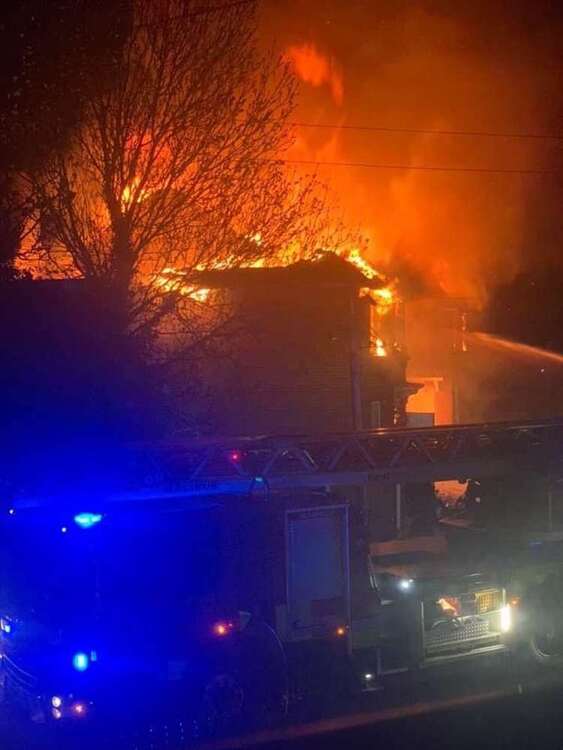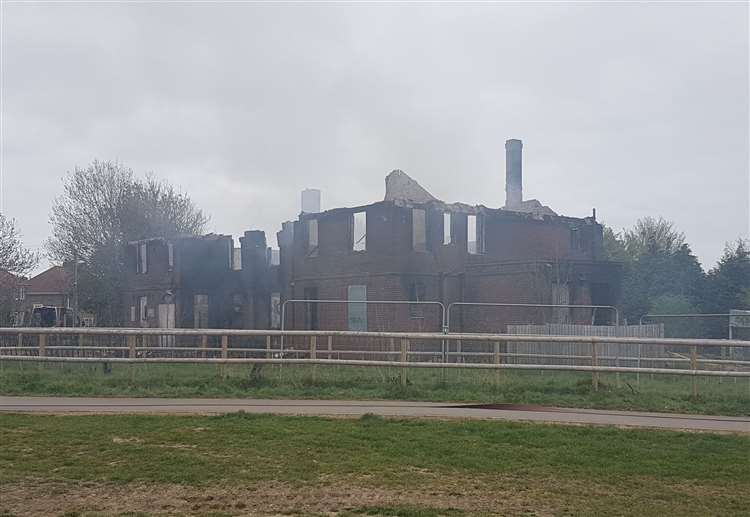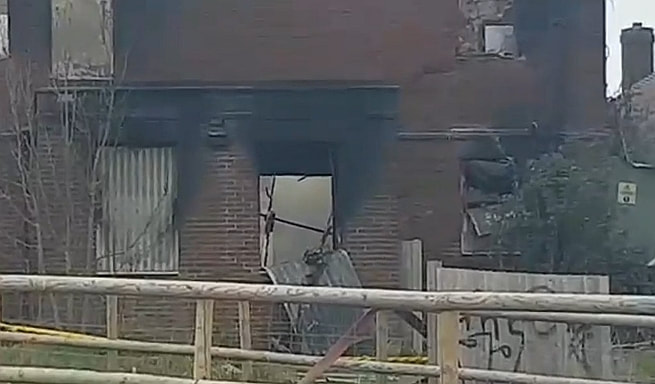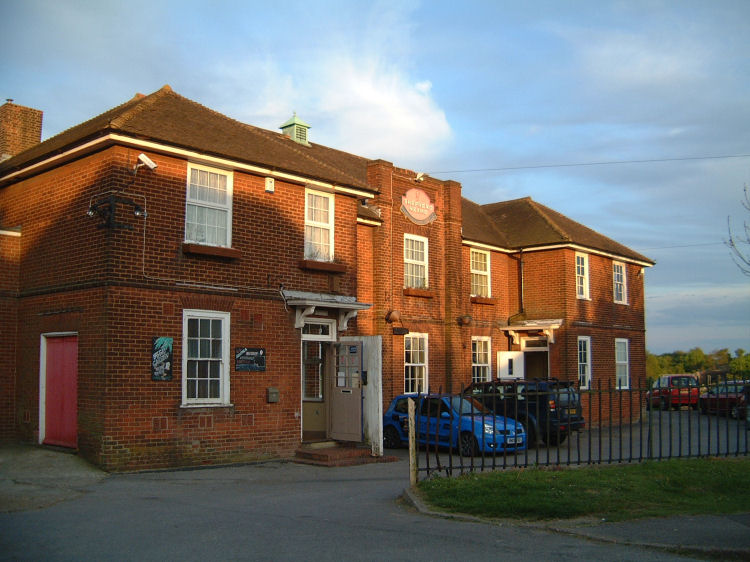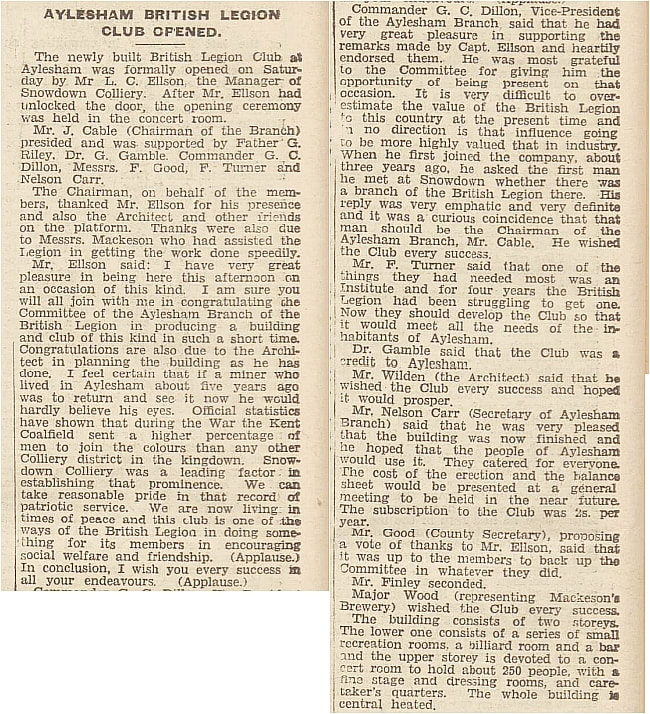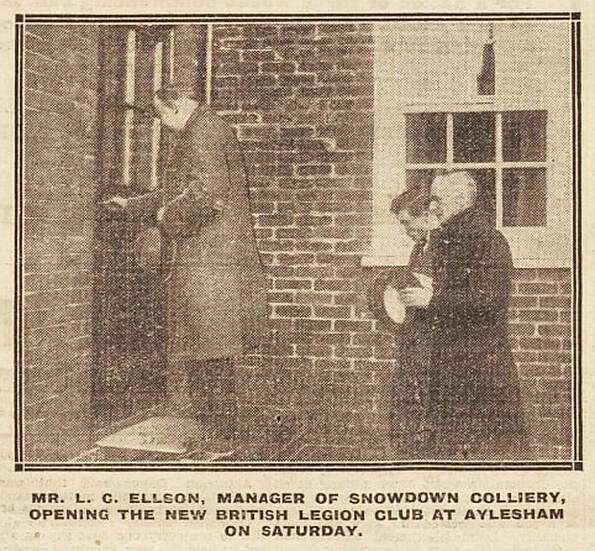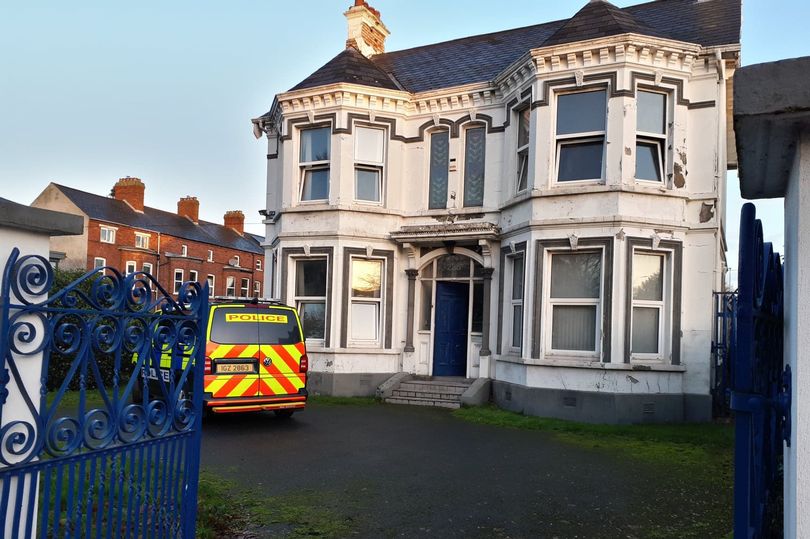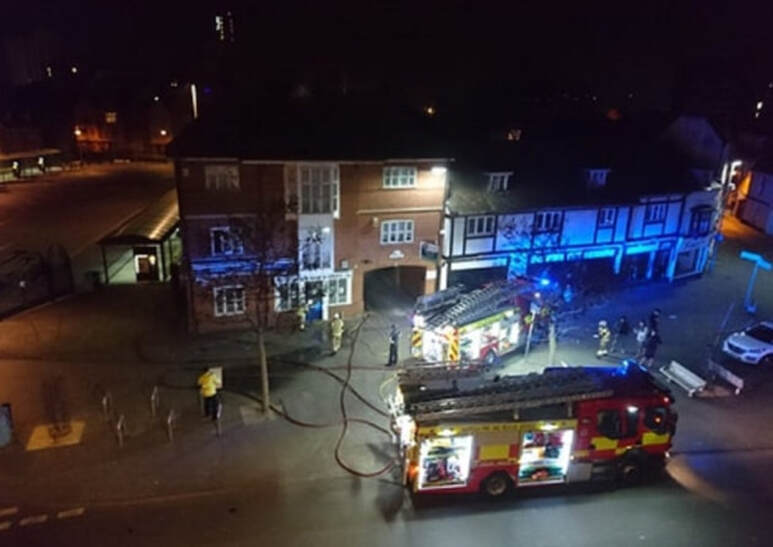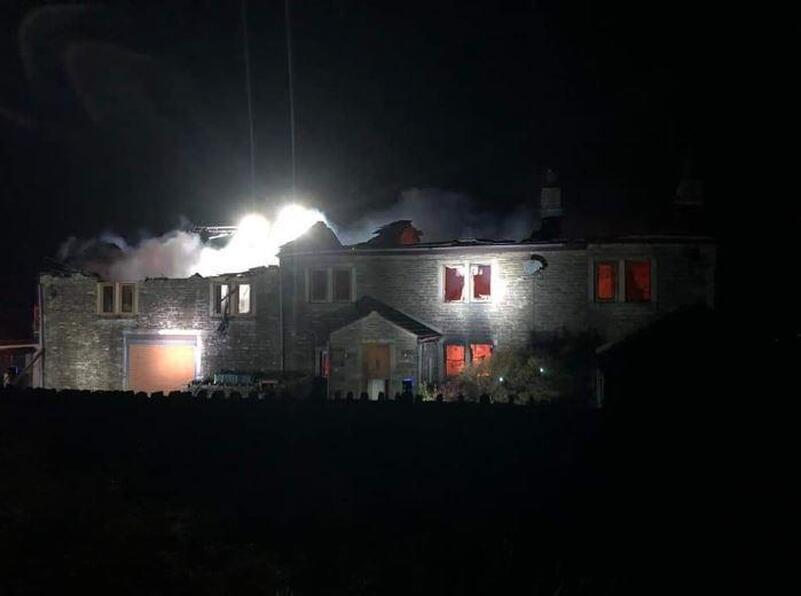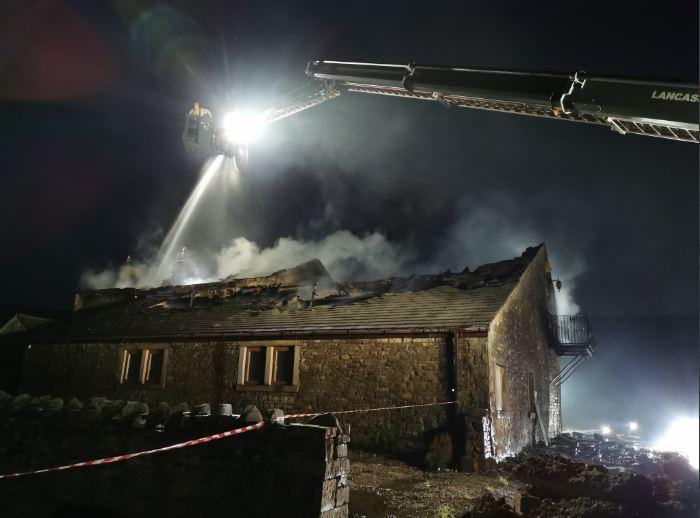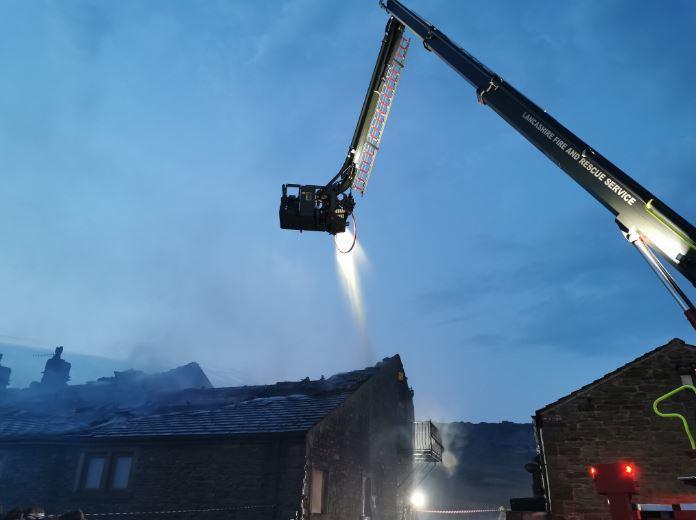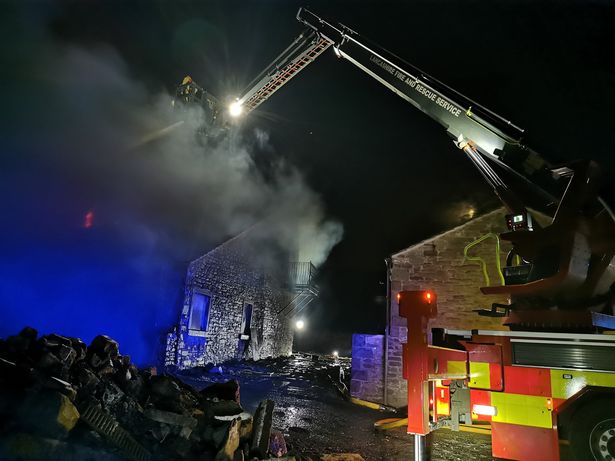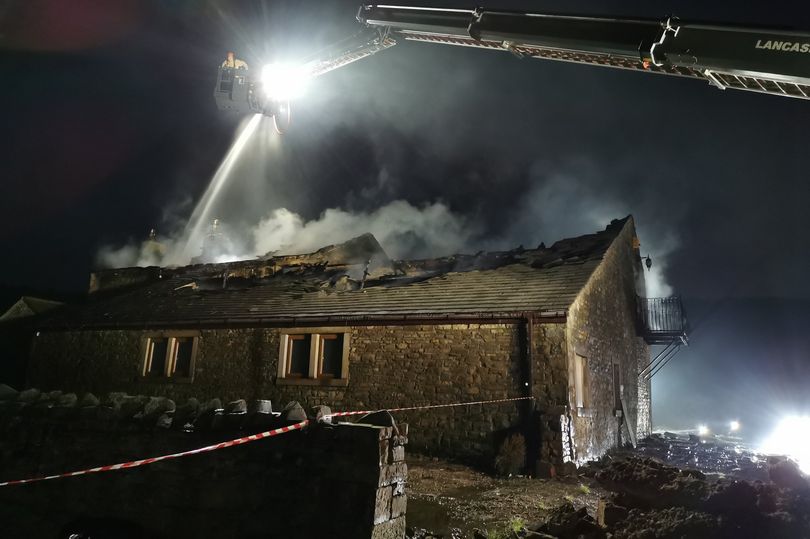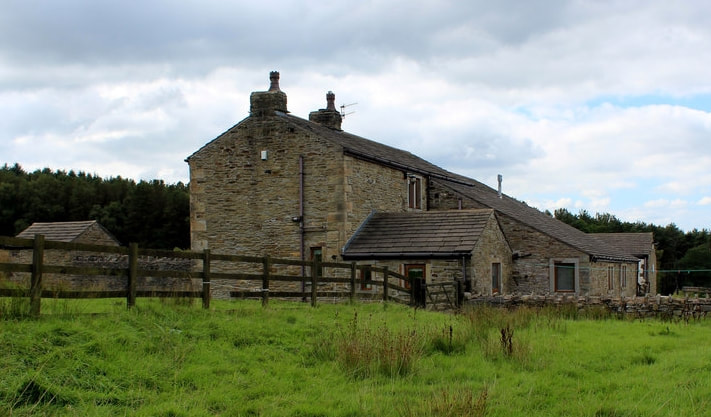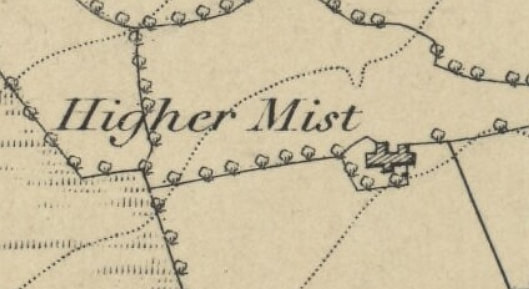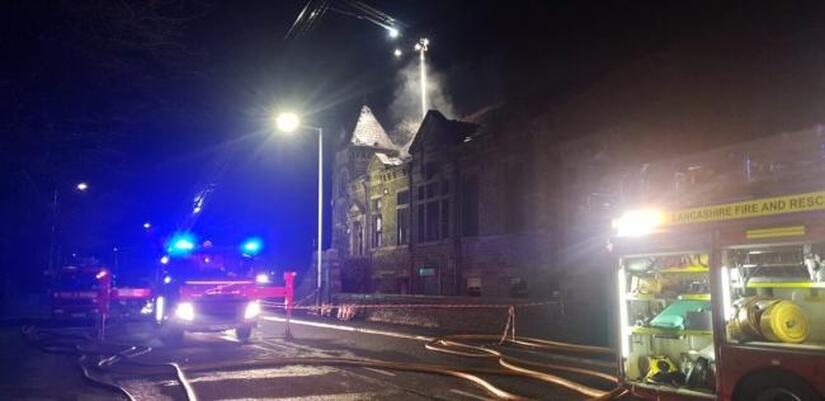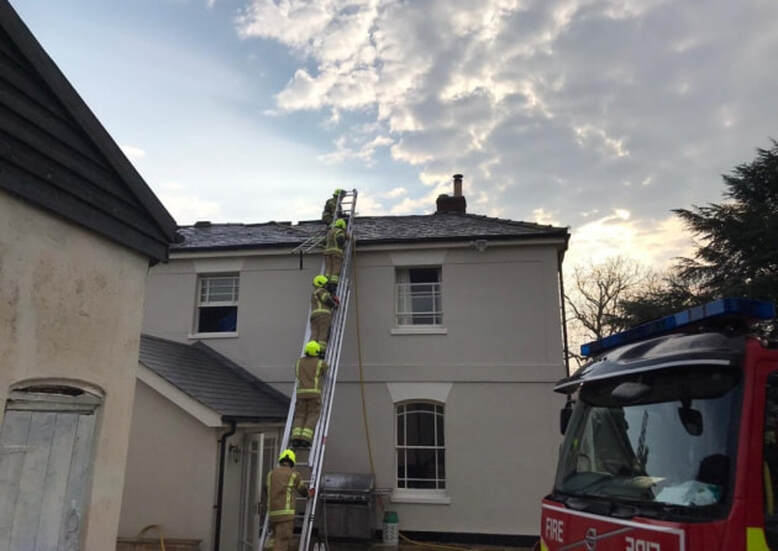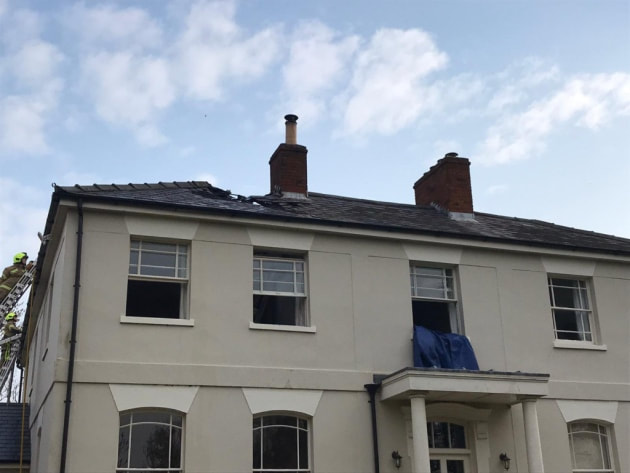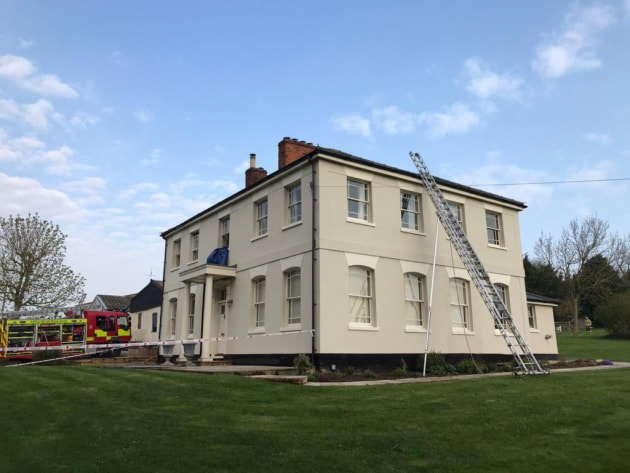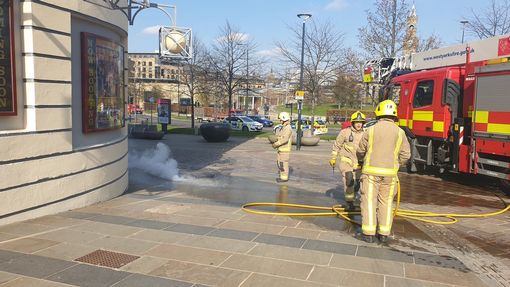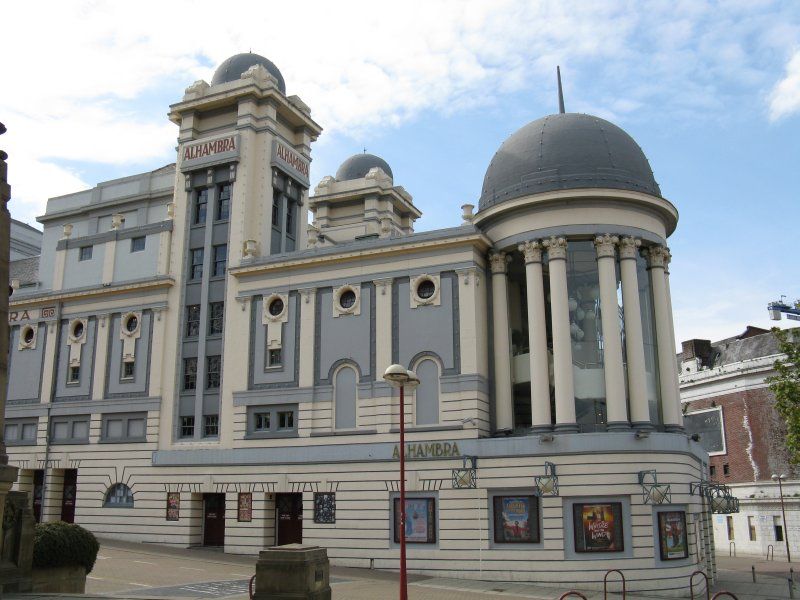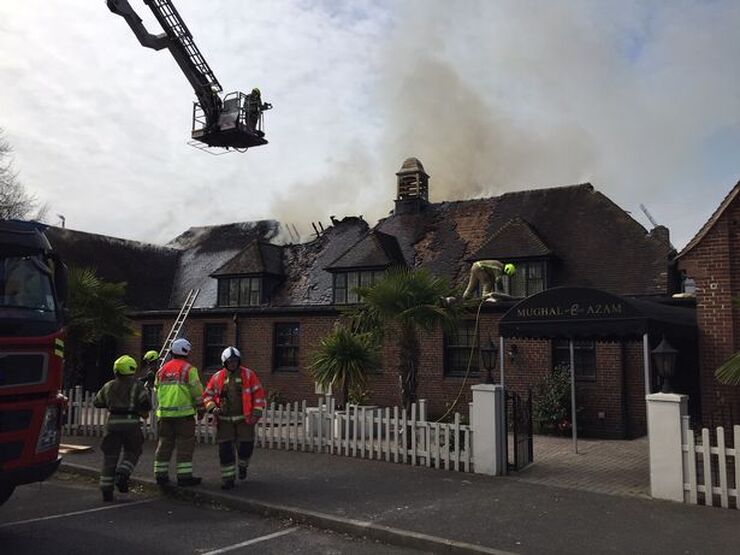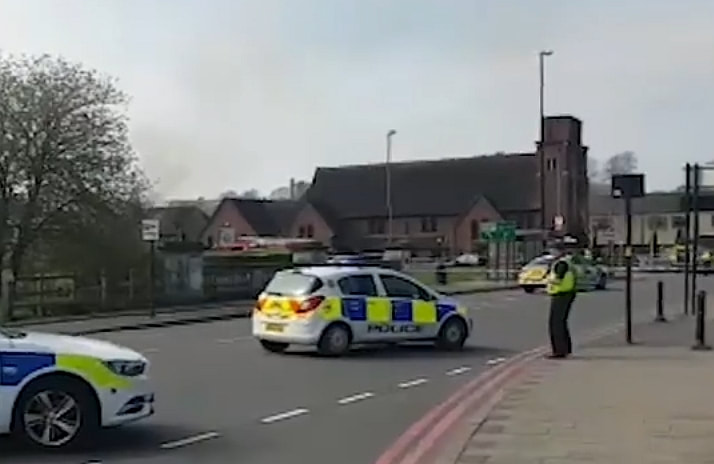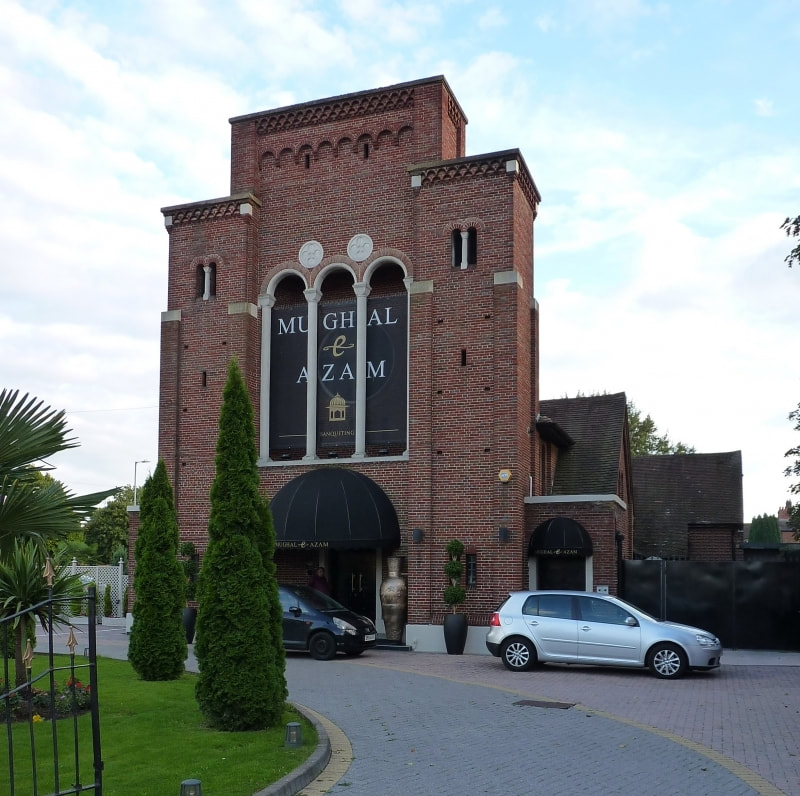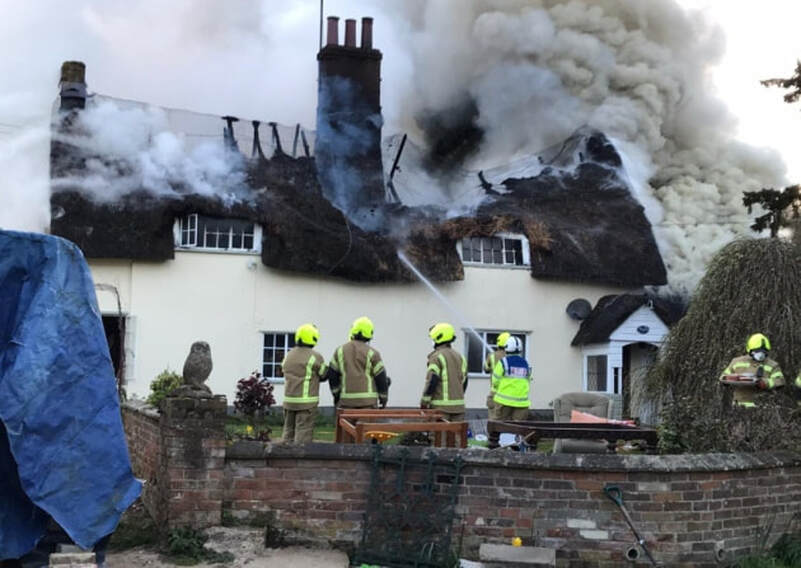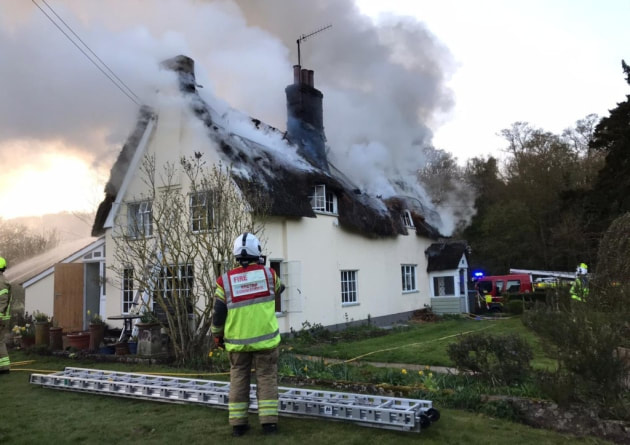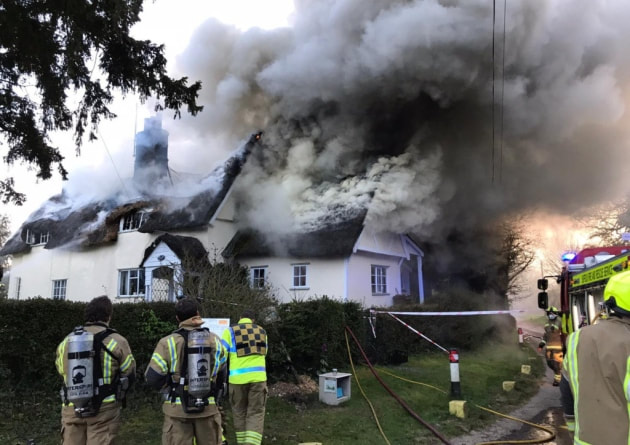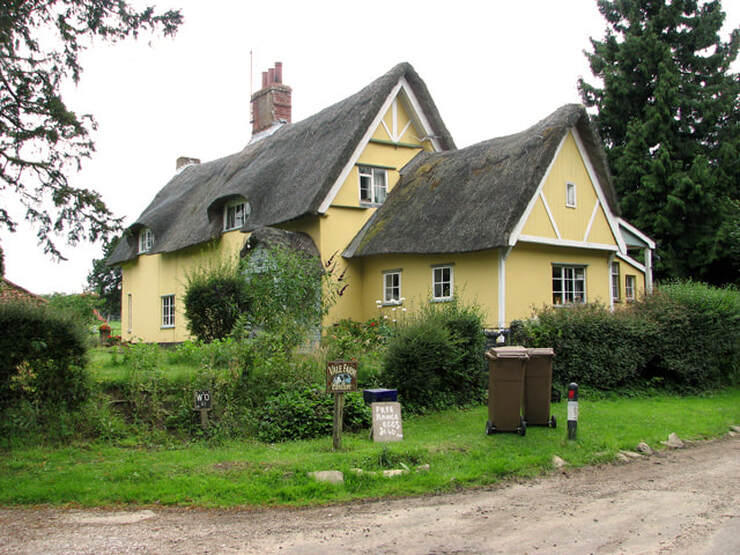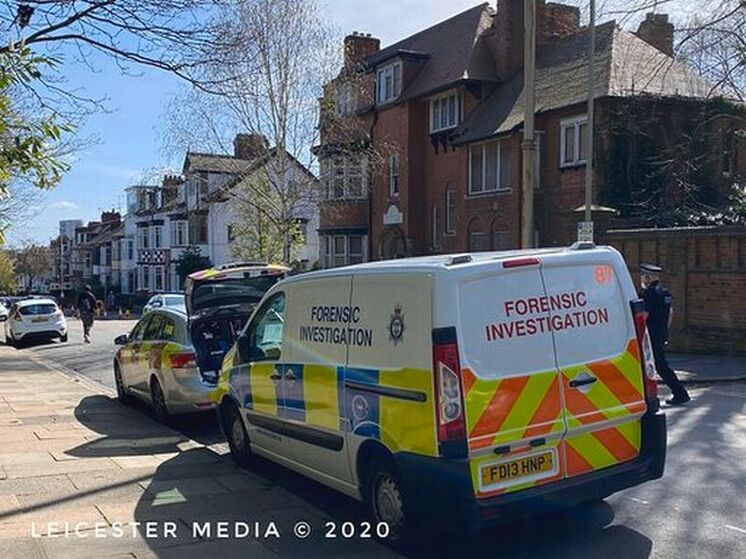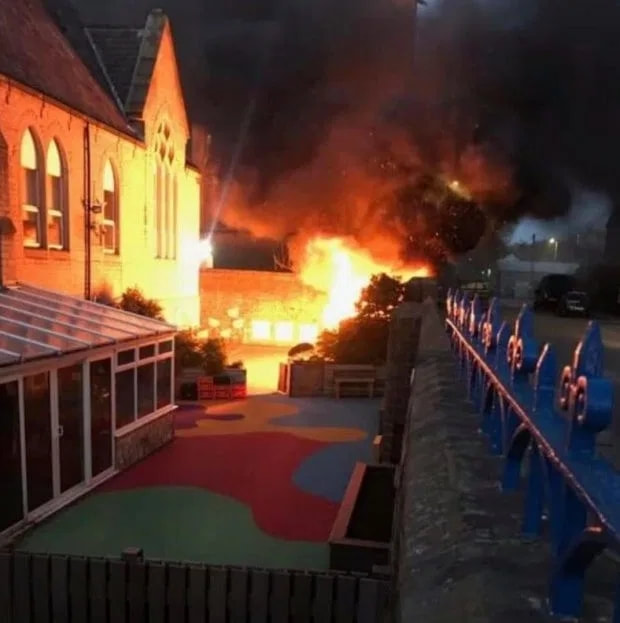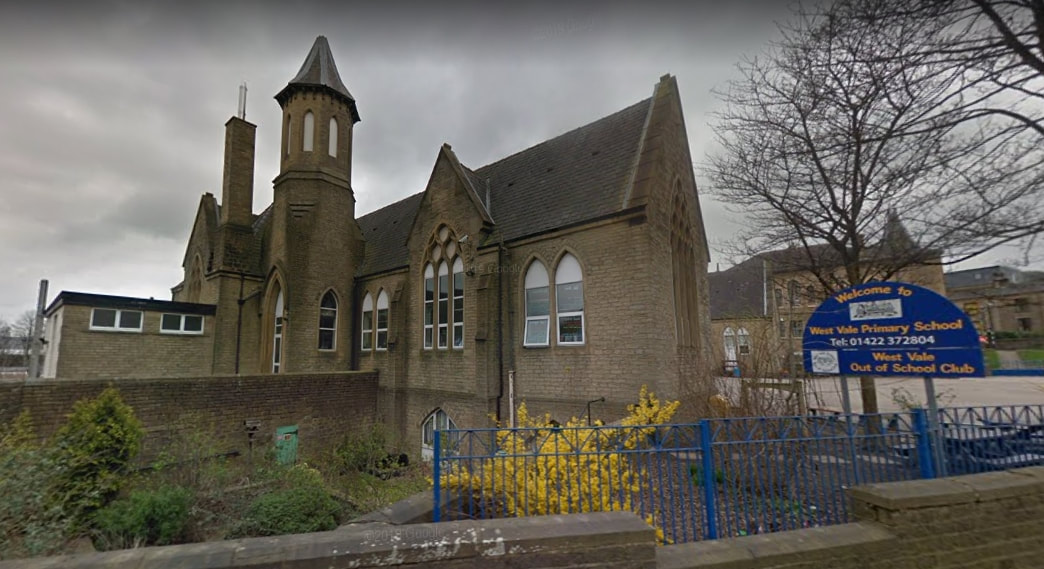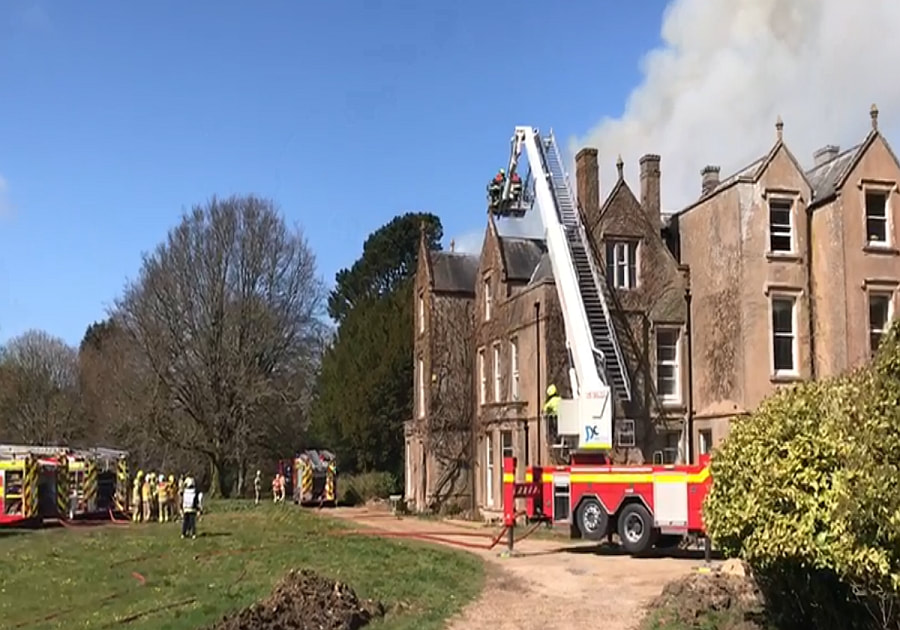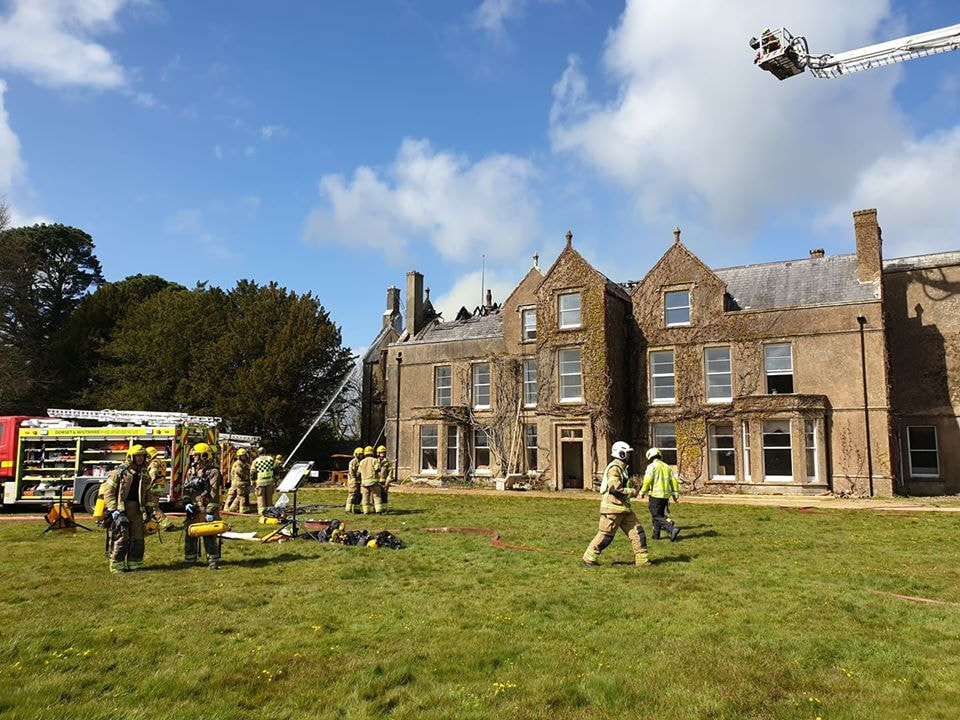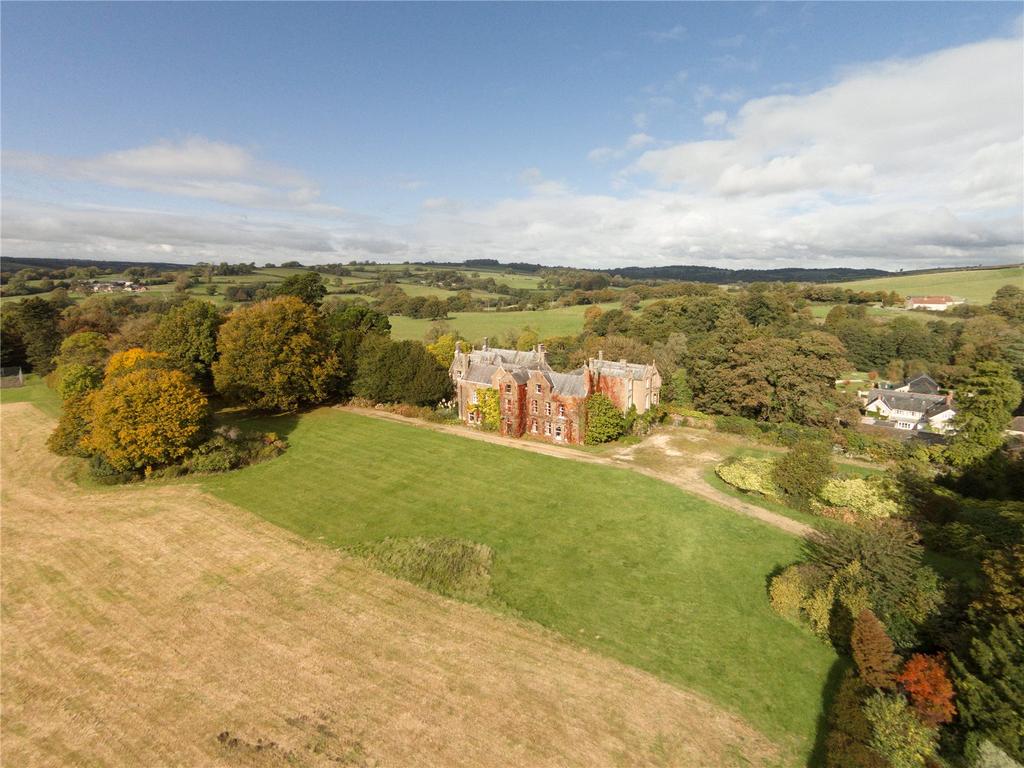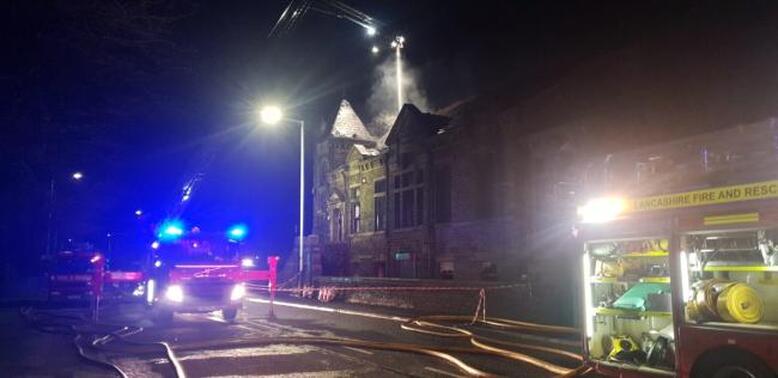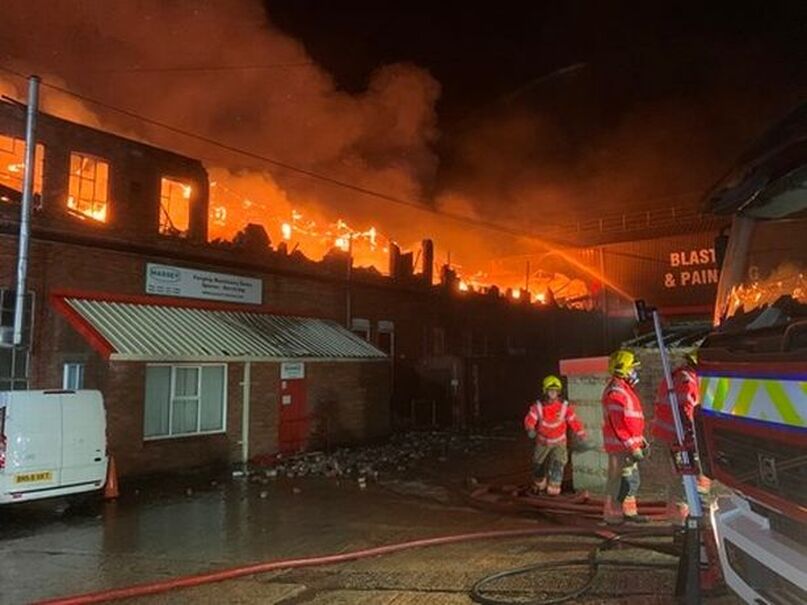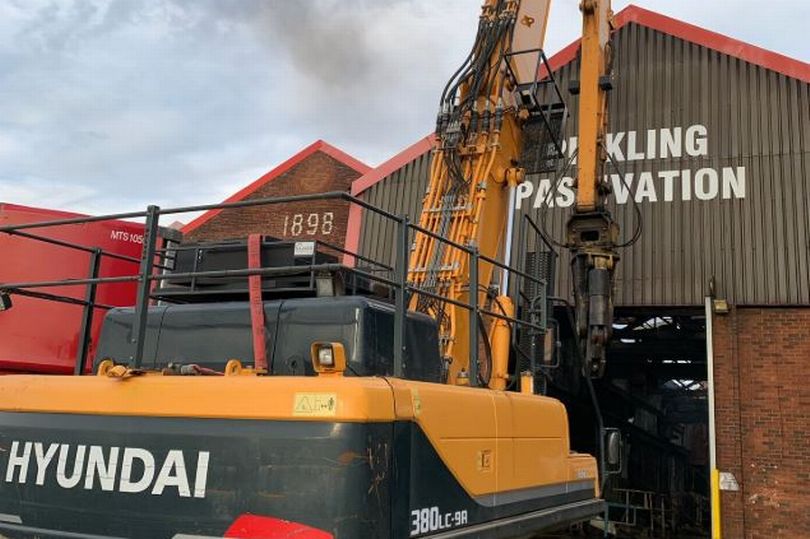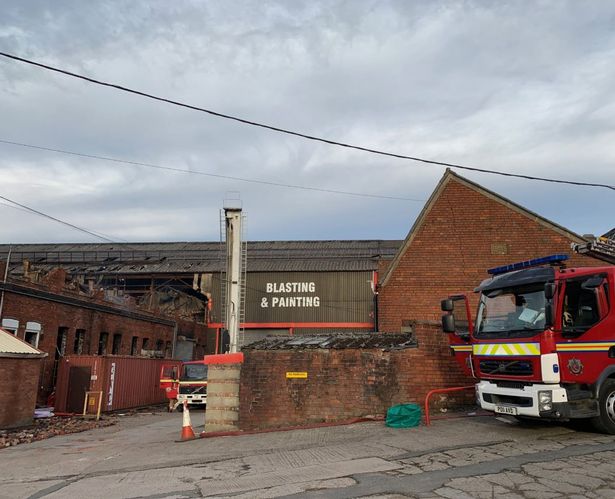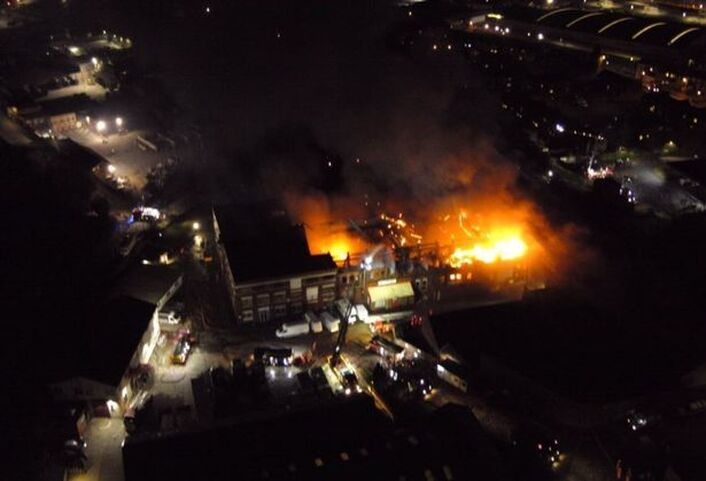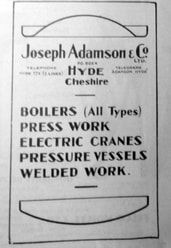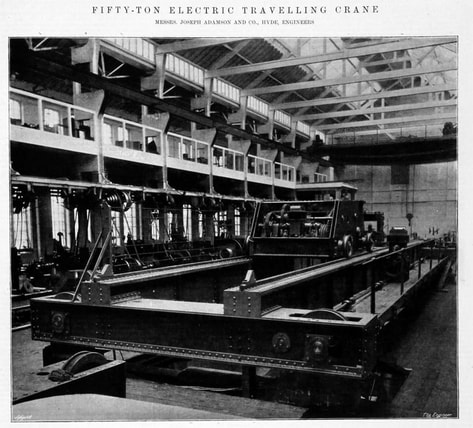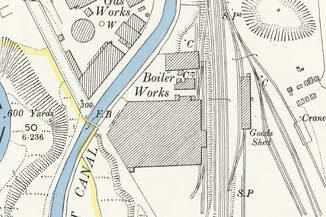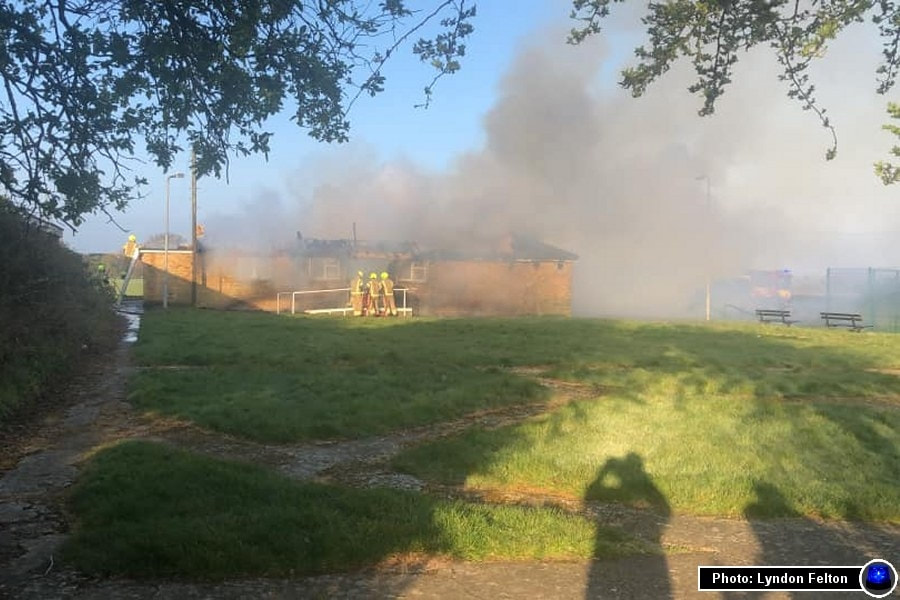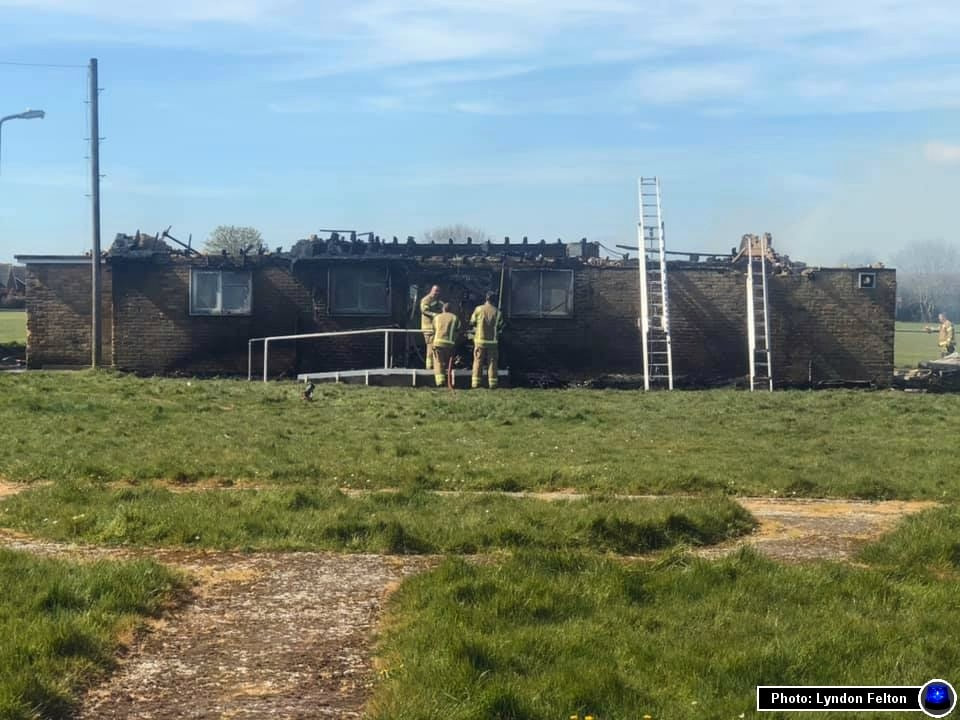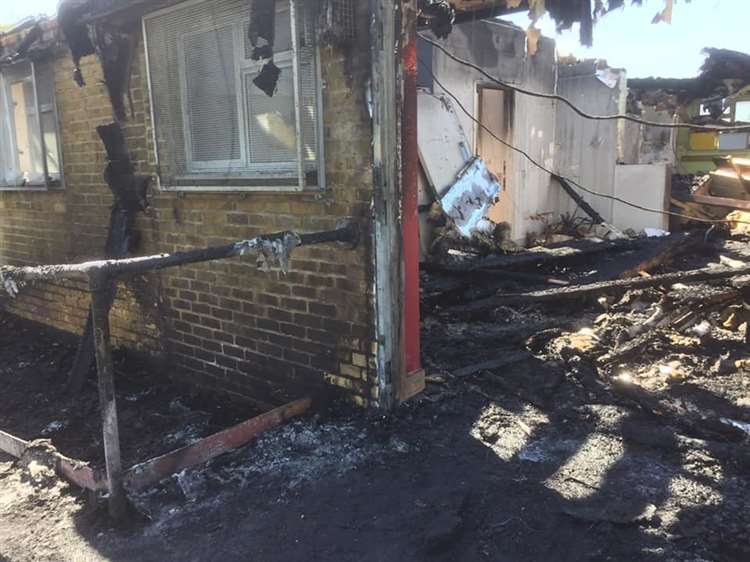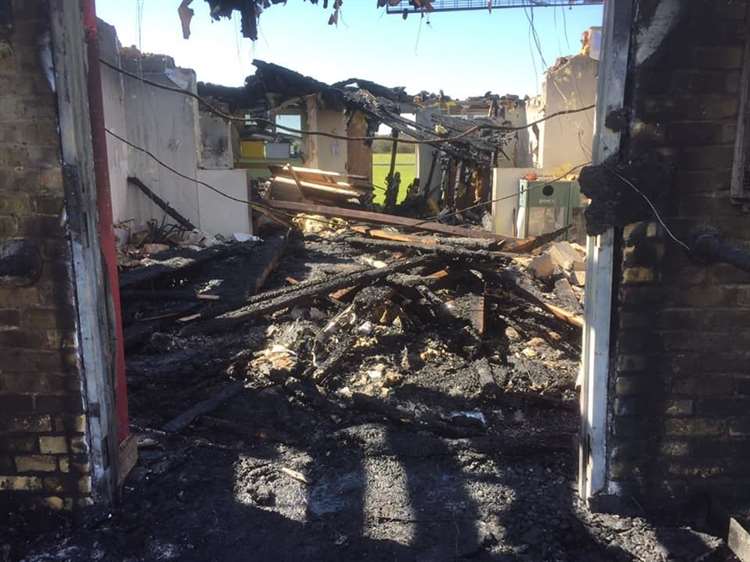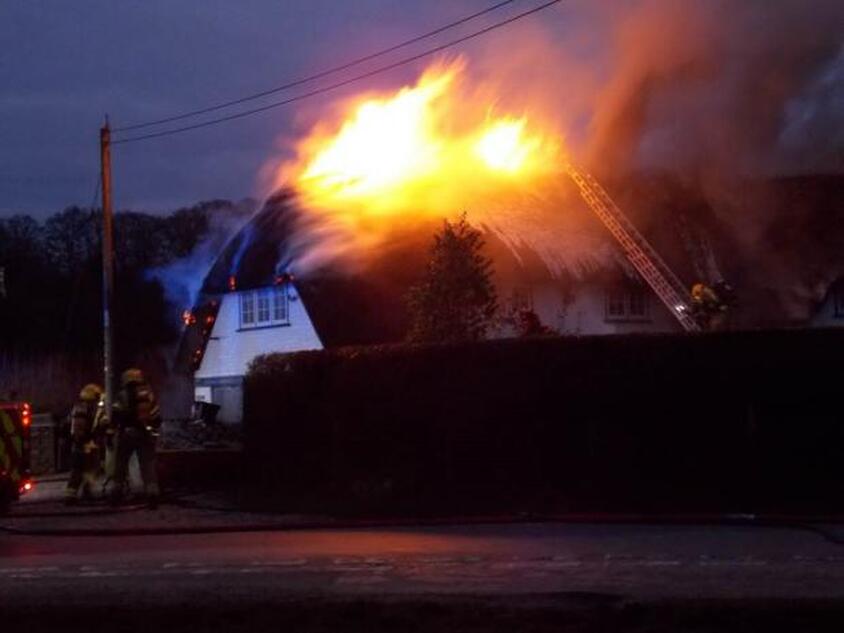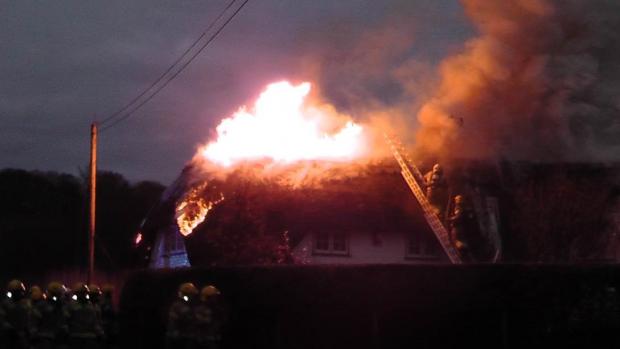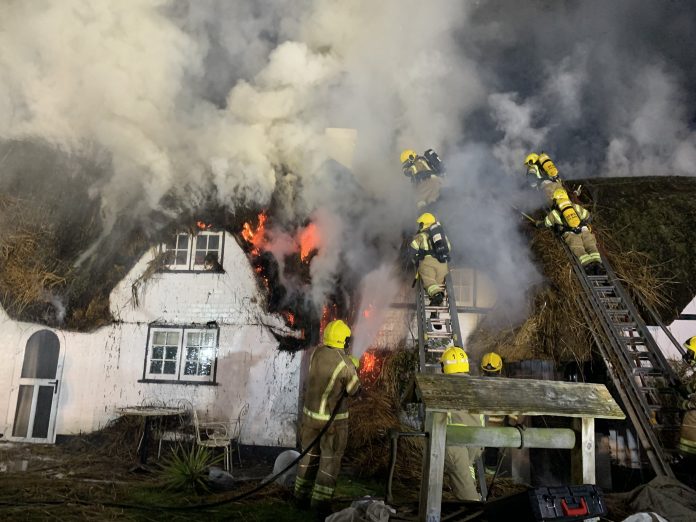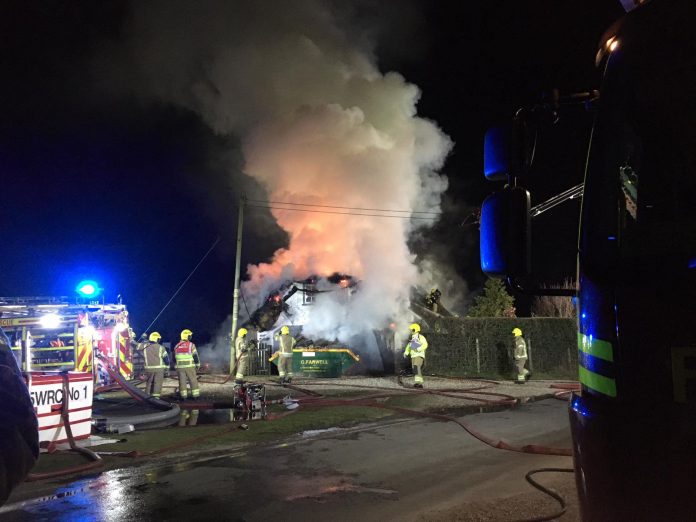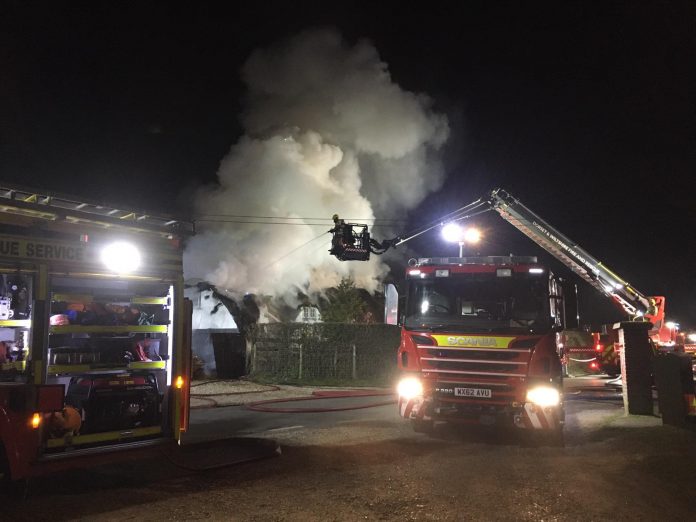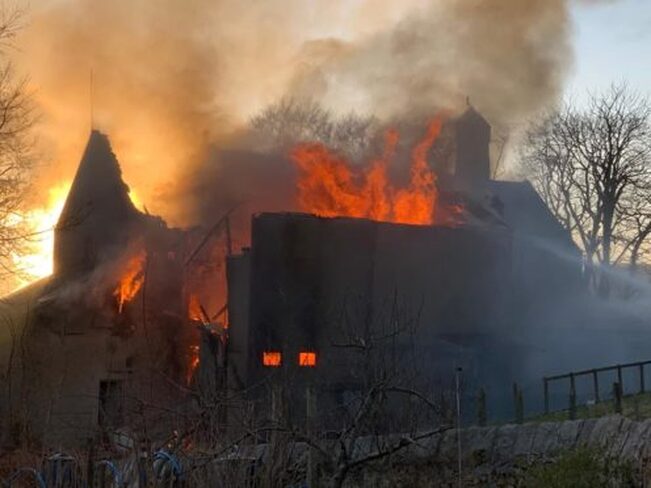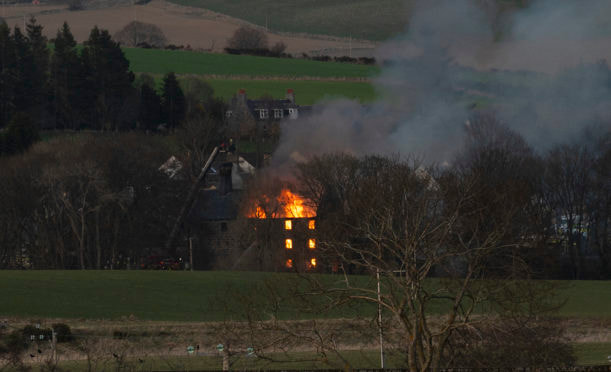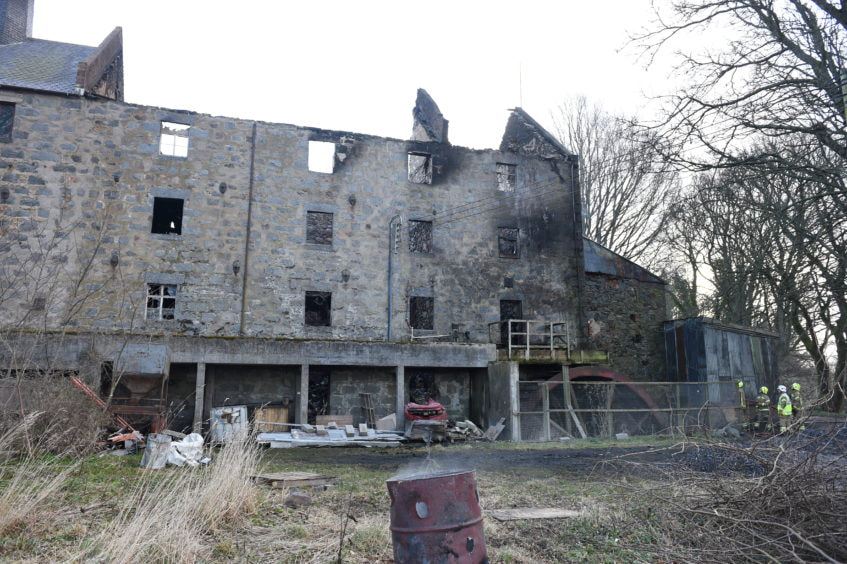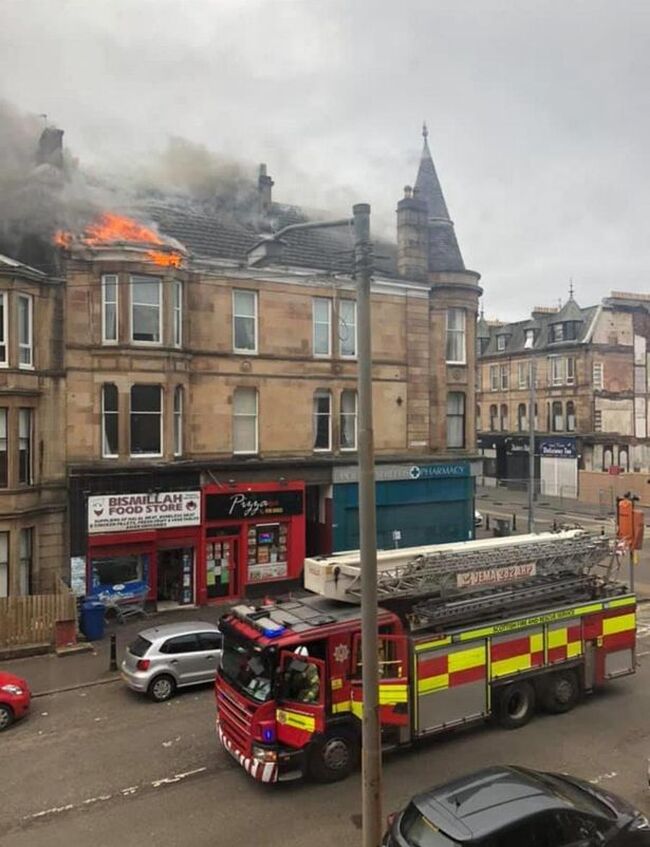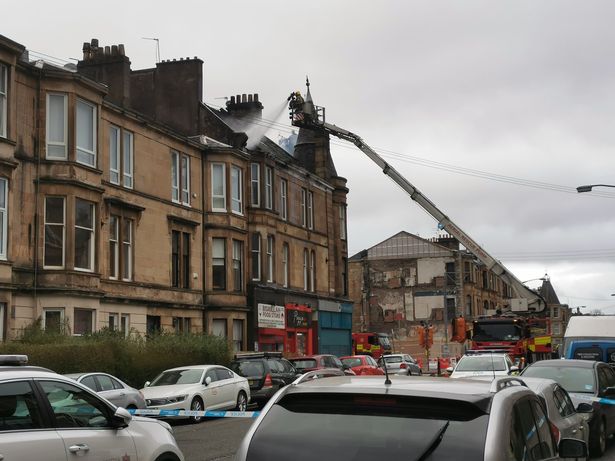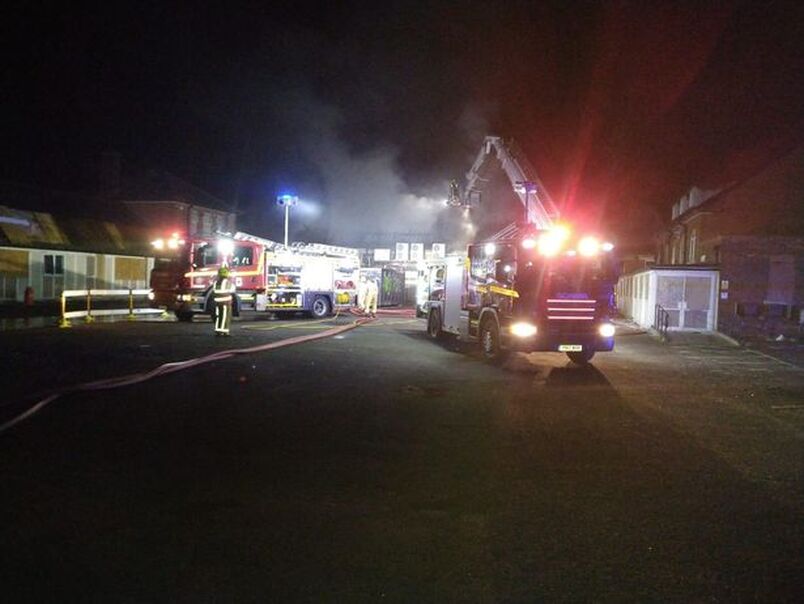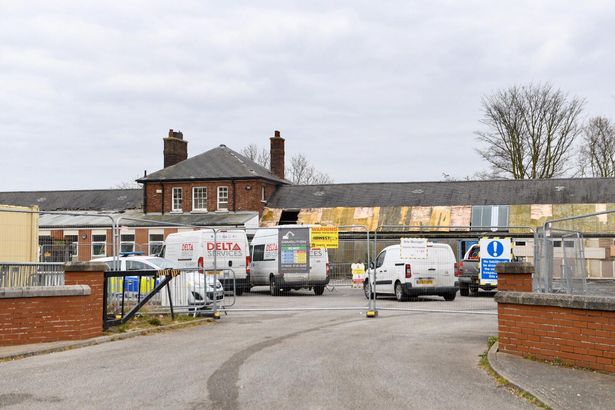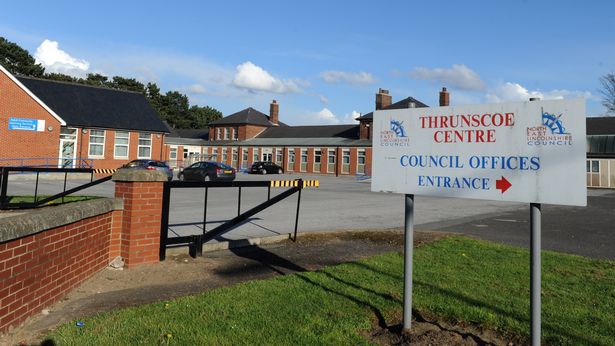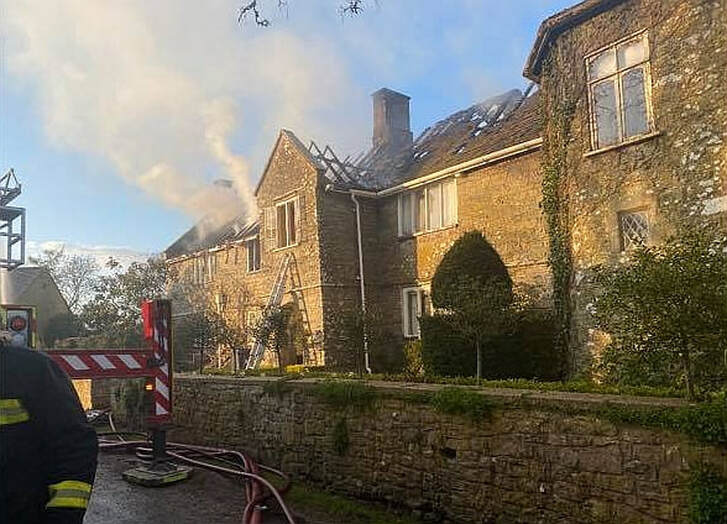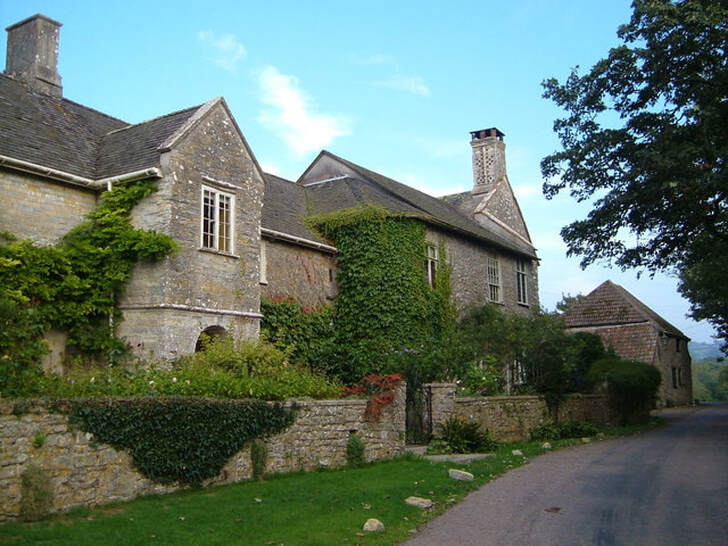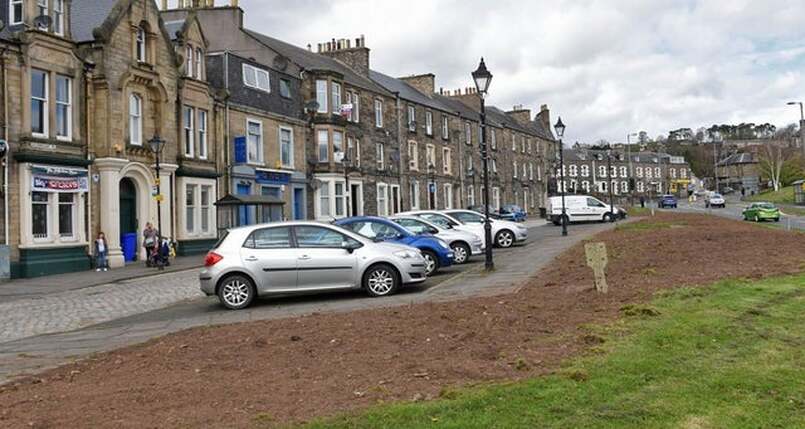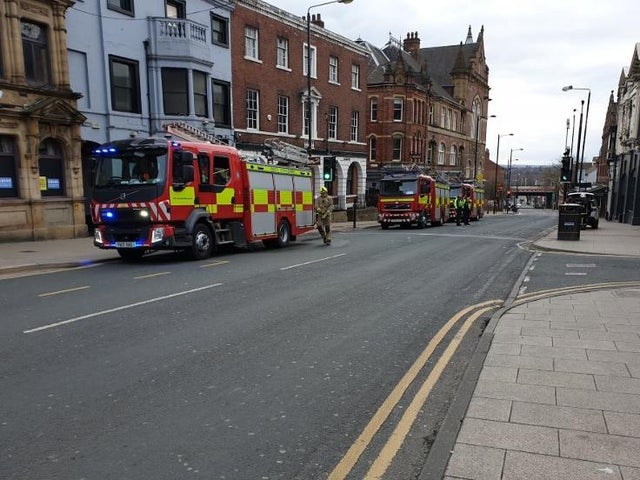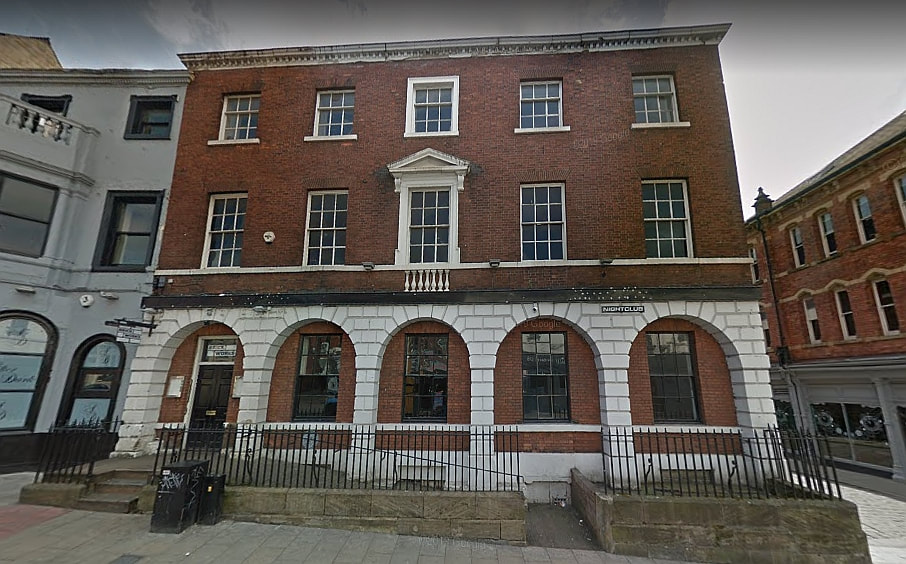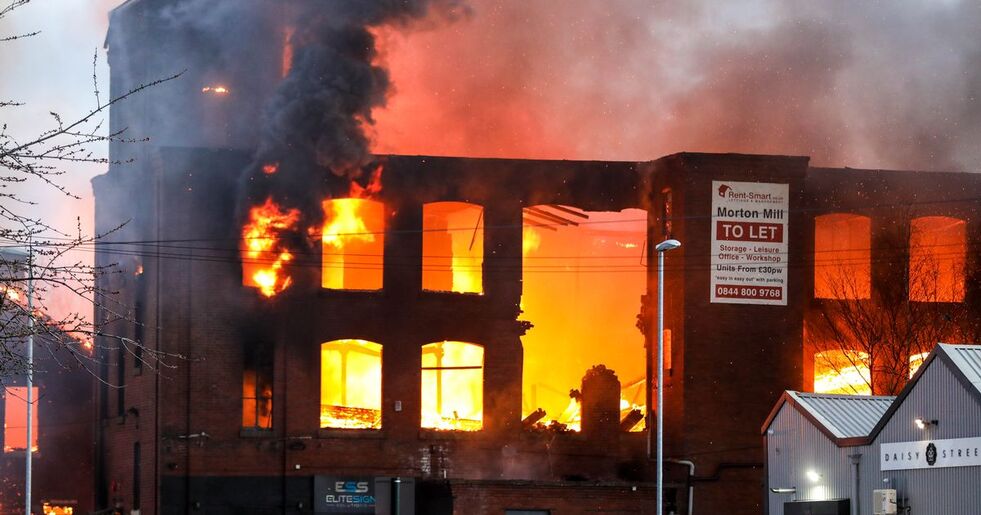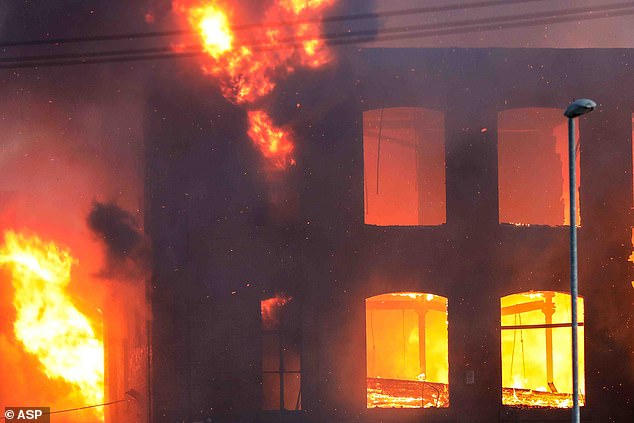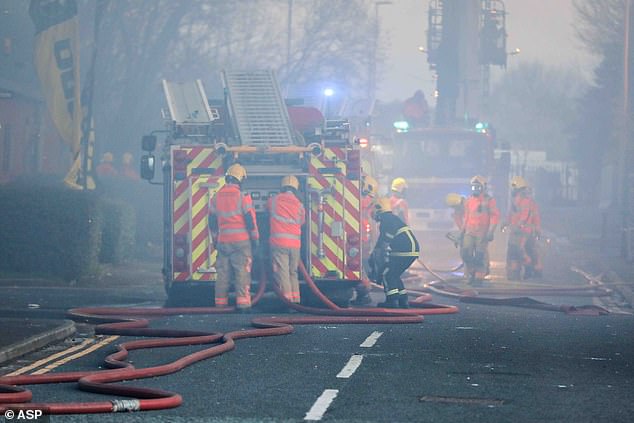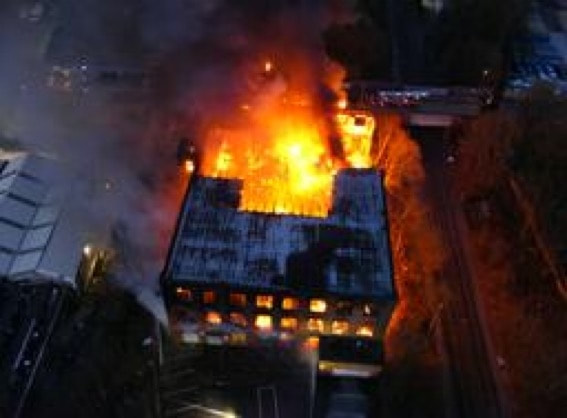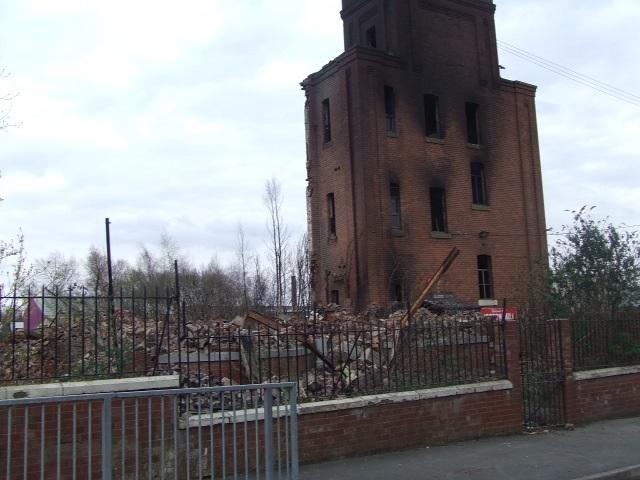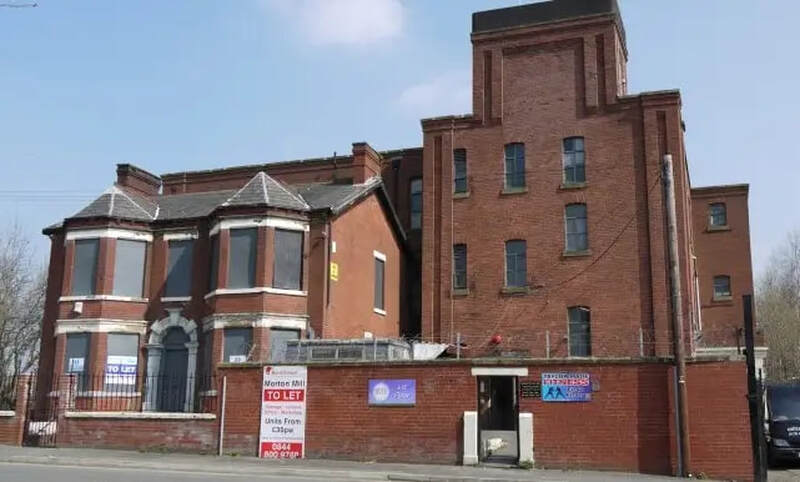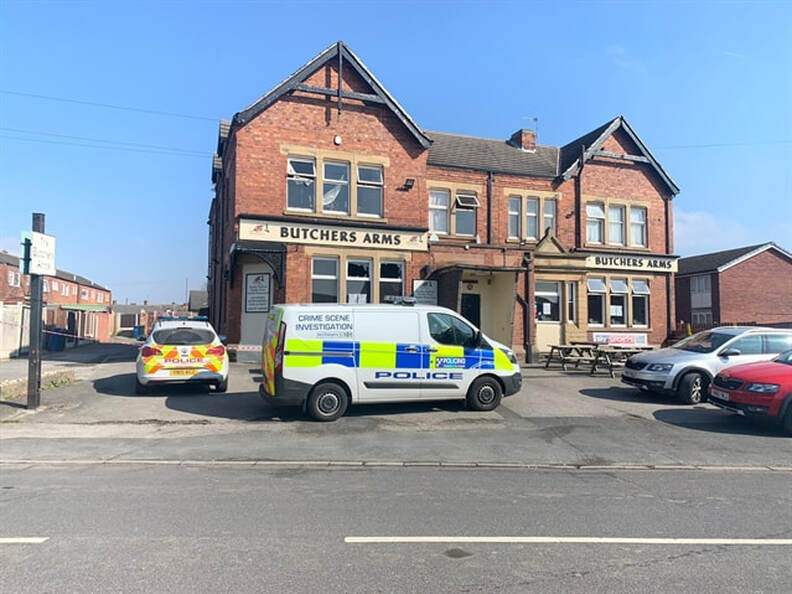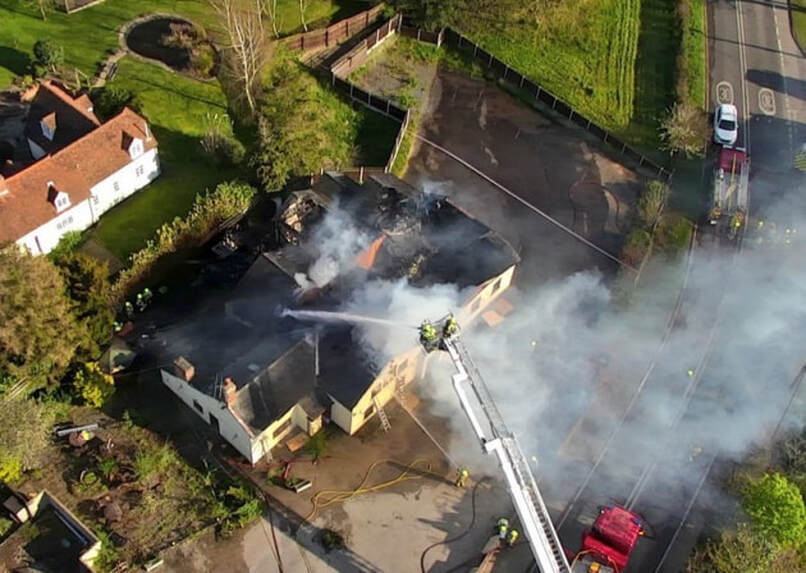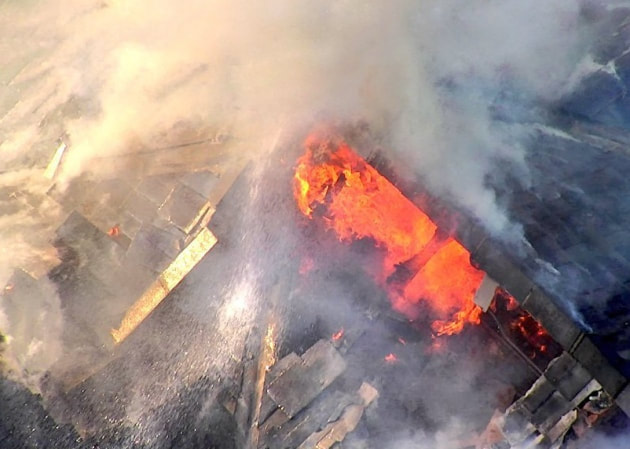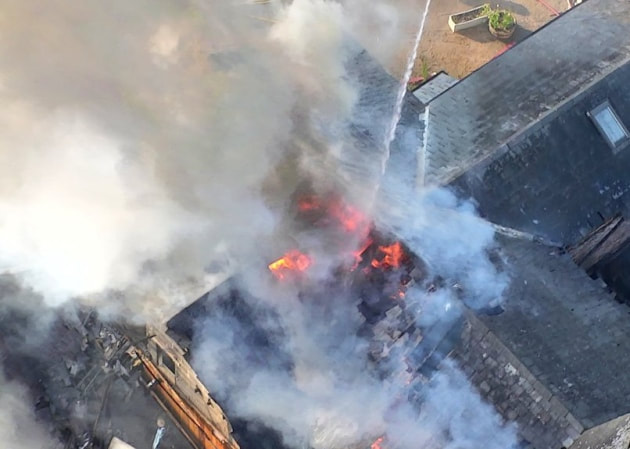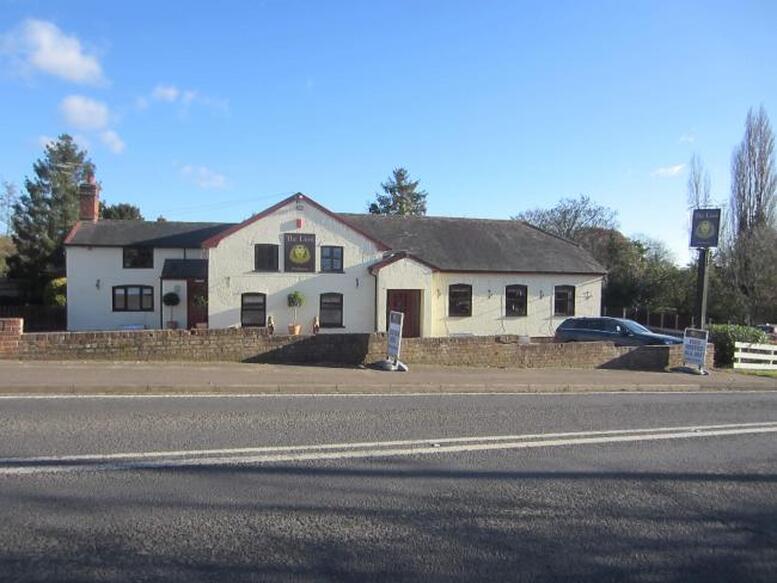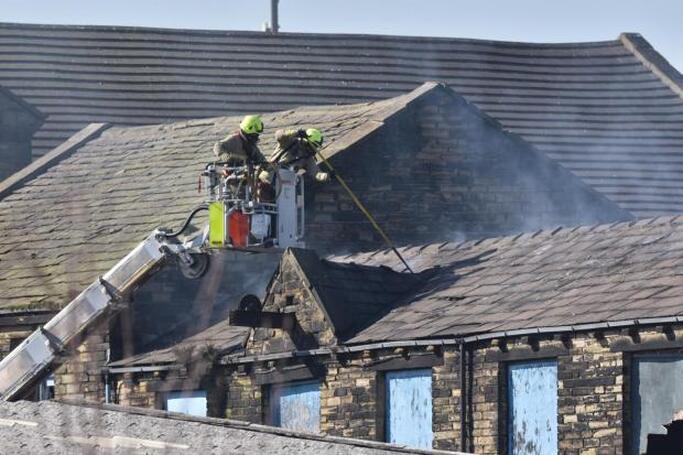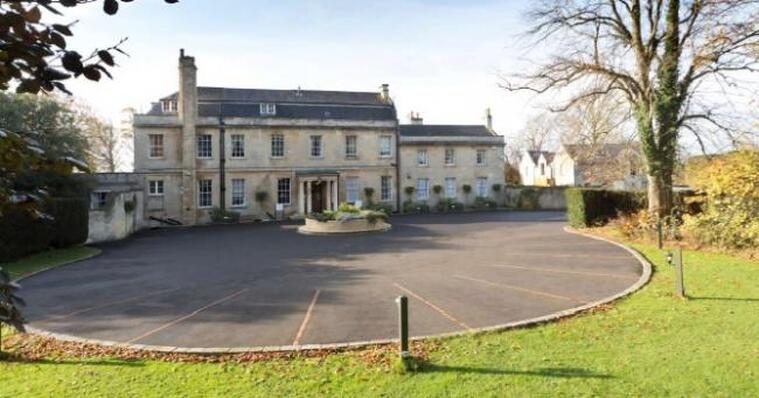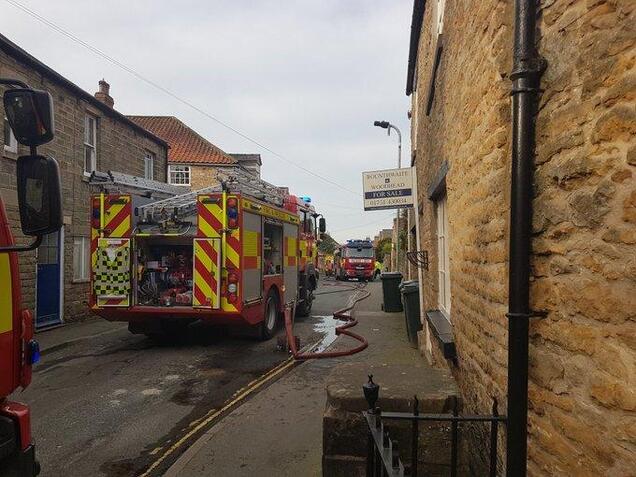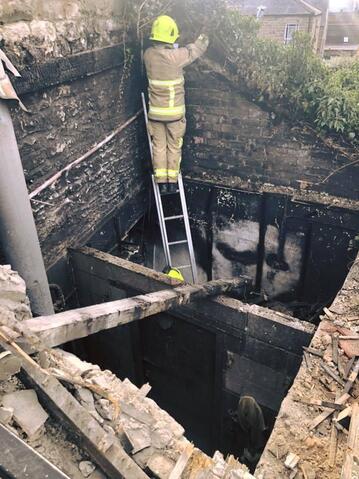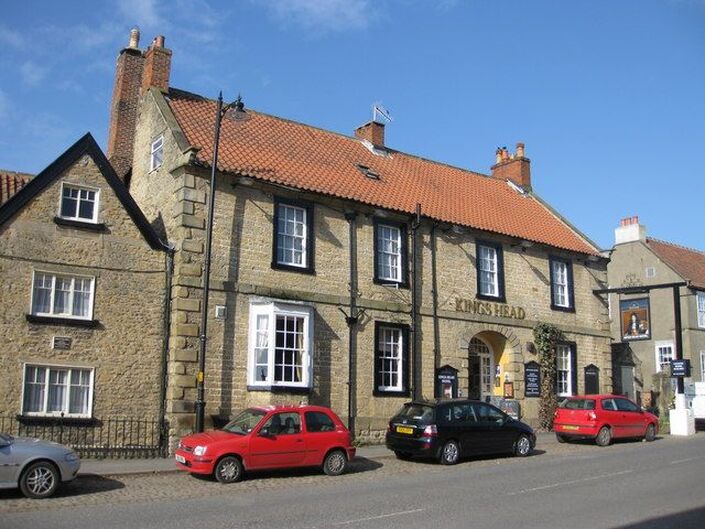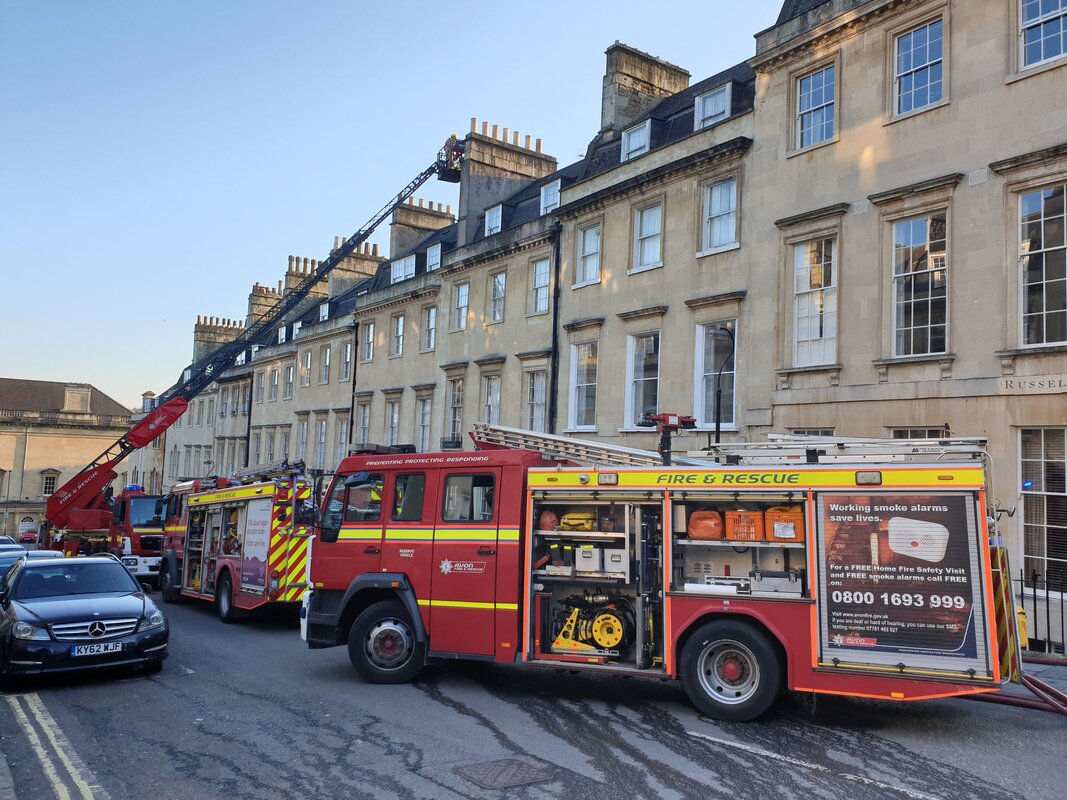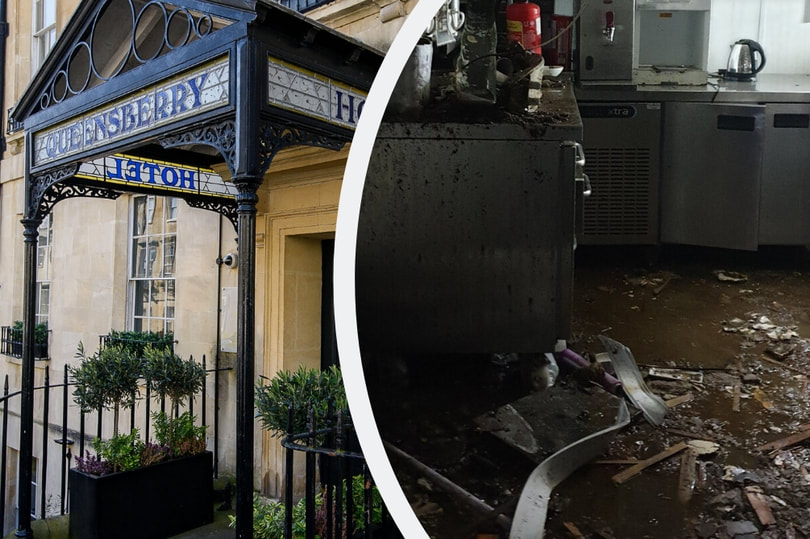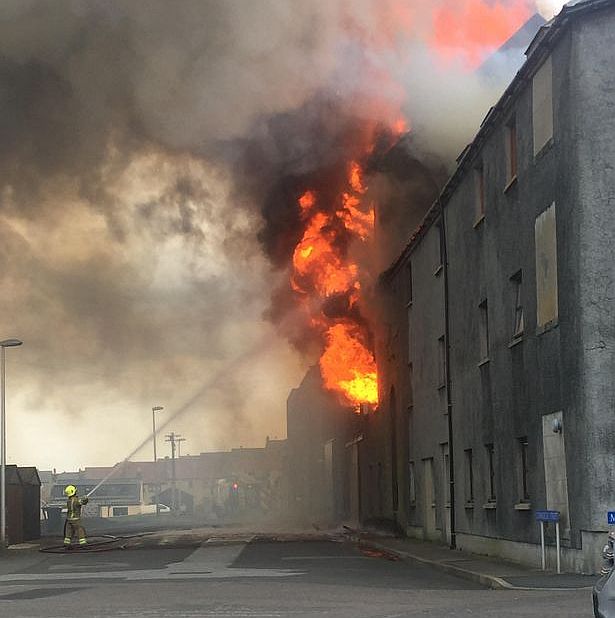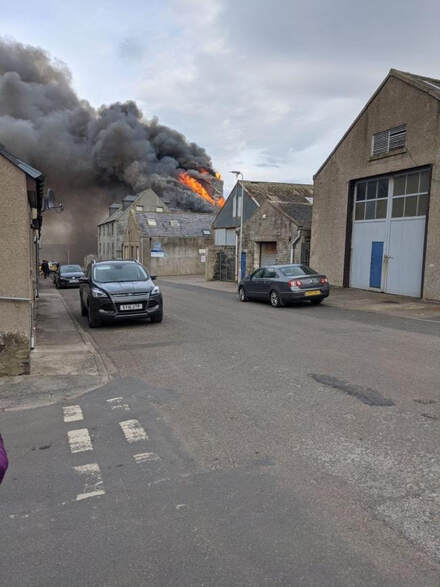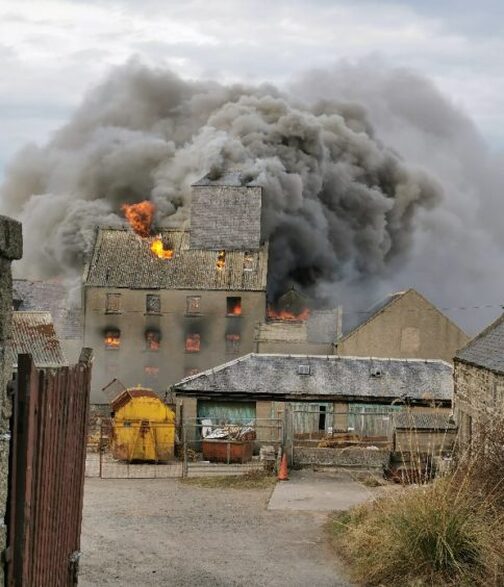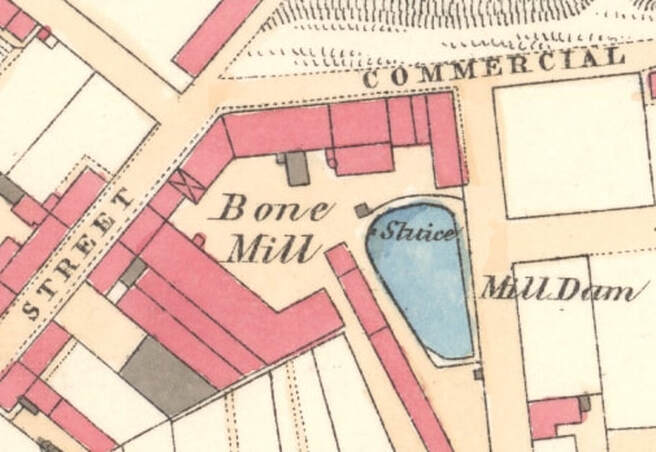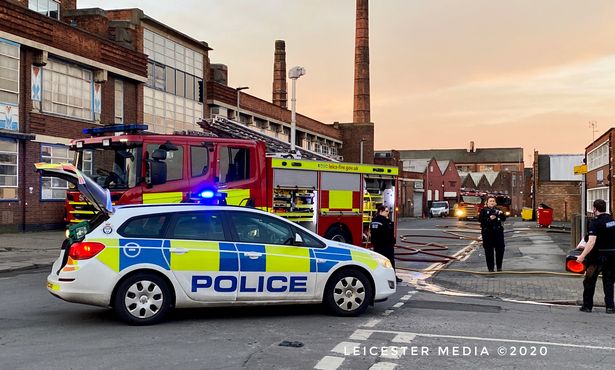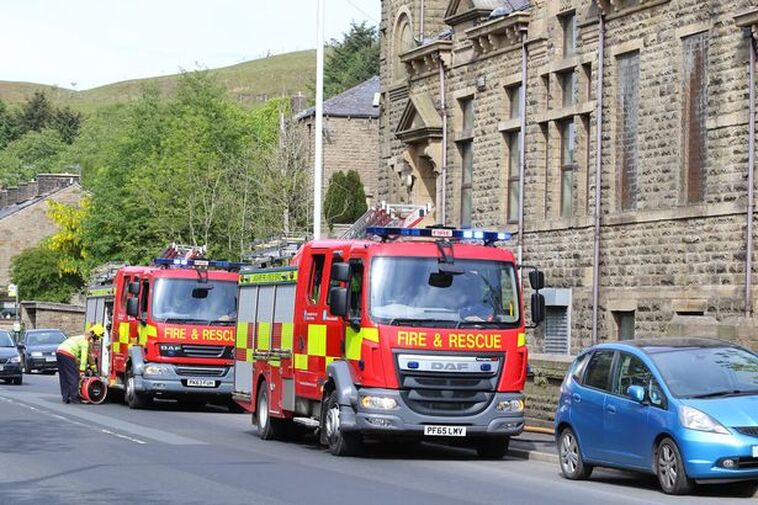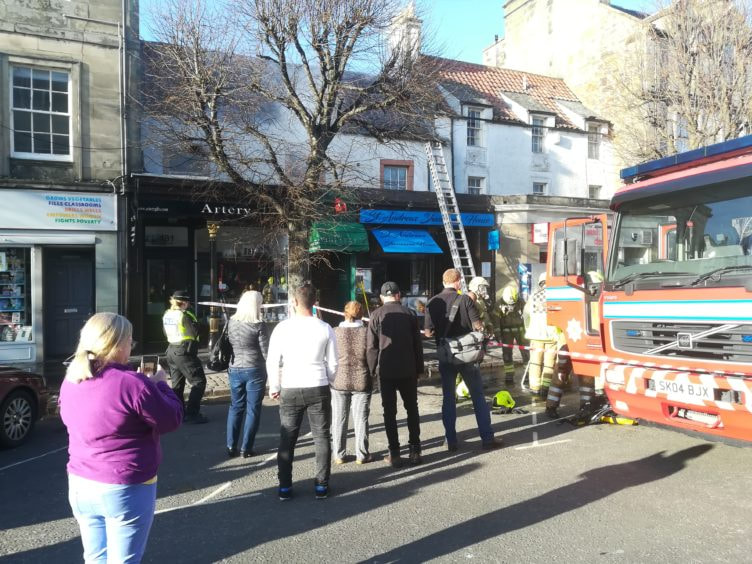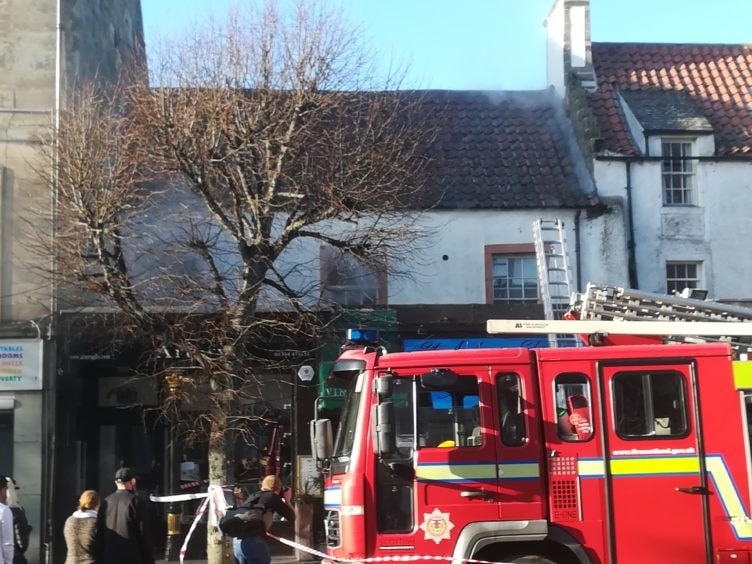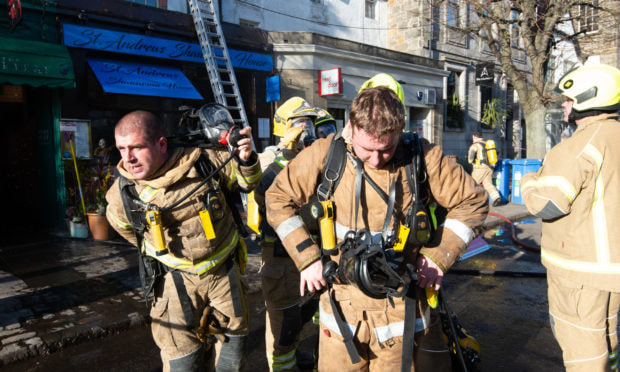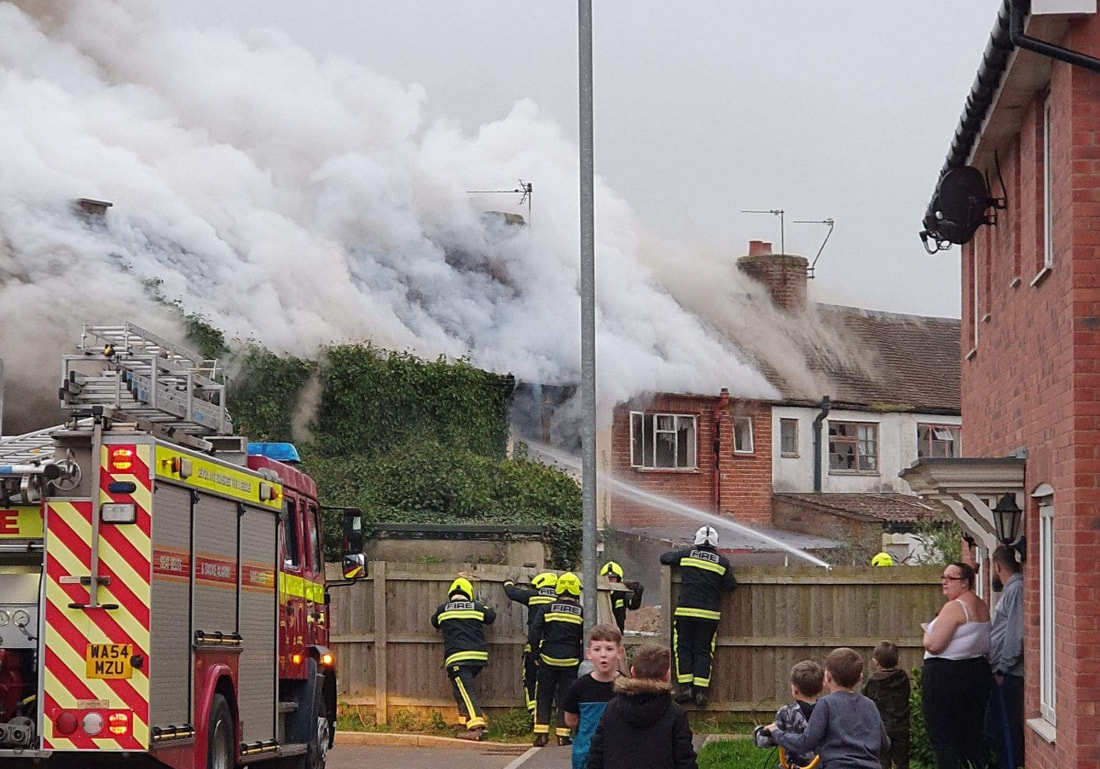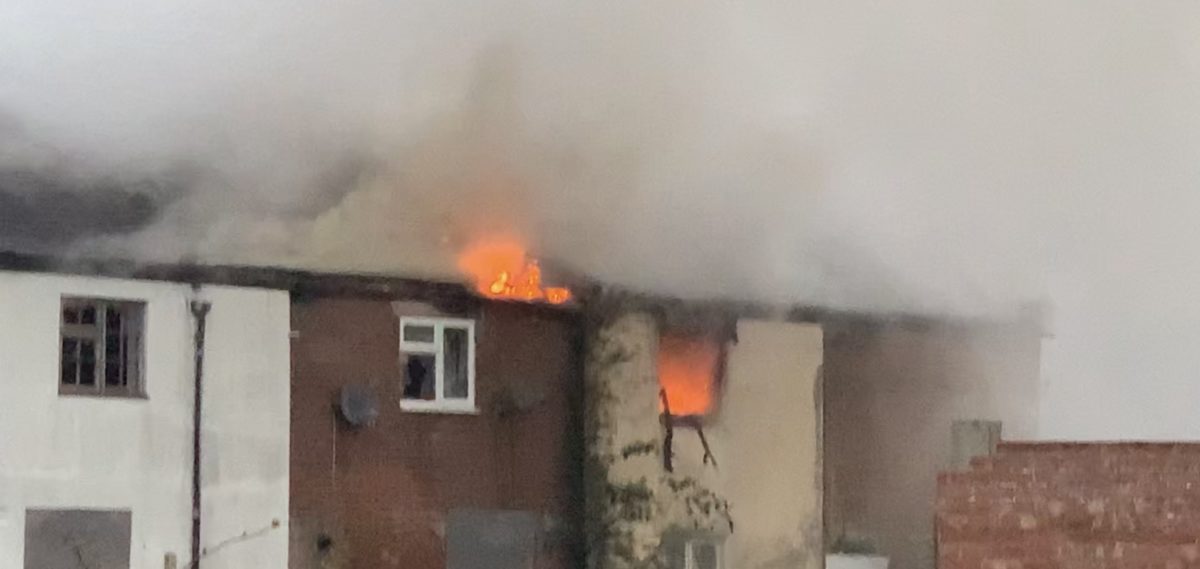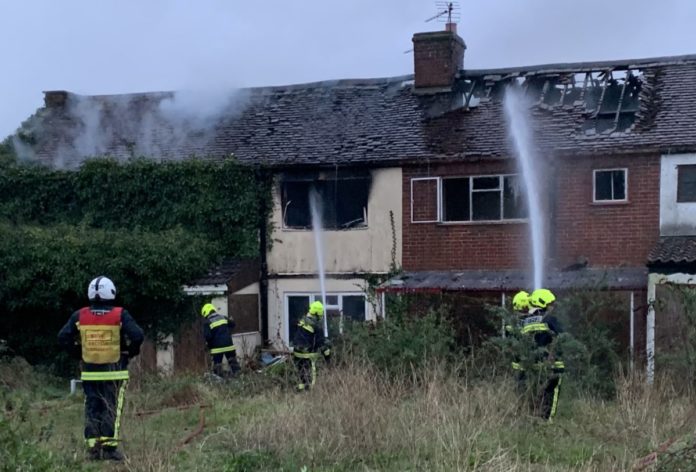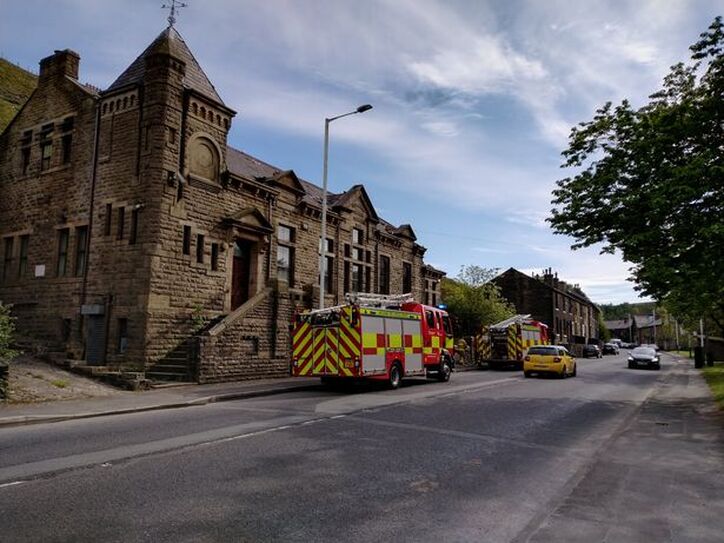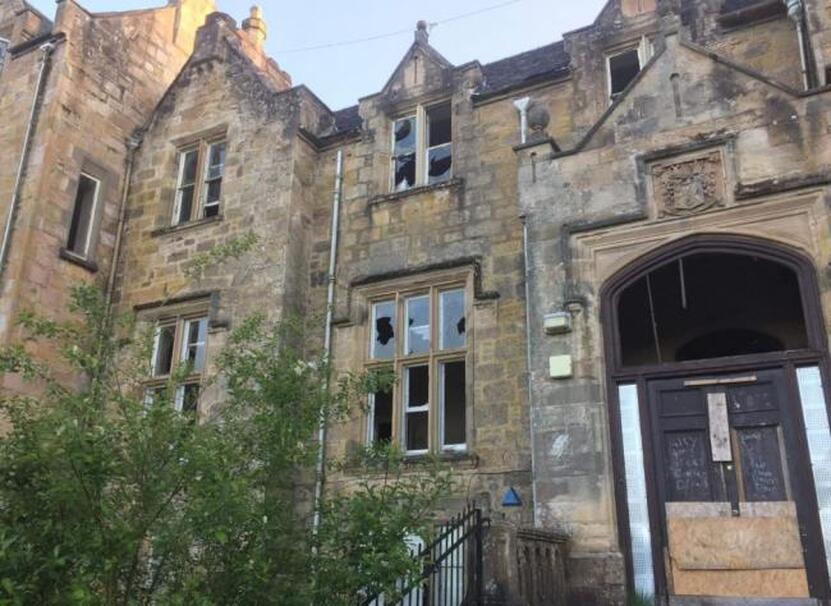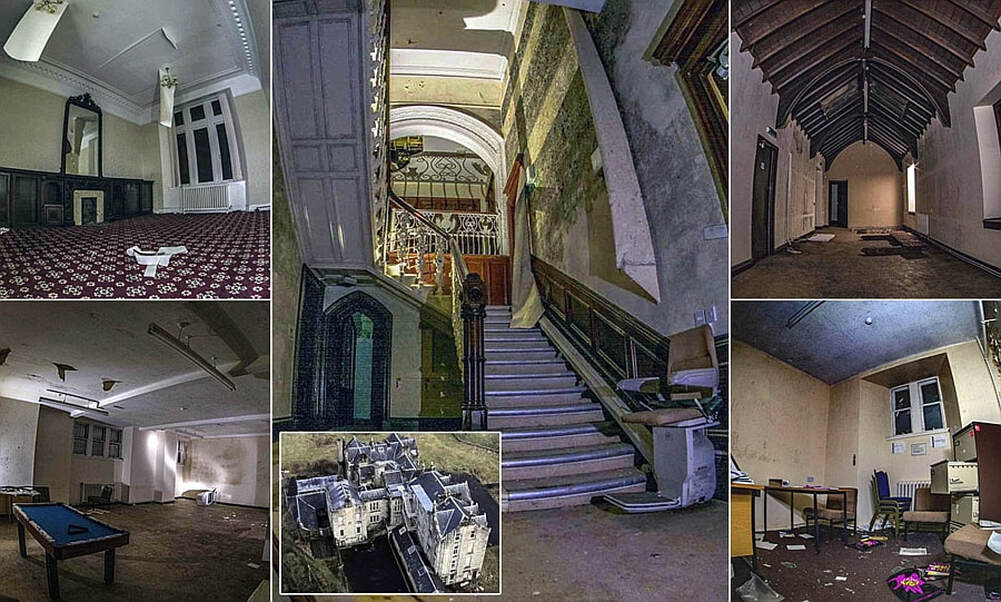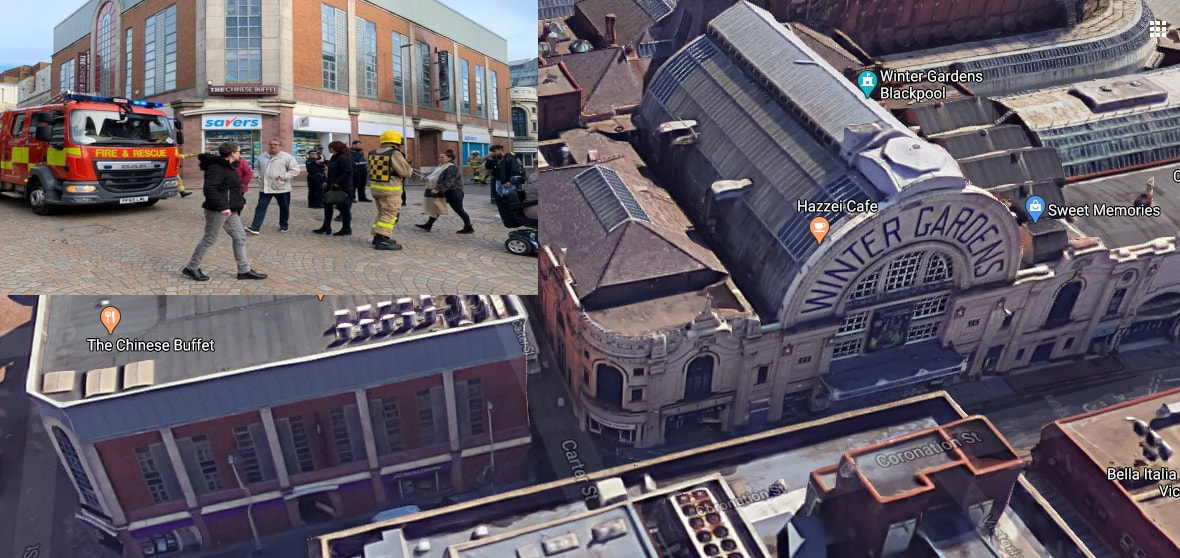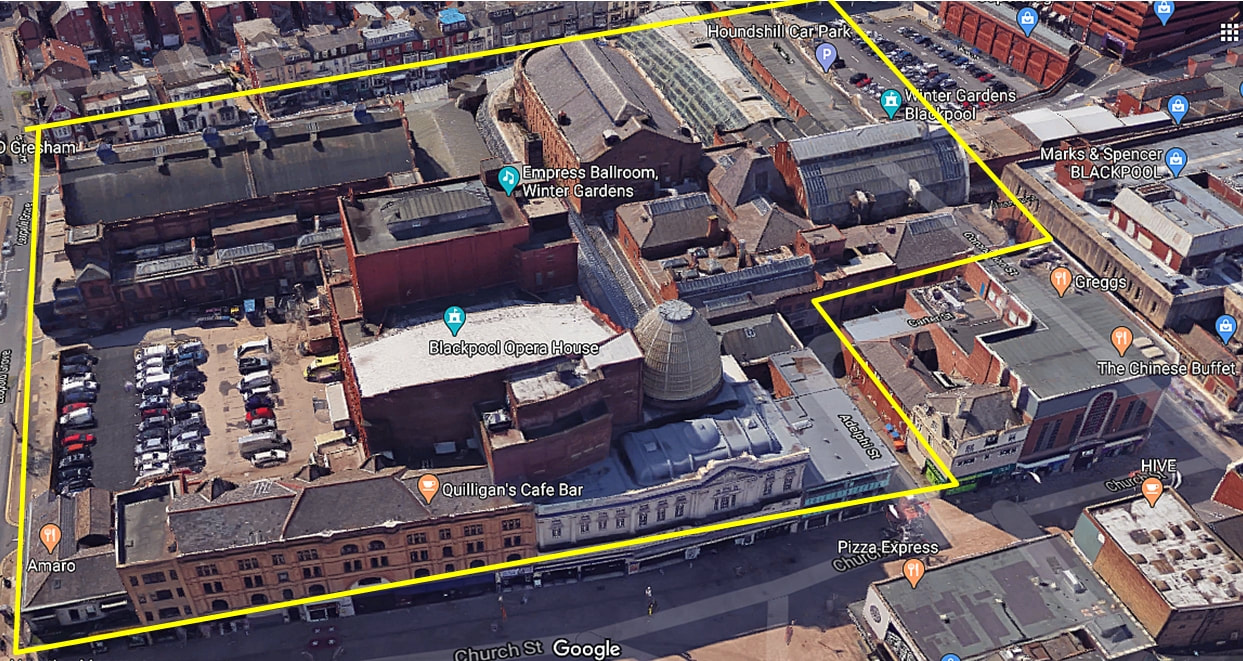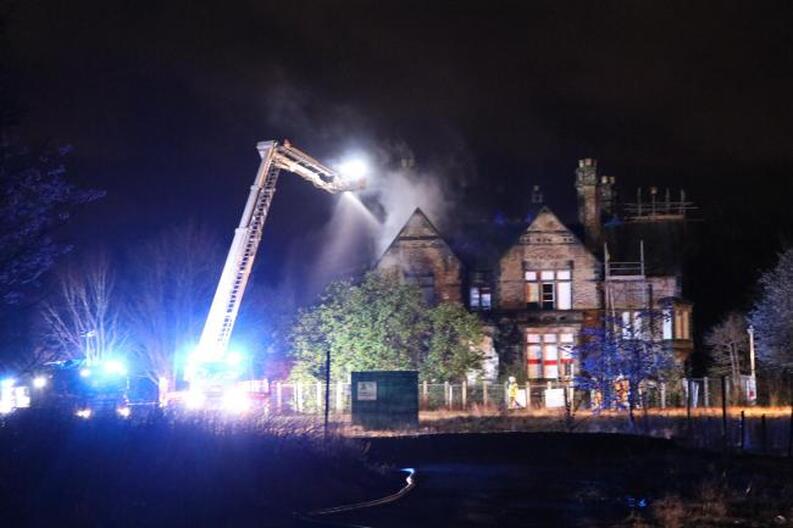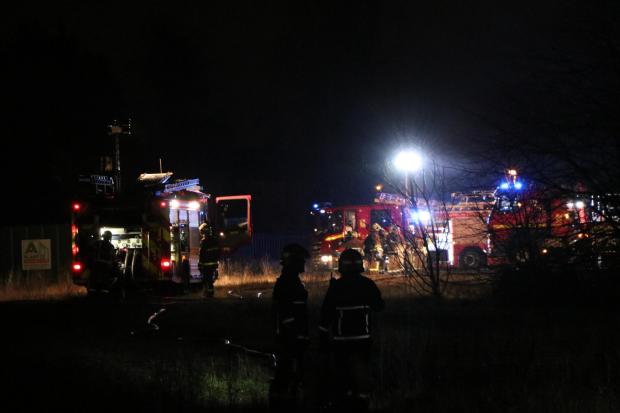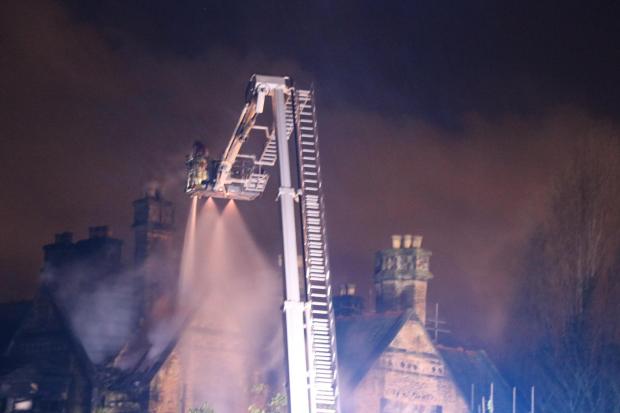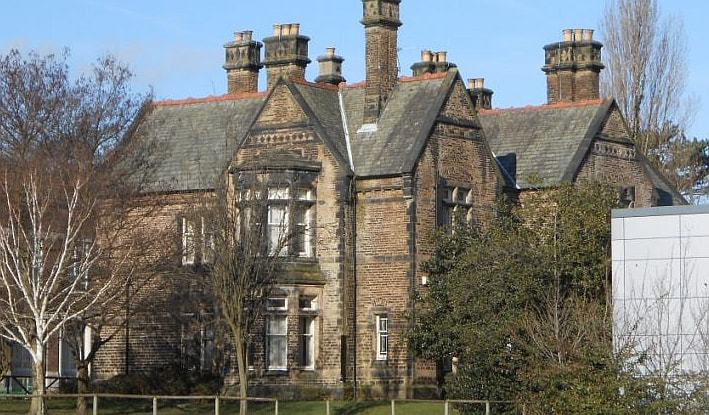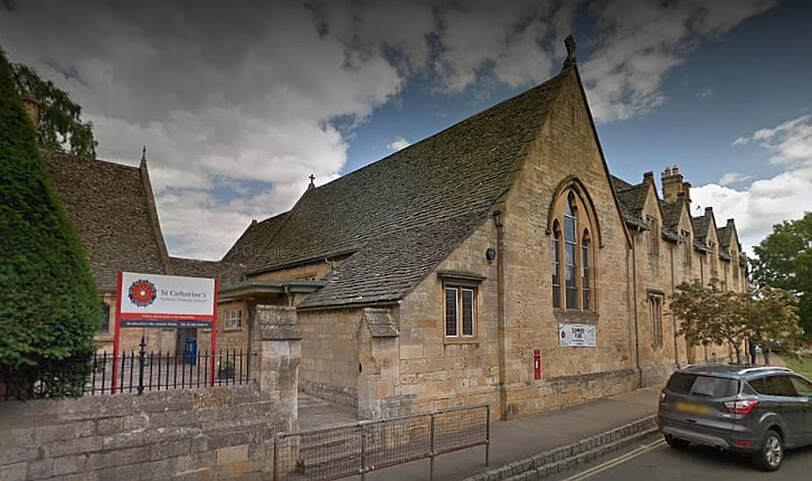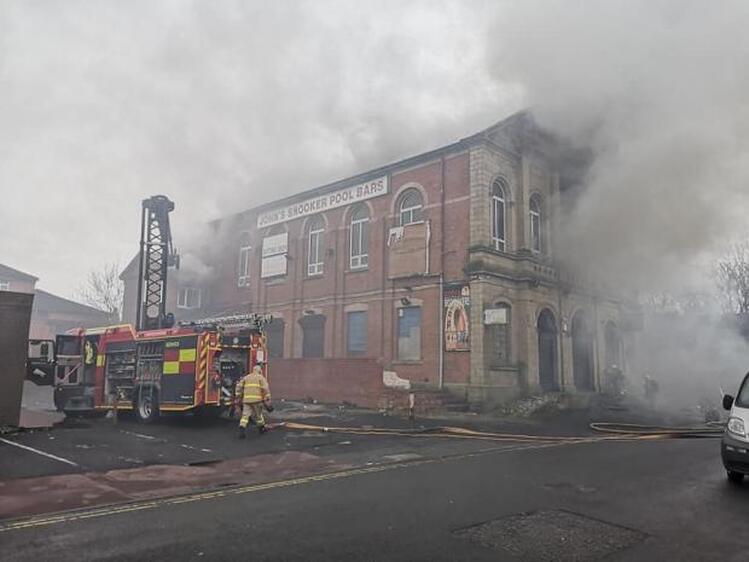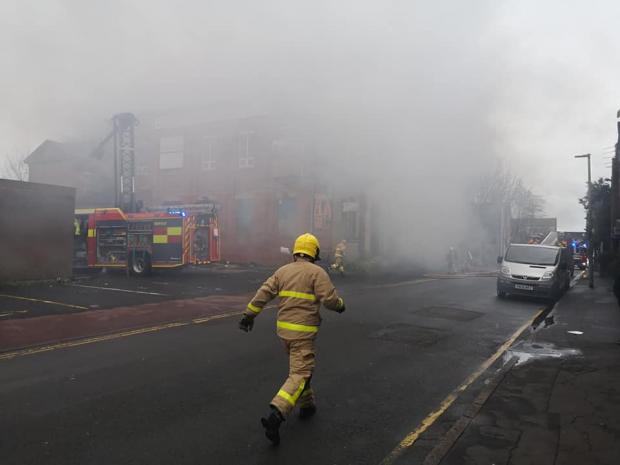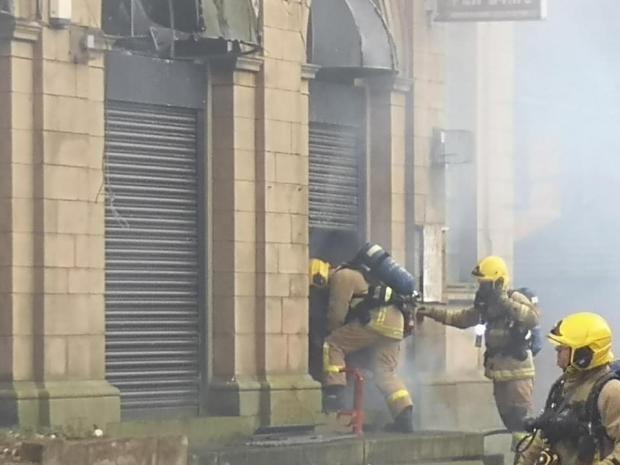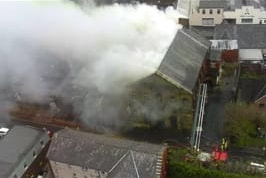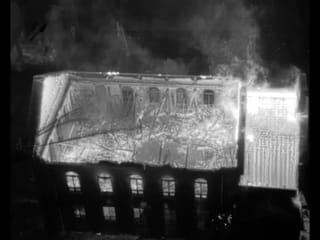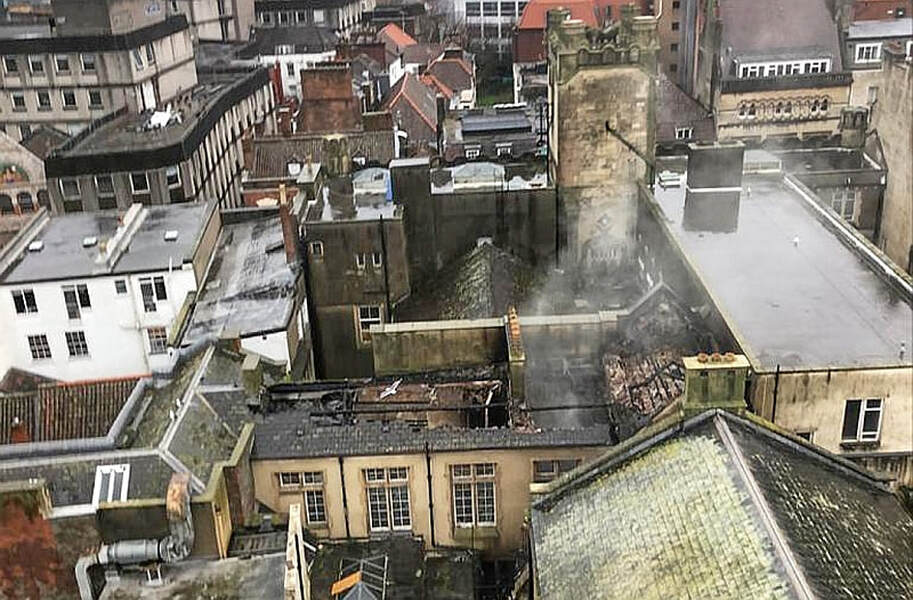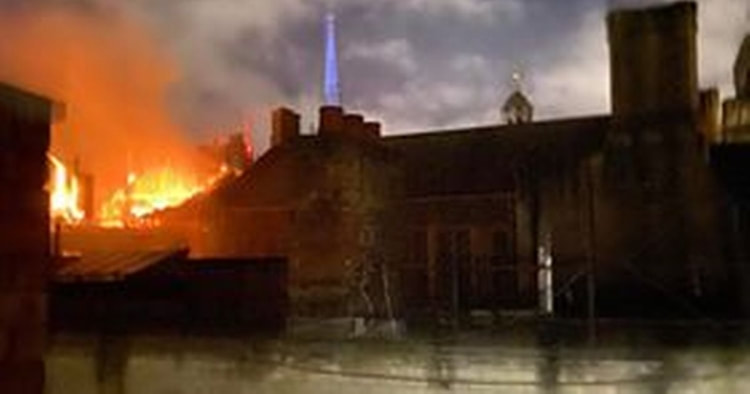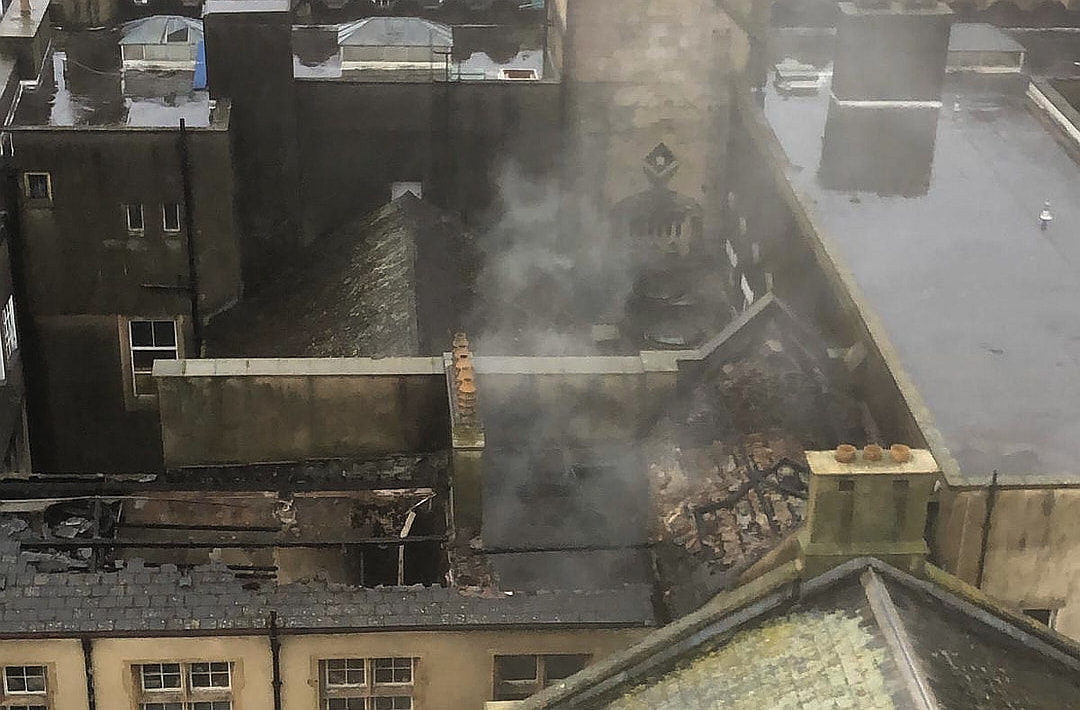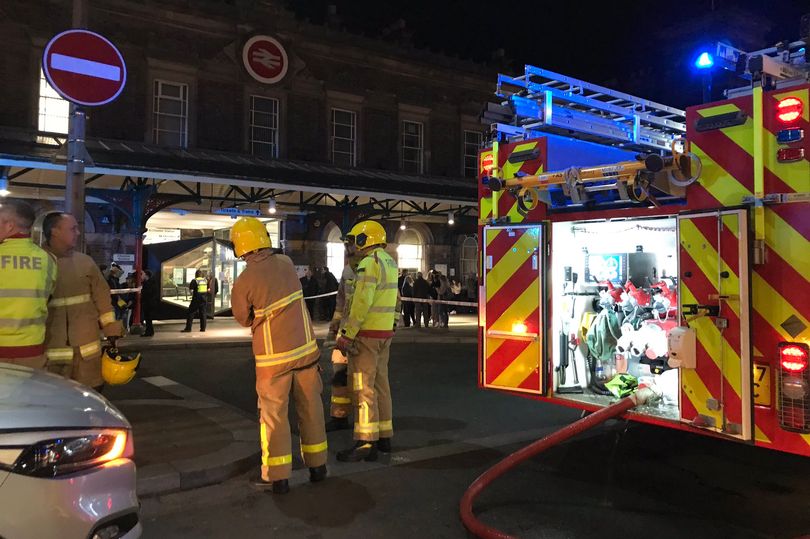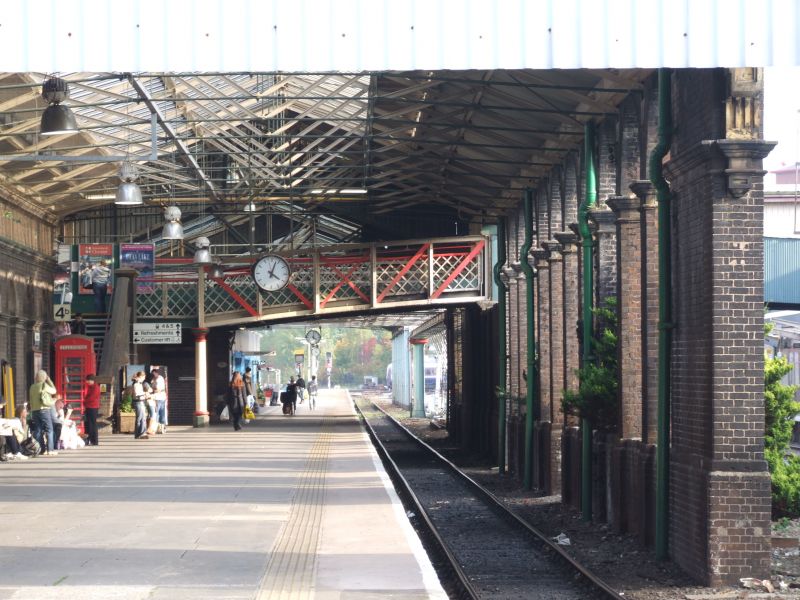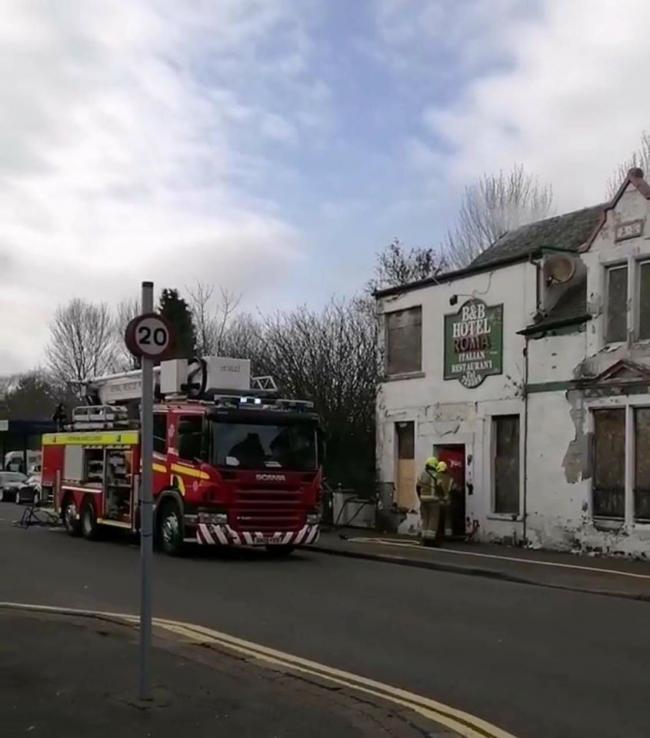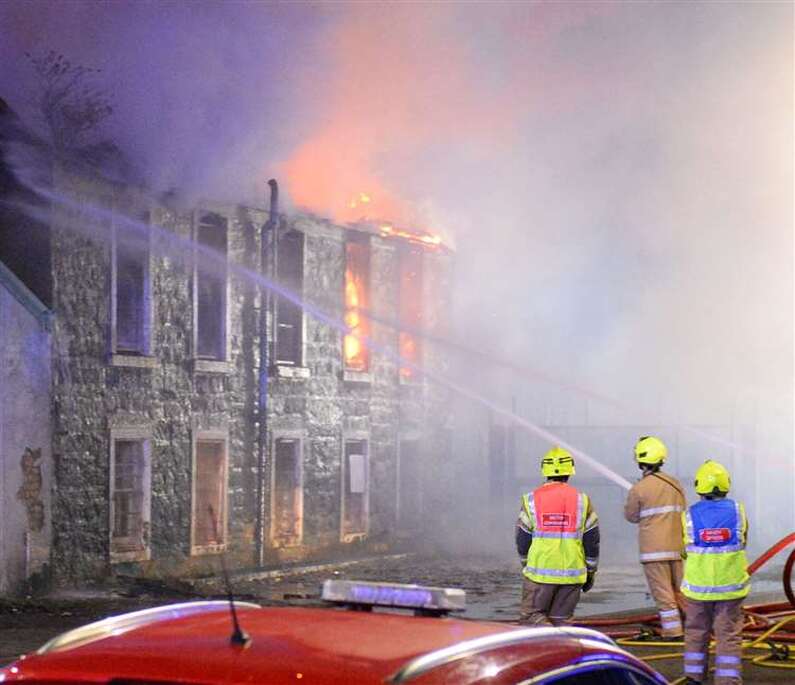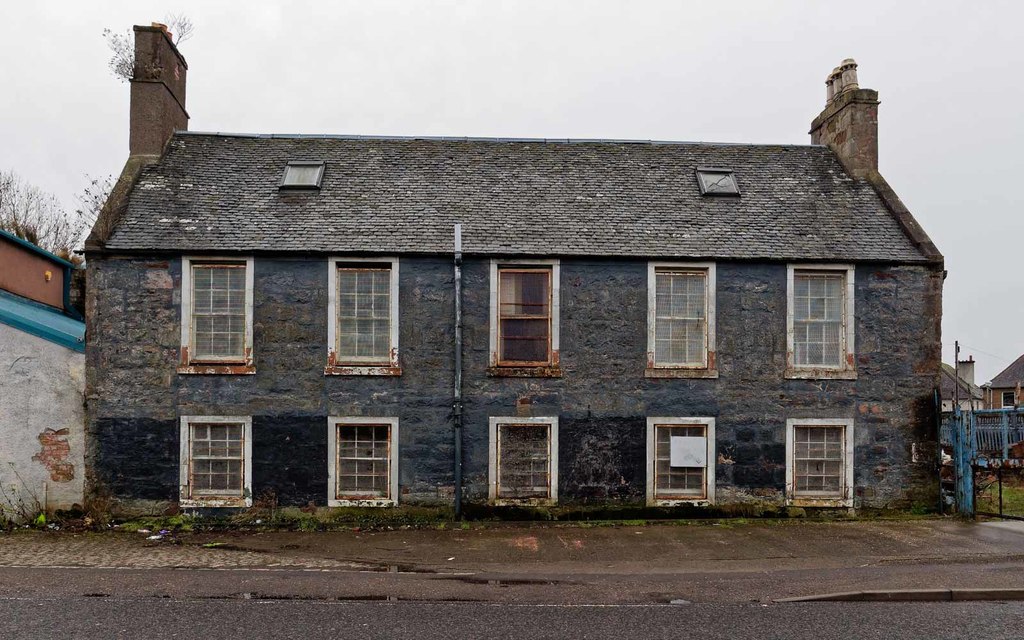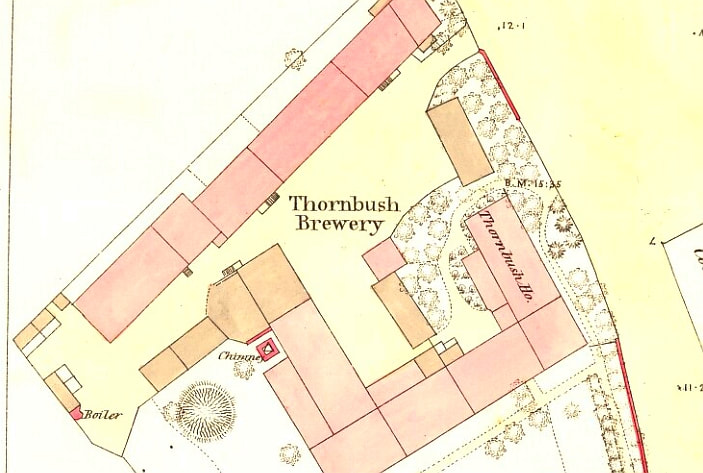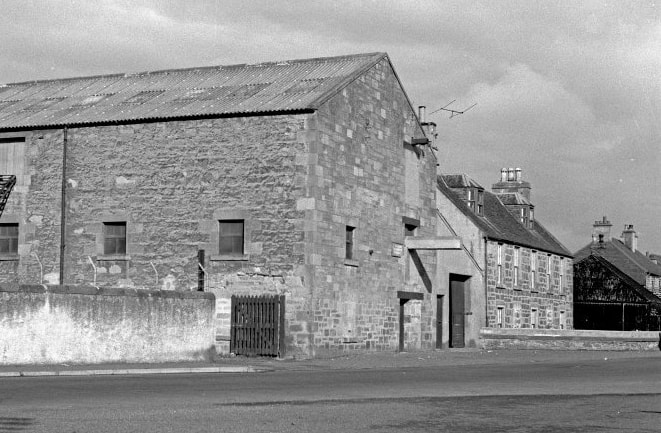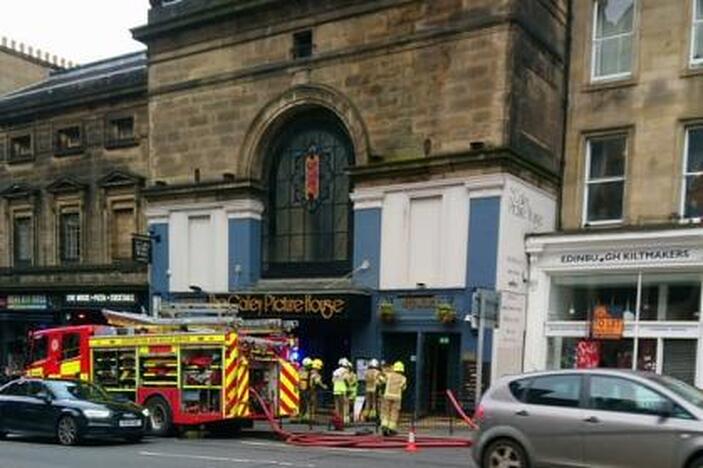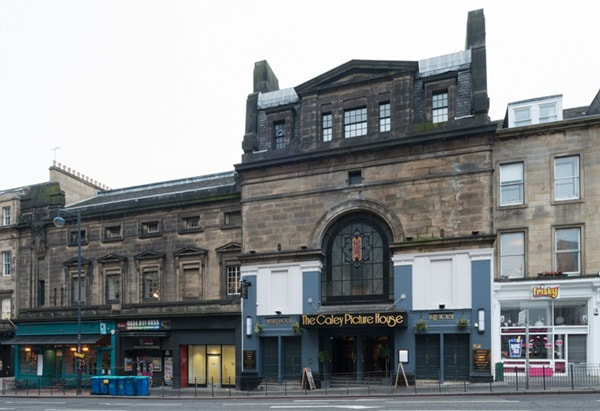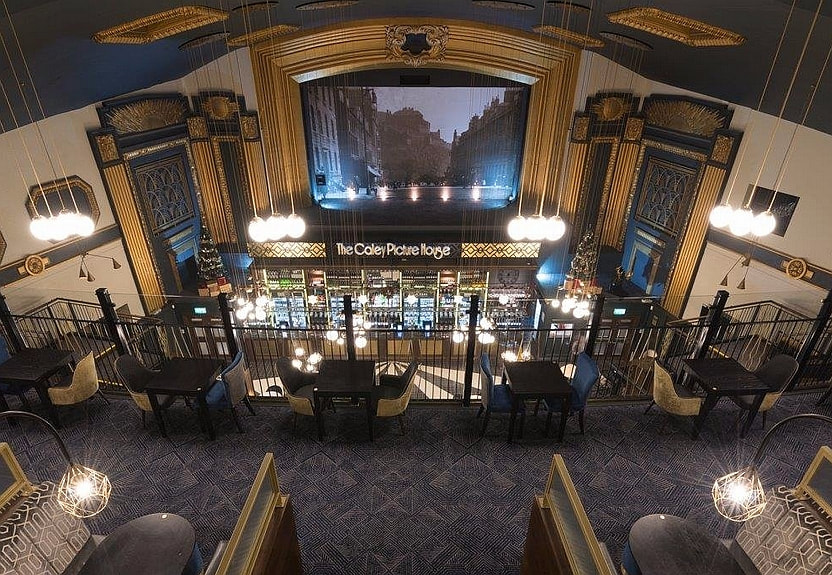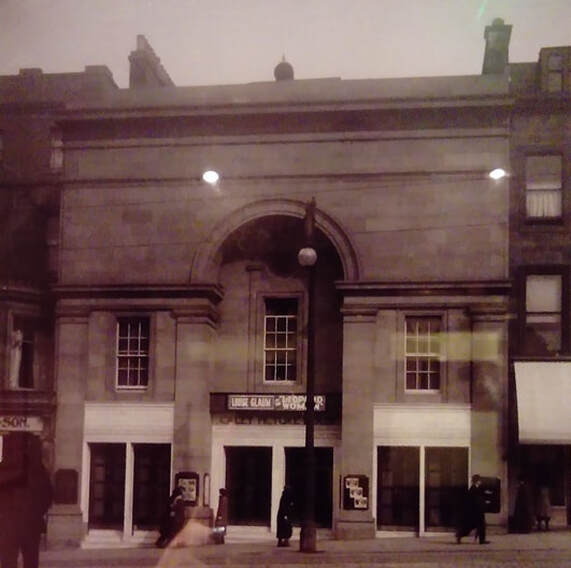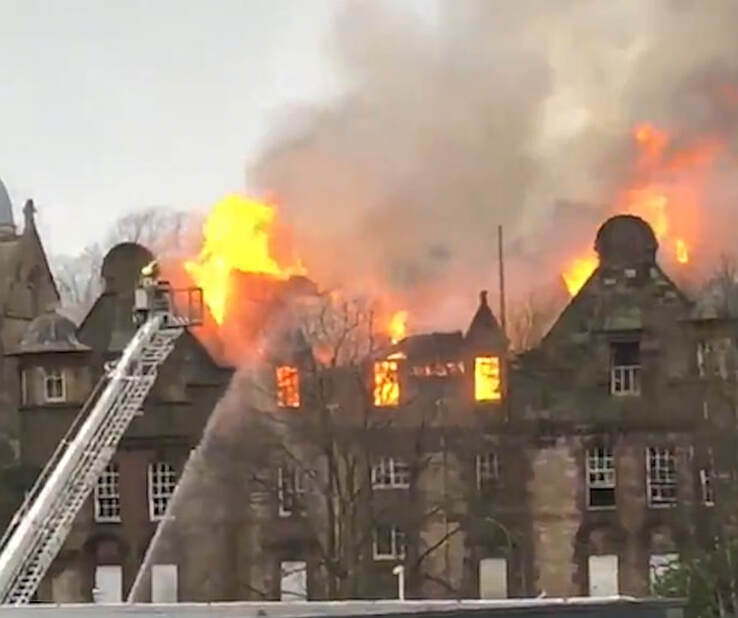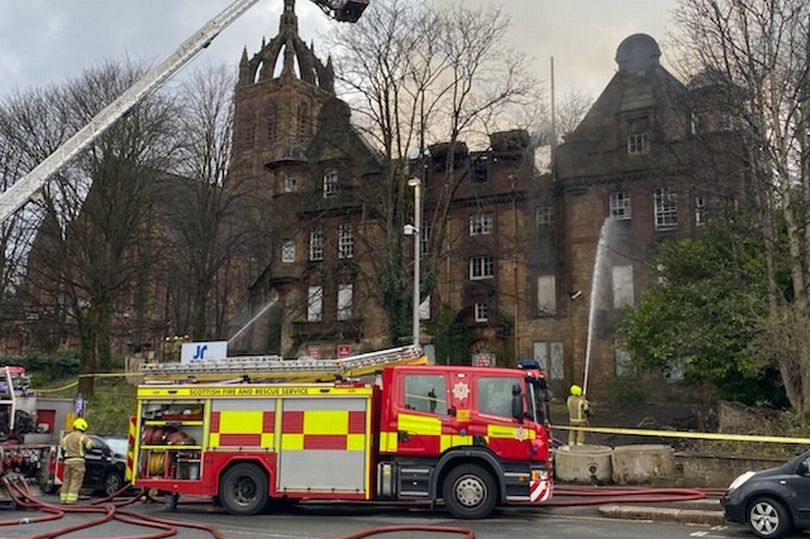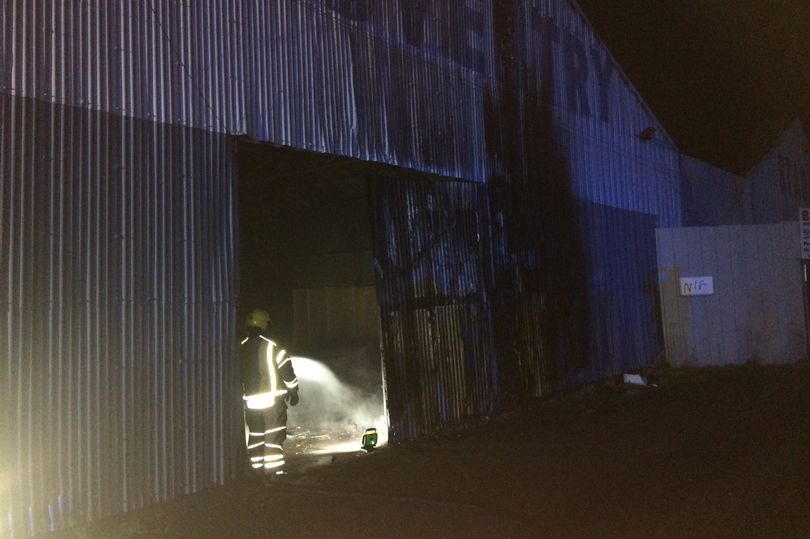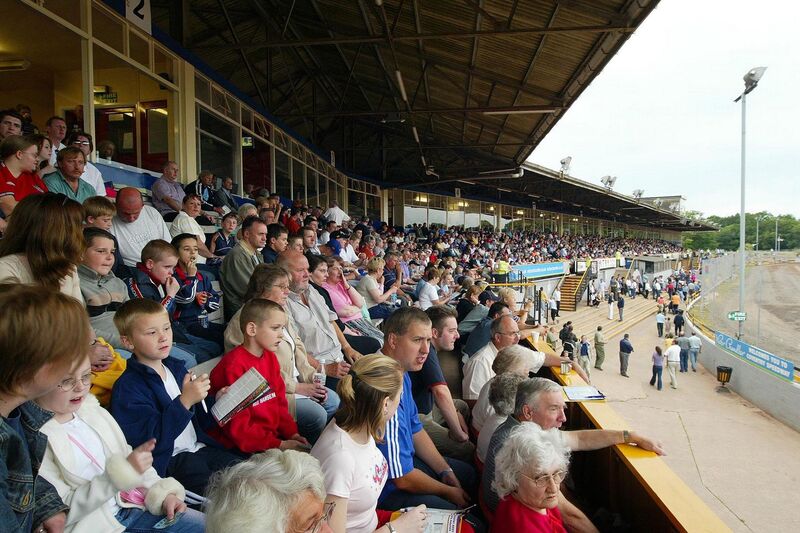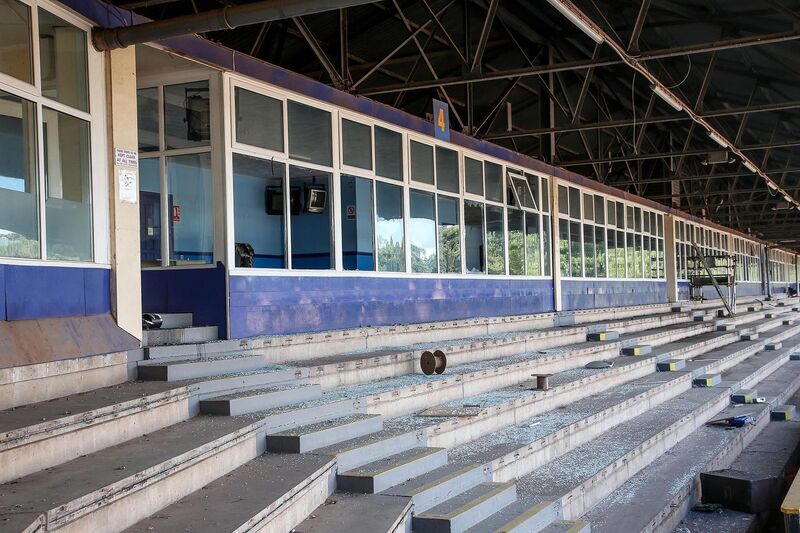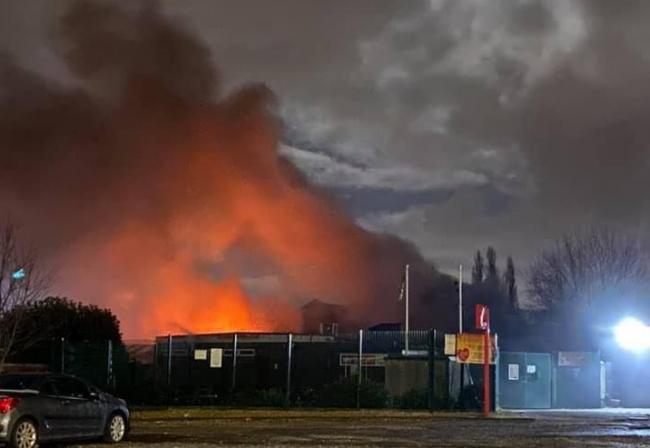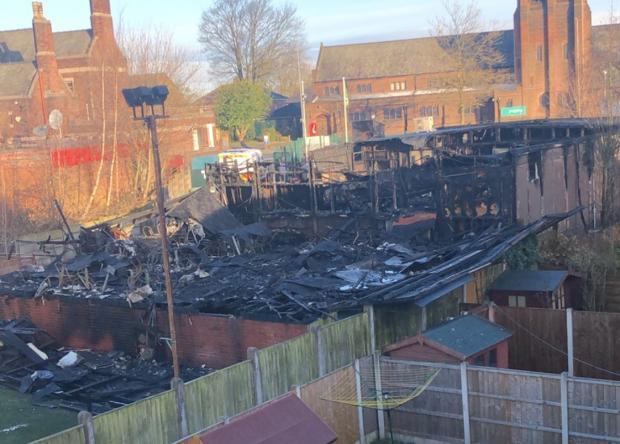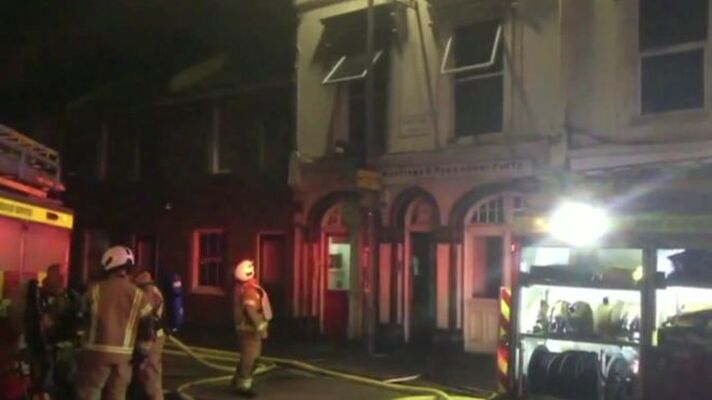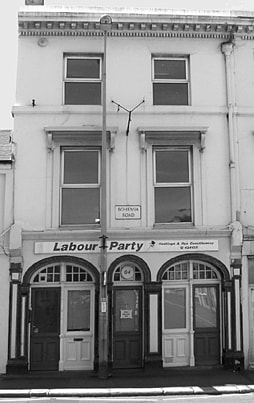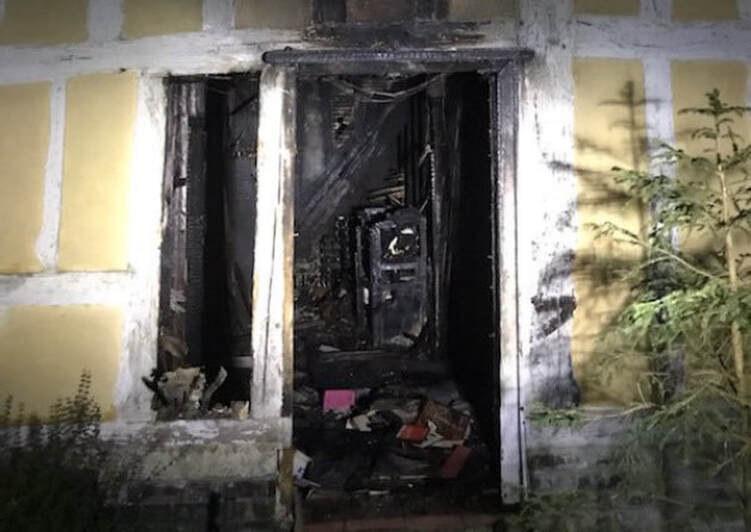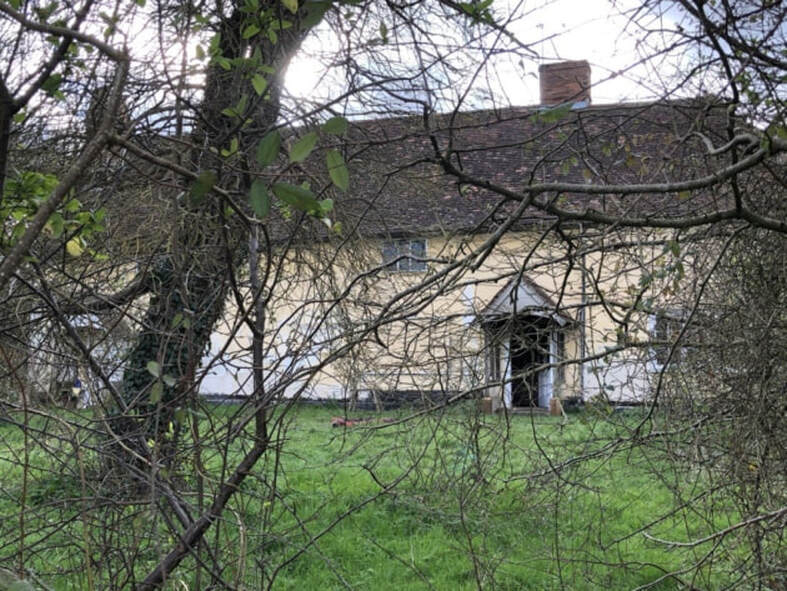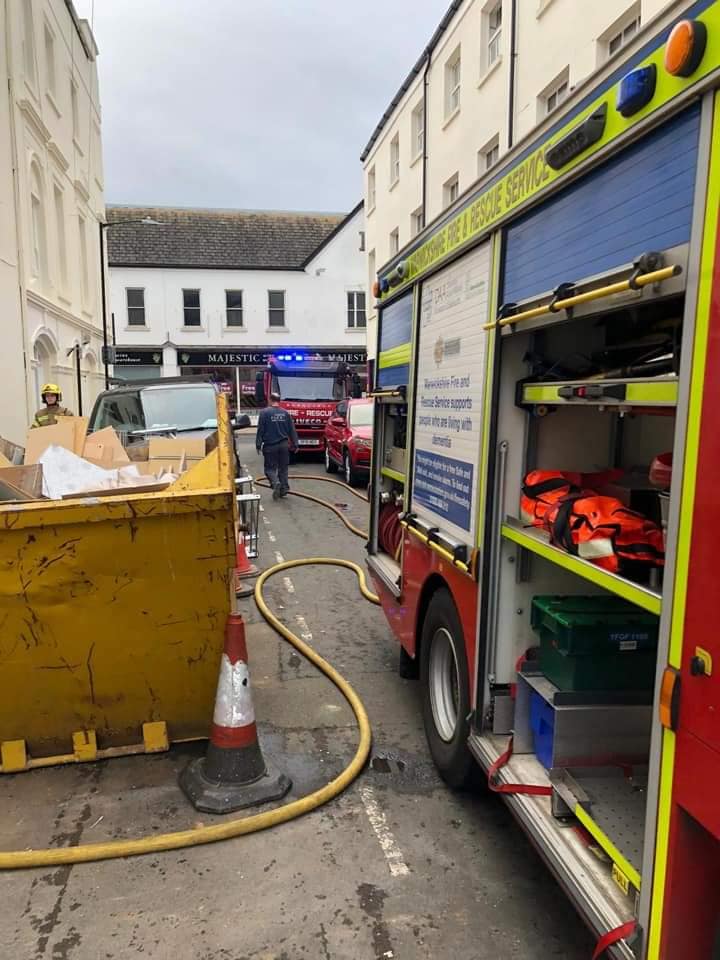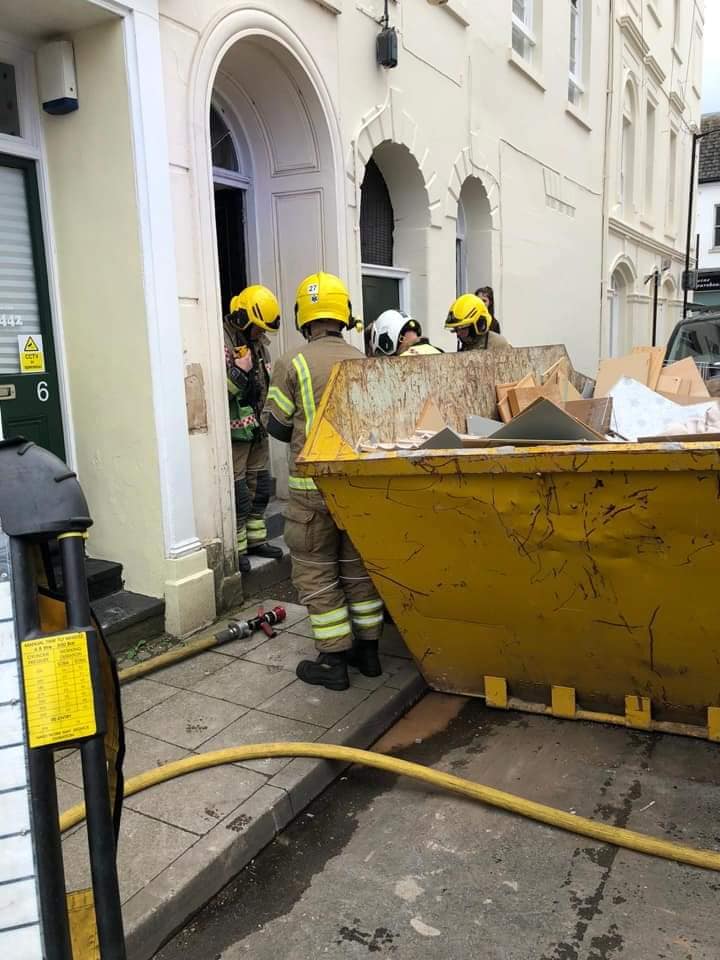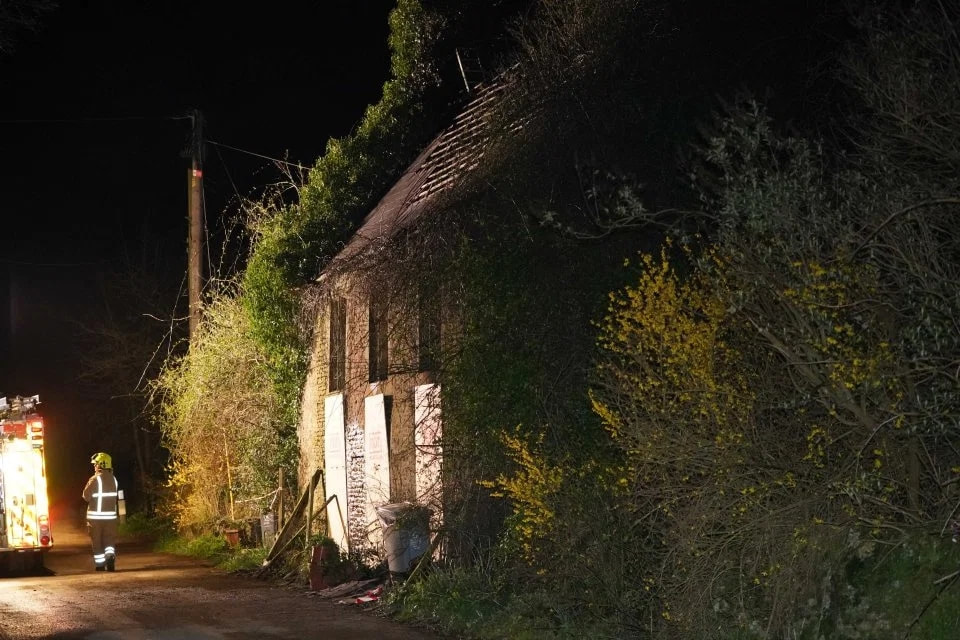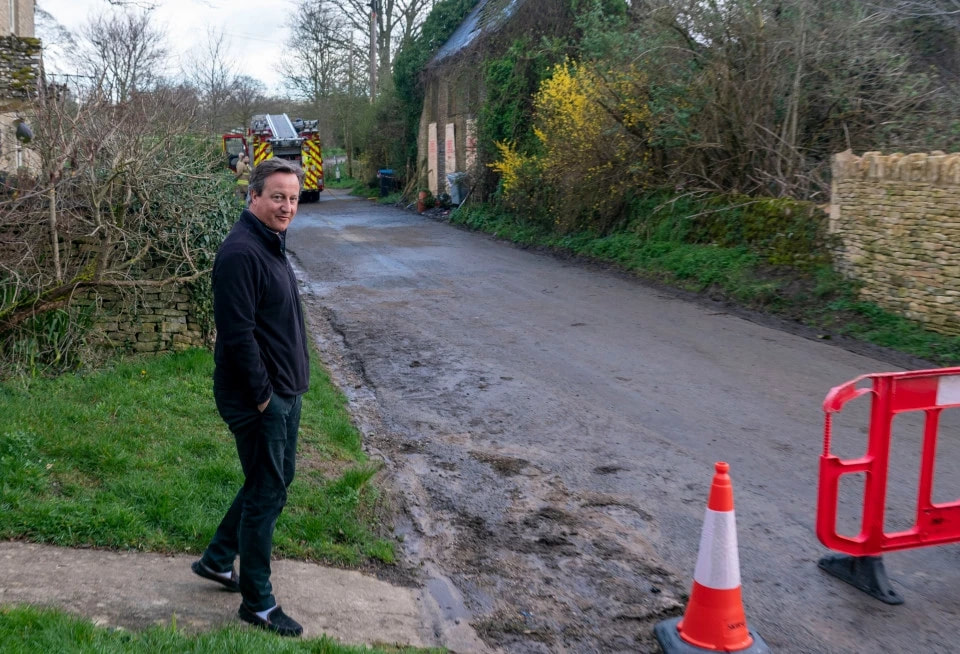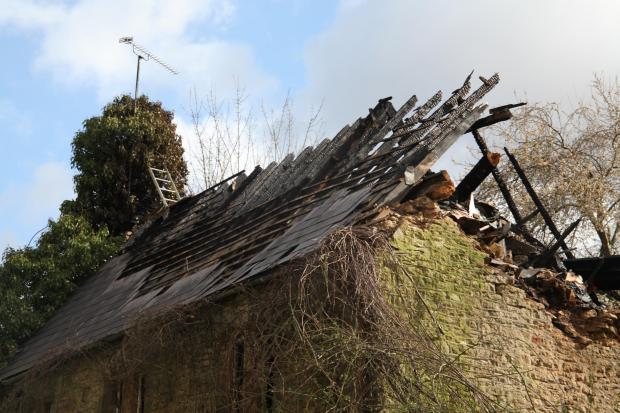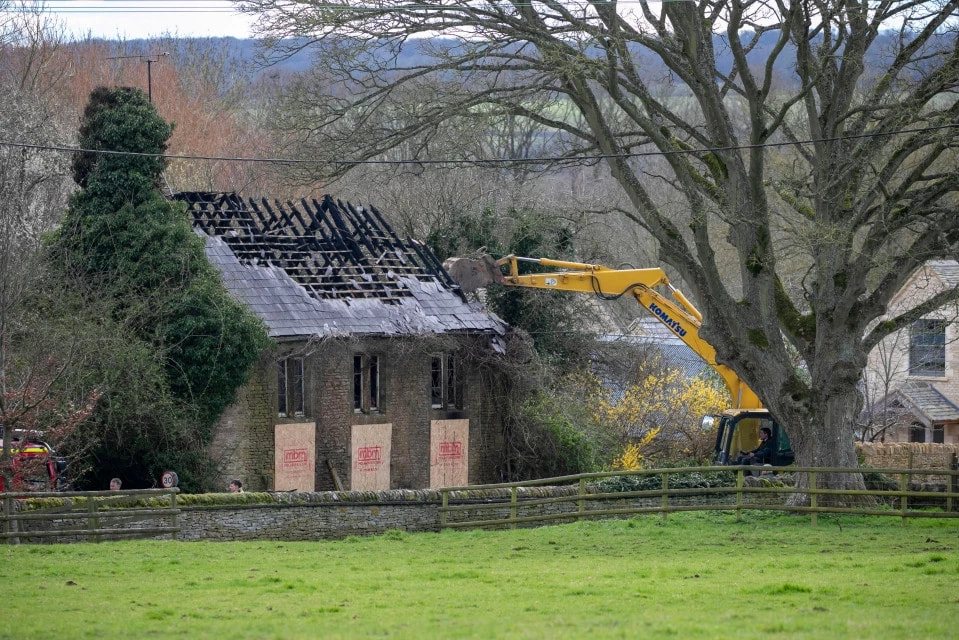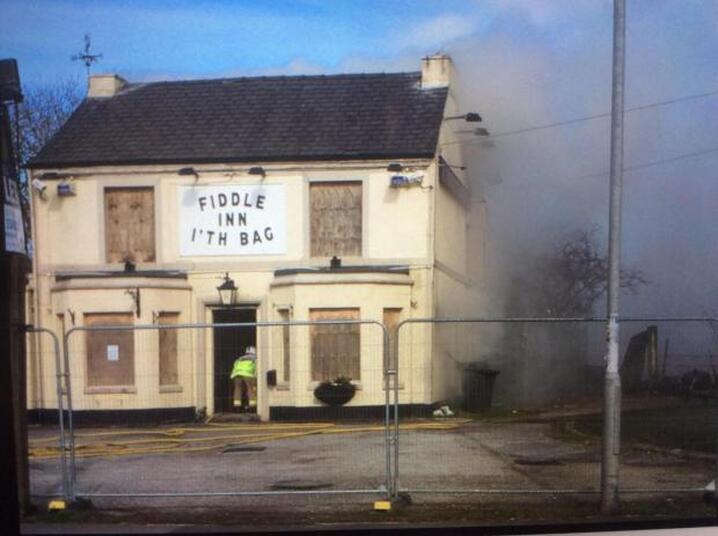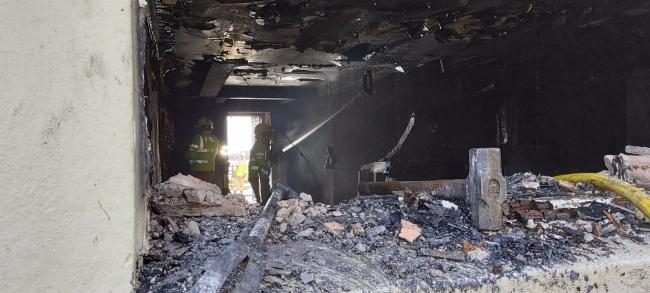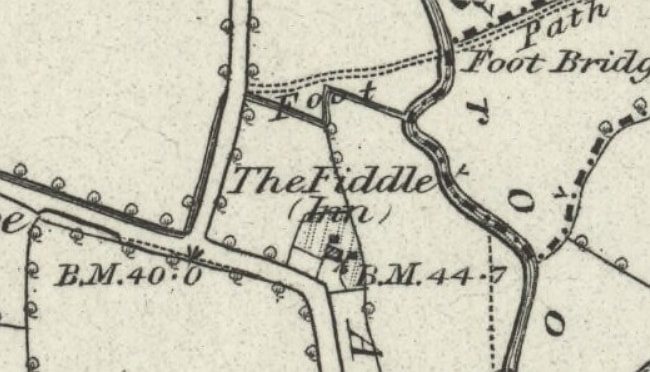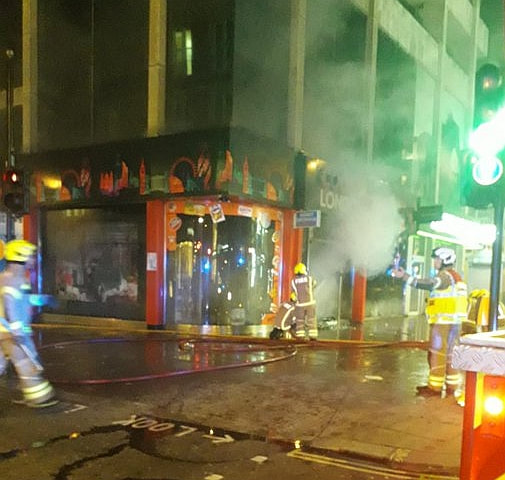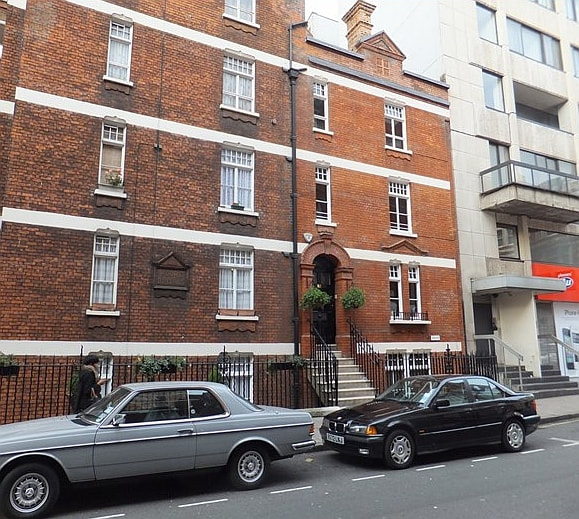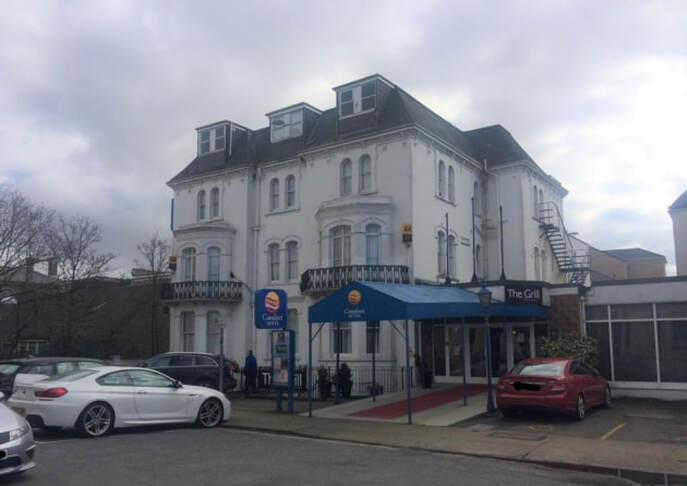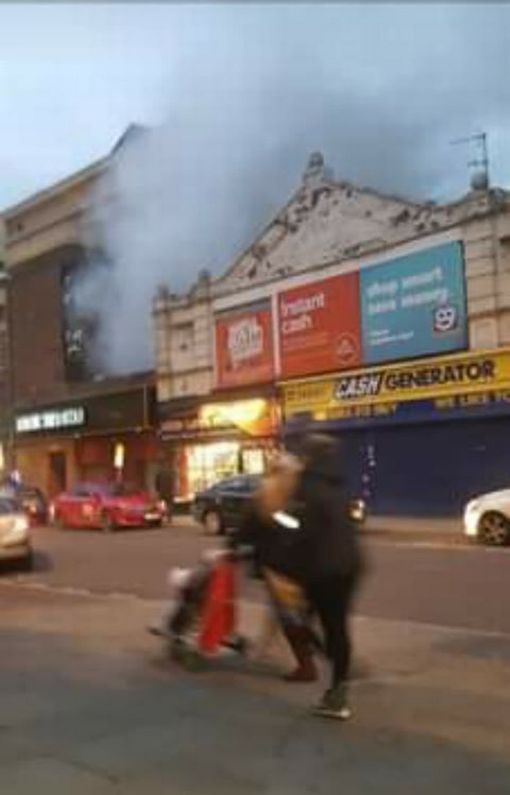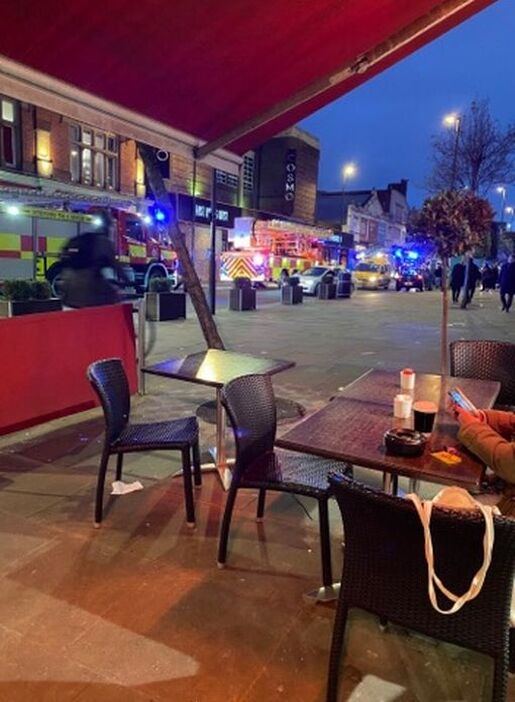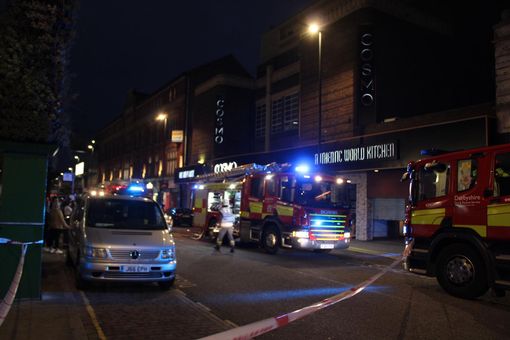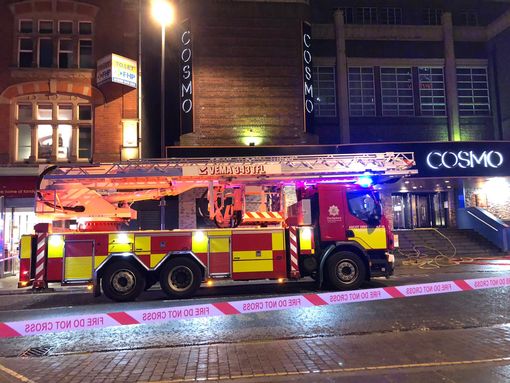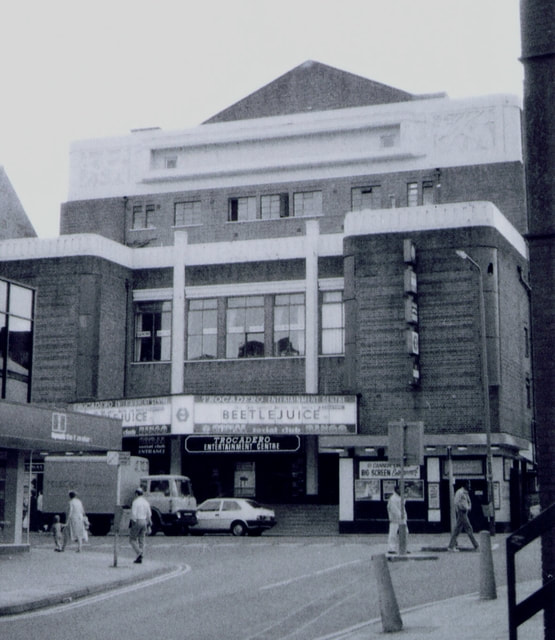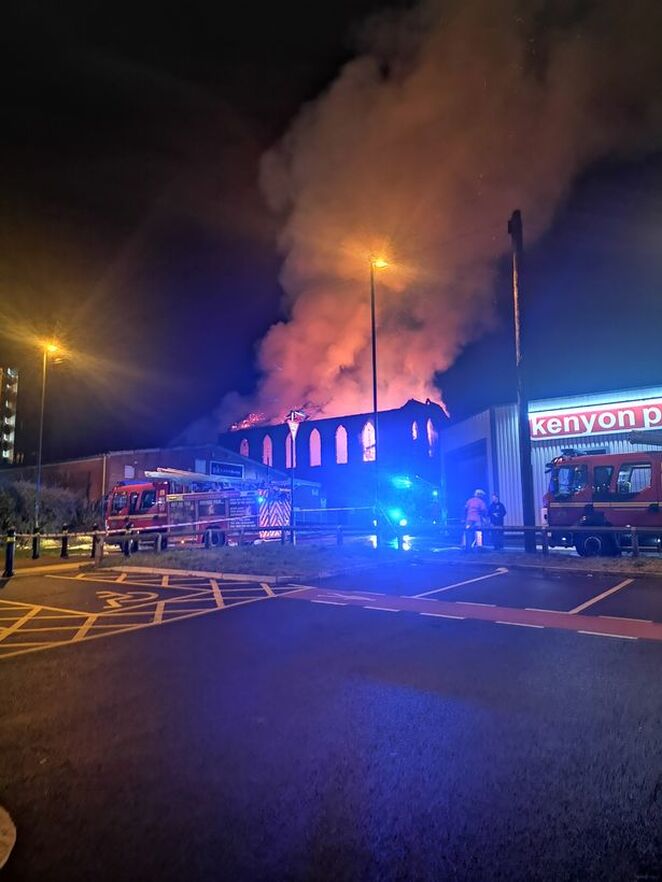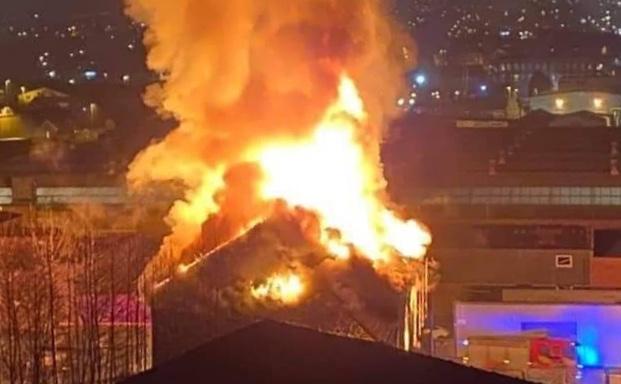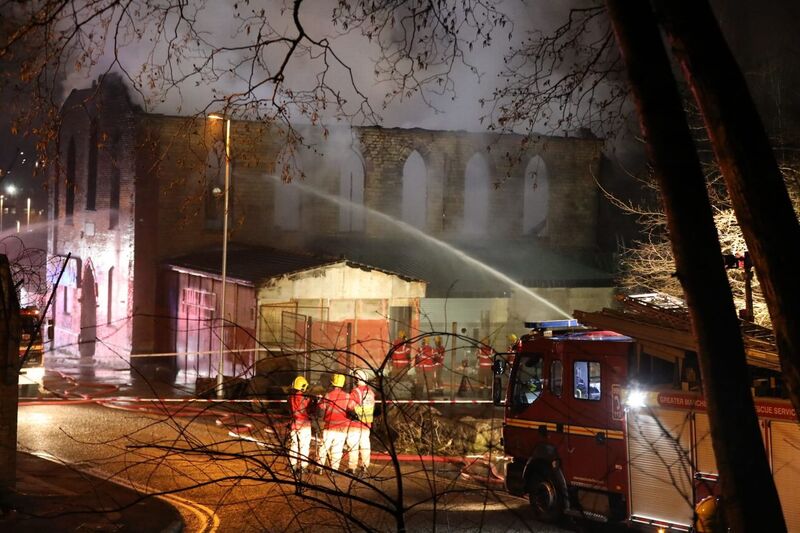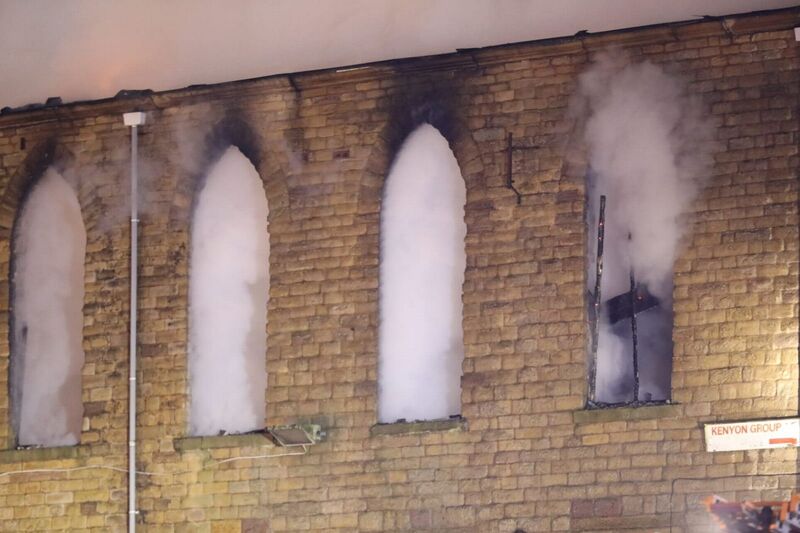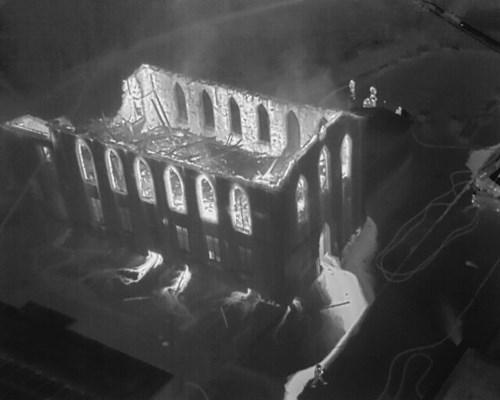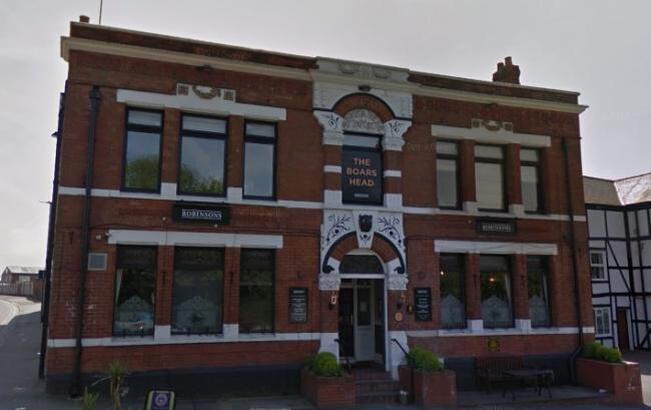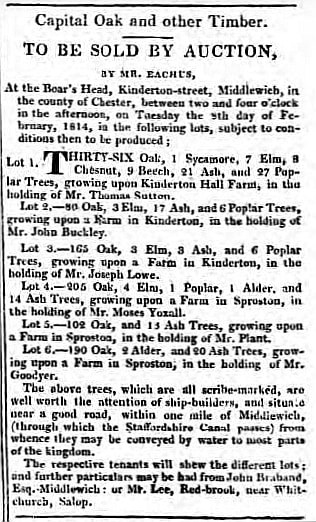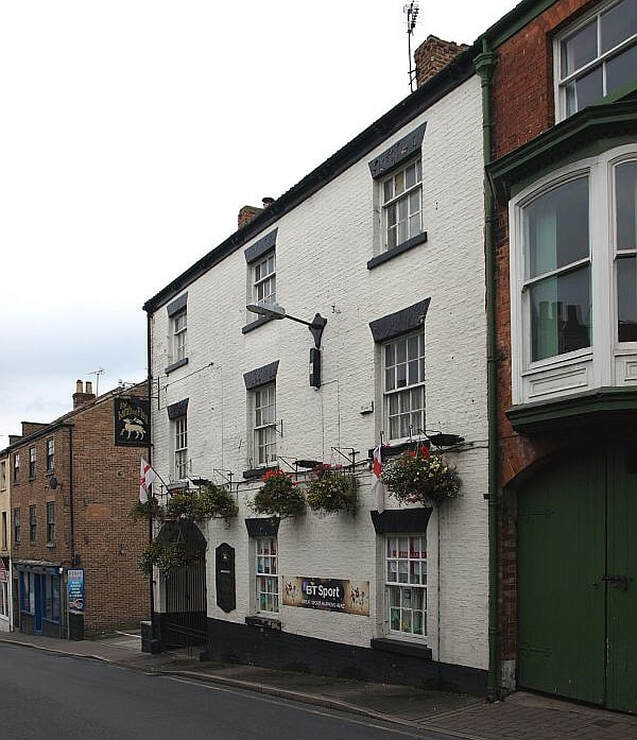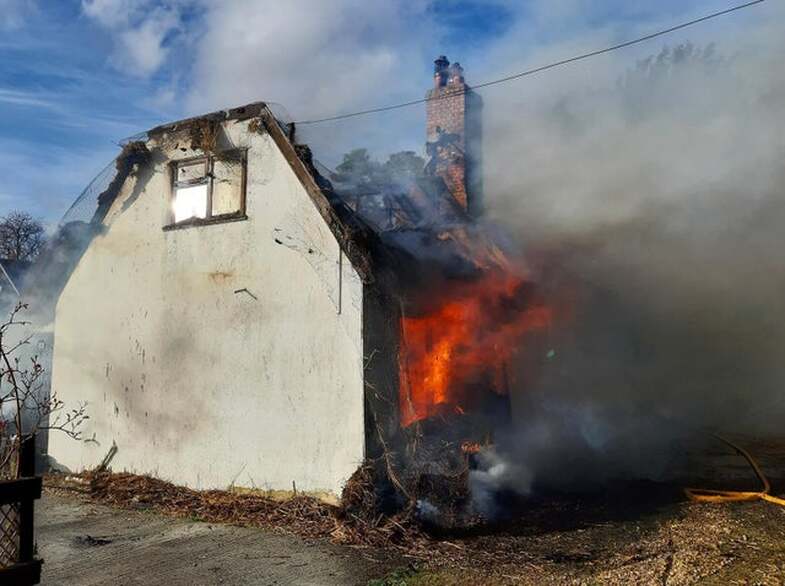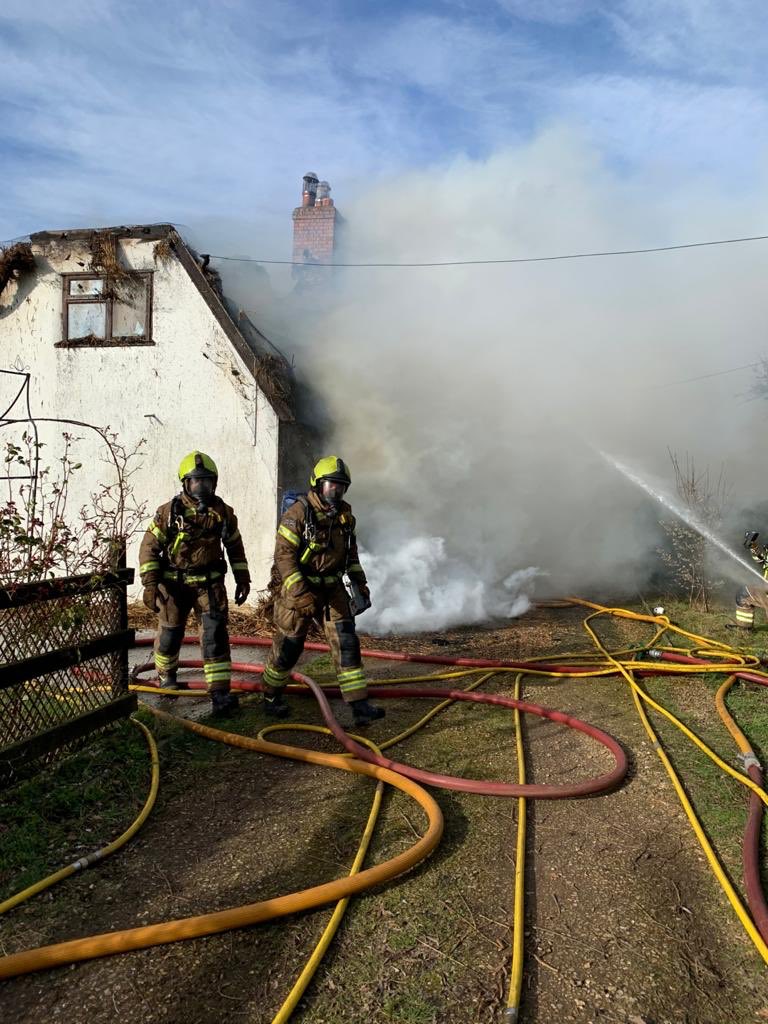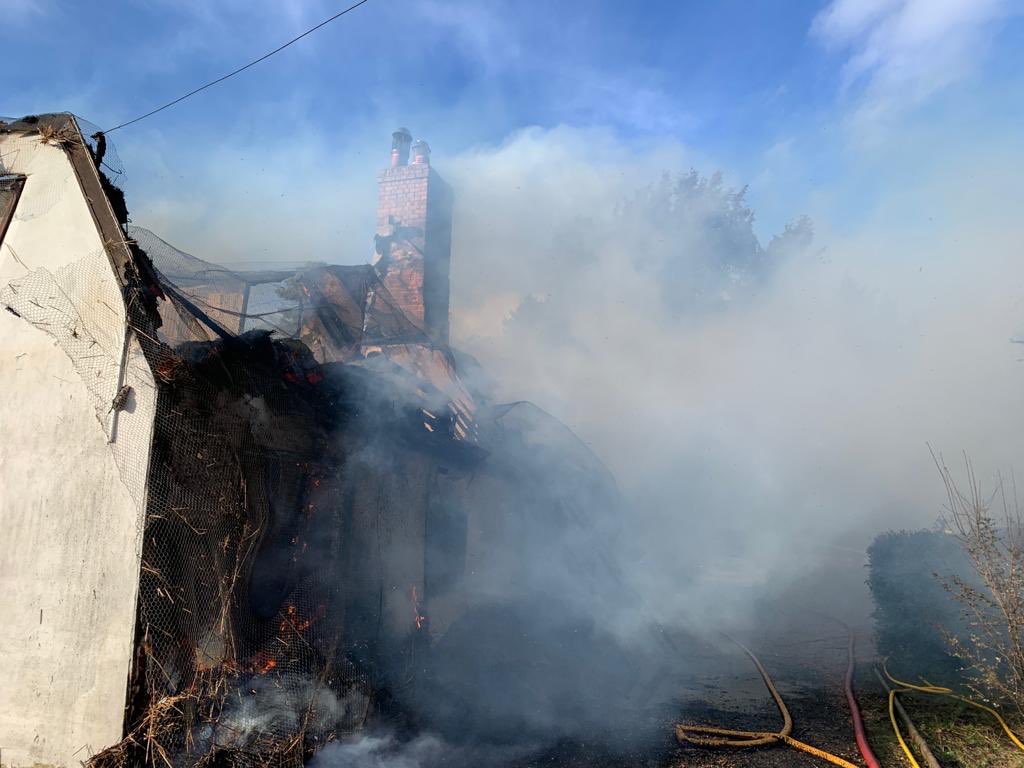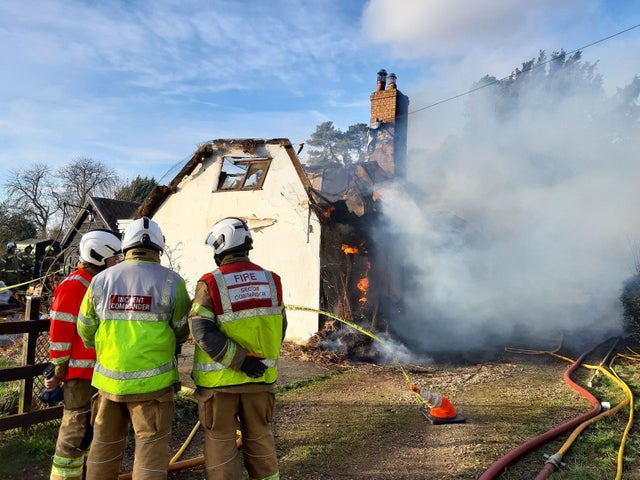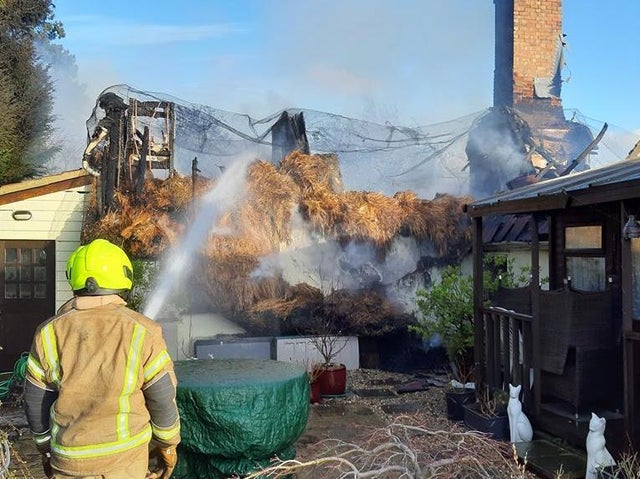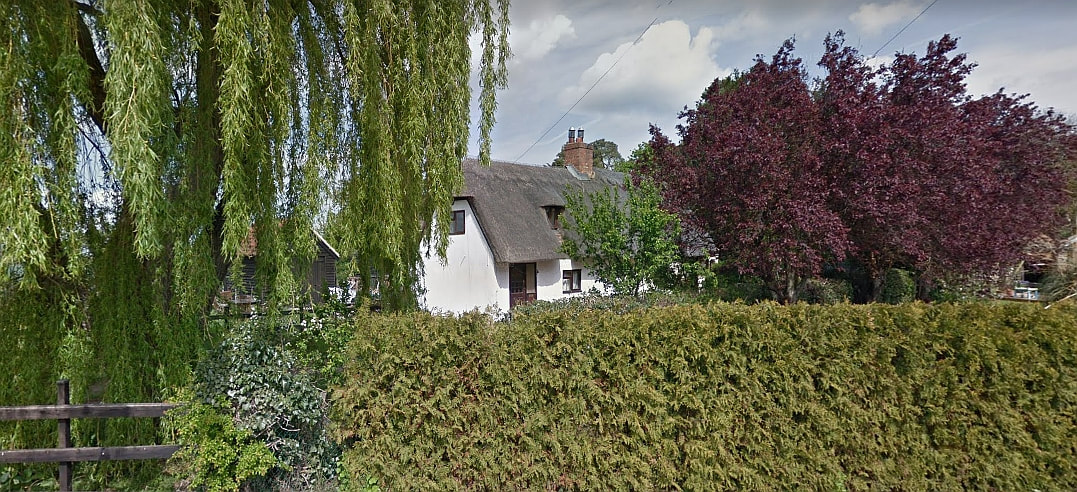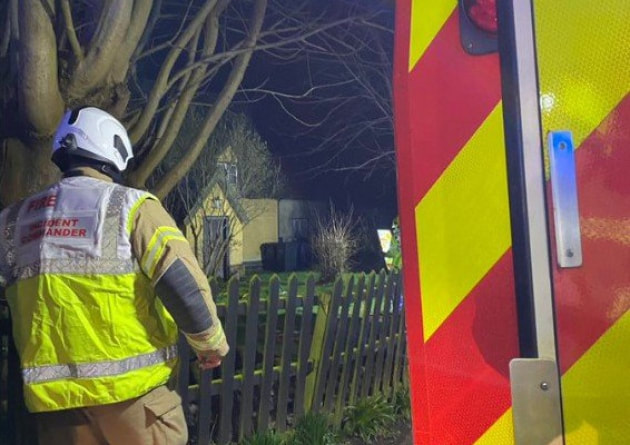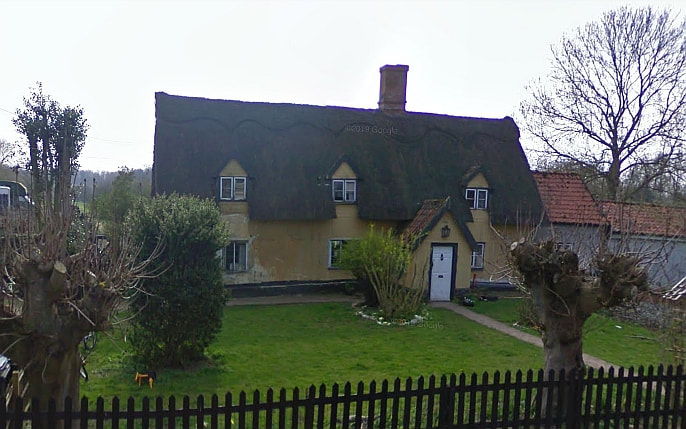86 Fires & 14 Near Misses in Heritage Buildings
Recorded on the Database in March & April 2020.
(A Fire is defined as an uncontrolled and unwanted burning event (including explosion) causing damage to a heritage building and/or contents by at least one of the following: flame, heat, smoke or blast)
(A Near Miss is defined as an event in a heritage building that had the potential to start a fire, or a fire adjacent to a heritage building that, without intervention, could have spread to that building)
* on the incident time indicates only the approximate time of the incident is known
Recorded on the Database in March & April 2020.
(A Fire is defined as an uncontrolled and unwanted burning event (including explosion) causing damage to a heritage building and/or contents by at least one of the following: flame, heat, smoke or blast)
(A Near Miss is defined as an event in a heritage building that had the potential to start a fire, or a fire adjacent to a heritage building that, without intervention, could have spread to that building)
* on the incident time indicates only the approximate time of the incident is known
hOME / About / Places of Worship / Heritage Buildings / Domestic listed properties / Country estates / grant /CONTACT US / Fires
Subscribe to our newsletter
Our Newsletter is out now with articles on all things related to fires, fire prevention, protection and restoration of heritage buildings - See this and our previous Newsletters HERE. "Our Heritage Under Fire" brings interesting, informative and enlightening news and comment for everyone who has an interest in the protection of the UKs built heritage.
Subscribe by clicking the button below to be added to our mailing list. Don't miss an issue.
You are signing up only to receive our newsletter, we will not use your contact details, nor pass them on to third parties, for any other purpose.
You may unsubscribe from the list at any time.
Subscribe by clicking the button below to be added to our mailing list. Don't miss an issue.
You are signing up only to receive our newsletter, we will not use your contact details, nor pass them on to third parties, for any other purpose.
You may unsubscribe from the list at any time.
“Shame on those who remain unmoved, whose pace fails to quicken, on entering one of these old habitations, a manor-house falling to wrack and ruin or a desecrated church!”
Petrus Borel, (1809 – 1859), French writer of the Romantic Period
Petrus Borel, (1809 – 1859), French writer of the Romantic Period
Click on the HEADLINE to expand the article.
Heritage & Ecclesiastical Fire Protection
Preventing Fire, Protecting Life, Preserving Heritage
Click HERE for Expert Specialist Fire Safety Risk Assessments for Historic and Listed Buildings
Preventing Fire, Protecting Life, Preserving Heritage
Click HERE for Expert Specialist Fire Safety Risk Assessments for Historic and Listed Buildings
Phone: 07840 351458 Email: hello@fireprotect.me.uk
April - 50 Fires & 8 Near Misses
30 April 2020 (18:15) Firefighters tackle blaze at Coventry pub
Firefighters were called to a Coventry pub last night after a blaze started in the chimney. Crews from Coventry and Binley fire stations were sent to tackle the flames after receiving a 999 call at around 6.15pm. Upon arrival, they found a fire within the chimney of The Humber pub, on Humber Road in Gosford Green. The hydraulic platform was used, raising firefighters above the property, and from there a hose was used to extinguish the flames.
A spokesman for West Midlands Fire Service said: "We received a 999 call at 6.15 yesterday to a property on Humber Road in Gosford Green. We sent a fire engine and a brigade response team from Binley station and a hydraulic platfrom from Coventry. The first team arrived on scene in four minutes. Officers arrived to a chimney fire in a two-storey public house which was put out using a hose jet on the hydraulic platform. The stop message was received at 7.46pm and fire crews carried out a re-visit to the property in the early hours of this morning to check there were no hot spots." Firefighters returned this morning (May 1) to check there were no hotspots.
The pub, originally known as the Humber Hotel, was established in around 1910.
News Source: Coventry Live
A spokesman for West Midlands Fire Service said: "We received a 999 call at 6.15 yesterday to a property on Humber Road in Gosford Green. We sent a fire engine and a brigade response team from Binley station and a hydraulic platfrom from Coventry. The first team arrived on scene in four minutes. Officers arrived to a chimney fire in a two-storey public house which was put out using a hose jet on the hydraulic platform. The stop message was received at 7.46pm and fire crews carried out a re-visit to the property in the early hours of this morning to check there were no hot spots." Firefighters returned this morning (May 1) to check there were no hotspots.
The pub, originally known as the Humber Hotel, was established in around 1910.
News Source: Coventry Live
30 April 2020 (04:26) - Firefighters tackle 'deliberately started' fire in four-storey Somerset property
Firefighters responded to reports from police of a fire in a building - which was deliberately started. Crews from Frome were sent to the four-storey property, in Selwood Road, Frome, at around 4.30am yesterday morning (April 30).
The log from the fire service reads: "We received a request from police to attend the above location to reports of smoke in a building with the alarms sounding. Two fire engines from Frome attended. On arrival, crews confirmed there was smoke in the communal stairwell of a property and the alarms were sounding. All persons were confirmed as accounted for. This was a building consisting of four floors, measuring approximately 70m by 70m and used as multiple flats. The fire was confirmed as being in the communal stairwell. 1 hose reel jet was used. The fire caused fire and smoke damage to the area. The cause was deliberate." An investigation is now underway.
The fire was at the former Selwood Printing Works, a remarkable industrial building built between 1866 and 1870, and now converted to apartments. Surprisingly it is not a listed building.
News Source: Somerset Live
The log from the fire service reads: "We received a request from police to attend the above location to reports of smoke in a building with the alarms sounding. Two fire engines from Frome attended. On arrival, crews confirmed there was smoke in the communal stairwell of a property and the alarms were sounding. All persons were confirmed as accounted for. This was a building consisting of four floors, measuring approximately 70m by 70m and used as multiple flats. The fire was confirmed as being in the communal stairwell. 1 hose reel jet was used. The fire caused fire and smoke damage to the area. The cause was deliberate." An investigation is now underway.
The fire was at the former Selwood Printing Works, a remarkable industrial building built between 1866 and 1870, and now converted to apartments. Surprisingly it is not a listed building.
News Source: Somerset Live
29 April 2020 (19:17) - Fire service combat blaze at Perth takeaway
Fire fighters raced to Perth city centre this evening to tackle chip pan fire in a takeaway.The fire service sent two appliances to the scene at Crunch Munch, South Street, after getting a call at 7.17pm. The flames were contained within the shop and the damage was said to be minimal. The fire crew quickly beat the blaze and left the scene at around 8.23pm. A nearby resident, who asked not to be named, said: “My father was told to stay inside unless the smoke alarms inside went off or it became too smoky. The firefighters on the scene said that it was a fryer that had caught on fire.”
Crunch Munch is at No 170 South Street and is part of a Category C listed building, (downgraded in 2009 from category B), extending across Nos. 170 – 178. The building is a good example of a former Wesleyan Methodist Chapel and meeting hall that was built in 1814 - 1816. It former use can clearly be seen from the gothic windows at 2nd floor level. It lies within the Perth Central Conservation Area.
News Source: The Courier
Crunch Munch is at No 170 South Street and is part of a Category C listed building, (downgraded in 2009 from category B), extending across Nos. 170 – 178. The building is a good example of a former Wesleyan Methodist Chapel and meeting hall that was built in 1814 - 1816. It former use can clearly be seen from the gothic windows at 2nd floor level. It lies within the Perth Central Conservation Area.
News Source: The Courier
Listing Details
|
Entry Name: 170-178 (Even Nos) South Street, Former Wesleyan Chapel
Listing Date: 26 August 1977 Category: C Source: Historic Scotland Source ID: 384946 Historic Scotland Designation Reference: LB39316 Building Class: Cultural Location: Perth County: Perth and Kinross Town: Perth Electoral Ward: Perth City Centre Traditional County: Perthshire |
Coordinates
Latitude: 56.3951 / 56°23'42"N Longitude: -3.4326 / 3°25'57"W OS Eastings: 311662 OS Northings: 723455 OS Grid: NO116234 Mapcode National: GBR 1Z.12SD Mapcode Global: WH6QC.7JNB |
29 April 2020 (19:07) - A Blaze rips through Alderley Edge home as 14 fire engines scramble to scene.
A major blaze ripped through a Cheshire home last night as 14 fire engines scrambled to the scene. Cheshire Fire and Rescue Service were called to Alderley Edge shortly after 7pm on Wednesday (April 29) to reports of a house fire. When crews arrived they discovered that the blaze had taken hold of the roof on the Trafford Road property. Firefighters from across Cheshire and Greater Manchester worked through the night to dampen the blaze at the four-storey detached home. Thankfully, everyone was accounted for.
The following fire engines attended - one from Wilmslow, two from Macclesfield, one from Poynton, one from Knutsford, one from Congleton, one from Middlewich, one from Holmes Chapel, one from Alsager, one from Penketh, one from Audlem, one from Stockport and two from Manchester - as have aerial ladder platforms from Macclesfield and Lymm, a breathing apparatus unit from Crewe and a van from Audlem.
A section of the road from Macclesfield to Alderley Edge was closed as firefighters worked at the scene. A water supply was set up, utilising a swimming pool, and the gas and electricity supplies to the property were also isolated. Two firefighters wearing breathing apparatus were the first to fight the fire, using a hose reel jet. A covering jet was also set up and two further firefighters wearing breathing apparatus entered the property.
A Cheshire Fire and Rescue spokesperson said: "Due to the scale of the fire, which involved the vast majority of the roof, inner and outer cordons were set up and the firefighting operation was split into four sections. Three main jets were used to fight the fire from outside. Aerial ladder platforms enabled firefighters to fight the fire from above. Firefighters also utilised handheld jets and light portable pumps in dealing with the fire." The roof was stripped back and hotspots were exposed. At the height of the fire, an aerial ladder platform and a breathing apparatus unit were in attendance. There is now just one fire engine in attendance. The water supply to the property has been isolated this morning and firefighters are currently inspecting the building and looking for hotspots. An investigation into the cause of the fire has begun.
The house, known as Netherfield, is a Victorian Villa, built in the 1850’s along with two others along Trafford Road. At the time they were known as “Osborne Grove” (now Netherfield), Osborne House (now Brampton House, owned by Ex Manchester United player, Mark Hughes), and “Osborne Villa” (no longer exists). Netherfield lies within the Alderley Edge Conservation Area.
News Source: Cheshire Live
The following fire engines attended - one from Wilmslow, two from Macclesfield, one from Poynton, one from Knutsford, one from Congleton, one from Middlewich, one from Holmes Chapel, one from Alsager, one from Penketh, one from Audlem, one from Stockport and two from Manchester - as have aerial ladder platforms from Macclesfield and Lymm, a breathing apparatus unit from Crewe and a van from Audlem.
A section of the road from Macclesfield to Alderley Edge was closed as firefighters worked at the scene. A water supply was set up, utilising a swimming pool, and the gas and electricity supplies to the property were also isolated. Two firefighters wearing breathing apparatus were the first to fight the fire, using a hose reel jet. A covering jet was also set up and two further firefighters wearing breathing apparatus entered the property.
A Cheshire Fire and Rescue spokesperson said: "Due to the scale of the fire, which involved the vast majority of the roof, inner and outer cordons were set up and the firefighting operation was split into four sections. Three main jets were used to fight the fire from outside. Aerial ladder platforms enabled firefighters to fight the fire from above. Firefighters also utilised handheld jets and light portable pumps in dealing with the fire." The roof was stripped back and hotspots were exposed. At the height of the fire, an aerial ladder platform and a breathing apparatus unit were in attendance. There is now just one fire engine in attendance. The water supply to the property has been isolated this morning and firefighters are currently inspecting the building and looking for hotspots. An investigation into the cause of the fire has begun.
The house, known as Netherfield, is a Victorian Villa, built in the 1850’s along with two others along Trafford Road. At the time they were known as “Osborne Grove” (now Netherfield), Osborne House (now Brampton House, owned by Ex Manchester United player, Mark Hughes), and “Osborne Villa” (no longer exists). Netherfield lies within the Alderley Edge Conservation Area.
News Source: Cheshire Live
Near Miss
29 April 2020 (18:50) - Police close road as fire tears through garages
29 April 2020 (18:50) - Police close road as fire tears through garages
Police closed a road in Goole after a fire broke out at a garage. Humberside Fire and Rescue Service say they were called to the scene of the blaze on Swinefleet Road just before 7pm on Wednesday, April 29. Firefighters could be seen putting out the blaze close to the Old Goole Working Men's Club in Swinefleet Road, close to Humber Street.
Flames could be seen from Swinefleet Road and plumes of thick, black smoke darkened the sky. An eyewitness said: "Police have closed the road. There are two fire engines here and the firefighters are putting it out. It looks to be the three garages near the industrial estate that are joined together. I'm not sure how it started but its the main road out of Goole that has been closed off." A spokeswoman for Humberside Fire and Rescue said: "We have two appliances at the scene. We got the call at around 18.50."
This is not the first time that there has been a fire close to the Old Goole Working Men's Club. On the 30th November last year a huge fire broke out at a warehouse adjacent to the club building. Police arrested two teenagers in relation to that arson.
The Old Goole Working Men’s Club, is a Victorian building, formerly known as Empson Villa, constructed between 1850 and 1860.
(See Building History on the 30 November 2019 entry).
News Source: Hull Live
Flames could be seen from Swinefleet Road and plumes of thick, black smoke darkened the sky. An eyewitness said: "Police have closed the road. There are two fire engines here and the firefighters are putting it out. It looks to be the three garages near the industrial estate that are joined together. I'm not sure how it started but its the main road out of Goole that has been closed off." A spokeswoman for Humberside Fire and Rescue said: "We have two appliances at the scene. We got the call at around 18.50."
This is not the first time that there has been a fire close to the Old Goole Working Men's Club. On the 30th November last year a huge fire broke out at a warehouse adjacent to the club building. Police arrested two teenagers in relation to that arson.
The Old Goole Working Men’s Club, is a Victorian building, formerly known as Empson Villa, constructed between 1850 and 1860.
(See Building History on the 30 November 2019 entry).
News Source: Hull Live
29 April 2020 (18:20) - Emergency services respond to flat fire in Whitchurch
Emergency services descended on Whitchurch on Wednesday evening, in response to a fire in the town centre. At 6.20pm Shropshire Fire and Rescue responded to a call of people trapped in a flat fire at a property in High Street.
Three crews were mobilised to tackle the fire from Prees and Whitchurch, with an operations officer also in attendance. Crews on the scene used breathing apparatus and hosereel jet to tackle the fire, which involved a small cooker. All people in the flat were accounted for and the building was ventilated. Also in attendance were West Mercia Police and the West Midlands Ambulance Service, although it is not yet known why the former were on the scene in such heavy numbers.
The fire was in a flat above Lornashouse, a Gift and Interiors retailer, which is within a Grade II listed early – mid 18th century town house. It lies within the Whitchurch Conservation Area.
News Source: Whitchurch Herald
Three crews were mobilised to tackle the fire from Prees and Whitchurch, with an operations officer also in attendance. Crews on the scene used breathing apparatus and hosereel jet to tackle the fire, which involved a small cooker. All people in the flat were accounted for and the building was ventilated. Also in attendance were West Mercia Police and the West Midlands Ambulance Service, although it is not yet known why the former were on the scene in such heavy numbers.
The fire was in a flat above Lornashouse, a Gift and Interiors retailer, which is within a Grade II listed early – mid 18th century town house. It lies within the Whitchurch Conservation Area.
News Source: Whitchurch Herald
|
Entry Name: 12, High Street
Listing Date: 1 March 1988 Grade: II Source: Historic England Source ID: 1366499 English Heritage Legacy ID: 260652 Location: Whitchurch Urban, Shropshire, SY13 County: Shropshire Civil Parish: Whitchurch Urban Built-Up Area: Whitchurch Traditional County: Shropshire Lieutenancy Area (Ceremonial County): Shropshire Church of England Parish: Whitchurch St Alkmund Church of England Diocese: Lichfield |
Coordinates
Latitude: 52.9691 / 52°58'8"N Longitude: -2.6836 / 2°41'1"W OS Eastings: 354184 OS Northings: 341520 OS Grid: SJ541415 Mapcode National: GBR 7L.JW3S Mapcode Global: WH89H.RM8P |
27 April 2020 (18:50) - Crews work through night to tackle fire at derelict Oswaldtwistle mill building
Firefighters worked overnight on Monday to ensure a blaze in a derelict mill could be brought under control. At around 7pm, residents living close to Oswaldtwistle Mills said they could see smoke coming from a building just off Rhyddings Street. Images and footage provided by a Lancashire Telegraph Camera Club member show the smoke escaping from the roof of the building, which they said was "well alight", before fire crews attended to tackle the blaze.
A spokesperson for the fire service said: "We were called around 6.50pm to a fire in a derelict mill building. On arrival we found bales of waste on fire within the mill. Luckily, because of the size of the building, the structure wasn't affected and the fire was contained to the bales of waste."
The Camera Club member said: "The building was well-alight and the fire could be seen coming out of the roof of one of the buildings. It's an old mill building and I think it's derelict because of all the holes in the roof. I was talking to one man and he said that it was coming out of both sides of the building. It's a real a shame to see a building like that on fire."
Four fire engines attended the incident, including the stinger from Blackburn fire station. Crews managed to get the blaze under control by around 10.30pm but firefighters remained at the scene until 2am on Tuesday to ensure there was no further spread. Subsequent checks on the building were carried out at 7am. No injuries were reported and the cause of the fire is under investigation.
The fire was is the former warehouse buildings of Rhyddings Mill. Watson Brothers founded and built the Mill in 1856. It was all part of a larger scale urban development consisting of employees' housing, speculative housing and the parish church. The cotton weaving mill was a successful business with 340 operatives in employment. In 1869, the business became Watson & Sons Limited and remained so until 1892, when it went into liquidation. The building was more recently used for light industrial purposes. The mill was gutted in a blaze, believed to be arson, on the 6th September 2010. The former Mill had been a Grade II listed site, however, the fire destroyed the weaving sheds and resulted in the demolition of the chimney and as a result the building was delisted by Historic England in August 2013. The Boiler house was demolished in 2017 as it was in a dangerous condition. However, the site remains a fundamental and significant part of the character of the Oswaldwistle Conservation Area, being intrinsically linked to its development, form and layout.
News Source: Lancashire Telegraph
A spokesperson for the fire service said: "We were called around 6.50pm to a fire in a derelict mill building. On arrival we found bales of waste on fire within the mill. Luckily, because of the size of the building, the structure wasn't affected and the fire was contained to the bales of waste."
The Camera Club member said: "The building was well-alight and the fire could be seen coming out of the roof of one of the buildings. It's an old mill building and I think it's derelict because of all the holes in the roof. I was talking to one man and he said that it was coming out of both sides of the building. It's a real a shame to see a building like that on fire."
Four fire engines attended the incident, including the stinger from Blackburn fire station. Crews managed to get the blaze under control by around 10.30pm but firefighters remained at the scene until 2am on Tuesday to ensure there was no further spread. Subsequent checks on the building were carried out at 7am. No injuries were reported and the cause of the fire is under investigation.
The fire was is the former warehouse buildings of Rhyddings Mill. Watson Brothers founded and built the Mill in 1856. It was all part of a larger scale urban development consisting of employees' housing, speculative housing and the parish church. The cotton weaving mill was a successful business with 340 operatives in employment. In 1869, the business became Watson & Sons Limited and remained so until 1892, when it went into liquidation. The building was more recently used for light industrial purposes. The mill was gutted in a blaze, believed to be arson, on the 6th September 2010. The former Mill had been a Grade II listed site, however, the fire destroyed the weaving sheds and resulted in the demolition of the chimney and as a result the building was delisted by Historic England in August 2013. The Boiler house was demolished in 2017 as it was in a dangerous condition. However, the site remains a fundamental and significant part of the character of the Oswaldwistle Conservation Area, being intrinsically linked to its development, form and layout.
News Source: Lancashire Telegraph
26 April 2020 (18:53) - Fire crews battle '30 foot high flames' as outhouse blaze threatens to engulf homes
Firefighters battled through the night after a huge blaze threatened to engulf a row of terraced houses. The fire broke out in an outbuilding in the rural hamlet of Red Lumb, Rochdale, just before 7pm on Sunday. Flames spread to the end home in a nearby row of three stone cottages. Pictures show the fierce blaze raging shortly before fire crews arrived. Witnesses say at its height flames were shooting 30ft into the air creating a huge plume of black smoke.
About 35 firefighters were called to the scene on Red Lumb Street near Norden. Several remained overnight dampening down 'hotspots'. It's not thought anyone was injured. But the outbuilding has been destroyed, while the terraced house has also been badly damaged. A neighbour, who asked not to be named, said: "My mum noticed a huge plume of smoke coming up from the village so we looked out the window and it was already burning some by then. I called the fire brigade to make sure they were aware of it. By the time the fire engines turned up at about 7pm it was absolutely raging. The flames must have been 30ft high. The fire brigade were there all night and there's still a couple of wagons here this morning spraying it down. There's a lot of buildings down there - there's a row of cottages next to an small holding and there must be 30 flats in the old mill. I just hope everybody's alright."
The cause of the fire is unknown at this stage. A spokesperson for Greater Manchester Fire and Rescue Service said: "We were called at 6.53pm. It was a fire that had began in an outbuilding and spread to the end terrace in a row of three. The outbuilding has been completely destroyed and the end terrace is quite badly damaged. But we managed to stop it spreading to the other houses. We remained at the scene through the night checking for hotspots and damping down."
The cottages were built as workers cottages for Red Lumb Mill. The mill and cottages are marked on the 1848 OS map as Red Lumb Mill (cotton). However, the village of Red Lumb that grew up around the mill was already well established by then, as a new Weslyan Methodist school was opened in the same year. In May 1969, almost the entire village - a shop and 21 stone cottages - was sold as a single lot at auction. The mill was converted into luxury flats in about 2005 and is now called "The Meadows".
News Source: Manchester Evening News
About 35 firefighters were called to the scene on Red Lumb Street near Norden. Several remained overnight dampening down 'hotspots'. It's not thought anyone was injured. But the outbuilding has been destroyed, while the terraced house has also been badly damaged. A neighbour, who asked not to be named, said: "My mum noticed a huge plume of smoke coming up from the village so we looked out the window and it was already burning some by then. I called the fire brigade to make sure they were aware of it. By the time the fire engines turned up at about 7pm it was absolutely raging. The flames must have been 30ft high. The fire brigade were there all night and there's still a couple of wagons here this morning spraying it down. There's a lot of buildings down there - there's a row of cottages next to an small holding and there must be 30 flats in the old mill. I just hope everybody's alright."
The cause of the fire is unknown at this stage. A spokesperson for Greater Manchester Fire and Rescue Service said: "We were called at 6.53pm. It was a fire that had began in an outbuilding and spread to the end terrace in a row of three. The outbuilding has been completely destroyed and the end terrace is quite badly damaged. But we managed to stop it spreading to the other houses. We remained at the scene through the night checking for hotspots and damping down."
The cottages were built as workers cottages for Red Lumb Mill. The mill and cottages are marked on the 1848 OS map as Red Lumb Mill (cotton). However, the village of Red Lumb that grew up around the mill was already well established by then, as a new Weslyan Methodist school was opened in the same year. In May 1969, almost the entire village - a shop and 21 stone cottages - was sold as a single lot at auction. The mill was converted into luxury flats in about 2005 and is now called "The Meadows".
News Source: Manchester Evening News
Near Miss
26 April 2020 (14:45) - Washing machine fire sparks call out to Sandown
26 April 2020 (14:45) - Washing machine fire sparks call out to Sandown
Firefighters from Sandown, Shanklin and Ryde have been called to a commercial property in Sandown this afternoon (Sunday) following reports of a washing machine fire. Two pumping appliances and an aerial ladder platform were mobilised to Claremont House (hotel) on Leed Street at around 14:45. The incident has been quickly scaled back with Shanklin’s appliance and Ryde’s aerial ladder already returning to station. Sandown’s retained firefighters are now using positive pressure ventilation to clear smoke from the building having removed the household appliance. The Isle of Wight Ambulance Service mobilised an Ambulance crew to the scene but they have now been released from the incident. Paramedics checked over the occupants of the property but they did not need any further treatment.
UPDATE – It has been confirmed that the appliance was smoking, but was not on fire.
Although it lies just outside the boundary of the Sandown Conservation Area, the Victorian building is mentioned in the Appraisal as a "particularly notable building".
News Report: Island Echo
UPDATE – It has been confirmed that the appliance was smoking, but was not on fire.
Although it lies just outside the boundary of the Sandown Conservation Area, the Victorian building is mentioned in the Appraisal as a "particularly notable building".
News Report: Island Echo
Near Miss
26 April 2020 (09:55*) - Fire engines called to Salford street after bin fire near homes
26 April 2020 (09:55*) - Fire engines called to Salford street after bin fire near homes
Firefighters were called to an apartment block in Salford after a blaze started inside a bin. Residents spotted two fire engines at Vimto Gardens, in Chapel Street, just before 10am this morning (Sunday). The fire was quickly extinguished by crews from Salford Community Fire Station who were at the scene for less than an hour. A spokesman from the station confirmed that the fire was contained in one bin which was located in a store in a car park below the apartments. Nobody was injured.
The fire was at the rear of the landmark building, The Bell Tower, formerly a pub built in 1901.
News Source: Manchester Evening News
The fire was at the rear of the landmark building, The Bell Tower, formerly a pub built in 1901.
News Source: Manchester Evening News
Building History
(Researched by Heritage & Ecclesiastical Fire Protection)
The Bell Tower was formerly a public house, and the OS map of Manchester and Salford for 1844 shows that there was a pub on this site at that time although this was called "The Angel Inn". The present building was built in 1901. It closed in the 1980s, but was then reopened in 1987 as a hotel. This, in turn, closed in 1998.
It had been closed for a number of years prior to the majority of pub being demolished in 2013. The facade of the building and the distinctive bell tower (cupola) were retained to ensure the character of the historic street remained as part of the new development of apartments called 'Vimto Gardens' - after the locally originated and still popular fruit cordial.
In 1908, a northerner called Noel John Nichols loaned £100 from his family to set up a business as a wholesale druggist and herb importer. As a Teetotaller, Nichols' aim was to create a special non-alcoholic drink. He experimented with all the different herbs and spices and eventually created Vimto in a wooden barrel in his warehouse. They bottled and delivered the cordial at night and took orders by day on bicycles.
Initially called 'Vim Tonic', it was intended as a healthy pick-me-up cordial, which would give energy, vim and vigour to those who drank it. It was soon being sold in the local bars as an alternative to the 'evils' of alcohol. Its success was based on the secret formula, which has remained unchanged for a century. Just 2 years later, due to the continuing success, Nichols moved to new premises on Chapel Street in Salford, where the excellent rail, canal and road connections bode well for quick and easy distribution. The Vimto site was just metres from the Vimto Gardens development.
(Researched by Heritage & Ecclesiastical Fire Protection)
The Bell Tower was formerly a public house, and the OS map of Manchester and Salford for 1844 shows that there was a pub on this site at that time although this was called "The Angel Inn". The present building was built in 1901. It closed in the 1980s, but was then reopened in 1987 as a hotel. This, in turn, closed in 1998.
It had been closed for a number of years prior to the majority of pub being demolished in 2013. The facade of the building and the distinctive bell tower (cupola) were retained to ensure the character of the historic street remained as part of the new development of apartments called 'Vimto Gardens' - after the locally originated and still popular fruit cordial.
In 1908, a northerner called Noel John Nichols loaned £100 from his family to set up a business as a wholesale druggist and herb importer. As a Teetotaller, Nichols' aim was to create a special non-alcoholic drink. He experimented with all the different herbs and spices and eventually created Vimto in a wooden barrel in his warehouse. They bottled and delivered the cordial at night and took orders by day on bicycles.
Initially called 'Vim Tonic', it was intended as a healthy pick-me-up cordial, which would give energy, vim and vigour to those who drank it. It was soon being sold in the local bars as an alternative to the 'evils' of alcohol. Its success was based on the secret formula, which has remained unchanged for a century. Just 2 years later, due to the continuing success, Nichols moved to new premises on Chapel Street in Salford, where the excellent rail, canal and road connections bode well for quick and easy distribution. The Vimto site was just metres from the Vimto Gardens development.
26 April 2020 (06:00*) - Firefighters called to former Kangol factory site near Cleator
Firefighters have today tackled a fire in a derelict building at the former Kangol hat factory site near Cleator. The emergency response came after the alarm was raised just before 6am. The crew found a smouldering fire inside a derelict outbuilding which contractors had been using to store materials and rubbish, including cardboard and bricks. The fire is thought to have been deliberately started.
White Watch crew manager Alan Whitham thanked staff at BAF Contracting after they brought a telehandler and a mini-digger to the site to remove heavy rubbish from the building so the fire could be properly put out. "There's no confirmation of how the fire started," he said but the building has no electricity source and it is thought children may well have started it. The crews spent much of the morning making the building safe. Renovation work is currently being carried out on some buildings at the site.
The sprawling factory site, near Cleator, was established in the early 19th century as Birley Linen and Thread Mills, owned by Henry Birley. Thomas Ainsworth purchased these Mills in the mid 1830’s and continued production there for 100 years. Kangol began leasing the mills in 1938, but after 71 years of making hats it closed in 2009 with the loss of 32 jobs. Copeland Borough Council later approved a plan to turn some of the site's empty buildings into offices. Another part of the same site already had planning permission for 79 houses.
News Source: News & Star
White Watch crew manager Alan Whitham thanked staff at BAF Contracting after they brought a telehandler and a mini-digger to the site to remove heavy rubbish from the building so the fire could be properly put out. "There's no confirmation of how the fire started," he said but the building has no electricity source and it is thought children may well have started it. The crews spent much of the morning making the building safe. Renovation work is currently being carried out on some buildings at the site.
The sprawling factory site, near Cleator, was established in the early 19th century as Birley Linen and Thread Mills, owned by Henry Birley. Thomas Ainsworth purchased these Mills in the mid 1830’s and continued production there for 100 years. Kangol began leasing the mills in 1938, but after 71 years of making hats it closed in 2009 with the loss of 32 jobs. Copeland Borough Council later approved a plan to turn some of the site's empty buildings into offices. Another part of the same site already had planning permission for 79 houses.
News Source: News & Star
Kangol History
(Researched by Heritage & Ecclesiastical Fire Protection)
Kangol, - the K from silk, the ANG from angora, the OL from wool, - produced hats for workers, golfers, and especially soldiers. Kangol was founded by Jewish Polish World War I veteran Jakob Henryk Spreiregen (who later adopted the name, Jacques Henry Spreiregen). Spreiregen was manufacturing hats at 28 Castle Street, London by 1916. The Kangol brand was introduced from 1930.
As the prospect of another conflict in Europe began to appear increasingly certain, Spreiregen reasoned that there would be a likely increase in demand for military berets. With funding from the Cumberland Development Company, he leased the former Ainsworth thread mill in Cleator, North West England, from 1938, which he ran with his nephew Joseph Meisner. A second factory was opened at nearby Frizington, and later, under the direction of Spreiregen's younger nephew Sylvain Meisner, a third factory, manufacturing motorcycle helmets and seat belts in Carlisle.
They were the major beret suppliers to the armed forces during World War II, including famously Field Marshal Montgomery. During and after the war, Kangol berets were the height of fashion. In the 1960s, designers Mary Quant and Pierre Cardin worked with the company, whose products graced the heads of the rich and famous, including the Beatles and Arnold Palmer, and later Princess Diana. The company also supplied uniformed organisations such as the Scout Association.
In the 1980s Kangol berets entered a new phase of fashion history with their adoption by members of the hip-hop community, such as Grandmaster Flash, Run-DMC, LL Cool J, Slick Rick, Kangol Kid of UTFO, and The Notorious B.I.G.. The release of more consciously stylish products in the 1990s such as the furgora (angora-wool mix) Spitfire, was helped by its presence upon the head of Samuel L. Jackson in 1997. Kevin Eubanks, bandleader for The Tonight Show with Jay Leno, sports a Kangol beret on an almost nightly basis. In 2009, Eminem wore the Cotton Twill Army Cap Kangol hat on his Beautiful video.
Kangol has been owned by Sports World since 2006, when they acquired the brand from private equity fund, August Equity Trust. Licenses to manufacture and sell Kangol apparel have been sold to many different companies including D2 and Topshop. The global rights to Kangol hats have been held by American hatmakers Bollman Headwear since 2002.
It was announced in February 2009 that Bollman were reviewing their worldwide operations, and on 6 April 2009, it was announced that the original factory would be closed with the loss of 32 jobs.
(Researched by Heritage & Ecclesiastical Fire Protection)
Kangol, - the K from silk, the ANG from angora, the OL from wool, - produced hats for workers, golfers, and especially soldiers. Kangol was founded by Jewish Polish World War I veteran Jakob Henryk Spreiregen (who later adopted the name, Jacques Henry Spreiregen). Spreiregen was manufacturing hats at 28 Castle Street, London by 1916. The Kangol brand was introduced from 1930.
As the prospect of another conflict in Europe began to appear increasingly certain, Spreiregen reasoned that there would be a likely increase in demand for military berets. With funding from the Cumberland Development Company, he leased the former Ainsworth thread mill in Cleator, North West England, from 1938, which he ran with his nephew Joseph Meisner. A second factory was opened at nearby Frizington, and later, under the direction of Spreiregen's younger nephew Sylvain Meisner, a third factory, manufacturing motorcycle helmets and seat belts in Carlisle.
They were the major beret suppliers to the armed forces during World War II, including famously Field Marshal Montgomery. During and after the war, Kangol berets were the height of fashion. In the 1960s, designers Mary Quant and Pierre Cardin worked with the company, whose products graced the heads of the rich and famous, including the Beatles and Arnold Palmer, and later Princess Diana. The company also supplied uniformed organisations such as the Scout Association.
In the 1980s Kangol berets entered a new phase of fashion history with their adoption by members of the hip-hop community, such as Grandmaster Flash, Run-DMC, LL Cool J, Slick Rick, Kangol Kid of UTFO, and The Notorious B.I.G.. The release of more consciously stylish products in the 1990s such as the furgora (angora-wool mix) Spitfire, was helped by its presence upon the head of Samuel L. Jackson in 1997. Kevin Eubanks, bandleader for The Tonight Show with Jay Leno, sports a Kangol beret on an almost nightly basis. In 2009, Eminem wore the Cotton Twill Army Cap Kangol hat on his Beautiful video.
Kangol has been owned by Sports World since 2006, when they acquired the brand from private equity fund, August Equity Trust. Licenses to manufacture and sell Kangol apparel have been sold to many different companies including D2 and Topshop. The global rights to Kangol hats have been held by American hatmakers Bollman Headwear since 2002.
It was announced in February 2009 that Bollman were reviewing their worldwide operations, and on 6 April 2009, it was announced that the original factory would be closed with the loss of 32 jobs.
25 April 2020 (18:30) - Firefighters from eight stations called to thatch fire in village
Dozens of firefighters were called to tackle a blaze at a thatched Suffolk property. Suffolk Fire and Rescue Service received the call at 6.30pm on Saturday. The fire broke out at a semi-detached property in Egremont Street, Glemsford, near Sudbury.
Firefighters from Halstead, Sudbury, Long Melford, Clare, Haverhill, Wickhambrook, Bury St Edmunds and Ixworth were initially called to tackle the blaze. At 7.25pm, a ‘stop message’ was received to signal that the fire had been extinguished.
There are two semi-detached thatched properties in Egremont Street. Both are Grade II listed and date from the late 17th to early 18th century. It is not clear at this stage which one was affected by the fire.
News Source: Ipswich Star
Firefighters from Halstead, Sudbury, Long Melford, Clare, Haverhill, Wickhambrook, Bury St Edmunds and Ixworth were initially called to tackle the blaze. At 7.25pm, a ‘stop message’ was received to signal that the fire had been extinguished.
There are two semi-detached thatched properties in Egremont Street. Both are Grade II listed and date from the late 17th to early 18th century. It is not clear at this stage which one was affected by the fire.
News Source: Ipswich Star
Listing Details
|
Entry Name: 32 and 34, Egremont Street
Listing Date: 10 January 1953 Grade: II Source: Historic England Source ID: 1036659 English Heritage Legacy ID: 277950 Location: Glemsford, Babergh, Suffolk, CO10 County: Suffolk District: Babergh Civil Parish: Glemsford Built-Up Area: Glemsford Traditional County: Suffolk Lieutenancy Area (Ceremonial County): Suffolk Church of England Parish: Glemsford Church of England Diocese: St.Edmundsbury and Ipswich |
Coordinates
Latitude: 52.095 / 52°5'41"N Longitude: 0.6683 / 0°40'5"E OS Eastings: 582875 OS Northings: 247430 OS Grid: TL828474 Mapcode National: GBR QGP.MSC Mapcode Global: VHJHF.JLNV |
|
Entry Name: 53 and 55, Egremont Street
Listing Date: 9 February 1978 Grade: II Source: Historic England Source ID: 1285471 English Heritage Legacy ID: 277941 Location: Glemsford, Babergh, Suffolk, CO10 County: Suffolk District: Babergh Civil Parish: Glemsford Built-Up Area: Glemsford Traditional County: Suffolk Lieutenancy Area (Ceremonial County): Suffolk Church of England Parish: Glemsford Church of England Diocese: St.Edmundsbury and Ipswich |
Coordinates
Latitude: 52.0941 / 52°5'38"N Longitude: 0.6688 / 0°40'7"E OS Eastings: 582918 OS Northings: 247334 OS Grid: TL829473 Mapcode National: GBR QGP.MY1 Mapcode Global: VHJHF.JMYJ |
25 April 2020 (01:20) - Arsonists set fire to historic Leicester city centre church housing virtual Van Gogh exhibition
A Grade I listed church housing an innovative art exhibition showcasing the work of famous Dutch painter Vincent Van Gogh in Leicester city centre has been targeted in a suspected arson attack. The alarm was raised in the early hours of Saturday morning after a fire broke out at All Saints Church, in Highcross Street, next to the John Lewis department store car park.
Forensic scene of crime officers from Leicestershire Police and a fire service investigation team, including a sniffer dog unit, were still at the scene yesterday afternoon, where a large wooden door at a side entrance to the historic building was badly damaged. It is not clear at this stage if the incident was an act of vandalism or an attempt by thieves to break into the church, which is home to Van Gogh: The Immersive Experience. The exhibition opened in January but has been mothballed since last month by the coronavirus social distancing lockdown.
A resident and business owner in the area said she was awoken in the night by the "flashing lights" of emergency service vehicles."I was woken up by flashing blue lights at my window at about 2am," she said. "I looked out and saw all the police and fire service activity going on and went outside to have a look. There were two fire engines and two police cars in the street, where I also met the security officer from the exhibition who was the first on the scene and, apparently managed to put out the fire. He showed me a video he took of the blaze as he arrived at the church - it looked pretty fierce but he managed to get to it before it managed to spread. A door to a side entrance is badly damaged but it seems whoever it was didn't managed to get in. I think the internal alarm went off at about 1.15am. We checked through our CCTV and noticed a motion-activated security light go on at the John Lewis car park about 10 minutes before the security guard arrived and saw the fire, which was about to get out of hand."
She added: "It's a wonderful exhibition but is a digital, virtual reality sort of thing. It looks like they set fire to the doors to gain entry. I'd like the public to know that there aren't any actual Van Gogh paintings in the exhibition - just in case they thought there were, and they thought they could steal them. Fire investigators and a police forensic team were still at the church on Saturday afternoon when the door was being boarded up, so it seems the incident is being taken very seriously."
A Leicestershire Fire and Rescue Service spokeswoman said: "We got the call in the early hours, at about 1.20am to say there was a fire at the church in Highcross Street. Police were already in attendance and, when crews got there, it was confirmed that it was a door to the church that had been set alight but had been extinguished prior to us getting there. A hose reel jet was used to dampen down the scene.The fire was limited to the door, although there was some smoke-logging inside the building." She added: "Forensic scene of crime officers from the police and a fire investigation team, including a sniffer dog unit, attended the scene. It is believed that the cause of the fire was deliberate ignition. The incident was reported quite quickly and thanks to the police it was brought under control before spreading."
A police spokesman said: "We received a call just before 1.30am when officers in the city centre were made aware of a fire at All Saints Church, in Highcross Street. They attended alongside colleagues from the fire and rescue service. The fire was already out and caused damage to a door to the church building. It is being treated as arson and inquiries are ongoing."
Before closing, visitors to the exhibition were able to step inside the paintings of the 19th century Dutch post-impressionist master, one of the world's most famous artists, as part of a multimedia experience telling the story of his life and work. It included projections, recreations and interactive elements filling the exhibition space showcasing more than 200 paintings through the artist's eyes, with animation and an emotive soundtrack.The exhibition was due to run until May, however, the curators have been given permission to extend this once the lockdown measures are eased. Anyone with information about the incident, or those responsible, is asked to contact the police using the 101 number.
Built from the twelfth to nineteenth centuries, the Church of All Saints includes a Norman doorway and a richly carved thirteenth-century font. The church is also known as All Hallows and is one of five surviving medieval churches within the city. It is now redundant and the church was placed in the care of The Churches Conservation Trust in 1986.
News Source: Leicestershire Live
Forensic scene of crime officers from Leicestershire Police and a fire service investigation team, including a sniffer dog unit, were still at the scene yesterday afternoon, where a large wooden door at a side entrance to the historic building was badly damaged. It is not clear at this stage if the incident was an act of vandalism or an attempt by thieves to break into the church, which is home to Van Gogh: The Immersive Experience. The exhibition opened in January but has been mothballed since last month by the coronavirus social distancing lockdown.
A resident and business owner in the area said she was awoken in the night by the "flashing lights" of emergency service vehicles."I was woken up by flashing blue lights at my window at about 2am," she said. "I looked out and saw all the police and fire service activity going on and went outside to have a look. There were two fire engines and two police cars in the street, where I also met the security officer from the exhibition who was the first on the scene and, apparently managed to put out the fire. He showed me a video he took of the blaze as he arrived at the church - it looked pretty fierce but he managed to get to it before it managed to spread. A door to a side entrance is badly damaged but it seems whoever it was didn't managed to get in. I think the internal alarm went off at about 1.15am. We checked through our CCTV and noticed a motion-activated security light go on at the John Lewis car park about 10 minutes before the security guard arrived and saw the fire, which was about to get out of hand."
She added: "It's a wonderful exhibition but is a digital, virtual reality sort of thing. It looks like they set fire to the doors to gain entry. I'd like the public to know that there aren't any actual Van Gogh paintings in the exhibition - just in case they thought there were, and they thought they could steal them. Fire investigators and a police forensic team were still at the church on Saturday afternoon when the door was being boarded up, so it seems the incident is being taken very seriously."
A Leicestershire Fire and Rescue Service spokeswoman said: "We got the call in the early hours, at about 1.20am to say there was a fire at the church in Highcross Street. Police were already in attendance and, when crews got there, it was confirmed that it was a door to the church that had been set alight but had been extinguished prior to us getting there. A hose reel jet was used to dampen down the scene.The fire was limited to the door, although there was some smoke-logging inside the building." She added: "Forensic scene of crime officers from the police and a fire investigation team, including a sniffer dog unit, attended the scene. It is believed that the cause of the fire was deliberate ignition. The incident was reported quite quickly and thanks to the police it was brought under control before spreading."
A police spokesman said: "We received a call just before 1.30am when officers in the city centre were made aware of a fire at All Saints Church, in Highcross Street. They attended alongside colleagues from the fire and rescue service. The fire was already out and caused damage to a door to the church building. It is being treated as arson and inquiries are ongoing."
Before closing, visitors to the exhibition were able to step inside the paintings of the 19th century Dutch post-impressionist master, one of the world's most famous artists, as part of a multimedia experience telling the story of his life and work. It included projections, recreations and interactive elements filling the exhibition space showcasing more than 200 paintings through the artist's eyes, with animation and an emotive soundtrack.The exhibition was due to run until May, however, the curators have been given permission to extend this once the lockdown measures are eased. Anyone with information about the incident, or those responsible, is asked to contact the police using the 101 number.
Built from the twelfth to nineteenth centuries, the Church of All Saints includes a Norman doorway and a richly carved thirteenth-century font. The church is also known as All Hallows and is one of five surviving medieval churches within the city. It is now redundant and the church was placed in the care of The Churches Conservation Trust in 1986.
News Source: Leicestershire Live
|
Entry Name: Former Church of All Saints
Listing Date: 5 January 1950 Last Amended: 23 August 2010 Grade: I Source: Historic England Source ID: 1074012 English Heritage Legacy ID: 188665 Location: Leicester, LE1 County: City of Leicester Electoral Ward/Division: Abbey Built-Up Area: Leicester Traditional County: Leicestershire Lieutenancy Area (Ceremonial County): Leicestershire Church of England Parish: Leicester The Abbey Church of England Diocese: Leicester |
Coordinates
Latitude: 52.6382 / 52°38'17"N Longitude: -1.1403 / 1°8'25"W OS Eastings: 458274 OS Northings: 304840 OS Grid: SK582048 Mapcode National: GBR FFJ.75 Mapcode Global: WHDJB.GY7C |
24 April 2020 (02:07) - Fire breaks out on Keir Street Edinburgh with elderly woman rescued from blaze
Firefighters are tackling a blaze which broke out in the early hours of the morning (Friday 24 April in Edinburgh. Four fire engines were sent to a tenement block in Keir Street, off Lauriston Place, when the alarm was raised at 2.07am on Friday.
Four fire engines descended on the fire and an elderly woman was walked to safety by firefighters and treated at the scene by ambulance crews, but did not need hospital treatment. One fire engine was still at the scene at 6.45am.
There are many historic tenement flats on Keir Street in Edinburgh City Centre, all of which are Category B listed and lie within the Old Town Conservation Area as well as the Edinburgh World Heritage Site.
News Source: STV News
Four fire engines descended on the fire and an elderly woman was walked to safety by firefighters and treated at the scene by ambulance crews, but did not need hospital treatment. One fire engine was still at the scene at 6.45am.
There are many historic tenement flats on Keir Street in Edinburgh City Centre, all of which are Category B listed and lie within the Old Town Conservation Area as well as the Edinburgh World Heritage Site.
News Source: STV News
Listing Details
|
Entry Name: 14-20 (Even Nos) Keir Street, Including Boundary Wall and Railings
Listing Date: 29 March 2001 Category: B Source: Historic Scotland Source ID: 368539 Historic Scotland Designation Reference: LB29199 Building Class: Cultural Location: Edinburgh County: Edinburgh Town: Edinburgh Electoral Ward: City Centre Traditional County: Midlothian |
Coordinates
Latitude: 55.9457 / 55°56'44"N Longitude: -3.1972 / 3°11'49"W OS Eastings: 325325 OS Northings: 673164 OS Grid: NT253731 Mapcode National: GBR 8MJ.W3 Mapcode Global: WH6SL.VTPB |
23 April 2020 (18:30*) - Huge fire closes Huddersfield Road in Mirfield
A main road has been closed in Mirfield as a fire has erupted at a building on Huddersfield Road. Emergency crews were called to the scene just after 6.30pm this evening, April 23. The fire is reported to have started at a scrap yard at an industrial estate. West Yorkshire Fire and Rescue Service have been called to the scene and have closed Huddersfield Road.
Residents in the area have said that they can smell the fire from within their homes. Residents who live miles away have claimed that they can see the smoke from the fire. One person who lives in Meltham, 10 miles away, claims that they could see the smoke.
Update: A spokesperson from Mirfield Fire Station said that the fire took place beneath a disused railway line. "Approximately eight to ten cars caught fire in the scrapyard, and three appliances in total attended the scene", the spokesperson added. It caused Huddersfield Road to be shut for a while, and fire crews were at the scene for approximately an hour and a half. The cause of the fire is unknown and is still being investigated."
The fire was in one of the blue brick railway arches that is part of the remains of the Battyeford Viaduct. The structure carried the London & North Western Railway’s “Leeds New Line” (BR Spen Valley Line) incorporating Battyeford station, across the A644 Huddersfield Road and the River Calder further west on a lattice girder span. It was originally 193yds (176.5 metre) long and twelve arches survive from an original 18 or 20. The Railway and viaduct were built between 1895 and 1900. It opened on the 1st October 1900. Passenger services ceased in the 1950s; with full closure happening in stages between 1960 and 1990.
News Source: Yorkshire Live
Residents in the area have said that they can smell the fire from within their homes. Residents who live miles away have claimed that they can see the smoke from the fire. One person who lives in Meltham, 10 miles away, claims that they could see the smoke.
Update: A spokesperson from Mirfield Fire Station said that the fire took place beneath a disused railway line. "Approximately eight to ten cars caught fire in the scrapyard, and three appliances in total attended the scene", the spokesperson added. It caused Huddersfield Road to be shut for a while, and fire crews were at the scene for approximately an hour and a half. The cause of the fire is unknown and is still being investigated."
The fire was in one of the blue brick railway arches that is part of the remains of the Battyeford Viaduct. The structure carried the London & North Western Railway’s “Leeds New Line” (BR Spen Valley Line) incorporating Battyeford station, across the A644 Huddersfield Road and the River Calder further west on a lattice girder span. It was originally 193yds (176.5 metre) long and twelve arches survive from an original 18 or 20. The Railway and viaduct were built between 1895 and 1900. It opened on the 1st October 1900. Passenger services ceased in the 1950s; with full closure happening in stages between 1960 and 1990.
News Source: Yorkshire Live
22 April 2020 (20:00*) - Fire breaks out at historic former mental health hospital in Rochdale
A fire broke out in a historic building which used to house a mental health hospital in Rochdale. Firefighters were called to Scott House, on Furbarn Road, near to Norden, on Thursday evening. Six fire engines arrived at the scene just after 8pm. The fire crews managed to bring the fire under control and left the scene after two hours. Residents said they could see a plume of smoke emitting from the building. Other people living nearby said they could hear the roof collapsing.
It was also once a former children's hospital and a children's home. During the First World War it was used as a military hospital. The property dates back to 1902, but has been derelict after the mental health hospital shut.
A spokesperson for Greater Manchester Fire and Rescue Service (GMFRS) said: “At just after 8pm on Wednesday, April 22, six fire engines from Rochdale, Heywood, Littleborough, Chadderton, and Whitefield fire stations were called to reports of a fire at a derelict building on Furbarn Road, Rochdale. Crews were quickly on the scene and extinguished the fire with the aid of breathing apparatus, ladders and breaking-in gear. Firefighters were in attendance for just under two hours.”
News Source: Manchester Evening News
It was also once a former children's hospital and a children's home. During the First World War it was used as a military hospital. The property dates back to 1902, but has been derelict after the mental health hospital shut.
A spokesperson for Greater Manchester Fire and Rescue Service (GMFRS) said: “At just after 8pm on Wednesday, April 22, six fire engines from Rochdale, Heywood, Littleborough, Chadderton, and Whitefield fire stations were called to reports of a fire at a derelict building on Furbarn Road, Rochdale. Crews were quickly on the scene and extinguished the fire with the aid of breathing apparatus, ladders and breaking-in gear. Firefighters were in attendance for just under two hours.”
News Source: Manchester Evening News
22 April 2020 (16:30*) - Train delays after fire at Tyseley railway station
Passengers faced delays and alterations to services following a blaze that broke out beneath a staircase at Tyseley railway station. No-one was injured in the fire, which begun at around 4.30pm today, Wednesday, April 22, at the Wharfdale Road station. West Midlands Network tweeted: "Due to the fire service dealing with an incident trains will be rerouted and some delays/alterations may occur to trains running through #Tyseley please check before you travel."
West Midlands Fire Service said it sent two fire engines and a response vehicle with 13 firefighters to the scene. "At just gone 4.30pm we had reports of a fire underneath the stairs," the service said. We sent two fire engines with five crew on each and one response vehicle with three on board. The fire had broken out on a wooden construction between platforms one and two and any passengers were directed away from the smoke up another staircase. Network Rail did stoppage on trains. The fire is believed to be accidental and crew have left the scene although they will be going back to check at 9pm tonight." West Midlands Network added that trains would be unable to use platforms one and two whilst damage caused is assessed.
Great Western Railway opened Tyseley Railway Station in 1906.
News Source: Birmingham Live
West Midlands Fire Service said it sent two fire engines and a response vehicle with 13 firefighters to the scene. "At just gone 4.30pm we had reports of a fire underneath the stairs," the service said. We sent two fire engines with five crew on each and one response vehicle with three on board. The fire had broken out on a wooden construction between platforms one and two and any passengers were directed away from the smoke up another staircase. Network Rail did stoppage on trains. The fire is believed to be accidental and crew have left the scene although they will be going back to check at 9pm tonight." West Midlands Network added that trains would be unable to use platforms one and two whilst damage caused is assessed.
Great Western Railway opened Tyseley Railway Station in 1906.
News Source: Birmingham Live
21 April 2020 (16:23) - Huge fire breaks out at historic Springfield Mill apartments near Nottingham
A large fire has broken out in a Derbyshire town this afternoon. More than a dozen fire crews are tackling the blaze at Springfield Mill, in Bridge Street, Sandiacre. Plumes of smoke can be seen for miles around as it billows from the apartment block. Derbyshire Fire and Rescue currently have more than a dozen units at the scene in Bridge Street. Crews from Nottinghamshire and Leicestershire have been called in to help tackle the blaze.
A spokesperson for Derbyshire Fire and Rescue said: "Firefighters are currently dealing with a large fire at Springfield Mill on Bridge Street in Sandiacre. Eight fire engines, two aerial ladder platforms, two water carriers and a control room unit have been mobilised following a call received at 16.23 hours. Members of the public are being asked to avoid the area, remain indoors and keep windows and doors closed due to the smoke. Firefighters from Ilkeston, Long Eaton, Nottingham Road, Clay Cross, Belper, Highfields (Nottinghamshire), Stockhill (Nottinghamshire), London Road (Nottinghamshire) and Loughborough (Leicestershire) are in attendance."
Paul Whyatt, a reporter at the scene, says the fire is “spreading along the roof” of Springfield Mill. He added: “I’ve never seen so many fire engines and police at an incident. There’s at least 10 fire engines and scores of police cars. The fire appears to have started in the roof of the mill building, which consists of apartments. The building has been evacuated and residents and neighbours are watching the blaze from surrounding streets. People are doing their best to social distance but the volume of people, especially in a nearby open car park, is making that difficult. It is fair to say fire has spread significantly. A woman in tears is being comforted by a male close to the scene. Most likely she is among the many residents who will have to find somewhere else to sleep tonight.”
Derbyshire police issued the following statement on this afternoon’s fire: “We are currently attending a large fire at Springfield Mill in Sandiacre. We ask that you avoid the area and close your windows as there is a lot of smoke. Please do not congregate to watch and ensure that you remain mindful of current government guidance of staying at home unless making an essential journey. Coming to view this fire is not an essential journey.” A spokesperson for the fire service posted on Twitter to say crews expect to remain at the scene for “several hours”. At 8pm, the fire was “under control”, but a large emergency presence remained at the scene. In total 21 fire vehicles attended.
“Large plumes of smoke have been billowing in the air with debris falling below,” local resident Tom Walters, 29, said. “It’s awful to see, especially knowing that people are now without a home at the current time.”
“The fire raged through the top floor really quickly, but it soon escalated,” said Marie Talbot, 42. “The flames were pouring out the top, but I could see the firemen were already trying to tackle it and still are, flames are still visible at the moment.”
Mr Walters said it was a shame to see the “gorgeous old building” in this state, and Ms Talbot described Springfield Mill as “iconic”. Daniel Fenwick, 31, added: “The building is a beautiful piece of Nottingham heritage. It’s sad to see this happening to such a prominent building with so much history. I just hope everybody got out safely and have somewhere safe to go.”
Maggie Throup, MP for Erewash, has released a statement regarding today’s fire at Springfield Mill. She said: “I am aware of the developing situation at Springfield Mill in Sandiacre and have spoken to both the chief fire officer and the relevant Government Minister to ensure that help and support is being co-ordinated for those affected. I am being kept up to date with the situation on the ground and will be on hand to assist residents should they need my help over the coming days and weeks.”
At 1am, Derbyshire Fire and Rescue Service released an update saying work would continue into the morning. Derbyshire Fire and Rescue area manager Clive Stanbrook said: “Thanks to the rapid and effective firefighting carried out by crews, we have been able to save at least three quarters of the building by using fire breaks to prevent a catastrophic fire spread, which could have led to the loss of the whole building. Crews will continue to work late into the night to extinguish the fire that continues to burn in the roof space and bring the incident to the safest and quickest conclusion." A joint fire investigation will commence later today.
Update: Fire investigators worked throughout the day yesterday to find the cause of the fire at Springfield Mill which had been converted into flats and have said it was probably started accidentally. But they have been unable to establish the specific cause of what started the fire.
Situated next to the canal in the town centre, the Grade II listed Springfield Mill was built in 1888 as a lace mill for Terah Hooley, a wealthy local industrialist, by architect John Sheldon of Long Eaton. In 2005 it was converted into a modern apartment complex. It lies within the Canal Side Conservation Area.
News Source: Derbyshire Live
A spokesperson for Derbyshire Fire and Rescue said: "Firefighters are currently dealing with a large fire at Springfield Mill on Bridge Street in Sandiacre. Eight fire engines, two aerial ladder platforms, two water carriers and a control room unit have been mobilised following a call received at 16.23 hours. Members of the public are being asked to avoid the area, remain indoors and keep windows and doors closed due to the smoke. Firefighters from Ilkeston, Long Eaton, Nottingham Road, Clay Cross, Belper, Highfields (Nottinghamshire), Stockhill (Nottinghamshire), London Road (Nottinghamshire) and Loughborough (Leicestershire) are in attendance."
Paul Whyatt, a reporter at the scene, says the fire is “spreading along the roof” of Springfield Mill. He added: “I’ve never seen so many fire engines and police at an incident. There’s at least 10 fire engines and scores of police cars. The fire appears to have started in the roof of the mill building, which consists of apartments. The building has been evacuated and residents and neighbours are watching the blaze from surrounding streets. People are doing their best to social distance but the volume of people, especially in a nearby open car park, is making that difficult. It is fair to say fire has spread significantly. A woman in tears is being comforted by a male close to the scene. Most likely she is among the many residents who will have to find somewhere else to sleep tonight.”
Derbyshire police issued the following statement on this afternoon’s fire: “We are currently attending a large fire at Springfield Mill in Sandiacre. We ask that you avoid the area and close your windows as there is a lot of smoke. Please do not congregate to watch and ensure that you remain mindful of current government guidance of staying at home unless making an essential journey. Coming to view this fire is not an essential journey.” A spokesperson for the fire service posted on Twitter to say crews expect to remain at the scene for “several hours”. At 8pm, the fire was “under control”, but a large emergency presence remained at the scene. In total 21 fire vehicles attended.
“Large plumes of smoke have been billowing in the air with debris falling below,” local resident Tom Walters, 29, said. “It’s awful to see, especially knowing that people are now without a home at the current time.”
“The fire raged through the top floor really quickly, but it soon escalated,” said Marie Talbot, 42. “The flames were pouring out the top, but I could see the firemen were already trying to tackle it and still are, flames are still visible at the moment.”
Mr Walters said it was a shame to see the “gorgeous old building” in this state, and Ms Talbot described Springfield Mill as “iconic”. Daniel Fenwick, 31, added: “The building is a beautiful piece of Nottingham heritage. It’s sad to see this happening to such a prominent building with so much history. I just hope everybody got out safely and have somewhere safe to go.”
Maggie Throup, MP for Erewash, has released a statement regarding today’s fire at Springfield Mill. She said: “I am aware of the developing situation at Springfield Mill in Sandiacre and have spoken to both the chief fire officer and the relevant Government Minister to ensure that help and support is being co-ordinated for those affected. I am being kept up to date with the situation on the ground and will be on hand to assist residents should they need my help over the coming days and weeks.”
At 1am, Derbyshire Fire and Rescue Service released an update saying work would continue into the morning. Derbyshire Fire and Rescue area manager Clive Stanbrook said: “Thanks to the rapid and effective firefighting carried out by crews, we have been able to save at least three quarters of the building by using fire breaks to prevent a catastrophic fire spread, which could have led to the loss of the whole building. Crews will continue to work late into the night to extinguish the fire that continues to burn in the roof space and bring the incident to the safest and quickest conclusion." A joint fire investigation will commence later today.
Update: Fire investigators worked throughout the day yesterday to find the cause of the fire at Springfield Mill which had been converted into flats and have said it was probably started accidentally. But they have been unable to establish the specific cause of what started the fire.
Situated next to the canal in the town centre, the Grade II listed Springfield Mill was built in 1888 as a lace mill for Terah Hooley, a wealthy local industrialist, by architect John Sheldon of Long Eaton. In 2005 it was converted into a modern apartment complex. It lies within the Canal Side Conservation Area.
News Source: Derbyshire Live
Listing Details
|
Entry Name: Springfield Mill Factory and Chimney
Listing Date: 2 May 1986 Grade: II Source: Historic England Source ID: 1204469 English Heritage Legacy ID: 82289 Location: Sandiacre, Erewash, Derbyshire, NG10 County: Derbyshire District: Erewash Civil Parish: Sandiacre Built-Up Area: Sandiacre Traditional County: Derbyshire Lieutenancy Area (Ceremonial County): Derbyshire Church of England Parish: Sandiacre St Giles Church of England Diocese: Derby |
Coordinates
Latitude: 52.9244 / 52°55'27"N Longitude: -1.287 / 1°17'13"W OS Eastings: 448027 OS Northings: 336566 OS Grid: SK480365 Mapcode National: GBR 7GF.RDH Mapcode Global: WHDGX.6RCG |
20 April 2020 (20:52) - 'Witless scumbags' blamed for causing serious fire at Victorian school building
Children breaking lockdown rules are suspected by angry locals of setting fire to an old school building. Firefighters from Halifax, Bradford and Rastrick were called out last night to the former Moorside Community Primary School on Keighley Road at Ovenden, Halifax. It took five fire crews about an hour to bring the fire under control, according to residents. Police and fire investigators are now looking into the cause of the blaze. Eight firefighters wearing breathing apparatus helped to put out the flames just before 9pm. A special aerial appliance was brought over from Bradford to get more water onto the flames.
Residents said the disused school had been repeatedly hit by vandals and vented their anger on social media. One blamed the fire on 'witless scumbags' who really ought to be inside their homes. A resident, who did not want to be named, said : "More than likely it was started by kids. It's happened a few times and it was kids then." Local councillor Anne Collins described the incident as a 'pity' but said there was no evidence the cause was arson. It is believed the building is owned by Calderdale Council which wants to demolish the old school and redevelop the site. Illingworth councillor Stephanie Clarke, a former pupil at the school, said it was "very disappointing" to hear about the damage.
A spokesperson said that 30 per cent of the school building had been on fire and that it was reported at 8.52pm. "Four fire engines and an aerial appliance attended to deal with a fire inside the now derelict building. WYFRS left the scene at 10.38pm and are assisting Police with an investigation into the cause of the fire. Fire crews attended from Halifax, Fairweather Green, Rastrick and Bradford."
Update: It has now emerged that the damaged building will have to be demolished. In a statement, Councillor Adam Wilkinson, Calderdale Council’s Cabinet member for children and young people’s services, described the damage as 'severe'. He added: "We are very sorry to hear about the fire at the old Moorside Community Primary School. Investigations into the cause of the fire are ongoing. The Council owns the building and our Building Control team has visited to assess the damage and make it safe. Unfortunately the damage is so severe that we have no option but to demolish the former school building, to protect people’s safety."
The school building is actually late Georgian, opening as a “school for the poor” in 1818.
News Source: Yorkshire Live
Residents said the disused school had been repeatedly hit by vandals and vented their anger on social media. One blamed the fire on 'witless scumbags' who really ought to be inside their homes. A resident, who did not want to be named, said : "More than likely it was started by kids. It's happened a few times and it was kids then." Local councillor Anne Collins described the incident as a 'pity' but said there was no evidence the cause was arson. It is believed the building is owned by Calderdale Council which wants to demolish the old school and redevelop the site. Illingworth councillor Stephanie Clarke, a former pupil at the school, said it was "very disappointing" to hear about the damage.
A spokesperson said that 30 per cent of the school building had been on fire and that it was reported at 8.52pm. "Four fire engines and an aerial appliance attended to deal with a fire inside the now derelict building. WYFRS left the scene at 10.38pm and are assisting Police with an investigation into the cause of the fire. Fire crews attended from Halifax, Fairweather Green, Rastrick and Bradford."
Update: It has now emerged that the damaged building will have to be demolished. In a statement, Councillor Adam Wilkinson, Calderdale Council’s Cabinet member for children and young people’s services, described the damage as 'severe'. He added: "We are very sorry to hear about the fire at the old Moorside Community Primary School. Investigations into the cause of the fire are ongoing. The Council owns the building and our Building Control team has visited to assess the damage and make it safe. Unfortunately the damage is so severe that we have no option but to demolish the former school building, to protect people’s safety."
The school building is actually late Georgian, opening as a “school for the poor” in 1818.
News Source: Yorkshire Live
20 April 2020 (17:55) - Thatched cottage saved from fire by firefighters
A thatched cottage was saved from destruction by firefighters in Staffordshire. Flames took hold of the building's thatched roof in Swynnerton, near Stone, on Monday night. The alarm was raised by the building's occupants who managed to escape unhurt.
A Staffordshire Fire and Rescue Service spokesman said: "We were called at 5.55pm to reports of a fire in a thatched roof. We mobilised three pumps and the aerial platform from Longton. When crews arrived at the scene they requested a fourth appliance. We have two crews from Newcastle-under-Lyme, one from Longton, and one from Eccleshall as well as the aerial platform.” Around twenty firefighters tackled the blaze using hose reel jets to suppress the flames and main jets to extinguish the blaze in the loft space and thatched roof.
Graham Mills, Head of Emergency Response at Staffordshire Fire and Rescue Service, said: "Firefighters worked very hard to extinguish the fire and remove some of the thatch to successfully contain the flames and save the remaining thatch. Thatch fires are notoriously difficult for firefighters to fight. Visually they look slow burning but they spread very rapidly once they take hold in the roof." Around 50 per cent of the roof has been destroyed.
The cottage, known simply as The Thatched Cottage, is Grade II listed and dates from the 17th century.
News Source: Express and Star
A Staffordshire Fire and Rescue Service spokesman said: "We were called at 5.55pm to reports of a fire in a thatched roof. We mobilised three pumps and the aerial platform from Longton. When crews arrived at the scene they requested a fourth appliance. We have two crews from Newcastle-under-Lyme, one from Longton, and one from Eccleshall as well as the aerial platform.” Around twenty firefighters tackled the blaze using hose reel jets to suppress the flames and main jets to extinguish the blaze in the loft space and thatched roof.
Graham Mills, Head of Emergency Response at Staffordshire Fire and Rescue Service, said: "Firefighters worked very hard to extinguish the fire and remove some of the thatch to successfully contain the flames and save the remaining thatch. Thatch fires are notoriously difficult for firefighters to fight. Visually they look slow burning but they spread very rapidly once they take hold in the roof." Around 50 per cent of the roof has been destroyed.
The cottage, known simply as The Thatched Cottage, is Grade II listed and dates from the 17th century.
News Source: Express and Star
Listing Details
|
Entry Name: The Thatched Cottage
Listing Date: 25 April 1980 Grade: II Source: Historic England Source ID: 1374207 English Heritage Legacy ID: 272383 Location: Swynnerton, Stafford, Staffordshire, ST15 County: Staffordshire District: Stafford Civil Parish: Swynnerton Built-Up Area: Swynnerton Traditional County: Staffordshire Lieutenancy Area (Ceremonial County): Staffordshire Church of England Parish: Swynnerton and Cotes Heath Church of England Diocese: Lichfield |
Coordinates
Latitude: 52.9183 / 52°55'5"N Longitude: -2.2219 / 2°13'18"W OS Eastings: 385179 OS Northings: 335672 OS Grid: SJ851356 Mapcode National: GBR 15F.32F Mapcode Global: WHBD5.VX45 |
20 April 2020 (00:28) - Disused manor house in Ascot set alight in suspected arson
A derelict manor house was set alight in a suspected arson attack in Ascot on Sunday night. Thames Valley Police are appealing for information following a suspicious fire at the disused Winkfield Manor, Forest Road, just after midnight on Sunday. The fire was reported by neighbours and police were called at 12.28am, April 20. The blaze was brought under control by Royal Berkshire Fire and Rescue Service, and following a thorough search of the building, no-one was found and nobody was injured.
Following fire investigations, it was confirmed that arson is suspected. Detective constable Dominique Barlow, based at Loddon Valley police station, said: "We are investigating the circumstances into this suspicious fire. Thankfully, the building was empty and has been unoccupied for a number of years, and no-one has been injured, but clearly this could have been far more serious. I am appealing to anybody who may have seen suspicious activity in the area overnight Sunday into Monday (19 /20 April) to contact police. Similarly, if you have any information that can assist this investigation, please get in touch."
The Georgian manor house of Winkfield Manor is not currently in use, although the associated cottages are used as sheltered accommodation
News Source: Bracknell News
Following fire investigations, it was confirmed that arson is suspected. Detective constable Dominique Barlow, based at Loddon Valley police station, said: "We are investigating the circumstances into this suspicious fire. Thankfully, the building was empty and has been unoccupied for a number of years, and no-one has been injured, but clearly this could have been far more serious. I am appealing to anybody who may have seen suspicious activity in the area overnight Sunday into Monday (19 /20 April) to contact police. Similarly, if you have any information that can assist this investigation, please get in touch."
The Georgian manor house of Winkfield Manor is not currently in use, although the associated cottages are used as sheltered accommodation
News Source: Bracknell News
19 April 2020 (22:21) - Fire at The Bowling Green in Sutton
Emergency services were called after a fire at a pub building on Sunday night (April 19). Police and the fire service attended The Bowling Green on Robins Lane, Sutton after 10pm. Crews spent almost 40 minutes at the scene. The fire service described the incident as a "small fire". The pub has been undergoing refurbishment. It is understood the police are investigating the fire.
A spokeswoman for Merseyside Fire and Rescue Service said: "Crews were alerted at 10.21pm and on scene at 10.26pm. Two fire engines attended. Firefighters extinguished a small fire using a hose reel jet and then ventilated the property using a positive pressure fan. Fire crews left the scene at 10.58pm." No injuries have been reported due to the fire.
The earliest record of the pub shows that it existed in 1869. It closed in 2015. There was an application by GW Construction submitted to St Helens Council in April 2017 to convert the pub into a 14-bedroom HMO multiple occupancy housing but this was rejected in June 2017.
News Source: St Helens Star
A spokeswoman for Merseyside Fire and Rescue Service said: "Crews were alerted at 10.21pm and on scene at 10.26pm. Two fire engines attended. Firefighters extinguished a small fire using a hose reel jet and then ventilated the property using a positive pressure fan. Fire crews left the scene at 10.58pm." No injuries have been reported due to the fire.
The earliest record of the pub shows that it existed in 1869. It closed in 2015. There was an application by GW Construction submitted to St Helens Council in April 2017 to convert the pub into a 14-bedroom HMO multiple occupancy housing but this was rejected in June 2017.
News Source: St Helens Star
Building History
(Researched by Heritage & Ecclesiastical Fire Protection / Stephen Wainwright)
On September 6th 1869 landlord Richard Mather had his licence renewed at the annual licensing sessions despite having recently been fined 10 shillings for permitting drunkenness on his premises. He had also been summoned to the last Petty Sessions after a quarrel with his wife but had not been convicted. Mather promised the licensing magistrates that he would exercise greater caution in future. On May 10th 1870 it was stated in the St Helens Newspaper that Mather owed the owner of the Bowling Green £28 to £30 for beer and rent and was refusing to give up his licence unless he was discharged from paying his debt.
Hewitt Page was the landlord in the 1871 census - During the 1870s five individuals with the Christian name of James were landlords. This series began in October 1873 when the licence was transferred from Thomas Peers to James Bullen. - In August 1876 the licence was transferred from Thomas James Kelson to James Lawler and then to James Parker in July 1877. In August 1878 the licence was transferred from Charles Turner to James Millward and then to James Birchall, who was recorded as the licensee in the 1881 census.
On May 14th 1883, Alfred Golden applied for the temporary transfer of the licence from Birchall. Superintendent Johnson told the Bench that there was an objection to the application as Golden had married his wife while her first husband was serving 5 years in prison for stealing a horse. She had re-married bigamously while apparently believing that her husband was dead. As Golden’s character was considered good, his application was allowed.
James Grice was publican in 1891 and his licence was transferred in 1894 to John Addison - On Saturday night February 4th 1899, elderly Irishman John Matthews entered the Bowling Green drunk and was ordered out by John Addison. In revenge he smashed a window, for which he was fined £1 and costs in St Helens Police Court and ordered to pay for the damage.
Alfred Hunter was 'licensed victualler' in the 1901 and 1911 censuses. His licence was transferred to his wife Margaret in September 1918. - Mr. Baines was licensee c.1930 - Brenda Macdonald wrote from Sydney, Australia: "Mum's school friend Margaret Baines was the daughter of the licensee and although Mum was never allowed in the front door of the pub (only children who lived there were allowed), the girls used to play on the footpath outside the pub door, which is now fenced off, and were given milk to drink on hot days." - Widow Ellen Bickerstaffe was the publican in 1939.
(Researched by Heritage & Ecclesiastical Fire Protection / Stephen Wainwright)
On September 6th 1869 landlord Richard Mather had his licence renewed at the annual licensing sessions despite having recently been fined 10 shillings for permitting drunkenness on his premises. He had also been summoned to the last Petty Sessions after a quarrel with his wife but had not been convicted. Mather promised the licensing magistrates that he would exercise greater caution in future. On May 10th 1870 it was stated in the St Helens Newspaper that Mather owed the owner of the Bowling Green £28 to £30 for beer and rent and was refusing to give up his licence unless he was discharged from paying his debt.
Hewitt Page was the landlord in the 1871 census - During the 1870s five individuals with the Christian name of James were landlords. This series began in October 1873 when the licence was transferred from Thomas Peers to James Bullen. - In August 1876 the licence was transferred from Thomas James Kelson to James Lawler and then to James Parker in July 1877. In August 1878 the licence was transferred from Charles Turner to James Millward and then to James Birchall, who was recorded as the licensee in the 1881 census.
On May 14th 1883, Alfred Golden applied for the temporary transfer of the licence from Birchall. Superintendent Johnson told the Bench that there was an objection to the application as Golden had married his wife while her first husband was serving 5 years in prison for stealing a horse. She had re-married bigamously while apparently believing that her husband was dead. As Golden’s character was considered good, his application was allowed.
James Grice was publican in 1891 and his licence was transferred in 1894 to John Addison - On Saturday night February 4th 1899, elderly Irishman John Matthews entered the Bowling Green drunk and was ordered out by John Addison. In revenge he smashed a window, for which he was fined £1 and costs in St Helens Police Court and ordered to pay for the damage.
Alfred Hunter was 'licensed victualler' in the 1901 and 1911 censuses. His licence was transferred to his wife Margaret in September 1918. - Mr. Baines was licensee c.1930 - Brenda Macdonald wrote from Sydney, Australia: "Mum's school friend Margaret Baines was the daughter of the licensee and although Mum was never allowed in the front door of the pub (only children who lived there were allowed), the girls used to play on the footpath outside the pub door, which is now fenced off, and were given milk to drink on hot days." - Widow Ellen Bickerstaffe was the publican in 1939.
Near Miss
19 April 2020 (20:55*) - Man tries to start fire outside Guildhall in Plymouth city centre
19 April 2020 (20:55*) - Man tries to start fire outside Guildhall in Plymouth city centre
A man has been detained by police after attempting to start a fire in the doorway of a church in Plymouth. Police and firefighters were called to St Andrew's Church shortly before 9pm on Sunday (April 19).
An eyewitness said: "There was a man in green hoodie trying to start a fire behind a statue in the car park beside the Guildhall. A lady on the bus phoned the police, they attended with fire brigade."
The Devon and Corwnall Police Force Incident Manager, who oversees all live incidents across the region, confirmed police attended an incident in the city. He said: "Police were called to St Andrew's Church.We received a report of a male in the vicinity who was lighting a fire in the doorway. Police attended and detained the male. There was no damage. The male was taken to another location." It was confirmed that no arrests were made in relation to the incident.
Although reported as St Andrew’s Church, the incident was actually at the Guildhall which is a Grade II listed building. The Guildhall, including the Great Hall, Assize Courts and former City Treasury were built 1870 - 74. Designed by Norman and Hine of Plymouth, who were the winners of a competition judged by Alfred Waterhouse. The building was reduced to a shell during the Blitz, the part containing the Municipal Offices subsequently demolished, the rest re-roofed, restored and reopened in 1959.
News Source: Plymouth Live
An eyewitness said: "There was a man in green hoodie trying to start a fire behind a statue in the car park beside the Guildhall. A lady on the bus phoned the police, they attended with fire brigade."
The Devon and Corwnall Police Force Incident Manager, who oversees all live incidents across the region, confirmed police attended an incident in the city. He said: "Police were called to St Andrew's Church.We received a report of a male in the vicinity who was lighting a fire in the doorway. Police attended and detained the male. There was no damage. The male was taken to another location." It was confirmed that no arrests were made in relation to the incident.
Although reported as St Andrew’s Church, the incident was actually at the Guildhall which is a Grade II listed building. The Guildhall, including the Great Hall, Assize Courts and former City Treasury were built 1870 - 74. Designed by Norman and Hine of Plymouth, who were the winners of a competition judged by Alfred Waterhouse. The building was reduced to a shell during the Blitz, the part containing the Municipal Offices subsequently demolished, the rest re-roofed, restored and reopened in 1959.
News Source: Plymouth Live
Listing Details
|
Entry Name: 1 Dovemount Place, the Station Hotel
Listing Date: 18 November 2008 Category: C Source: Historic Scotland Source ID: 400057 Historic Scotland Designation Reference: LB51198 Building Class: Cultural Location: Hawick County: Scottish Borders Town: Hawick Electoral Ward: Hawick and Denholm Traditional County: Roxburghshire |
Coordinates
Latitude: 55.4283 / 55°25'41"N Longitude: -2.7853 / 2°47'7"W OS Eastings: 350397 OS Northings: 615214 OS Grid: NT503152 Mapcode National: GBR 85ZN.SX Mapcode Global: WH7XG.5TXG |
19 April 2020 (18:15) - Firefighters rush to tackle flames in Edinburgh property
A fire has broken out in a property in the Capital after two cars were alight in an underground car park. Firefighters were called to tackle the blaze in Anderson Place. Police were also in attendance. A passerby said: “I could hear the explosion in Leith.”
A Scottish Fire and Rescue Service spokeswoman said crews were called to the fire at about 6.15pm. She said: “Two cars were alight in a car park underneath a property in Anderson Place. The fire is now out and crews have left the scene.”
This significant and substantial industrial complex, comprising of 4- and 8-storey brick and rubble-built buildings formed the original warehouses, sugar refinery, maltings and bonded warehouses of the Bonnington Sugar Refinery Company. The complex is Category B listed with the south and west blocks built around 1860 and the north block in 1905. It is the largest bonded warehouse to survive in Edinburgh and is an important part of the industrial fabric of Leith and of Scotland. The sugar refinery was a large scale industrial operation, producing over 250 tons of refined sugar each week. It was converted to residential use in 2004.
News Source: Edinburgh Evening News
A Scottish Fire and Rescue Service spokeswoman said crews were called to the fire at about 6.15pm. She said: “Two cars were alight in a car park underneath a property in Anderson Place. The fire is now out and crews have left the scene.”
This significant and substantial industrial complex, comprising of 4- and 8-storey brick and rubble-built buildings formed the original warehouses, sugar refinery, maltings and bonded warehouses of the Bonnington Sugar Refinery Company. The complex is Category B listed with the south and west blocks built around 1860 and the north block in 1905. It is the largest bonded warehouse to survive in Edinburgh and is an important part of the industrial fabric of Leith and of Scotland. The sugar refinery was a large scale industrial operation, producing over 250 tons of refined sugar each week. It was converted to residential use in 2004.
News Source: Edinburgh Evening News
Listing Details
|
Entry Name: 2 Anderson Place and 3-33 (Odd Nos) Breadalbane Street (Former Bonnington Bond)
Listing Date: 29 April 1988 Category: B Source: Historic Scotland Source ID: 363951 Historic Scotland Designation Reference: LB27016 Building Class: Cultural Location: Edinburgh County: Edinburgh Town: Edinburgh Electoral Ward: Leith Walk Traditional County: Midlothian |
Coordinates
Latitude: 55.9718 / 55°58'18"N Longitude: -3.1815 / 3°10'53"W OS Eastings: 326359 OS Northings: 676053 OS Grid: NT263760 Mapcode National: GBR 8R6.2R Mapcode Global: WH6SM.3598 |
19 April 2020 (13:45) - Police are treating major fire at Devon country club as arson
A large fire which caused major damage to a derelict building is being investigated as arson by police. Six fire engines and dozens of firefighters spent hours tackling the blaze at the former Lenwood Country Club in Northam near Bideford yesterday. Numerous 999 calls were received after nearby residents spotted smoke billowing from the roof of the building around 1.45pm. The fire could be seen from miles around.
A spokesman for Devon and Somerset Fire and Rescue Service said: "Two crews from Bideford and one crew from Barnstaple were mobilised. On arrival the officer in charge requested an additional appliance from Appledore. The fire was involving a two storey derelict building, where fire was issuing from the ground and first floor. Additional assistance from an additional appliance from Torrington, an aerial ladder platform and a water carrier was also requested. The crews got to work using two breathing apparatus, three main jets and two hose reel jets. The fire was extinguished by 9pm last night but we had crews there overnight and today dampening down hot spots."
Police have this morning confirmed they are treating the incident as arson. A spokesman for Devon and Cornwall Police said: "Police are treating a fire which caused considerable damage to a derelict building at Northam near Bideford on Sunday 19 April as arson. The fire happened at the disused Lenwood Country Club. Anyone with any information is asked to contact police”
The former Lenwood Country Club is a Georgian manor house once owned by the family of Sir Christopher Wren. It has not been used since 2007.
News Source: Devon Live
A spokesman for Devon and Somerset Fire and Rescue Service said: "Two crews from Bideford and one crew from Barnstaple were mobilised. On arrival the officer in charge requested an additional appliance from Appledore. The fire was involving a two storey derelict building, where fire was issuing from the ground and first floor. Additional assistance from an additional appliance from Torrington, an aerial ladder platform and a water carrier was also requested. The crews got to work using two breathing apparatus, three main jets and two hose reel jets. The fire was extinguished by 9pm last night but we had crews there overnight and today dampening down hot spots."
Police have this morning confirmed they are treating the incident as arson. A spokesman for Devon and Cornwall Police said: "Police are treating a fire which caused considerable damage to a derelict building at Northam near Bideford on Sunday 19 April as arson. The fire happened at the disused Lenwood Country Club. Anyone with any information is asked to contact police”
The former Lenwood Country Club is a Georgian manor house once owned by the family of Sir Christopher Wren. It has not been used since 2007.
News Source: Devon Live
18 April 2020 (19:15) - Former RAF site near Ramsey targeted twice by arsonists
RAF Upwood, not far from Ramsey, was targeted on both Friday and Saturday evening.
On the first occasion, a crew and the water carrier from Ramsey were called out at 6.52pm where they saw a large amount of smoke issuing from the site. On arrival they found a large bonfire containing wood, tyres and rubbish. The firefighters were not able to return to their station until 9.40pm.
On Saturday, at 7.15pm, crews from Ramsey and Huntingdon arrived to find smoke issuing from a derelict building. This time, the firefighters did not return to their bases until 9pm after putting out the flames. Anyone with information on either fire is asked to contact police on 101 or by visiting www.cambs.police.uk to submit an online report.
RAF Upwood was shut by the Ministry of Defence in 1994, but attempts to develop the land failed to take off. The site, which has been subject to arson attacks and vandalism over the past decade, was built in 1917 for the Royal Flying Corps - before it became home to RAF squadrons and expanded from 1936. The airbase has played host to both British and American services and was the set of a 1953 Hollywood movie.
In November last year, it was announced that Evera Homes would begin clearing the site in the summer and would build 160 homes and five acres of employment space in the first phase of redevelopment. Adrian Sail, of Strawsons, said the site had become vulnerable to vandalism and graffiti. "When it was an operational airbase all these buildings would have been pristine, the grass cut neat and tidy, but clearly it has been empty now for over 20 years," he said. "It is big enough to accommodate 450 houses which the Local Plan has allocated, and in due course these buildings will be demolished."
The plan involves retaining the guardroom, the administration block, water tower and the former commanding officer's home, Upwood Hill House, together with some buildings near the hangars, with the aim of retaining a sense of the former RAF station. In a statement, Huntingdonshire District Council said it hoped any development would "maintain the character of the historic RAF use".
Upwood Hill House was built by a Farm owner of the local land before the airfield was built, but in September 1917, the War Department requisitioned Hill Farm, then owned by Lord de Ramsey, for use as an Emergency Landing Ground. The Ministry of Defence used it as accommodation whilst RAF Upwood was still in use, with one family living downstairs and another upstairs.
News Source: Peterborough Today
On the first occasion, a crew and the water carrier from Ramsey were called out at 6.52pm where they saw a large amount of smoke issuing from the site. On arrival they found a large bonfire containing wood, tyres and rubbish. The firefighters were not able to return to their station until 9.40pm.
On Saturday, at 7.15pm, crews from Ramsey and Huntingdon arrived to find smoke issuing from a derelict building. This time, the firefighters did not return to their bases until 9pm after putting out the flames. Anyone with information on either fire is asked to contact police on 101 or by visiting www.cambs.police.uk to submit an online report.
RAF Upwood was shut by the Ministry of Defence in 1994, but attempts to develop the land failed to take off. The site, which has been subject to arson attacks and vandalism over the past decade, was built in 1917 for the Royal Flying Corps - before it became home to RAF squadrons and expanded from 1936. The airbase has played host to both British and American services and was the set of a 1953 Hollywood movie.
In November last year, it was announced that Evera Homes would begin clearing the site in the summer and would build 160 homes and five acres of employment space in the first phase of redevelopment. Adrian Sail, of Strawsons, said the site had become vulnerable to vandalism and graffiti. "When it was an operational airbase all these buildings would have been pristine, the grass cut neat and tidy, but clearly it has been empty now for over 20 years," he said. "It is big enough to accommodate 450 houses which the Local Plan has allocated, and in due course these buildings will be demolished."
The plan involves retaining the guardroom, the administration block, water tower and the former commanding officer's home, Upwood Hill House, together with some buildings near the hangars, with the aim of retaining a sense of the former RAF station. In a statement, Huntingdonshire District Council said it hoped any development would "maintain the character of the historic RAF use".
Upwood Hill House was built by a Farm owner of the local land before the airfield was built, but in September 1917, the War Department requisitioned Hill Farm, then owned by Lord de Ramsey, for use as an Emergency Landing Ground. The Ministry of Defence used it as accommodation whilst RAF Upwood was still in use, with one family living downstairs and another upstairs.
News Source: Peterborough Today
18 April 2020 (15:30) - Building fire in rural Somerset thought to have been deliberate
A fire in a derelict building in rural Somerset is thought to have been started deliberately. Avon Fire and Rescue posted on its website that Firefighters were called to Rhodyate Hill, in the North Somerset village of Congresbury, at 3.30pm on Saturday (April 18). The crews managed to put out the fire on Saturday afternoon but they believed this was deliberate.
The fire log reads: "Crews from Yatton, Weston-super-Mare and Clevedon were mobilised to reports of a fire. On arrival, crews found a fire affecting a derelict building. Firefighters used one 45mm jet to extinguish the fire and a thermal imaging camera to detect hotspots within the building. The cause is thought to be deliberate." In a tweet, Yatton Fire Station said it had limited access to the unoccupied house when it was dealing with the fire.
The fire service has revealed the number of deliberate fires it had attended since lockdown is at an average of 5.2 a day - up from 3.6 before March 23. Assistant chief fire officer Simon Shilton said: “It is so disappointing to see that at a time when we all need to be coming together to support one another we still have people committing crimes and ruining our local communities."
The building is called Hill Cottage and was sold at auction in 2016. Prior to that had been within the same ownership for over 50 years. At the point of sale, the property was in need of modernisation. Since the sale the building has been vacant and suffered from vandalism. All of the windows of the property have been smashed and any lead of the property has been removed. The remote location of the house makes it an easy target.
On the 23rd March 2020, a planning application was submitted to North Somerset Council for the demolition of the existing dwelling and the erection of replacement dwelling and new garage. No decision has yet been made, but the Parish Council has recommended that the application is approved.
Whilst the building is clearly old, it is not listed and does not appear on any local list, nor is it in any Conservation Area. The exact date of the building’s construction is not known, but it was most likely built between 1821 and 1840. It appears on the earliest map available, the 1840s Tithe North Somerset map. The map appears to show the building with two sections which also broadly reflects how the building appears in reality, and therefore it may originally have been two dwellings. The house was assessed and the planning proposal was discussed with Historic England. However, although it was considered to be of local historic interest, it was not considered to be of such importance that it would be nationally listed by Historic England. This is because it has been substantially altered from the original cottage. It is a very sad end to such a lovely 200 year old cottage.
News Source: Bristol Live
The fire log reads: "Crews from Yatton, Weston-super-Mare and Clevedon were mobilised to reports of a fire. On arrival, crews found a fire affecting a derelict building. Firefighters used one 45mm jet to extinguish the fire and a thermal imaging camera to detect hotspots within the building. The cause is thought to be deliberate." In a tweet, Yatton Fire Station said it had limited access to the unoccupied house when it was dealing with the fire.
The fire service has revealed the number of deliberate fires it had attended since lockdown is at an average of 5.2 a day - up from 3.6 before March 23. Assistant chief fire officer Simon Shilton said: “It is so disappointing to see that at a time when we all need to be coming together to support one another we still have people committing crimes and ruining our local communities."
The building is called Hill Cottage and was sold at auction in 2016. Prior to that had been within the same ownership for over 50 years. At the point of sale, the property was in need of modernisation. Since the sale the building has been vacant and suffered from vandalism. All of the windows of the property have been smashed and any lead of the property has been removed. The remote location of the house makes it an easy target.
On the 23rd March 2020, a planning application was submitted to North Somerset Council for the demolition of the existing dwelling and the erection of replacement dwelling and new garage. No decision has yet been made, but the Parish Council has recommended that the application is approved.
Whilst the building is clearly old, it is not listed and does not appear on any local list, nor is it in any Conservation Area. The exact date of the building’s construction is not known, but it was most likely built between 1821 and 1840. It appears on the earliest map available, the 1840s Tithe North Somerset map. The map appears to show the building with two sections which also broadly reflects how the building appears in reality, and therefore it may originally have been two dwellings. The house was assessed and the planning proposal was discussed with Historic England. However, although it was considered to be of local historic interest, it was not considered to be of such importance that it would be nationally listed by Historic England. This is because it has been substantially altered from the original cottage. It is a very sad end to such a lovely 200 year old cottage.
News Source: Bristol Live
17 April 2020 (19:19) - 60 firefighters from two counties battle major thatch fire near Devizes
More than 60 firefighters battled a major fire at a thatched property near Devizes overnight. At the height of the fire, around 12 fire crews from Wiltshire and Somerset were at the serious incident in Plough Lane, Marston – with the initial 999 call coming in at just after 7pm.
Fire appliances from Devizes, Westbury, Trowbridge, Calne, Warminster, Pewsey, Swindon, Marlborough, Wilton, Chippenham, Amesbury and Frome all attended the scene. Dorset and Wiltshire Fire and Rescue Service asked local residents to close their windows and doors last night as the plumes of smoke filled the air. Some firefighters remained working at the scene this morning, at 8am. They are expected to remain there for more of today as they dampen down the property and use thermal imaging to detect hot spots.
The cause of the blaze is thought to be an electricity supply fault which sent sparks onto the thatch; this was witnessed by a passerby who phoned 999 to report it. SSE were also at the incident working to locate and isolate the fault. No one has been injured in the fire, and all households are safe and accounted for.
The fire was at a Grade II listed, 17th century cottage, known as The Homestead.
News Source: Wiltshire 999s
Fire appliances from Devizes, Westbury, Trowbridge, Calne, Warminster, Pewsey, Swindon, Marlborough, Wilton, Chippenham, Amesbury and Frome all attended the scene. Dorset and Wiltshire Fire and Rescue Service asked local residents to close their windows and doors last night as the plumes of smoke filled the air. Some firefighters remained working at the scene this morning, at 8am. They are expected to remain there for more of today as they dampen down the property and use thermal imaging to detect hot spots.
The cause of the blaze is thought to be an electricity supply fault which sent sparks onto the thatch; this was witnessed by a passerby who phoned 999 to report it. SSE were also at the incident working to locate and isolate the fault. No one has been injured in the fire, and all households are safe and accounted for.
The fire was at a Grade II listed, 17th century cottage, known as The Homestead.
News Source: Wiltshire 999s
Listing Details
|
Entry Name: The Homestead
Listing Date: 3 April 1987 Grade: II Source: Historic England Source ID: 1258707 English Heritage Legacy ID: 445533 Location: Marston, Wiltshire, SN10 County: Wiltshire Civil Parish: Marston Traditional County: Wiltshire Lieutenancy Area (Ceremonial County): Wiltshire |
Coordinates
Latitude: 51.3101 / 51°18'36"N Longitude: -2.0474 / 2°2'50"W OS Eastings: 396792 OS Northings: 156774 OS Grid: ST967567 Mapcode National: GBR 2VB.Z1F Mapcode Global: VHB4M.GBHJ |
17 April 2020 (16:32) - Thatched roof blaze near Eye tackled by dozens of firefighters
More than a dozen fire crews were called to a thatch fire in a village near this afternoon. Suffolk Fire and Rescue Service were called to The Street in Stoke Ash just after 4.30pm. A spokesman for the service said the fire was found in the roof of a semi-detached property. Hose reels and breathing apparatus were used to tackle the fire but much of the roof was destroyed in the blaze. Firefighters were able to stop the fire from spreading to the next door property and managed to salvage possessions from inside. In total, 15 crews from across Suffolk and Norfolk were called to help put out the fire. No injuries were reported at the property. A stop was called on the fire at 6.38pm and fire crews are beginning to leave the scene.
The spokesman said that relief crews would remain on the scene to monitor the property well into the evening to strip away thatch and tiles and make it safe. Among the appliances that attended the scene were four from over the border in Norfolk. Crews from Diss, Long Stratton, Stradbroke, Eye, Debenham, Needham Market, Stowmarket, Haverhill, Ixworth and Newmarket all attended.
The fire was under control and a stop called to the incident shortly before 7pm with seven fire engines still at the scene. The remaining crews left overnight with only a small number of firefighters left checking for hot spots and carrying out an investigation this morning.
Originally this was one house, but is now two semi detached Grade II listed cottages known as Oak Hall Cottage and Oak Cottage. The core is a 15th century former open hall. It was converted into a two-cell lobby entry house in the 17th century. It was remodelled in the 18th century as two cottages. In the late 18th century in- line extensions were on each gable end. They were altered and extended 1980's and the roof was destroyed by fire 1981.
News Source: Diss Mercury
The spokesman said that relief crews would remain on the scene to monitor the property well into the evening to strip away thatch and tiles and make it safe. Among the appliances that attended the scene were four from over the border in Norfolk. Crews from Diss, Long Stratton, Stradbroke, Eye, Debenham, Needham Market, Stowmarket, Haverhill, Ixworth and Newmarket all attended.
The fire was under control and a stop called to the incident shortly before 7pm with seven fire engines still at the scene. The remaining crews left overnight with only a small number of firefighters left checking for hot spots and carrying out an investigation this morning.
Originally this was one house, but is now two semi detached Grade II listed cottages known as Oak Hall Cottage and Oak Cottage. The core is a 15th century former open hall. It was converted into a two-cell lobby entry house in the 17th century. It was remodelled in the 18th century as two cottages. In the late 18th century in- line extensions were on each gable end. They were altered and extended 1980's and the roof was destroyed by fire 1981.
News Source: Diss Mercury
Listing Details
|
Entry Name: Oak Cottage Oak Hall Cottage
Listing Date: 14 October 1983 Last Amended: 14 July 1988 Grade: II Source: Historic England Source ID: 1032260 English Heritage Legacy ID: 281669 Location: Stoke Ash, Mid Suffolk, Suffolk, IP23 County: Suffolk District: Mid Suffolk Civil Parish: Stoke Ash Traditional County: Suffolk Lieutenancy Area (Ceremonial County): Suffolk Church of England Parish: Stoke Ash with Thwaite Church of England Diocese: St.Edmundsbury and Ipswich |
Coordinates
Latitude: 52.2879 / 52°17'16"N Longitude: 1.1016 / 1°6'5"E OS Eastings: 611634 OS Northings: 270060 OS Grid: TM116700 Mapcode National: GBR TJX.HBQ Mapcode Global: VHL9M.1RQG |
17 April 2020 (15:30*) - 'Absolutely gutted' - campaigners react to major blaze at Brandon Stadium
A campaigner who fought to save the historic Brandon Stadium has said she is “absolutely gutted” after another blaze at the deteriorating site. Donna Tully said she is resigned to the “slow death” of the dream to save the former home of the Coventry Bees speedway team. A fire in the grandstand of the dilapidated building sent plumes of white smoke billowing into the nearby area this afternoon (April 17). Six engines, an incident van and an assortment of response cars were called to the site, which six miles east of Coventry in Brandon. At least a dozen firefighters attended the incident at its height, using a platform and laying down a hose reel from a point on the Rugby Road.
Campaigner Donna Tully said: “I’m absolutely gutted. I’ve been going to that stadium since I was a toddler. The closure was a sad loss to the oval racing community. We had hoped we could save our stadium but as time went on it was inevitable that we were losing the battle. Sadly the fire today is one of many and of course something that had always been anticipated within the oval community. It’s a similar trend. Not only that but it’s clear that the site isn’t secure enough to stop this from happening. On a whole it’s a slow and painful death of the stadium we once loved. So many fond memories. It’s just really sad.” However, Jeff Davies refused to give up hope that the site could be revived. He wrote on Twitter: “We are aware the stadium is on fire and are told there are 4 fire engines including a turntable ladder in attendance. They can burn the grandstand to the ground but the fact remains, Brandon is the best site for speedway to return. WE CAN REINSTATE IT.”
At the stadium, plumes of smoke could be seen rising through the roof from behind the entrance to the stadium. Residents living near the site were advised to close doors and windows in alerts on social media channels issuing advice on behalf of the emergency services. Four pumps were still in attendance this evening (April 17) as crews continued to bring the fire under control at the site, which is set around half a mile off the Rugby Road. There were no reports of injuries.
While the fire service has not commented on the cause, the empty stadium has been hit by arsonists before. In March, crews were called out to a small fire started in the main building using chairs, old tyres and rubbish. At the time, Warwickshire Fire and Rescue Service slammed whoever was responsible for the “mindless” arson attack, saying it was "tying up crews" who should be responding to genuine emergencies. The Bees' former home, also known as Coventry Stadium, closed in 2016 after hosting speedway events since 1928. Campaigners have been battling to bring speedway back to the venue.
No speedway or stock car racing events have taken place at Brandon since the stadium’s current owners Brandon Estates closed it at the end of the 2016 season. Following the closure, the company unveiled plans to develop the stadium site for housing leading to a long-running planning battle. Brandon Estates has said previously that it has taken a range of measures, in line with advice from Rugby Borough Council, to secure the site.
For more information on the history of the stadium, please see the entry on the 11th March 2020
News Source: Coventry Live
Campaigner Donna Tully said: “I’m absolutely gutted. I’ve been going to that stadium since I was a toddler. The closure was a sad loss to the oval racing community. We had hoped we could save our stadium but as time went on it was inevitable that we were losing the battle. Sadly the fire today is one of many and of course something that had always been anticipated within the oval community. It’s a similar trend. Not only that but it’s clear that the site isn’t secure enough to stop this from happening. On a whole it’s a slow and painful death of the stadium we once loved. So many fond memories. It’s just really sad.” However, Jeff Davies refused to give up hope that the site could be revived. He wrote on Twitter: “We are aware the stadium is on fire and are told there are 4 fire engines including a turntable ladder in attendance. They can burn the grandstand to the ground but the fact remains, Brandon is the best site for speedway to return. WE CAN REINSTATE IT.”
At the stadium, plumes of smoke could be seen rising through the roof from behind the entrance to the stadium. Residents living near the site were advised to close doors and windows in alerts on social media channels issuing advice on behalf of the emergency services. Four pumps were still in attendance this evening (April 17) as crews continued to bring the fire under control at the site, which is set around half a mile off the Rugby Road. There were no reports of injuries.
While the fire service has not commented on the cause, the empty stadium has been hit by arsonists before. In March, crews were called out to a small fire started in the main building using chairs, old tyres and rubbish. At the time, Warwickshire Fire and Rescue Service slammed whoever was responsible for the “mindless” arson attack, saying it was "tying up crews" who should be responding to genuine emergencies. The Bees' former home, also known as Coventry Stadium, closed in 2016 after hosting speedway events since 1928. Campaigners have been battling to bring speedway back to the venue.
No speedway or stock car racing events have taken place at Brandon since the stadium’s current owners Brandon Estates closed it at the end of the 2016 season. Following the closure, the company unveiled plans to develop the stadium site for housing leading to a long-running planning battle. Brandon Estates has said previously that it has taken a range of measures, in line with advice from Rugby Borough Council, to secure the site.
For more information on the history of the stadium, please see the entry on the 11th March 2020
News Source: Coventry Live
17 April 2020 (08:51) - Large fire destroys roof and leaves barn unsafe
A bonfire accidentally getting out of control led to a large fire which destroyed the roof of derelict barn near Burton. Nine fire engines and 45 firefighters from Staffordshire Fire and Rescue Service were called out to the barnhouse, in Burton Road, Needwood, and spent around five hours tackling the fire. The fire was so fierce it made the building was too unsafe for them to go inside so they had to tackle it from outside. It was later revealed the fire had been started accidentally when a nearby bonfire spread.
Neighbour Valerie Brown said: "I had a phone call to say a neighbouring property was on fire, just before 9am. I was horrified. I was worried about the lady who lives across from it so I was rushing across to make sure she was out. They are working to convert an old stables into a home. They have been burning a bonfire for a couple of days. It’s been awful this morning."
Fire crews the received a call at 8.51am this morning, Friday, April 17, to a report of a fire in the roof of the barnhouse Crews from Tutbury, Cheadle, Barton-under-Needwood, Uttoxeter, Lichfield, Stone and two crews from Burton all attended. There were no reports of injuries. An officer from East Staffordshire Borough Council also attended as the building was deemed unsafe. Firefighters say they split the fire into three sectors and used three main jets, two hose reel jets, two sets of breathing apparatus and an open water supply from a nearby fishery to tackle the flames, as well as a water carrier. Western Power Distribution was also on the scene to isolate the electricity supply.
Gary Fox, fire station manager based at the Staffordshire fire and Rescue Service headquarters, said: "We have had six pumping vehicles here and a couple of specialist vehicles like the water carrier. When the first crew arrived the fire was well alight. We utilised a local fishery for water support and ran water lines across the field. "It has a dangerous structure [the barn] so an officer from East Staffordshire Borough Council has been down to inspect the property as it’s so badly damaged. The fire was started accidentally from a nearby bonfire. We will be here for a while as there are still hotspots in the walls and on the floor. The building is unstable so it’s not safe for us to enter and we are having to deal with it externally."
Station Manager Fox continued, “The building was being used to store building materials and was in very close proximity to an occupied house and farm outbuildings recently converted for housing. Although they were empty, there was a real risk of the fire spreading to all of the nearby buildings which could have had a devastating effect. We continue to urge people not to burn rubbish, manure or start any sort of bonfire as there’s a huge risk that it could get out of control or in this case, blow towards a building that ends up with catastrophic damage. The risk of bonfires getting out of control is high and often the smoke can aggravate people’s health conditions. We understand that Covid-19 is having a huge impact of people’s daily lives and while it’s great that people are staying at home to help save lives, choosing to start a bonfire could also put lives at risk.”
The buildings are steeped with history. Kingstanding (King’s Standing) Hall and barns date back to the 18th century where they were originally the royal hunting lodge for King George IV. Later, it was owned by the Duchy of Lancaster. The buildings are currently being converted into an exclusive, gated development of four homes
News Source: Derbyshire Live
Neighbour Valerie Brown said: "I had a phone call to say a neighbouring property was on fire, just before 9am. I was horrified. I was worried about the lady who lives across from it so I was rushing across to make sure she was out. They are working to convert an old stables into a home. They have been burning a bonfire for a couple of days. It’s been awful this morning."
Fire crews the received a call at 8.51am this morning, Friday, April 17, to a report of a fire in the roof of the barnhouse Crews from Tutbury, Cheadle, Barton-under-Needwood, Uttoxeter, Lichfield, Stone and two crews from Burton all attended. There were no reports of injuries. An officer from East Staffordshire Borough Council also attended as the building was deemed unsafe. Firefighters say they split the fire into three sectors and used three main jets, two hose reel jets, two sets of breathing apparatus and an open water supply from a nearby fishery to tackle the flames, as well as a water carrier. Western Power Distribution was also on the scene to isolate the electricity supply.
Gary Fox, fire station manager based at the Staffordshire fire and Rescue Service headquarters, said: "We have had six pumping vehicles here and a couple of specialist vehicles like the water carrier. When the first crew arrived the fire was well alight. We utilised a local fishery for water support and ran water lines across the field. "It has a dangerous structure [the barn] so an officer from East Staffordshire Borough Council has been down to inspect the property as it’s so badly damaged. The fire was started accidentally from a nearby bonfire. We will be here for a while as there are still hotspots in the walls and on the floor. The building is unstable so it’s not safe for us to enter and we are having to deal with it externally."
Station Manager Fox continued, “The building was being used to store building materials and was in very close proximity to an occupied house and farm outbuildings recently converted for housing. Although they were empty, there was a real risk of the fire spreading to all of the nearby buildings which could have had a devastating effect. We continue to urge people not to burn rubbish, manure or start any sort of bonfire as there’s a huge risk that it could get out of control or in this case, blow towards a building that ends up with catastrophic damage. The risk of bonfires getting out of control is high and often the smoke can aggravate people’s health conditions. We understand that Covid-19 is having a huge impact of people’s daily lives and while it’s great that people are staying at home to help save lives, choosing to start a bonfire could also put lives at risk.”
The buildings are steeped with history. Kingstanding (King’s Standing) Hall and barns date back to the 18th century where they were originally the royal hunting lodge for King George IV. Later, it was owned by the Duchy of Lancaster. The buildings are currently being converted into an exclusive, gated development of four homes
News Source: Derbyshire Live
16 April 2020 (10:37) - Witness appeal after arson attack at St James' Church, Southampton
Firefighters rushed to a Southampton church following an arson attack this morning. Smoke was seen billowing out of a window at St James' Church in Shirley at around 10.37am. One crew from Redbridge Fire Station scrambled to fight the blaze in a downstairs toilet. They used a high-pressure hose to tackle the fire, and ventilation fans to clear smoke from the foyer. According to police, a toilet area was damaged however no one was injured. Firefighters left the church in St James Road after receiving a stop message at 11.39am.
Posting on social media, a spokesperson for the church said: "Huge thanks to Hampshire Fire and Rescue service and the local Police who have been in attendance at St James' by the Park this morning. A suspected arson attack has caused a bit of smoke damage to the entrance area, but the main building is fine. Praise God no-one was hurt. Let's pray for whoever was bored enough to do such vandalism!"
Officers are now appealing for witnesses. A police spokesperson said: "We were called by Hampshire Fire & Rescue following reports of a fire at St James Church in St James Road in Shirley. A fire is believed to have started in a toilet area inside the church overnight between 9pm on April 15 and 8am on April 16. The fire is being treated as arson and officers are asking if anyone has any information about the incident to get in touch via 101 quoting reference 44200134415. Alternatively, call Crimestoppers anonymously on 0800 555 111.”
The Church of St James by the Park, sometimes known as Shirley Parish Church, is Grade II listed and was consecrated on 20 August 1836. It is the church where footballer Alan Shearer was married.
News Source: Southern Daily Echo
Posting on social media, a spokesperson for the church said: "Huge thanks to Hampshire Fire and Rescue service and the local Police who have been in attendance at St James' by the Park this morning. A suspected arson attack has caused a bit of smoke damage to the entrance area, but the main building is fine. Praise God no-one was hurt. Let's pray for whoever was bored enough to do such vandalism!"
Officers are now appealing for witnesses. A police spokesperson said: "We were called by Hampshire Fire & Rescue following reports of a fire at St James Church in St James Road in Shirley. A fire is believed to have started in a toilet area inside the church overnight between 9pm on April 15 and 8am on April 16. The fire is being treated as arson and officers are asking if anyone has any information about the incident to get in touch via 101 quoting reference 44200134415. Alternatively, call Crimestoppers anonymously on 0800 555 111.”
The Church of St James by the Park, sometimes known as Shirley Parish Church, is Grade II listed and was consecrated on 20 August 1836. It is the church where footballer Alan Shearer was married.
News Source: Southern Daily Echo
Listing Details
|
Entry Name: Church of St James
Listing Date: 8 October 1981 Grade: II Source: Historic England Source ID: 1092006 English Heritage Legacy ID: 135915 Location: Southampton, SO15 County: City of Southampton Electoral Ward/Division: Shirley Built-Up Area: Southampton Traditional County: Hampshire Lieutenancy Area (Ceremonial County): Hampshire Church of England Parish: Shirley St James Church of England Diocese: Winchester |
Coordinates
Latitude: 50.9268 / 50°55'36"N Longitude: -1.4282 / 1°25'41"W OS Eastings: 440280 OS Northings: 114300 OS Grid: SU402143 Mapcode National: GBR RM9.B2 Mapcode Global: FRA 76WN.KDF |
Near Miss
16 April 2020 (00:12) - Fire crews called out to five wheelie bin fires within two hours
16 April 2020 (00:12) - Fire crews called out to five wheelie bin fires within two hours
Fire crews were called out to a spate of wheelie bin fires in Great Yarmouth last night - with one fire scorching a nearby building. Norfolk fire and rescue service confirmed that one crew attended four wheelie bin fires on Hall Quay at 10.53pm on Wednesday. The stock came back just over ten minutes later, with the fire service confirming that police were not at the scene and no injuries were recorded.
A further crew then attended another wheelie bin fire on Howard Street South an hour later. It is not yet known whether arson was involved. On both occasions, crews used hose reel jets to extinguish the fire. The second incident took around 20 minutes to get under control due to the fact that the fire scorched a nearby building on Victoria Arcade. Police were advised about the second fire and it is expected that an investigation will follow.
Victoria Arcade was built in 1925 by a local builder, B G Beech and was opened in May 1926 as Central Arcade. The Arcade was modernised in 1987 and became Victoria Arcade.
News Source: EDP24
A further crew then attended another wheelie bin fire on Howard Street South an hour later. It is not yet known whether arson was involved. On both occasions, crews used hose reel jets to extinguish the fire. The second incident took around 20 minutes to get under control due to the fact that the fire scorched a nearby building on Victoria Arcade. Police were advised about the second fire and it is expected that an investigation will follow.
Victoria Arcade was built in 1925 by a local builder, B G Beech and was opened in May 1926 as Central Arcade. The Arcade was modernised in 1987 and became Victoria Arcade.
News Source: EDP24
15 April 2020 (20:51) - Dozens of firefighters battle thatched cottage fire near Calne for 13 hours
Emergency services — including at least eight fire engines — were sent to the scene in Heddington at at 8.51pm on Wednesday evening, including the operational control unit from Swindon and various senior fire officers. The incident lasted around 13 hours, with the last fire engine (from Chippenham) leaving the scene at around 9.30am. The cause of the blaze is not yet known, but it is not thought to have been deliberate.
Relief crews came from Marlborough, Bradford on Avon, Pewsey, Ramsbury and Westbury. The crews used a drone to identify hotspots and finally got the fire under control by 1.34am this morning. A Dorset & Wiltshire Fire and Rescue Service spokeswoman said: “The roof was destroyed and there was significant damage from fire and smoke to the first floor.” The firefighters used 12 breathing apparatus, two hose reel jets and two main jets, alongside stripping the thatch from the roof.
The owner of the home was in good spirits this morning as he assisted the fire service with their work at the scene as they checked the property for hot spots using thermal imaging cameras. Dorset and Wiltshire Fire and Rescue Service asked motorists to avoid the Heddington area whilst they dealt with the incident, but the area is now open as usual.
The fire was at the quaintly named Wobbles Cottage on Hampsley Road which was built around 1880.
News Source: Wiltshire 999s
Relief crews came from Marlborough, Bradford on Avon, Pewsey, Ramsbury and Westbury. The crews used a drone to identify hotspots and finally got the fire under control by 1.34am this morning. A Dorset & Wiltshire Fire and Rescue Service spokeswoman said: “The roof was destroyed and there was significant damage from fire and smoke to the first floor.” The firefighters used 12 breathing apparatus, two hose reel jets and two main jets, alongside stripping the thatch from the roof.
The owner of the home was in good spirits this morning as he assisted the fire service with their work at the scene as they checked the property for hot spots using thermal imaging cameras. Dorset and Wiltshire Fire and Rescue Service asked motorists to avoid the Heddington area whilst they dealt with the incident, but the area is now open as usual.
The fire was at the quaintly named Wobbles Cottage on Hampsley Road which was built around 1880.
News Source: Wiltshire 999s
15 April 2020 (19:49) - Major fire in centre of Bridgend sends flames and thick smoke over town
A major fire has broken out at a historic building in the centre of Bridgend and a number of properties nearby have been evacuated. South Wales Fire and Rescue Service were called to the fire on Nolton Street, Bridgend, at 7.49pm on Wednesday. The fire at the building, which local residents refer to as 'the Ranch', was being attended to by three fire crews from the local area, with more on the way.
Crews from Bridgend, Pencoed and Kenfig Hill are currently tackling the blaze, with two more crews from Barry and Cardiff Central en-route, bringing an aerial appliance with them. 'The Ranch' is a derelict three-storey building, which most recently was an Italian restaurant called Franco's.
"Even though that building had been empty, it is a beautiful building and it has a lot of history. I think the whole community always hoped that it would reopen," said Sarah Murphy, who lives on the next street over. "It is quite emotive. This building does have a lot of history and a lot of meaning for the community. We're all just stood out in our gardens watching it."
Residents say they hope everyone is safe and that the building was empty. They also expressed their gratitude to the fire crews tackling the blaze. Ms Murphy added: "At a time like this, for the fire service to be out doing this, we really appreciate it."
Update: Firefighters remained at the scene of a fire on Thursday morning in Bridgend after a blaze broke out at a historic building and destroyed the building. The privately-owned three-storey building, which most recently was an Italian restaurant called Franco’s, is due to be inspected by structural engineers today (Thursday). Bridgend council said they will then made a decision on whether it is safe to reopen Nolton Street, which remains closed to traffic this morning following the fire.
Witness Nathan Young was one of the first members of the public at the scene and made a call to the fire service. He was driving past with his wife on his way home when he saw the smoke blazing into the sky. He said: "I Was just driving past after going to the shop and saw the smoke. I knew it had been empty for years so straight away called the fire service. There were quite a few people there watching after me and my wife were the only ones around at first when we first spotted it. We got the woman who lives next door out.”
Dr Angela Morelli, a Bridgend town councillor, said ‘The Ranch’ was a historic building for the people of Bridgend. “It’s a historical building and it’s part of our history in Bridgend and I’m sad that it’s gone,” she said. “I was out doing my recycling and my neighbour told me about the fire, I looked back and the sky was full of thick black smoke, it was awful. My first concern at the time was for the residents in the nearby streets and we weren’t sure if anyone was in the building. There’s also an unused pub there so we weren't sure which building was on fire. It was just very worrying.” Dr Morelli said ‘The Ranch’ was a chip shop when she was growing up and she has fond memories of the building. She added: “It’s one of those places that had a big history in our town and I visited the building a lot when I was younger.”
Cllr Richard Young, Cabinet Member for Communities, said: “Bridgend County Borough Council had previously served a section 215 notice on the Swansea-based owners of the premises requiring them to undertake urgent work at the property. As this was not carried out, we are in the process of pursuing further action against them.”
The building was constructed in 1905, as shown on a datestone, and has been several different restaurants and takeaways in recent years.
News Source: Wales Online
Crews from Bridgend, Pencoed and Kenfig Hill are currently tackling the blaze, with two more crews from Barry and Cardiff Central en-route, bringing an aerial appliance with them. 'The Ranch' is a derelict three-storey building, which most recently was an Italian restaurant called Franco's.
"Even though that building had been empty, it is a beautiful building and it has a lot of history. I think the whole community always hoped that it would reopen," said Sarah Murphy, who lives on the next street over. "It is quite emotive. This building does have a lot of history and a lot of meaning for the community. We're all just stood out in our gardens watching it."
Residents say they hope everyone is safe and that the building was empty. They also expressed their gratitude to the fire crews tackling the blaze. Ms Murphy added: "At a time like this, for the fire service to be out doing this, we really appreciate it."
Update: Firefighters remained at the scene of a fire on Thursday morning in Bridgend after a blaze broke out at a historic building and destroyed the building. The privately-owned three-storey building, which most recently was an Italian restaurant called Franco’s, is due to be inspected by structural engineers today (Thursday). Bridgend council said they will then made a decision on whether it is safe to reopen Nolton Street, which remains closed to traffic this morning following the fire.
Witness Nathan Young was one of the first members of the public at the scene and made a call to the fire service. He was driving past with his wife on his way home when he saw the smoke blazing into the sky. He said: "I Was just driving past after going to the shop and saw the smoke. I knew it had been empty for years so straight away called the fire service. There were quite a few people there watching after me and my wife were the only ones around at first when we first spotted it. We got the woman who lives next door out.”
Dr Angela Morelli, a Bridgend town councillor, said ‘The Ranch’ was a historic building for the people of Bridgend. “It’s a historical building and it’s part of our history in Bridgend and I’m sad that it’s gone,” she said. “I was out doing my recycling and my neighbour told me about the fire, I looked back and the sky was full of thick black smoke, it was awful. My first concern at the time was for the residents in the nearby streets and we weren’t sure if anyone was in the building. There’s also an unused pub there so we weren't sure which building was on fire. It was just very worrying.” Dr Morelli said ‘The Ranch’ was a chip shop when she was growing up and she has fond memories of the building. She added: “It’s one of those places that had a big history in our town and I visited the building a lot when I was younger.”
Cllr Richard Young, Cabinet Member for Communities, said: “Bridgend County Borough Council had previously served a section 215 notice on the Swansea-based owners of the premises requiring them to undertake urgent work at the property. As this was not carried out, we are in the process of pursuing further action against them.”
The building was constructed in 1905, as shown on a datestone, and has been several different restaurants and takeaways in recent years.
News Source: Wales Online
15 April 2020 (14:17) - Woman arrested on suspicion of arson following house fire
A woman in her 40s has been arrested in connection with a fire which partially gutted two village houses. Firefighters were called to a house fire in south-west Norfolk. Six fire crews, alongside an aerial ladder platform and control unit, were scrambled to reports of a building fire on Harling Road in Great Hockham, near Thetford, at around 2.17pm on Wednesday (April 15).
The crews, from East Harling, Watton, Thetford, Dereham, Hingham and Attleborough, used hose reel jets and main jets supplemented by a hydrant, while wearing breathing apparatus to put out the flames. Firefighters then ensured the blaze was fully extinguished and checked for hot spots using thermal imaging equipment. Crews stayed at the scene of the incident for more than three hours, and left at 5.43pm.
No one was injured and a 45-year-old woman was arrested at the scene on suspicion of arson endangering life. She was taken to Wymondham Police Investigation Centre where she remains in custody while the investigation continues. On Thursday morning (April 16), the house was cordoned off as engineers from UK Power Networks worked to make safe the electricity provision to the building.
The terraced row of cottages date back to the early to mid 19th century. It lies within the Great Hockham Conservation Area.
News Source: EDP24
The crews, from East Harling, Watton, Thetford, Dereham, Hingham and Attleborough, used hose reel jets and main jets supplemented by a hydrant, while wearing breathing apparatus to put out the flames. Firefighters then ensured the blaze was fully extinguished and checked for hot spots using thermal imaging equipment. Crews stayed at the scene of the incident for more than three hours, and left at 5.43pm.
No one was injured and a 45-year-old woman was arrested at the scene on suspicion of arson endangering life. She was taken to Wymondham Police Investigation Centre where she remains in custody while the investigation continues. On Thursday morning (April 16), the house was cordoned off as engineers from UK Power Networks worked to make safe the electricity provision to the building.
The terraced row of cottages date back to the early to mid 19th century. It lies within the Great Hockham Conservation Area.
News Source: EDP24
14 April 2020 (01:30*) - Huddersfield phone mast fire 'put residents at risk'
A phone mast fire led to dozens of people being evacuated from their homes in Huddersfield in the early hours. It is not yet known what caused the mast to go up in flames. The mast is attached to a chimney at the Fearnley’s Mill development. It comes after a number of phone masts around the UK have been set on fire amid claims of a link between 5G and coronavirus. Scientists have dismissed the theories as "complete rubbish".
West Yorkshire Fire and Rescue Service said the blaze "posed risk to occupants" of 37 flats in a converted mill beside the chimney. Six crews were called to the "significant fire" at about 01:30 BST on Tuesday. The fire service said the blaze had destroyed equipment belonging to three mobile phone providers, and is vital communications equipment used by the emergency services.
West Yorkshire Police said officers were working with the fire service to determine the nature of the incident. Huddersfield is on mobile phone provider EE's list of 71 cities and towns where 5G is being rolled out.
Fearnley’s Mill was part of a much larger mill complex known as Holme Mills, built sometime between 1850 and 1866.
News Source: BBC News
West Yorkshire Fire and Rescue Service said the blaze "posed risk to occupants" of 37 flats in a converted mill beside the chimney. Six crews were called to the "significant fire" at about 01:30 BST on Tuesday. The fire service said the blaze had destroyed equipment belonging to three mobile phone providers, and is vital communications equipment used by the emergency services.
West Yorkshire Police said officers were working with the fire service to determine the nature of the incident. Huddersfield is on mobile phone provider EE's list of 71 cities and towns where 5G is being rolled out.
Fearnley’s Mill was part of a much larger mill complex known as Holme Mills, built sometime between 1850 and 1866.
News Source: BBC News
14 April 2020 (00:40) - Six fire crews were called to house blaze near Guilsfield
Firefighters tackled a huge house blaze near Arddleen and Guilsfield in the early hours of Tuesday morning. Around half a dozen crews were sent to the property where the roof was well ablaze. A Welshpool Fire Station spokesman confirmed crews arrived from Welshpool, Llanfair Caereinion, Montgomery, Llanfyllin, Oswestry and Shrewsbury. An aerial ladder platform was used to tackle the blaze from a higher height. The fire service have confirmed there were no injuries as a result of the inferno, and the fire was out by 5am.
No-one was injured. Welshpool Fire Station said: "We were mobilised to a property fire near Guilsfield with crews from @LlanfairFire @LlanfyllinFire @MontyFireSTN @SFRS_Oswestry and @SFRS_Shrews. Fire now extinguished with no injuries."
The secluded property is located as part of late 18th century, Grade II listed Burgedin Hall, between Guilsfield and Arddleen, and was thought to be undergoing renovations but no indication has been given yet as to how the blaze may have started.
News Source: County Times
No-one was injured. Welshpool Fire Station said: "We were mobilised to a property fire near Guilsfield with crews from @LlanfairFire @LlanfyllinFire @MontyFireSTN @SFRS_Oswestry and @SFRS_Shrews. Fire now extinguished with no injuries."
The secluded property is located as part of late 18th century, Grade II listed Burgedin Hall, between Guilsfield and Arddleen, and was thought to be undergoing renovations but no indication has been given yet as to how the blaze may have started.
News Source: County Times
Listing Details
|
Entry Name: Burgedin Hall
Listing Date: 22 February 1995 Last Amended: 22 February 1995 Grade: II Source: Cadw Source ID: 15793 Building Class: Domestic Location: Located off an access road SE of Varchoel Bridge on the B4392. County: Powys Community: Guilsfield (Cegidfa) Community: Guilsfield Locality: Burgedin Traditional County: Montgomeryshire |
Coordinates
Latitude: 52.7139 / 52°42'50"N Longitude: -3.1215 / 3°7'17"W OS Eastings: 324335 OS Northings: 313508 OS Grid: SJ243135 Mapcode National: GBR B1.224X Mapcode Global: WH79J.01VR |
13 April 2020 (11:53) - Exeter blaze being investigated
A major house fire in Exeter city centre has been extinguished with no loss of life or reported injuries. The blaze broke out in Preston Street, between Fore Street and Western Way, just before midday on Bank Holiday Monday, with no news of whether anyone was trapped inside. Many nearby residents called the fire service to alert them, initially leading to one fire engine from Middlemoor and another from Danes Castle in the city centre to head to the scene. Another two fire crews were called upon almost immediately, one from Topsham and the second also from Danes Castle. Fire crews got to work using 4 breathing apparatus, 2 hose reel jets, 1 safety jet, a thermal image camera and positive pressure ventilation to extinguish the fire.
Green Watch at Danes Castle reports on Facebook: "Thick black smoke was in the area and as crews arrived, flames were issuing out of the front and back ground floor windows. The property was 100% damaged by heat and smoke but thankfully, no casualties. Smoke alarms were present at this property but we would still like to remind you of how important they are. Please check that yours are working today!" Everyone in the house was accounted for and clear of the building. The cause of the fire is now being investigated.
There is a lot of heritage in this small part of the street. The house involved in the fire is one of a pair of 1930s Church Army Houses that were built to provide accommodation for destitute men. On either side are early to mid 19th century two and three-storey warehouses. On the opposite side of the street is the late-Victorian former Rack Street Infants’ School. This ornate building, in red brick with fancy gables, pedimented cornice over the door and other stone details, was designed by the architect James Jarman and is now part of the Exeter College of Art and Design. This area lies within the Exeter Central Conservation Area.
News Source: Radio Exe
Green Watch at Danes Castle reports on Facebook: "Thick black smoke was in the area and as crews arrived, flames were issuing out of the front and back ground floor windows. The property was 100% damaged by heat and smoke but thankfully, no casualties. Smoke alarms were present at this property but we would still like to remind you of how important they are. Please check that yours are working today!" Everyone in the house was accounted for and clear of the building. The cause of the fire is now being investigated.
There is a lot of heritage in this small part of the street. The house involved in the fire is one of a pair of 1930s Church Army Houses that were built to provide accommodation for destitute men. On either side are early to mid 19th century two and three-storey warehouses. On the opposite side of the street is the late-Victorian former Rack Street Infants’ School. This ornate building, in red brick with fancy gables, pedimented cornice over the door and other stone details, was designed by the architect James Jarman and is now part of the Exeter College of Art and Design. This area lies within the Exeter Central Conservation Area.
News Source: Radio Exe
13 April 2020 (01:35) - Derelict Aylesham club still burning after 10 hours
A derelict village pub is still burning 10 hours after catching fire early this morning. The former Royal British Legion club on Burgess Road, Aylesham, saw a major fire take hold at 1.35am today. At its peak, six fire engines, a height vehicle and a bulk water carrier were on the scene to tackle the blaze. Now only one fire engine is present with a support vehicle also on hand to supervise the still-burning club, which closed in 2017.
KentOnline reporter Charles Harman visited the street at 11am. He said: "A large section of the road is still cordoned off, with a hose remaining connected to the water mains. It's an eerie scene as it sits above a large playing field, billowing smoke over much of the village. The acrid smell is very strong, and you can still see smoke pumping from the inside - it seems to still be on fire but only at a very small size compared to last night. The whole structure has been gutted, but thankfully it is detached from any other property and sits quite far back from the residential road." People were asked by the fire service to keep their windows closed as a precaution.The cause is not yet known but is suspected as being deliberate arson.
The former British Legion Club building, which later became the Aylesham Sports Club, is not listed, however, it was designated as an Asset of Community Value in October 2017. In July 2018 an attempt was made to have the building listed, but this was rejected by Historic England (see below), although it did acknowledge that the building, which was opened on 21 January 1933, "does have clear local historical interest."
In October 2018 plans were approved for the erection of a two storey side and a three storey rear extensions to facilitate conversion into nineteen self-contained flats and a public house.
News Source: Kent Online
KentOnline reporter Charles Harman visited the street at 11am. He said: "A large section of the road is still cordoned off, with a hose remaining connected to the water mains. It's an eerie scene as it sits above a large playing field, billowing smoke over much of the village. The acrid smell is very strong, and you can still see smoke pumping from the inside - it seems to still be on fire but only at a very small size compared to last night. The whole structure has been gutted, but thankfully it is detached from any other property and sits quite far back from the residential road." People were asked by the fire service to keep their windows closed as a precaution.The cause is not yet known but is suspected as being deliberate arson.
The former British Legion Club building, which later became the Aylesham Sports Club, is not listed, however, it was designated as an Asset of Community Value in October 2017. In July 2018 an attempt was made to have the building listed, but this was rejected by Historic England (see below), although it did acknowledge that the building, which was opened on 21 January 1933, "does have clear local historical interest."
In October 2018 plans were approved for the erection of a two storey side and a three storey rear extensions to facilitate conversion into nineteen self-contained flats and a public house.
News Source: Kent Online
Building History
(Researched by Heritage & Ecclesiastical Fire Protection)
Extract from Historic England Report 09 July 2018
Application Name: Aylesham Sports Club (formerly the Royal British Legion Club), Burgess Road, Aylesham, Kent
Number: 1456849
Type: New
Recommendation: Reject
Assessment
CONTEXT AND BACKGROUND
Historic England has received an application to assess Aylesham Sports Club (formerly the Royal British Legion Club), Burgess Road, Aylesham, Kent for listing. A planning application is currently being considered by the local authority for extensions to provide 19 self-contained flats and a public house (18/00300). The building is not in a conservation area and is not locally listed. It was, however, designated as an Asset of Community Value in October 2017.
HISTORY AND DETAILS
The village of Aylesham was established in 1926 by a partnership between Eastry Rural District Council and the mining company Pearson and Dorman Long to house miners in the newly developed East Kentish coalfields. The master plan was designed by Sir Patrick Abercrombie, the leading town planner of the day, but the development of the village was interrupted by the economic depression of the early 1930s and never completed. Although the former British Legion Club is attributed by the applicant to Sir Patrick Abercrombie, this attribution is probably unlikely since the building was not part of Abercrombie’s original master plan for the village but a later bespoke addition on behalf of the Royal British Legion Club.
The Royal British Legion Club was started in the village in 1928 and members subsequently purchased a plot of land on Burgess Road to build a club house. This was opened on 21 January 1933 by Mr L C Ellson, manager of the nearby Snowdown Colliery. It is shown on the 1938 Ordnance Survey map. The 1957 OS map shows that a single-storey addition has been added to the south elevation and a two-storey one to the north. This is essentially the same as the current footprint. The building later became a Working Men’s Club, subsequently called the Aylesham Sports Club before closing in 2014.
The symmetrical two-storey neo-Georgian style building is of red brick with hipped clay tile roofs. There are two projecting wings to the principal (west) elevation and a central bay with a square pediment. There is a single-storey flat-roofed extension to the south elevation and a two-storey flat-roofed extension to north. Entrances have hoods supported on timber brackets. The fenestration is a mix of original timber and replacement uPVC sashes.
ASSESSMENT
As a building from the early years of Aylesham’s development, the building does have clear local historical interest. However, based on the information provided and with reference to the Principles of Selection for Listing Buildings (March 2010) and our Listing Selection Guides, the former British Legion Club, Burgess Road, Aylesham, Kent is not recommended for listing for the following principal reasons:
Degree of Architectural interest:
* the building is of modest architectural interest. It is a rather uninspiring example of the neo-Georgian style common in the 1930s for public and commercial buildings. The original symmetrical composition has been compromised by the later additions and loss of many of the original windows.
Degree of Historical interest:
* the attribution to Sir Patrick Abercrombie is not proven;
* the social history of the village of Aylesham and its association with the East Kent coalfields is of clear local and planning interest but the building was constructed as a British Legion Club, rather than having been specifically built as a miner’s social club, thus there is no direct connection to the mining industry.
(Researched by Heritage & Ecclesiastical Fire Protection)
Extract from Historic England Report 09 July 2018
Application Name: Aylesham Sports Club (formerly the Royal British Legion Club), Burgess Road, Aylesham, Kent
Number: 1456849
Type: New
Recommendation: Reject
Assessment
CONTEXT AND BACKGROUND
Historic England has received an application to assess Aylesham Sports Club (formerly the Royal British Legion Club), Burgess Road, Aylesham, Kent for listing. A planning application is currently being considered by the local authority for extensions to provide 19 self-contained flats and a public house (18/00300). The building is not in a conservation area and is not locally listed. It was, however, designated as an Asset of Community Value in October 2017.
HISTORY AND DETAILS
The village of Aylesham was established in 1926 by a partnership between Eastry Rural District Council and the mining company Pearson and Dorman Long to house miners in the newly developed East Kentish coalfields. The master plan was designed by Sir Patrick Abercrombie, the leading town planner of the day, but the development of the village was interrupted by the economic depression of the early 1930s and never completed. Although the former British Legion Club is attributed by the applicant to Sir Patrick Abercrombie, this attribution is probably unlikely since the building was not part of Abercrombie’s original master plan for the village but a later bespoke addition on behalf of the Royal British Legion Club.
The Royal British Legion Club was started in the village in 1928 and members subsequently purchased a plot of land on Burgess Road to build a club house. This was opened on 21 January 1933 by Mr L C Ellson, manager of the nearby Snowdown Colliery. It is shown on the 1938 Ordnance Survey map. The 1957 OS map shows that a single-storey addition has been added to the south elevation and a two-storey one to the north. This is essentially the same as the current footprint. The building later became a Working Men’s Club, subsequently called the Aylesham Sports Club before closing in 2014.
The symmetrical two-storey neo-Georgian style building is of red brick with hipped clay tile roofs. There are two projecting wings to the principal (west) elevation and a central bay with a square pediment. There is a single-storey flat-roofed extension to the south elevation and a two-storey flat-roofed extension to north. Entrances have hoods supported on timber brackets. The fenestration is a mix of original timber and replacement uPVC sashes.
ASSESSMENT
As a building from the early years of Aylesham’s development, the building does have clear local historical interest. However, based on the information provided and with reference to the Principles of Selection for Listing Buildings (March 2010) and our Listing Selection Guides, the former British Legion Club, Burgess Road, Aylesham, Kent is not recommended for listing for the following principal reasons:
Degree of Architectural interest:
* the building is of modest architectural interest. It is a rather uninspiring example of the neo-Georgian style common in the 1930s for public and commercial buildings. The original symmetrical composition has been compromised by the later additions and loss of many of the original windows.
Degree of Historical interest:
* the attribution to Sir Patrick Abercrombie is not proven;
* the social history of the village of Aylesham and its association with the East Kent coalfields is of clear local and planning interest but the building was constructed as a British Legion Club, rather than having been specifically built as a miner’s social club, thus there is no direct connection to the mining industry.
12 April 2020 (22:25*) - Police investigating arson attack at former Kincora Boys' Home
Police are appealing for witnesses after an arson attack at the old Kincora building in East Belfast. Damage was caused to a front room and window of the vacant premises, on the Upper Newtownards Road, during the incident on Sunday night.
Sergeant White said: “Shortly before 10:30pm, a fire was reported inside the property. Damage was caused to a front room and front window of the property during the incident. Northern Ireland Fire and Rescue Service attended the scene and extinguished the fire. Enquiries are continuing and the incident is being treated as deliberate ignition. We are appealing for information and anyone who witnessed any suspicious activity is asked to contact the police”
This is not the first time the building has been targeted. A similar attack happened in the early hours of the morning on the 23rd December last year.
The Kincora Boys' Home was opened by the local Health Board in 1958 as a residence for boys from broken homes. It was the scene of alleged serious organised child sexual abuse, causing a scandal and attempted cover-up in 1980, with allegations of state collusion. There have been calls for the building to be demolished due to its difficult history, but the council have refused permission as the large Victorian building makes a positive contribution to the Belmont Area of Townscape Character.
An Area of Townscape Character is an area that has been recognised as having distinctive character, but not sufficient to warrant Conservation Area status. However, because of their own unique identity it may be appropriate to identify and define these as Areas of Townscape or Village Character.
News Source: Belfast Live
Sergeant White said: “Shortly before 10:30pm, a fire was reported inside the property. Damage was caused to a front room and front window of the property during the incident. Northern Ireland Fire and Rescue Service attended the scene and extinguished the fire. Enquiries are continuing and the incident is being treated as deliberate ignition. We are appealing for information and anyone who witnessed any suspicious activity is asked to contact the police”
This is not the first time the building has been targeted. A similar attack happened in the early hours of the morning on the 23rd December last year.
The Kincora Boys' Home was opened by the local Health Board in 1958 as a residence for boys from broken homes. It was the scene of alleged serious organised child sexual abuse, causing a scandal and attempted cover-up in 1980, with allegations of state collusion. There have been calls for the building to be demolished due to its difficult history, but the council have refused permission as the large Victorian building makes a positive contribution to the Belmont Area of Townscape Character.
An Area of Townscape Character is an area that has been recognised as having distinctive character, but not sufficient to warrant Conservation Area status. However, because of their own unique identity it may be appropriate to identify and define these as Areas of Townscape or Village Character.
News Source: Belfast Live
Near Miss
12 April 2020 (00:35) - Chip shop fire causes residents to be evacuated
12 April 2020 (00:35) - Chip shop fire causes residents to be evacuated
Occupants of an Ipswich town centre flat were evacuated after a fire in a fish and chip shop today. The incident happened at Ipswich Fish and Chips at Coachman’s Court at the Old Cattle Market. Two fire crews – one from Ipswich East and the other from Princes Street – were called at 12.35am today after the people living in the flat above the takeaway reported a smell of smoke.
The firefighters asked the residents to leave the building while they made a thorough investigation and search, but could find no source for the smoke inside the home. They then entered the fish and chip shop below and found a small fire in a store room at the rear of the premises. The fire was extinguished quickly and the crews left the scene at just after 1.30am. A video of the fire was recorded by security officers at the Buttermarket Shopping Centre. No-one was hurt.
The building involved is attached to the Grade II listed former Bluecoat Boy public house, built in 1620. It lies within the Ipswich Central Conservation Area.
News Source: Ipswich Star
The firefighters asked the residents to leave the building while they made a thorough investigation and search, but could find no source for the smoke inside the home. They then entered the fish and chip shop below and found a small fire in a store room at the rear of the premises. The fire was extinguished quickly and the crews left the scene at just after 1.30am. A video of the fire was recorded by security officers at the Buttermarket Shopping Centre. No-one was hurt.
The building involved is attached to the Grade II listed former Bluecoat Boy public house, built in 1620. It lies within the Ipswich Central Conservation Area.
News Source: Ipswich Star
11 April 2020 (02:40) - Huge fire rips through Hapton farm house in early morning blaze
Four fire engines and an aerial ladder platform were called to a fire involving a farm house in the early hours of Saturday morning. Crews from Burnley, Padiham and Hyndburn attended the incident at Miste Farm, Burnley Road, Hapton, at around 3am on Saturday. Extra resources were required to set up a water relay so firefighters could access enough water to extinguish the fire. Crews had to put out the blaze from the aerial ladder platform, as the building was deemed unsafe to fight the flames from inside.
A spokesperson for the fire service said: "Padiham were turned out this morning alongside Burnley and Hyndburn and the police, to a large building fire. Great work from the ALP to get the fire under control where firefighters couldn't be committed to the building for safety reasons." No injuries were reported and crews remained at the property, damping down and checking for hot spots late into Saturday morning. The incident is now under joint investigation with the police to determine the cause of the fire.
Miste Farm is clearly visible on the 1848 OS map, and so dates from before 1844 when the map was surveyed. The house is then called ‘Higher Mist’. It appears to have been extended on its north side later in the 19th century. It changed to Miste Farm between 1909 and 1928.
News Source: Lancashire Telegraph
A spokesperson for the fire service said: "Padiham were turned out this morning alongside Burnley and Hyndburn and the police, to a large building fire. Great work from the ALP to get the fire under control where firefighters couldn't be committed to the building for safety reasons." No injuries were reported and crews remained at the property, damping down and checking for hot spots late into Saturday morning. The incident is now under joint investigation with the police to determine the cause of the fire.
Miste Farm is clearly visible on the 1848 OS map, and so dates from before 1844 when the map was surveyed. The house is then called ‘Higher Mist’. It appears to have been extended on its north side later in the 19th century. It changed to Miste Farm between 1909 and 1928.
News Source: Lancashire Telegraph
11 April 2020 (00:36) - Fifth serious fire at derelict church
Firefighters have hit out vandals who are putting 'lives at risk' after the fifth serious fire at a derelict church in Shawforth. Crews from Bacup and Rawtenstall were called to the incident on Market Street, Shawforth just after midnight on April 11. Four fire engines from Bacup and Rawtenstall attended. Firefighters equipped with breathing apparatus used one hose reel to extinguish the fire.
Crew manager Dave Loney said: "This is the fifth serious fire in four weeks at the same site. Fire crews have spent more than 20 hours at serious deliberate fires at this building. The conditions within the building are extremely dangerous with unstable floors and missing stair treads. Structural damage to the roof has caused perilous conditions for firefighters entering wearing full protective equipment. Setting deliberate fires ties up valuable resources and, should a life threatening incident take place at the same time further appliances from outlying areas will have to attend extending the time an engine can get to an incident, deliberate fires like these puts lives at risk."
Fires were deliberately started at the building on the 12th February, 17th and 21st March and the 4th April.
The building dates back to 1887 – See 17 March for further details.
News Source: Lancashire Telegraph
Crew manager Dave Loney said: "This is the fifth serious fire in four weeks at the same site. Fire crews have spent more than 20 hours at serious deliberate fires at this building. The conditions within the building are extremely dangerous with unstable floors and missing stair treads. Structural damage to the roof has caused perilous conditions for firefighters entering wearing full protective equipment. Setting deliberate fires ties up valuable resources and, should a life threatening incident take place at the same time further appliances from outlying areas will have to attend extending the time an engine can get to an incident, deliberate fires like these puts lives at risk."
Fires were deliberately started at the building on the 12th February, 17th and 21st March and the 4th April.
The building dates back to 1887 – See 17 March for further details.
News Source: Lancashire Telegraph
9 April 2020 (06:40) - Salvage operation begins as fire breaks out at Victorian hall
A total of 11 fire engines have been called to the scene of a fire at a Victorian country house in west Suffolk. Suffolk Fire and Rescue Service were called to the scene of the fire at Hawstead Hall at 6.40am today. A fire service spokesman said: “It started as a roof fire but has spread to two floors of the house. Fire crews are making good progress and have salvaged as much from inside the property as they can. They are currently working at height removing roof tiles.”
Crews from Sudbury, Long Melford, Haverhill, Wickhambrook, Bury St Edmunds, Elmswell, Ixworth, and Newmarket are on scene. The fire is approximately 20m x 20m in size. The spokesman added no ambulance has been called and no one is believed to have suffered any injuries. He was not able to confirm if anyone was inside the property at the time.
News Source: EADT
Crews from Sudbury, Long Melford, Haverhill, Wickhambrook, Bury St Edmunds, Elmswell, Ixworth, and Newmarket are on scene. The fire is approximately 20m x 20m in size. The spokesman added no ambulance has been called and no one is believed to have suffered any injuries. He was not able to confirm if anyone was inside the property at the time.
News Source: EADT
Near Miss
8 April 2020 (15:30) - Fire breaks out at Bradford's Alhambra theatre
8 April 2020 (15:30) - Fire breaks out at Bradford's Alhambra theatre
Firefighters are at the scene of a fire at the Alhambra Theatre in Bradford. West Yorkshire Fire and Rescue Service are currently at the scene to deal with what is believed to be an electrical fire. Pictures show crews using hoses near the front of the theatre, which is over 100 years old. An area near the right hand side of the building also appears to have been cordoned off by police.
The theatre has been closed to the public since Prime Minister Boris Johnson put the country into lockdown almost three weeks ago. In a statement on Twitter, the theatre wrote: "All performances scheduled to take place at Bradford Theatres’ venues up to & including Mon 13 April 2020 will unfortunately be cancelled or rescheduled."
A spokesperson for West Yorkshire Fire and Rescue Services said: “One fire engine from Bradford Fire Station is present in Morley Street in Bradford. This is to reports of an electrical fire under the pavement.
News Source: Yorkshire Live
The theatre has been closed to the public since Prime Minister Boris Johnson put the country into lockdown almost three weeks ago. In a statement on Twitter, the theatre wrote: "All performances scheduled to take place at Bradford Theatres’ venues up to & including Mon 13 April 2020 will unfortunately be cancelled or rescheduled."
A spokesperson for West Yorkshire Fire and Rescue Services said: “One fire engine from Bradford Fire Station is present in Morley Street in Bradford. This is to reports of an electrical fire under the pavement.
News Source: Yorkshire Live
Listing Details
|
Entry Name: Alhambra Theatre
Listing Date: 28 March 1974 Grade: II Source: Historic England Source ID: 1314554 English Heritage Legacy ID: 337030 Location: Bradford, BD7 County: Bradford Electoral Ward/Division: City Built-Up Area: Bradford Traditional County: Yorkshire Lieutenancy Area (Ceremonial County): West Yorkshire Church of England Parish: Horton All Saints Church of England Diocese: Leeds |
Coordinates
News Source: Yorkshire Live Latitude: 53.7916 / 53°47'29"N Longitude: -1.7572 / 1°45'25"W OS Eastings: 416092 OS Northings: 432839 OS Grid: SE160328 Mapcode National: GBR JJL.6C Mapcode Global: WHC98.ZYDN |
8 April 2020 (11:27) - Smoke billows through Mughal-e-Azam restaurant as firefighters tackle blaze
Smoke billowed through a collapsed roof at one of the city's most popular Indian restaurants on a major city route. Around 30 firefighters rushed to tackle the severe blaze as flames engulfed Mughal-e-Azam restaurant in Stratford Road on Wednesday morning (April 8). Part of the roof space in the converted church collapsed inwards, sending plumes of grey smoke into the air near to the junction of College Road at around 11.30am. Seven fire crews battled the fire, using a hydraulic platform while around six police cars blocked off the area. Motorists were urged to avoid the area and buses on the number six route were diverted around the scene while the blaze was brought under control.
Mughal-e-Azam was previously named in the Mail’s 50 best restaurants, but shut its doors to concentrate on weddings at its banqueting venue in 2018. One couple, who were due to have their wedding party at the restaurant, have been left devastated after the building was left destroyed. Nova Turient, who was due to have her wedding celebration at the converted church in July, shared her disappointment after seeing the news. She said: "So on top of everything our wedding venue has burnt down, it’s like I’m attracting bad luck recently. Now need to find a new venue and plan everything again. We’ve put deposits on so many extras for the wedding and now we don’t have a clue what we’re going to do."
West Midlands Fire Service shared a dramatic image of the restaurant showing large holes in the roof as they worked to dampen the fire. They tweeted: “Five crews and a hydraulic platform are dealing with a fire in a roof space of a restaurant located on the Stratford Road, Hall Green at Junc. College Road. We were called at 11:27 and the incident is still on-going so please avoid the area.”
The Grade II listed former Congregational church was built in 1932-3. It was designed by W H Bidlake, a Birmingham-based architect who is best known for the prominent role that he played in the development of the Arts and Crafts movement.
News Source: Birmingham Live
Mughal-e-Azam was previously named in the Mail’s 50 best restaurants, but shut its doors to concentrate on weddings at its banqueting venue in 2018. One couple, who were due to have their wedding party at the restaurant, have been left devastated after the building was left destroyed. Nova Turient, who was due to have her wedding celebration at the converted church in July, shared her disappointment after seeing the news. She said: "So on top of everything our wedding venue has burnt down, it’s like I’m attracting bad luck recently. Now need to find a new venue and plan everything again. We’ve put deposits on so many extras for the wedding and now we don’t have a clue what we’re going to do."
West Midlands Fire Service shared a dramatic image of the restaurant showing large holes in the roof as they worked to dampen the fire. They tweeted: “Five crews and a hydraulic platform are dealing with a fire in a roof space of a restaurant located on the Stratford Road, Hall Green at Junc. College Road. We were called at 11:27 and the incident is still on-going so please avoid the area.”
The Grade II listed former Congregational church was built in 1932-3. It was designed by W H Bidlake, a Birmingham-based architect who is best known for the prominent role that he played in the development of the Arts and Crafts movement.
News Source: Birmingham Live
Listing Details
|
Entry Name: Sparkhill United Church, Including Church Rooms to Rear
Listing Date: 10 February 2003 Grade: II Source: Historic England Source ID: 1096067 English Heritage Legacy ID: 490033 Location: Birmingham, B13 County: Birmingham Electoral Ward/Division: Springfield Built-Up Area: Birmingham Traditional County: Worcestershire Lieutenancy Area (Ceremonial County): West Midlands Church of England Parish: Springfield Church of England Diocese: Birmingham |
Coordinates
Latitude: 52.4428 / 52°26'34"N Longitude: -1.8559 / 1°51'21"W OS Eastings: 409890 OS Northings: 282771 OS Grid: SP098827 Mapcode National: GBR 6BQ.46 Mapcode Global: VH9Z3.SV6P |
7 April 2020 (18:11) - Sixteen fire crews battle large thatched farmhouse blaze
Dozens of firefighters were called to a large blaze threatening to destroy a thatched farmhouse near Saxmundham. Sixteen fire crews from stations across the county were called to the property in Rendham Road, Carlton, just after 6.10pm this evening. Rescuers arrived to find a farmhouse, measuring about 20 metres by 10 metres, almost entirely engulfed in flames. Nevertheless, firefighters were able to carry out some salvage work and begin to strip the thatch from the detached building’s roof. Crews from Woodbridge, Framlingham, Orford, Aldeburgh, Leiston, Saxmundham, Wrentham, Southwold, Halesworth, Stradbroke, Debenham, Haverhill and Lowestoft South stations made up the team sent to tackle the blaze.
The police and UK Power Networks engineers were also sent to the scene. A power line came down and fell onto the property as a result of the fire, requiring engineers to isolate the power supply. Residents living nearby were advised to close their windows and doors, while others were told to avoid the area if possible. Suffolk Fire and Rescue Service said the flames had been extinguished at 8.33pm.
Russell Punchard, incident commander and watch manager for Lowestoft station, said about 65 firefighters attended the blaze. One fire crew was initially sent to the farm but another was immediately required to attend. Two soon became five, before that number doubled to 10. The roof was 95% alight when Mr Punchard arrived at the scene. Firefighters split into two teams; one fighting the roof blaze and the other salvaging property from the ground floor.
Mr Punchard said four crews of firefighters were expected to remain on scene overnight. He said the cause of the fire was not yet known but that an investigation would start in the morning He said the single track land had proved a challenge for firefighters to gain access to the property.
The fire was at Vale Farm farmhouse, which dates back to at least the early 19th century and was formerly known as Trust Farm.
News Source: EADT
The police and UK Power Networks engineers were also sent to the scene. A power line came down and fell onto the property as a result of the fire, requiring engineers to isolate the power supply. Residents living nearby were advised to close their windows and doors, while others were told to avoid the area if possible. Suffolk Fire and Rescue Service said the flames had been extinguished at 8.33pm.
Russell Punchard, incident commander and watch manager for Lowestoft station, said about 65 firefighters attended the blaze. One fire crew was initially sent to the farm but another was immediately required to attend. Two soon became five, before that number doubled to 10. The roof was 95% alight when Mr Punchard arrived at the scene. Firefighters split into two teams; one fighting the roof blaze and the other salvaging property from the ground floor.
Mr Punchard said four crews of firefighters were expected to remain on scene overnight. He said the cause of the fire was not yet known but that an investigation would start in the morning He said the single track land had proved a challenge for firefighters to gain access to the property.
The fire was at Vale Farm farmhouse, which dates back to at least the early 19th century and was formerly known as Trust Farm.
News Source: EADT
7 April 2020 (01:51) - Men arrested after fire at Leicester building are released
Two men arrested on suspicion of burglary after being rescued by firefighters from a blazing building in Leicester yesterday have been released without charge. A third man, who had raised the alarm about the fire in Westcotes Drive, West End, Leicester yesterday and was also arrested, has also been released without charge by police. All three will face no further action with regard to the blaze. A police and fire investigation revealed that the cause of the blaze was not suspicious. All three men had been arrested at the scene.
A Leicestershire Police spokeswoman said: “We were called at 1.54am by the fire service to a blaze at a derelict address on Westcotes Drive. Three men were arrested on suspicion of burglary, and a cordon was put in place to allow for an investigation of the scene. All three men have been released with no further action. The fire was found to be non-suspicious.”
A Leicestershire Fire and Rescue Service spokesman said: “It is believed the men started the fire to keep warm and it got out of hand.” Firefighters were called to the blaze, in a derelict former nursing home, just before 2am yesterday. One man called us at 1.51am to tell us the building was on fire and that there were people still inside,” he said. “When we got there he had got himself out of the building.
Four firefighters wearing breathing apparatus went into the building to look for the people believed to be still inside. They found two people and they were rescued from the building. The fire, which was located on the ground floor, was extinguished.” The extent of the damage to the building has not yet been assessed. Two fire crews from Central and one from Western attended the incident.
The building was formerly the Bradgate House Residential Home. It was listed as a Hostel for Working Girls / Short Stay Hostel in the 1960s it lies within the West End Conservation Area, where it is describes as follows:
“At the corner of Sykefield Avenue is one of the most striking Edwardian houses in Leicester, 136 Westcotes Drive. This unique house in the Art Nouveau style was built in 1903 to the design of Charles Kempson, although the highly unusual Sykefield Avenue elevation has been marred by an unsightly and unsympathetic extension.”
News Source: Leicestershire Live
A Leicestershire Police spokeswoman said: “We were called at 1.54am by the fire service to a blaze at a derelict address on Westcotes Drive. Three men were arrested on suspicion of burglary, and a cordon was put in place to allow for an investigation of the scene. All three men have been released with no further action. The fire was found to be non-suspicious.”
A Leicestershire Fire and Rescue Service spokesman said: “It is believed the men started the fire to keep warm and it got out of hand.” Firefighters were called to the blaze, in a derelict former nursing home, just before 2am yesterday. One man called us at 1.51am to tell us the building was on fire and that there were people still inside,” he said. “When we got there he had got himself out of the building.
Four firefighters wearing breathing apparatus went into the building to look for the people believed to be still inside. They found two people and they were rescued from the building. The fire, which was located on the ground floor, was extinguished.” The extent of the damage to the building has not yet been assessed. Two fire crews from Central and one from Western attended the incident.
The building was formerly the Bradgate House Residential Home. It was listed as a Hostel for Working Girls / Short Stay Hostel in the 1960s it lies within the West End Conservation Area, where it is describes as follows:
“At the corner of Sykefield Avenue is one of the most striking Edwardian houses in Leicester, 136 Westcotes Drive. This unique house in the Art Nouveau style was built in 1903 to the design of Charles Kempson, although the highly unusual Sykefield Avenue elevation has been marred by an unsightly and unsympathetic extension.”
News Source: Leicestershire Live
Near Miss
6 April 2020 (19:30*) - Key workers’ kids in tears as idiot yobs set fire to school activity kits sparking £1000s worth of damage
6 April 2020 (19:30*) - Key workers’ kids in tears as idiot yobs set fire to school activity kits sparking £1000s worth of damage
The children of essential workers who are battling the coronavirus pandemic have been left devastated after arsonists torched a shed that housed thousands of pounds worth of outdoor equipment. West Vale Primary School, Greetland, near Halifax, is open only to children whose parents are carrying out vital work during the coronavirus lockdown. Yobs set fire to the shed on Monday evening.
Heartbroken staff are unable to replace the equipment, which includes painting easels, bikes, scooters and sports kit, because their suppliers are closed. Head teacher Fiona Gardiner today appealed to anyone who can help replace the vital resources to get in touch. She said: "It is just so upsetting with all that is going on in the country. Some of the children have been visibly upset, as have the staff. We can't replace the equipment quickly as our suppliers are closed and we are unable to fundraise because of the current situation and also we have no allocated funds in school to replace the equipment. So if anyone can help with replacement resources or donations we'd be very grateful."
Police are investigating the arson attack. A spokesman for West Yorkshire Police told the Sun Online: "Police were called during the morning of Tuesday April 7 regarding a fire at West Vale Primary School in Halifax on Monday evening. "A crime of arson has been recorded in relation to the incident in which a storage shed was set on fire between 7.30 and 8pm."
West Vale Primary School was built in 1879.
News Source: The Sun
Heartbroken staff are unable to replace the equipment, which includes painting easels, bikes, scooters and sports kit, because their suppliers are closed. Head teacher Fiona Gardiner today appealed to anyone who can help replace the vital resources to get in touch. She said: "It is just so upsetting with all that is going on in the country. Some of the children have been visibly upset, as have the staff. We can't replace the equipment quickly as our suppliers are closed and we are unable to fundraise because of the current situation and also we have no allocated funds in school to replace the equipment. So if anyone can help with replacement resources or donations we'd be very grateful."
Police are investigating the arson attack. A spokesman for West Yorkshire Police told the Sun Online: "Police were called during the morning of Tuesday April 7 regarding a fire at West Vale Primary School in Halifax on Monday evening. "A crime of arson has been recorded in relation to the incident in which a storage shed was set on fire between 7.30 and 8pm."
West Vale Primary School was built in 1879.
News Source: The Sun
6 April 2020 (10:37) - Large fire at manor house in Chalmington
More than 60 firefighters and 11 fire engines are currently dealing with a large fire at a manor house. They have been called to Chalmington House, between Dorchester and Yeovil, where a fire has broken out in the roof of the house. Firefighters from across Dorset and Somerset are working hard to protect as much of the house as possible.
Dorset and Wiltshire Fire and Rescue put on its website:
“A fire broke out in a Grade II listed manor house this morning. Dozens of firefighters, including Devon & Somerset crews from Yeovil and Crewkerne, tackled the blaze. The building has suffered significant damage to the roof and much of the second floor, but the ground and first floors have been saved. As at 5pm, firefighters remain on scene to damp down and check for hot spots, and we are likely to maintain a presence for some hours yet. An initial fire investigation has concluded that the fire was started by accidental ignition during renovation works.”
Chalmington Manor House is a Grade II Listed country and is believed to predominantly date from the late 19th Century possibly with a late 16th Century core.
News Source: Dorset Echo
Dorset and Wiltshire Fire and Rescue put on its website:
“A fire broke out in a Grade II listed manor house this morning. Dozens of firefighters, including Devon & Somerset crews from Yeovil and Crewkerne, tackled the blaze. The building has suffered significant damage to the roof and much of the second floor, but the ground and first floors have been saved. As at 5pm, firefighters remain on scene to damp down and check for hot spots, and we are likely to maintain a presence for some hours yet. An initial fire investigation has concluded that the fire was started by accidental ignition during renovation works.”
Chalmington Manor House is a Grade II Listed country and is believed to predominantly date from the late 19th Century possibly with a late 16th Century core.
News Source: Dorset Echo
Listing Details
|
Entry Name: Chalmington House
Listing Date: 26 January 1956 Grade: II Source: Historic England Source ID: 1118661 English Heritage Legacy ID: 105343 Location: Cattistock, Dorset, Dorset, DT2 County: Dorset District: West Dorset Civil Parish: Cattistock Traditional County: Dorset Lieutenancy Area (Ceremonial County): Dorset Church of England Parish: Cattistock St Peter and St Paul Church of England Diocese: Salisbury |
Coordinates
Latitude: 50.8061 / 50°48'21"N Longitude: -2.5778 / 2°34'40"W OS Eastings: 359383 OS Northings: 100884 OS Grid: ST593008 Mapcode National: GBR MR.YGQS Mapcode Global: FRA 56HY.TVM |
4 April 2020 (22:16) - Warning to vandals after fourth fire in a month at former chapel
A derelict chapel has been targeted for the fourth time in a month as vandals started a fire on the first floor. Crews from Bacup, Haslingden and Rawtenstall and an aerial platform from Hyndburn were called to the former Millgate Chapel on Market Street in Shawforth at 10.16pm on Saturday night.
Crew manager Chris Haworth said: "On arrival crews found two seats of fire, one of them a significant fire on the first floor which spread to the roof of the building. Four breathing Apparatus wearers using two hose reels extinguished the fire along with the Ariel Ladder Platform. Firefighters with hand held jets also assisted extinguishing the fire. Crews were in attendance for approximately six and a half hours. This is another significant, deliberate fire and it is the fourth one in over a month at this property. The fire service would urge people not to enter the church. The conditions within the building are treacherous with missing hand rails on the stairs and dangerous floors and stair threads throughout the building. Setting deliberate fires ties up valuable fire service resources and should a life-threatening incident take place at the same time, fires like this puts lives at risk."
The building dates back to 1887 – See 17 March for further details.
News Source: Lancashire Telegraph
Crew manager Chris Haworth said: "On arrival crews found two seats of fire, one of them a significant fire on the first floor which spread to the roof of the building. Four breathing Apparatus wearers using two hose reels extinguished the fire along with the Ariel Ladder Platform. Firefighters with hand held jets also assisted extinguishing the fire. Crews were in attendance for approximately six and a half hours. This is another significant, deliberate fire and it is the fourth one in over a month at this property. The fire service would urge people not to enter the church. The conditions within the building are treacherous with missing hand rails on the stairs and dangerous floors and stair threads throughout the building. Setting deliberate fires ties up valuable fire service resources and should a life-threatening incident take place at the same time, fires like this puts lives at risk."
The building dates back to 1887 – See 17 March for further details.
News Source: Lancashire Telegraph
4 April 2020 (20:29) - Section of industrial estate to be demolished after huge fire tears through building
A section of an industrial site is set to be demolished after a huge fire tore through the building. Roughly 50 firefighters from 10 stations across Greater Manchester battled a blaze in a large industrial unit at the Adamson Industrial Estate on Croft Road, Hyde. Greater Manchester Fire & Rescue Service (GMFRS) were called to reports of a fire at 8.29pm on Saturday 4 April and crews were quickly on the scene.
The blaze affected a large 100m by 50m brick building containing multiple business units. Firefighters from stations including Ashton, Gorton, Hyde, Stalybridge and Stockport, among others, battled the flames using breathing apparatus, two jets and a lance. GMFRS also deployed two aerial platforms to fight the fire from above. Crews worked through the night to extinguish the fire which at its height spread to three large buildings, measuring 300m by 200m. It is thought a large amount of chemicals are stored inside some of the buildings.
Five fire engines and an aerial platform remain at the scene dampening down hot spots to prevent the blaze from spreading. A specialist demolition crew is at the scene, with a significant section of the building set to be knocked down. Residents in the area are advised to keep their windows and doors shut as the demolition is likely to cause smoke and dust in the air. Neighbours are also being told to keep surrounding roads clear of traffic to allow emergency service vehicles access.
Chris Hanson, station manager, said: “I cannot praise our firefighters enough – operating in the middle of the night in dangerous conditions they systematically worked to extinguish the fire and I am pleased to say we are now on top of the situation. There are just a few hot spots remaining and the crews that are still here are engaged in damping down the scene to prevent flames from reigniting. This has not been an easy fire to tackle. Spread over quite a large area and involving brick buildings three storeys high in places, of great concern was the large amount of chemicals stored at the scene given the industrial nature of some of the business involved. The three buildings have each suffered considerable damage and have collapsed in places, and further demolition may be required later today. The cause of the fire remains unknown and an investigation will begin soon.
“Greater Manchester Fire & Rescue Service will remain here in Hyde for the rest of today and nearby road closures remain in place, as does the closure of the local railway line though we expect that to reopen soon,” said Mr Hanson, “I want to thank local people for their support and co-operation through the night – given there is still smoke and ash in the air, please continue to keep the doors and windows of your homes closed until informed otherwise.”
The buildings were originally built for Joseph Adamson and Co who were boilermakers. The company was founded in 1874. One of the buildings being demolished as a result of the fire can be seen to have a datestone of 1898.
News Source: Manchester Evening News.
The blaze affected a large 100m by 50m brick building containing multiple business units. Firefighters from stations including Ashton, Gorton, Hyde, Stalybridge and Stockport, among others, battled the flames using breathing apparatus, two jets and a lance. GMFRS also deployed two aerial platforms to fight the fire from above. Crews worked through the night to extinguish the fire which at its height spread to three large buildings, measuring 300m by 200m. It is thought a large amount of chemicals are stored inside some of the buildings.
Five fire engines and an aerial platform remain at the scene dampening down hot spots to prevent the blaze from spreading. A specialist demolition crew is at the scene, with a significant section of the building set to be knocked down. Residents in the area are advised to keep their windows and doors shut as the demolition is likely to cause smoke and dust in the air. Neighbours are also being told to keep surrounding roads clear of traffic to allow emergency service vehicles access.
Chris Hanson, station manager, said: “I cannot praise our firefighters enough – operating in the middle of the night in dangerous conditions they systematically worked to extinguish the fire and I am pleased to say we are now on top of the situation. There are just a few hot spots remaining and the crews that are still here are engaged in damping down the scene to prevent flames from reigniting. This has not been an easy fire to tackle. Spread over quite a large area and involving brick buildings three storeys high in places, of great concern was the large amount of chemicals stored at the scene given the industrial nature of some of the business involved. The three buildings have each suffered considerable damage and have collapsed in places, and further demolition may be required later today. The cause of the fire remains unknown and an investigation will begin soon.
“Greater Manchester Fire & Rescue Service will remain here in Hyde for the rest of today and nearby road closures remain in place, as does the closure of the local railway line though we expect that to reopen soon,” said Mr Hanson, “I want to thank local people for their support and co-operation through the night – given there is still smoke and ash in the air, please continue to keep the doors and windows of your homes closed until informed otherwise.”
The buildings were originally built for Joseph Adamson and Co who were boilermakers. The company was founded in 1874. One of the buildings being demolished as a result of the fire can be seen to have a datestone of 1898.
News Source: Manchester Evening News.
4 April 2020 (07:00*) - Residents 'brought to tears' by fire at village pavilion in Hersden near Canterbury
A fire broke out in a village pavilion early this morning, the second blaze to hit the venue in the last couple of weeks. Thick black smoke from the fire could be seen billowing into the sky in the village of Hersden near Canterbury. It is not known at this stage how the fire started but at its height, four fire engines were sent to the scene to fight the flames, two are still at the site. People living nearby said it is not the first time the building has been hit by fire. Police are investigating an arson attack which happened there just over a week ago. One man who didn't want to be named, said: "It is the second time in two weeks. It is such a shame." Michael Seager tweeted, “Massive affect on the community for a bit of fun!! Mindless thugs!!”
Louise Murphy Waite, of Shaftesbury Road, whose bedroom window looks straight across to the pavilion said the building had been out of action. It follows a break in last year, where all the wiring and boilers were stripped. It's understood the council were in the middle of refurbishing it so that Chislet FC could continue to use the football pitches. She said: "The pavilion, having been out of use, has meant our football club has not been able to play any home games now it looks like it will be the same next season too. It’s part of our heritage which is why this saddens me so much. It’s like watching our memories burn down this morning. It actually brought me to tears."
A spokesman for the fire service, said: "Kent Fire and Rescue Service is currently at the scene of a pavilion fire on The Avenue in Hersden. At its height, four fire engines were sent to the incident to tackle the blaze. Two fire engines remain at the scene. No casualties have been reported and the exact cause is not yet known."
Although not of any considerable age, the much loved pavilion clearly has a prominent place in the history of the village community.
Update: A four-figure reward is being offered for information which leads to the conviction of a suspected arsonist who targeted a village pavilion. John Waite, 59 - whose family have used the sports pavilion in Hersden near Canterbury for four generations - was compelled to put £500 forward after he witnessed the devastation caused, yesterday.
Sharing his dramatic pictures of the scene on social media, other villagers shared his sadness and chipped in additional £50 and £100 tokens. The final sum on offer now stands at £1,700 to anybody who can provide police with the name of those responsible. Yesterday, the scene was forensically examined and officers conducted door to door enquiries. Mr Waite said: "I was gutted when I saw it. The pavilion being burnt down has devastated not just me but our whole community.
News Source: Kent Online
Louise Murphy Waite, of Shaftesbury Road, whose bedroom window looks straight across to the pavilion said the building had been out of action. It follows a break in last year, where all the wiring and boilers were stripped. It's understood the council were in the middle of refurbishing it so that Chislet FC could continue to use the football pitches. She said: "The pavilion, having been out of use, has meant our football club has not been able to play any home games now it looks like it will be the same next season too. It’s part of our heritage which is why this saddens me so much. It’s like watching our memories burn down this morning. It actually brought me to tears."
A spokesman for the fire service, said: "Kent Fire and Rescue Service is currently at the scene of a pavilion fire on The Avenue in Hersden. At its height, four fire engines were sent to the incident to tackle the blaze. Two fire engines remain at the scene. No casualties have been reported and the exact cause is not yet known."
Although not of any considerable age, the much loved pavilion clearly has a prominent place in the history of the village community.
Update: A four-figure reward is being offered for information which leads to the conviction of a suspected arsonist who targeted a village pavilion. John Waite, 59 - whose family have used the sports pavilion in Hersden near Canterbury for four generations - was compelled to put £500 forward after he witnessed the devastation caused, yesterday.
Sharing his dramatic pictures of the scene on social media, other villagers shared his sadness and chipped in additional £50 and £100 tokens. The final sum on offer now stands at £1,700 to anybody who can provide police with the name of those responsible. Yesterday, the scene was forensically examined and officers conducted door to door enquiries. Mr Waite said: "I was gutted when I saw it. The pavilion being burnt down has devastated not just me but our whole community.
News Source: Kent Online
1 April 2020 (19:11) - 70 firefighters tackle fire at thatched cottage
More than 70 firefighters tackled a blaze which destroyed the roof of a thatched cottage in the New Forest. Twelve crews were called to Little Thatch in Ringwood Road, North Gorley to tackle flames which were threatening to engulf the property.
Crews from across Hampshire were involved in the incident, which started at 7.11pm last night in the village, near Fordingbridge. Engines and support vehicles, including the aerial ladder platform, were involved. Firefighters used six jets, six sets of breathing apparatus and foam. The roof of the cottage was 100% destroyed by the fire. The fire was out by 1am and crews remained on the scene.
Little Thatch is not listed but is described as a Charming Period Cottage with original features and may date from the 17th century.
News Source: Salisbury Journal
Crews from across Hampshire were involved in the incident, which started at 7.11pm last night in the village, near Fordingbridge. Engines and support vehicles, including the aerial ladder platform, were involved. Firefighters used six jets, six sets of breathing apparatus and foam. The roof of the cottage was 100% destroyed by the fire. The fire was out by 1am and crews remained on the scene.
Little Thatch is not listed but is described as a Charming Period Cottage with original features and may date from the 17th century.
News Source: Salisbury Journal
1 April 2020 (18:09) - Aberdeenshire mill dating back almost 140 years devastated by huge fire
A traditional mill dating back almost 140 years has been destroyed by a huge fire. The emergency services were called to the blaze at Montgarrie Mill, just north of Alford, on Wednesday night. Firefighters were faced with a raging inferno when they arrived, and seven fire appliances – including a height vehicle to douse the flames from above – were sent to help bring the situation under control.
It is not believed that the mill, used by the Oatmeal of Alford company, had anyone inside at the time and no casualties have been reported. Crews battled the blaze until just after 9am today, with nearly 50 firefighters taking part in the effort. The blaze sent huge plumes of smoke into the sky above Alford, and flames could be seen billowing through all three floors of the property. By the time it was brought under control much of the building, which is Category A listed and dates back to 1882, was reduced to rubble. Roofs at the premises completely collapsed, and firefighters spent further hours damping down the site in order to prevent any reignition amongst the ruins this morning.
Jason Dorey, who lives beside the building, said he and his family became aware of the devastating incident when they smelled smoke at 6pm on Wednesday. When he went outside to look, he saw massive flames tearing through the old mill, which was one of the last of its kind in Scotland. Mr Dorey said: “At first we thought that someone must have been having some sort of bonfire, so we went outside to have a look and saw that there was a serious fire going on at the mill. The fire brigade came really quickly, but it really escalated. It’s really sad, because this mill has got a lot of history to it, so it’s a total shame to see this happen. The fire brigade were here all through the night, and I saw some of the mill workers coming in for a look as well.”
Mr Dorey added: “The way that the wind was blowing means that certain parts of the building have managed to avoid the worst of the fire and have remained intact, but a lot of the building has just been burned down to the walls, it’s really just an empty shell.” This afternoon, police and fire teams remained at the scene investigating the cause of the fire. The Oatmeal of Alford company could not be reached for comment.
News Source: Press and Journal
It is not believed that the mill, used by the Oatmeal of Alford company, had anyone inside at the time and no casualties have been reported. Crews battled the blaze until just after 9am today, with nearly 50 firefighters taking part in the effort. The blaze sent huge plumes of smoke into the sky above Alford, and flames could be seen billowing through all three floors of the property. By the time it was brought under control much of the building, which is Category A listed and dates back to 1882, was reduced to rubble. Roofs at the premises completely collapsed, and firefighters spent further hours damping down the site in order to prevent any reignition amongst the ruins this morning.
Jason Dorey, who lives beside the building, said he and his family became aware of the devastating incident when they smelled smoke at 6pm on Wednesday. When he went outside to look, he saw massive flames tearing through the old mill, which was one of the last of its kind in Scotland. Mr Dorey said: “At first we thought that someone must have been having some sort of bonfire, so we went outside to have a look and saw that there was a serious fire going on at the mill. The fire brigade came really quickly, but it really escalated. It’s really sad, because this mill has got a lot of history to it, so it’s a total shame to see this happen. The fire brigade were here all through the night, and I saw some of the mill workers coming in for a look as well.”
Mr Dorey added: “The way that the wind was blowing means that certain parts of the building have managed to avoid the worst of the fire and have remained intact, but a lot of the building has just been burned down to the walls, it’s really just an empty shell.” This afternoon, police and fire teams remained at the scene investigating the cause of the fire. The Oatmeal of Alford company could not be reached for comment.
News Source: Press and Journal
Listing Details
|
Entry Name: Montgarrie Meal Mill
Listing Date: 16 April 1971 Category: A Source: Historic Scotland Source ID: 349923 Historic Scotland Designation Reference: LB16207 Building Class: Cultural Location: Tullynessle and Forbes County: Aberdeenshire Electoral Ward: Huntly, Strathbogie and Howe of Alford Parish: Tullynessle And Forbes Traditional County: Aberdeenshire |
Coordinates
Latitude: 57.2482 / 57°14'53"N Longitude: -2.7064 / 2°42'23"W OS Eastings: 357471 OS Northings: 817722 OS Grid: NJ574177 Mapcode National: GBR M9PK.LWG Mapcode Global: WH7MS.D2GS |
Building History
(Researched by Heritage & Ecclesiastical Fire Protection / Mark Chalmers)
Although water has been put to work milling everything from gunpowder to slate, meal mills are a characteristically Scots tradition which extends back in an unbroken line for over 800 years. Montgarrie truly is the last survivor. Many mills were set up by monasteries and local lairds, and run on their behalf by artisan millers. In fact, the base course of the current mill at Montgarrie is actually part of a previous mill that dates back to Jacobite times, although legend has it that there’s been a mill on the Esset burn since the Bishop of Aberdeen built one in 1317.
All of Tullynessle was owned by the bishopry at that time, and from its roots in the Middle Ages, the land which the current mill sits on was feued in November 1878 to James Wilson by the Reverend Leith. Building work started in 1882, organised by The Aberdeen & Alford Milling Company, which ran Montgarrie for several years until it was bought by Mr Purdie, who went into business with the miller, Mr Wilson. That partnership was shortlived, though, as Wilson decided to emigrate to Australia … accompanied by Purdie’s wife, and all his savings! In the aftermath, the mill was taken over by Angus Macdonald, whose family owned and worked it for over a century.
The need for a new mill may well have been the result of a disastrous fire: oatmeal is combustible, and the finest powdery meal can explode with a mere spark, or even friction against a surface. Certainly, the kiln side of the current mill has burned down twice in its history – the last time was in 1955, after which the roofs and floors were rebuilt, and the grain storage buildings were reconstructed in metal. Maltings and brewhouses face similar risks, and most are kept scrupulously clean as a result. Mills face an additional hazard, though, because they’re subject to the twin perils of fire and water. The Esset occasionally overflows its banks in winter, inundating the small flood plain around the mill. In normal weather, some of its water is diverted along a lade, and that’s where the miller’s tale begins. The mill lade was rebuilt in reinforced concrete in the 1950s, yet looks quite in keeping with the granite rubble mill behind it; ‘spillwater’ allows the miller to divert the water back into the burn, or towards the mighty wheel.
Montgarrie’s wheel is one of the most impressive in the country: an overshot bucket wheel which measures 24 feet in diameter and is four feet broad. It has 10 spokes, it weighs 21 tons, and was made in 1886 by James Abernethy’s foundry in Aberdeen. Mill wheel-makers use larch for the buckets, taking advantage of that timber’s natural disinfectant properties which make it rot-proof. Once it’s going, the wheel revolves at six revolutions per minute, and drives through a 15 foot sprocket on the water wheel axle, which meshes with a gearbox and chain drive, cogged to engage in turn with the five pairs of millstones through slotted pinions or stone nuts. After use, the water of the Esset flows along a tailrace into an underground culvert 250 yards long, then debouches into the Don.
Several generations of McDonald family worked the Montgarrie Mill, from their purchase in 1894, to financial straits in 1998, when John and Carol Medlock took over. Today, the mill employs three millers, Gwen Williamson, Richie Duncan and John Sangster, and is the last commercial meal mill operated in the traditional way: the process has remained constant for over a century. The mill did a brisk trade in the early decades of the 20th century, but its heyday arrived during World War 2, when 25 people worked at Montgarrie – including a night shift! The mill made 1,000 tons of oatmeal per year (compared to around 200 tons today), and large quantities were shipped out to provide servicemen with their morning porridge – but the mill also produced seed oats and bruised oats. Today, individual farms buy their own oil-fuelled grain driers, but Montgarrie’s ‘flat’ kiln once acted as a communal grain drier for the local farmers.
Things became tougher after the war, as cereal processing was industrialised by firms like Rank and McDougall. Meal mills were an endangered species by 1970, when a Scottish industrial survey was instituted to find and record the survivors. There were only a handful of traditional mills still working at that time – Tarlan, Prettsmill, Folkerton, Barry and Craighead among them, and a watermill at Tarves had fallen by the wayside just before the survey began. These mills often had a haze of dust in the air, the product of decades of milling, like fog on a spider’s web; yet today Montgarrie is immaculate, despite working as hard as ever. Predictably, winter is the busiest time at the mill – because porridge is in demand. Montgarrie produces 30 tons of meal each month we get cold weather, but far less in summer.
Yet there is always work to do here: the mill machinery has over 3,000 grease nipples to attend to, a laborious process of filling up little tubs with grease, then adjusting screws to deliver it to the bearings. Just as the machinery hasn’t changed, the process has remained the same, too. The fresh oats are raked over the floor of the kiln, using a long-handled wooden ‘sheeler’, where perforated cast iron plates allow heat from the furnace below to rise up and dry them. The furnace is built of stone, with a vaulted brick lining and iron hearth doors: a couple of electric fans provide the extra draught which once came from a set of bellows. The revolving ridge ventilator on top of the kiln assists the drying process, and gives the mill its distinctive silhouette. The oats dry in the kiln over the course of four hours, during which their moisture level drops to four percent. Afterwards, once they have cooled down, the oats are screened – then the sluice gates are opened, and the gearbox engaged.
The shelling stones begin turning, and the oats are fed in – one stone opens the longer grains, and another opens the shorter husks. They are then ground into four cuts: fine, medium, rough and pinhead (which is a kernel cut in half). In the past, Montgarrie concentrated on the Matra variety of oats for its light shell and substantial kernel; now the mill uses several varieties known generically as ‘milling oats’, and the main distinction is between organic and conventionally-grown crops.
Millstones are traditionally made from French burr (freshwater quartz from La Ferté-sous-Jouarre), an expensive stone which had to be specially imported. Latterly, millers have dressed the worn faces of their stones with emery: but the unique pattern of furrows on the face of the stone, arranged in a series of ‘harps’ remains the same. Today, Montgarrie’s stones are refaced by the miller himself, using a mixture of emery, rock salt and Portland cement.
The dried oats pass through riddles, and are then lifted up to the head of the mill, transferred into a grain hopper from which the oats are fed into the first pair of stones, known as the groating stones, where the husks are removed from the kernels. The oats fall by gravity from the millstones into a winnowing machine where the chaff is separated; then the cleaned groats are returned to the loft by an elevator – a series of metal buckets attached to an endless belt – and down into another hopper. This time, it’s fed into a set of finishing stones, after which the ground meal falls into a sieving machine, then the meal finally reaches the ground floor, and is sorted and bagged. Some grades of oatmeal may pass through the stones for a third time, for extra refining. The whole process of drying, cooling, screening and milling takes around 20 days.
There are many mill legends – and some have more than a grain of truth to them. One tale has it that the mill boy was paid a week’s wages to crawl along the tailrace culvert’s 250 metres, cleaning it out as he went. Having walked along damp culverts myself, wearing waders and crouching all the way, this can’t have been an enjoyable task! Other urban myths tell of spawning salmon that leapt up the wheel and into the mill lade; and of a woman who travelled in the other direction – she went over the top of wheel, but survived to tell the tale. Perhaps the most nostalgic story relates to the ice skate left behind by an emigrating miller – possibly even Mr Wilson! He was skating on a nearby pond the day before he was due to leave, but when he packed his bags and took the train to Aberdeen, he left one skate behind. It still hangs from its strap beside the kiln, like a talisman.
And the end product? Now packaged in polythene sacks rather than hessian bags, it’s called the Oatmeal of Alford rather than Montgarrie oatmeal because Alford was the closest railway station, hence a better-known departure point. From Alford, the oatmeal travelled out into the wider world: today it’s stocked by dozens of outlets in the North-East; rather fewer once you reach the Central Belt; but almost none south of the Border. There is an export trade, though, largely due to expatriate Scots who cling on to tradition.
(Researched by Heritage & Ecclesiastical Fire Protection / Mark Chalmers)
Although water has been put to work milling everything from gunpowder to slate, meal mills are a characteristically Scots tradition which extends back in an unbroken line for over 800 years. Montgarrie truly is the last survivor. Many mills were set up by monasteries and local lairds, and run on their behalf by artisan millers. In fact, the base course of the current mill at Montgarrie is actually part of a previous mill that dates back to Jacobite times, although legend has it that there’s been a mill on the Esset burn since the Bishop of Aberdeen built one in 1317.
All of Tullynessle was owned by the bishopry at that time, and from its roots in the Middle Ages, the land which the current mill sits on was feued in November 1878 to James Wilson by the Reverend Leith. Building work started in 1882, organised by The Aberdeen & Alford Milling Company, which ran Montgarrie for several years until it was bought by Mr Purdie, who went into business with the miller, Mr Wilson. That partnership was shortlived, though, as Wilson decided to emigrate to Australia … accompanied by Purdie’s wife, and all his savings! In the aftermath, the mill was taken over by Angus Macdonald, whose family owned and worked it for over a century.
The need for a new mill may well have been the result of a disastrous fire: oatmeal is combustible, and the finest powdery meal can explode with a mere spark, or even friction against a surface. Certainly, the kiln side of the current mill has burned down twice in its history – the last time was in 1955, after which the roofs and floors were rebuilt, and the grain storage buildings were reconstructed in metal. Maltings and brewhouses face similar risks, and most are kept scrupulously clean as a result. Mills face an additional hazard, though, because they’re subject to the twin perils of fire and water. The Esset occasionally overflows its banks in winter, inundating the small flood plain around the mill. In normal weather, some of its water is diverted along a lade, and that’s where the miller’s tale begins. The mill lade was rebuilt in reinforced concrete in the 1950s, yet looks quite in keeping with the granite rubble mill behind it; ‘spillwater’ allows the miller to divert the water back into the burn, or towards the mighty wheel.
Montgarrie’s wheel is one of the most impressive in the country: an overshot bucket wheel which measures 24 feet in diameter and is four feet broad. It has 10 spokes, it weighs 21 tons, and was made in 1886 by James Abernethy’s foundry in Aberdeen. Mill wheel-makers use larch for the buckets, taking advantage of that timber’s natural disinfectant properties which make it rot-proof. Once it’s going, the wheel revolves at six revolutions per minute, and drives through a 15 foot sprocket on the water wheel axle, which meshes with a gearbox and chain drive, cogged to engage in turn with the five pairs of millstones through slotted pinions or stone nuts. After use, the water of the Esset flows along a tailrace into an underground culvert 250 yards long, then debouches into the Don.
Several generations of McDonald family worked the Montgarrie Mill, from their purchase in 1894, to financial straits in 1998, when John and Carol Medlock took over. Today, the mill employs three millers, Gwen Williamson, Richie Duncan and John Sangster, and is the last commercial meal mill operated in the traditional way: the process has remained constant for over a century. The mill did a brisk trade in the early decades of the 20th century, but its heyday arrived during World War 2, when 25 people worked at Montgarrie – including a night shift! The mill made 1,000 tons of oatmeal per year (compared to around 200 tons today), and large quantities were shipped out to provide servicemen with their morning porridge – but the mill also produced seed oats and bruised oats. Today, individual farms buy their own oil-fuelled grain driers, but Montgarrie’s ‘flat’ kiln once acted as a communal grain drier for the local farmers.
Things became tougher after the war, as cereal processing was industrialised by firms like Rank and McDougall. Meal mills were an endangered species by 1970, when a Scottish industrial survey was instituted to find and record the survivors. There were only a handful of traditional mills still working at that time – Tarlan, Prettsmill, Folkerton, Barry and Craighead among them, and a watermill at Tarves had fallen by the wayside just before the survey began. These mills often had a haze of dust in the air, the product of decades of milling, like fog on a spider’s web; yet today Montgarrie is immaculate, despite working as hard as ever. Predictably, winter is the busiest time at the mill – because porridge is in demand. Montgarrie produces 30 tons of meal each month we get cold weather, but far less in summer.
Yet there is always work to do here: the mill machinery has over 3,000 grease nipples to attend to, a laborious process of filling up little tubs with grease, then adjusting screws to deliver it to the bearings. Just as the machinery hasn’t changed, the process has remained the same, too. The fresh oats are raked over the floor of the kiln, using a long-handled wooden ‘sheeler’, where perforated cast iron plates allow heat from the furnace below to rise up and dry them. The furnace is built of stone, with a vaulted brick lining and iron hearth doors: a couple of electric fans provide the extra draught which once came from a set of bellows. The revolving ridge ventilator on top of the kiln assists the drying process, and gives the mill its distinctive silhouette. The oats dry in the kiln over the course of four hours, during which their moisture level drops to four percent. Afterwards, once they have cooled down, the oats are screened – then the sluice gates are opened, and the gearbox engaged.
The shelling stones begin turning, and the oats are fed in – one stone opens the longer grains, and another opens the shorter husks. They are then ground into four cuts: fine, medium, rough and pinhead (which is a kernel cut in half). In the past, Montgarrie concentrated on the Matra variety of oats for its light shell and substantial kernel; now the mill uses several varieties known generically as ‘milling oats’, and the main distinction is between organic and conventionally-grown crops.
Millstones are traditionally made from French burr (freshwater quartz from La Ferté-sous-Jouarre), an expensive stone which had to be specially imported. Latterly, millers have dressed the worn faces of their stones with emery: but the unique pattern of furrows on the face of the stone, arranged in a series of ‘harps’ remains the same. Today, Montgarrie’s stones are refaced by the miller himself, using a mixture of emery, rock salt and Portland cement.
The dried oats pass through riddles, and are then lifted up to the head of the mill, transferred into a grain hopper from which the oats are fed into the first pair of stones, known as the groating stones, where the husks are removed from the kernels. The oats fall by gravity from the millstones into a winnowing machine where the chaff is separated; then the cleaned groats are returned to the loft by an elevator – a series of metal buckets attached to an endless belt – and down into another hopper. This time, it’s fed into a set of finishing stones, after which the ground meal falls into a sieving machine, then the meal finally reaches the ground floor, and is sorted and bagged. Some grades of oatmeal may pass through the stones for a third time, for extra refining. The whole process of drying, cooling, screening and milling takes around 20 days.
There are many mill legends – and some have more than a grain of truth to them. One tale has it that the mill boy was paid a week’s wages to crawl along the tailrace culvert’s 250 metres, cleaning it out as he went. Having walked along damp culverts myself, wearing waders and crouching all the way, this can’t have been an enjoyable task! Other urban myths tell of spawning salmon that leapt up the wheel and into the mill lade; and of a woman who travelled in the other direction – she went over the top of wheel, but survived to tell the tale. Perhaps the most nostalgic story relates to the ice skate left behind by an emigrating miller – possibly even Mr Wilson! He was skating on a nearby pond the day before he was due to leave, but when he packed his bags and took the train to Aberdeen, he left one skate behind. It still hangs from its strap beside the kiln, like a talisman.
And the end product? Now packaged in polythene sacks rather than hessian bags, it’s called the Oatmeal of Alford rather than Montgarrie oatmeal because Alford was the closest railway station, hence a better-known departure point. From Alford, the oatmeal travelled out into the wider world: today it’s stocked by dozens of outlets in the North-East; rather fewer once you reach the Central Belt; but almost none south of the Border. There is an export trade, though, largely due to expatriate Scots who cling on to tradition.
1 April 2020 (16:53) - Fire crews battle huge blaze at tenement in Glasgow's southside
Firefighters are currently tackling a blaze at a flat in the southside of Glasgow. Crews from the Scottish Fire and Rescue Service were called to Kenmure Street in the Pollokshields area of the city at around 4.50pm. Images circulating on social media show flames billowing into the sky as emergency crews battle the inferno. The fire service confirmed they were in attendance at a fire in the southside of the city. Officers from Police Scotland have sealed off the street as nine engines battle the blaze. There have been no reports of any casualties as a result of the fire. One picture online shows the roof the building caved in as crew attempt to extinguish the flames.
It comes after a blaze took hold in the same area of the city in November last year. A tenement block collapsed after the blaze gutted the building on Albert Drive – just yards from the scene of the latest fire. First Minister Nicola Sturgeon, who is the local MSP in the area, offered support to those impacted by the blaze. She wrote: "This is horrible to see - and so soon after the Albert Drive fire just across the road. Hoping everyone is safe and any damage is limited. But if any constituents need assistance, please get in touch."
A statement from the fire service read: "We are currently in attendance at a large fire in Kenmure Street, Glasgow. Operations Control mobilised nine appliances including two height appliances after the alarm was raised at 4.53pm. We ask the public to avoid the area and allow access for emergency services."
The tenement block is Category B listed and was built in the 19th century. It lies within the East Pollokshields Conservation Area.
News Source: Daily Record
It comes after a blaze took hold in the same area of the city in November last year. A tenement block collapsed after the blaze gutted the building on Albert Drive – just yards from the scene of the latest fire. First Minister Nicola Sturgeon, who is the local MSP in the area, offered support to those impacted by the blaze. She wrote: "This is horrible to see - and so soon after the Albert Drive fire just across the road. Hoping everyone is safe and any damage is limited. But if any constituents need assistance, please get in touch."
A statement from the fire service read: "We are currently in attendance at a large fire in Kenmure Street, Glasgow. Operations Control mobilised nine appliances including two height appliances after the alarm was raised at 4.53pm. We ask the public to avoid the area and allow access for emergency services."
The tenement block is Category B listed and was built in the 19th century. It lies within the East Pollokshields Conservation Area.
News Source: Daily Record
Listing Details
|
Entry Name: 194-198 (Even Nos) Albert Drive and 143-147 (Odd Nos) Kenmure Street
Listing Date: 26 February 1990 Category: B Source: Historic Scotland Source ID: 377007 Historic Scotland Designation Reference: LB33377 Building Class: Cultural Location: Glasgow County: Glasgow Town: Glasgow Electoral Ward: Pollokshields Traditional County: Renfrewshire |
Coordinates
Latitude: 55.8423 / 55°50'32"N Longitude: -4.2724 / 4°16'20"W OS Eastings: 257804 OS Northings: 663343 OS Grid: NS578633 Mapcode National: GBR 0HT.0F Mapcode Global: WH3P8.BFR2 |
1 April 2020 (03:41) - Arsonists set two fires inside former Cleethorpes school
Arsonists started two separate fires inside an abandoned school in Cleethorpes in the early hours of this morning. Humberside Fire and Rescue were called to the former Thrunscoe School on Highgate at around 4am, after receiving reports of a fire inside the premises. Upon arrival they discovered that two different fires had been started inside of the building. Three fire engines and an aerial appliance were sent to the scene to tackle the blazes, and the fires were brought under control.
They are believed to have been started deliberately and the incident has been left in the hands of Humberside Police to investigate. A Humberside Fire and Rescue spokesperson said: "We were called to two separate fires inside a former school in Cleethorpes at around 3.41am this morning. We sent three appliances to the scene and an aerial ladder, which were used to extinguish the fires. It has been deemed that the fires were probably started deliberately and the incident has been left in the hands of the police to carry out further investigations."
Humberside Police have confirmed that they are investigating the incident and are asking anyone with any information about it to contact them. A spokesperson said: "We are investigating a fire which was reported to us at 4am today at a derelict school on Trinity Road in Cleethorpes. The fire is thought to have been started deliberately and we are investigating it as a case of arson."
Last year police warned that it was "only a matter of time" before someone would be seriously injured inside the abandoned school, that is due to be demolished to make way for 42 homes. This followed numerous incidents where youths had been seen inside the derelict building running amok smashing windows, ripping off roof tiles and letting off fire extinguishers. The fire service were forced to rescue two children from the roof of the former school using ladders and thermal imaging cameras to locate them. Sergeant Claire Jacobs, of Humberside Police said: "This building is a danger. Parents need to know where their children are. This is a building site."
The expansive school building was built in 1932 by Lindsey County Council and was highlighted in Grimsby Live's Stop The Rot watchlist as one of 33 heritage assets to save from dereliction. It closed as a school in 1996 and was used most recently as an education centre until it became surplus to the requirements of North East Lincolnshire Council and closed in 2017.
News Source: Grimsby Live
They are believed to have been started deliberately and the incident has been left in the hands of Humberside Police to investigate. A Humberside Fire and Rescue spokesperson said: "We were called to two separate fires inside a former school in Cleethorpes at around 3.41am this morning. We sent three appliances to the scene and an aerial ladder, which were used to extinguish the fires. It has been deemed that the fires were probably started deliberately and the incident has been left in the hands of the police to carry out further investigations."
Humberside Police have confirmed that they are investigating the incident and are asking anyone with any information about it to contact them. A spokesperson said: "We are investigating a fire which was reported to us at 4am today at a derelict school on Trinity Road in Cleethorpes. The fire is thought to have been started deliberately and we are investigating it as a case of arson."
Last year police warned that it was "only a matter of time" before someone would be seriously injured inside the abandoned school, that is due to be demolished to make way for 42 homes. This followed numerous incidents where youths had been seen inside the derelict building running amok smashing windows, ripping off roof tiles and letting off fire extinguishers. The fire service were forced to rescue two children from the roof of the former school using ladders and thermal imaging cameras to locate them. Sergeant Claire Jacobs, of Humberside Police said: "This building is a danger. Parents need to know where their children are. This is a building site."
The expansive school building was built in 1932 by Lindsey County Council and was highlighted in Grimsby Live's Stop The Rot watchlist as one of 33 heritage assets to save from dereliction. It closed as a school in 1996 and was used most recently as an education centre until it became surplus to the requirements of North East Lincolnshire Council and closed in 2017.
News Source: Grimsby Live
Heritage & Ecclesiastical Fire Protection
Preventing Fire, Protecting Life, Preserving Heritage
Click HERE for Expert Specialist Fire Safety Risk Assessments for Historic and Listed Buildings
Preventing Fire, Protecting Life, Preserving Heritage
Click HERE for Expert Specialist Fire Safety Risk Assessments for Historic and Listed Buildings
Phone: 07840 351458 Email: hello@fireprotect.me.uk
March - 36 Fires & 6 Near Misses
31 March 2020 (17:52) - Fire crews from Devon, Somerset and Dorset tackle roof blaze at property in Axminster
Fire crews tackled a roof fire in Axminster after smoke and flames were seen coming from a property in Weycroft yesterday evening (Tuesday). Firefighters from Axminster, Charmouth, Chard and Yeovil, and the aerial platform from Yeovil, were called to the property shortly before 6pm on March 31. When the first crew arrived, they found the roof of the property was well alight and requested the attendance of another two fire engines from Chard and Lyme Regis to help tackle the blaze. Honiton fire station was mobilised with its command support unit and Bovey Tracey fire station attended with its incident support unit. Crews remained at the scene until after 8pm, extinguishing and damping down hot spots.
The fire was in a property known as Weycroft Manor with wood shingle roof-tiles that replaced an earlier thatch. Attached to the manor is Weycroft Well House. The properties were occupied since the 15th century house are jointly Grade II* listed.
News Source: East Devon News
The fire was in a property known as Weycroft Manor with wood shingle roof-tiles that replaced an earlier thatch. Attached to the manor is Weycroft Well House. The properties were occupied since the 15th century house are jointly Grade II* listed.
News Source: East Devon News
Listing Details
|
Entry Name: Weycroft Manor and Weycroft Well House
Listing Date: 6 June 1983 Grade: II* Source: Historic England Source ID: 1162537 English Heritage Legacy ID: 87678 Location: Axminster, East Devon, Devon, EX13 County: Devon Civil Parish: Axminster Traditional County: Devon Lieutenancy Area (Ceremonial County): Devon Church of England Parish: All Saints All Saints Church of England Diocese: Exeter |
Coordinates
Latitude: 50.794 / 50°47'38"N Longitude: -2.9837 / 2°59'1"W OS Eastings: 330762 OS Northings: 99846 OS Grid: SY307998 Mapcode National: GBR M6.Z7X0 Mapcode Global: FRA 46MZ.Z9J |
Near Miss
30 March 2020 (01:49) - Hawick woman rescued from flat during overnight blaze in Dovemount Place
30 March 2020 (01:49) - Hawick woman rescued from flat during overnight blaze in Dovemount Place
The blaze, above Gino’s Fish Bar takeaway in Dovemount Place, broke out around 1.45am and fire crews were there for around two hours. A Scottish Fire and Rescue spokeswoman said: “We received a call at 1.49am. We had four pumps in attendance and police and ambulance were also in attendance. One adult female from the first floor was led to safety. Crews were dampening down hot spots throughout the night. We left the scene again at 4.10am.”
Gino’s Fish Bar is currently closed due to the Covid-19 outbreak. It is next door to the Category C listed Station Hotel (now The Station Bar). It lies within the Hawick Conservation Area.
At the time of the hotel's construction, in 1871, Hawick Railway Station, which closed in 1969 and was subsequently demolished, was directly across the road. It was billed as a 'first class family and commercial hotel' offering 'home comforts at modest prices' and, according to an advertisement in Edgar's Hawick Guide, Directory, and Year Book of 1906, an electric bell would ring in the hotel five minutes before a train arrived in the station.
News Source: The Southern Reporter
Gino’s Fish Bar is currently closed due to the Covid-19 outbreak. It is next door to the Category C listed Station Hotel (now The Station Bar). It lies within the Hawick Conservation Area.
At the time of the hotel's construction, in 1871, Hawick Railway Station, which closed in 1969 and was subsequently demolished, was directly across the road. It was billed as a 'first class family and commercial hotel' offering 'home comforts at modest prices' and, according to an advertisement in Edgar's Hawick Guide, Directory, and Year Book of 1906, an electric bell would ring in the hotel five minutes before a train arrived in the station.
News Source: The Southern Reporter
Listing Details
|
Entry Name: 1 Dovemount Place, the Station Hotel
Listing Date: 18 November 2008 Category: C Source: Historic Scotland Source ID: 400057 Historic Scotland Designation Reference: LB51198 Building Class: Cultural Location: Hawick County: Scottish Borders Town: Hawick Electoral Ward: Hawick and Denholm Traditional County: Roxburghshire |
Coordinates
Latitude: 55.4283 / 55°25'41"N Longitude: -2.7853 / 2°47'7"W OS Eastings: 350397 OS Northings: 615214 OS Grid: NT503152 Mapcode National: GBR 85ZN.SX Mapcode Global: WH7XG.5TXG |
29 March 2020 (17:15) - Large fire at Wakefield nightclub with 10 engines and 60 firefighters called to scene
It happened at the four storey After Dark Nightclub building on White Horse Yard, just off Westgate, at 5.15pm yesterday. The fire started on the ground floor and at least 50 per cent of the floor was damaged. One eyewitness reported seeing clouds of smoke and smelling the fire in the city centre, before fire engines rushed past. 10 fire engines and about 60 firefighters battled the fire, West Yorkshire Fire confirmed.
PC Rushton, of Wakefield's Neighborhood Policing Team, tweeted at 6.15pm: "Fire reported just off Westgate. Please avoid the area if possible." Westgate was closed at the junction with Market Street to the junction with Mulberry Way while crews battled the fire. The road had reopened by 8.50pm.
West Yorkshire Police have now confirmed they are treating the fire as a suspected arson attack and are appealing for witnesses. It is believed the fire was started in a bin store behind the premises between 4pm and 5.15pm.
This beautiful Georgian building, at 67-69 Westgate, is Grade II listed and was Wakefield’s first purpose-built bank, designed for the banking firm of Ingram and Kennet and built in the 1790s. It was later taken over by the Wakefield and Barnsley Union Bank, (established in 1832). More recently it was the Mumbai Indian restaurant.
News Source: Pontefract and Castleford Express
PC Rushton, of Wakefield's Neighborhood Policing Team, tweeted at 6.15pm: "Fire reported just off Westgate. Please avoid the area if possible." Westgate was closed at the junction with Market Street to the junction with Mulberry Way while crews battled the fire. The road had reopened by 8.50pm.
West Yorkshire Police have now confirmed they are treating the fire as a suspected arson attack and are appealing for witnesses. It is believed the fire was started in a bin store behind the premises between 4pm and 5.15pm.
This beautiful Georgian building, at 67-69 Westgate, is Grade II listed and was Wakefield’s first purpose-built bank, designed for the banking firm of Ingram and Kennet and built in the 1790s. It was later taken over by the Wakefield and Barnsley Union Bank, (established in 1832). More recently it was the Mumbai Indian restaurant.
News Source: Pontefract and Castleford Express
Listing Details
|
Entry Name: 67 and 69, Westgate
Listing Date: 14 July 1953 Last Amended: 1 February 1979 Grade: II Source: Historic England Source ID: 1273191 English Heritage Legacy ID: 445994 Location: Wakefield, WF1 County: Wakefield Electoral Ward/Division: Wakefield North Built-Up Area: Wakefield Traditional County: Yorkshire Lieutenancy Area (Ceremonial County): West Yorkshire Church of England Parish: Wakefield All Saints Church of England Diocese: Leeds |
Coordinates
Latitude: 53.682 / 53°40'55"N Longitude: -1.5016 / 1°30'5"W OS Eastings: 433013 OS Northings: 420726 OS Grid: SE330207 Mapcode National: GBR KTYV.PV Mapcode Global: WHC9Z.XQ36 |
29 March 2020 (05:22) - Firefighters battling massive mill fire in Failsworth
Firefighters are battling a blaze at a mill in Failsworth this morning. Firefighters were called to Morton Mill in Failsworth at 5.22am to tackle the blaze which was believed to have started over an hour before. It is believed there are around nine engines at the scene and at least two aerial platforms and a hose layer in attendance. Firefighters are tackling the 50 metre by 50 metre incident in five sectors, using jets on the ground and aerial appliances to put out the flames from above. The roof and several boarded windows have been burnt out, with huge flames still visible two hours after the call out.
Electricity to a number of local properties has been affected, with some home and businesses currently without power. Residents are being asked to avoid the area and A62 Oldham Road is closed in both directions between Broadway and Droylsden Road. Group Manager Steve Jordan said: “I want to praise the work of our firefighters who are working extremely hard to extinguish this fire and are expected to remain at this incident for a number of hours. We are working closely with a number of partners and I’d also like to thank them for their hard work in supporting GMFRS. I want to reassure local people that although there is a lot of smoke in the area and we are asking nearby residents to keep windows and doors closed, we are continuing to do everything we can to bring this fire fully under control.”
The mill is home to a few different businesses, including Community Fitness gym which had been closed in response to the coronavirus pandemic. A spokesperson said: “The fire has been going a few hours it's not looking good for anything being saved. Community Fitness would like to send our thoughts out to everyone who operates from the mill, this will effect a lot of people. Utterly heartbreaking news to wake up to. We only know that much for now but have left our details with the police so as we find out more we will let everyone know.” Greater Manchester Police said that enquiries into the cause of the blaze are ongoing.
Update: Fire chiefs have confirmed they believe a blaze which swept through a Failworth mill last week destroying a gym owned by former world boxing champion Anthony Crolla was started deliberately.
Morton Mill was built by E.S. Kearsley Ltd in 1914 as a small doubling mill with extensions made in 1921. Its spindleage in 1915 was 21,000.
News Source: About Manchester
Electricity to a number of local properties has been affected, with some home and businesses currently without power. Residents are being asked to avoid the area and A62 Oldham Road is closed in both directions between Broadway and Droylsden Road. Group Manager Steve Jordan said: “I want to praise the work of our firefighters who are working extremely hard to extinguish this fire and are expected to remain at this incident for a number of hours. We are working closely with a number of partners and I’d also like to thank them for their hard work in supporting GMFRS. I want to reassure local people that although there is a lot of smoke in the area and we are asking nearby residents to keep windows and doors closed, we are continuing to do everything we can to bring this fire fully under control.”
The mill is home to a few different businesses, including Community Fitness gym which had been closed in response to the coronavirus pandemic. A spokesperson said: “The fire has been going a few hours it's not looking good for anything being saved. Community Fitness would like to send our thoughts out to everyone who operates from the mill, this will effect a lot of people. Utterly heartbreaking news to wake up to. We only know that much for now but have left our details with the police so as we find out more we will let everyone know.” Greater Manchester Police said that enquiries into the cause of the blaze are ongoing.
Update: Fire chiefs have confirmed they believe a blaze which swept through a Failworth mill last week destroying a gym owned by former world boxing champion Anthony Crolla was started deliberately.
Morton Mill was built by E.S. Kearsley Ltd in 1914 as a small doubling mill with extensions made in 1921. Its spindleage in 1915 was 21,000.
News Source: About Manchester
26 March 2020 (21:35) - Fire at Thurnscoe pub 'started in tap room'
A deliberate fire at a pub in Thurnscoe is believed to have originated in the tap room. Three crews from Dearne, Adwick, and Cudworth stations attended the blaze at the Butcher's Arms on High Street at 9.35pm last night. Tenants in a flat above the pub had managed to get out before the fire service arrived, said a spokeswoman for South Yorkshire Fire and Rescue. No details about the extent of the damage were known, she said, but it is believed the fire originated in the tap room. Police arrived at around 10.30pm following reports of an arson attack. "No-one was injured in the fire and enquires are ongoing," said a police spokeswoman.
The Butchers Arms dates back to at least 1892.
News Source: Rotherham Advertiser
The Butchers Arms dates back to at least 1892.
News Source: Rotherham Advertiser
26 March 2020 (13:56) - Dramatic drone footage of disused pub engulfed in flames
It was the shocking scene as a disused Suffolk pub went up in flames in an arson attack, as caught by footage from a drone. Suffolk firefighters were called to the Lion pub, off the A134 in Leavenheath, at 1.56pm on Thursday, March 26. A total of 18 crews were called to the incident from across Suffolk and Essex, although several were later stood down. A section of the busy road was closed for several hours while firefighters dealt with the incident, with the pictures of smoke and flames showing just why so many were needed.
The blaze was extinguished and the fire service left the scene after 4.23pm, however significant damage was caused to the building. Suffolk Fire and Rescue tweeted: “Excellent images from our drone at yesterday’s incident in Leavenheath showing the extent of firefighting needed by Suffolk and Colchester. Thank you to Suffolk police for maintaining our safety on the busy A134. Fortunately no requirement for the NHS.” Police have now confirmed the fire is being treated as suspicious and they have asked anyone with information to contact them. The Lion pub closed abruptly in January 2018 and has not reopened since
.
Residents of Leavenheath and the surrounding villages reported hearing fire crews rush to the blaze on social media. Lisa Bloomfield said on Facebook: “Just seen the Lion pub at Leavenheath is on fire. The fire brigade have just turned up. “Hope it’s out before too much damage is caused and doesn’t spread to nearby houses. Stay safe everyone.” Gillian Harvey added: “How sad. This is where my Dad was born, several generations of the family had the pub.” Crews from Woodbridge, Ipswich Princes Street, Hadleigh, Nayland, Sudbury, Clare, Haverhill and Colchester attended the blaze.
Previously called The Red Lion, it has been a pub since 1861 and was extended in the 1980s.
News Source: EADT
The blaze was extinguished and the fire service left the scene after 4.23pm, however significant damage was caused to the building. Suffolk Fire and Rescue tweeted: “Excellent images from our drone at yesterday’s incident in Leavenheath showing the extent of firefighting needed by Suffolk and Colchester. Thank you to Suffolk police for maintaining our safety on the busy A134. Fortunately no requirement for the NHS.” Police have now confirmed the fire is being treated as suspicious and they have asked anyone with information to contact them. The Lion pub closed abruptly in January 2018 and has not reopened since
.
Residents of Leavenheath and the surrounding villages reported hearing fire crews rush to the blaze on social media. Lisa Bloomfield said on Facebook: “Just seen the Lion pub at Leavenheath is on fire. The fire brigade have just turned up. “Hope it’s out before too much damage is caused and doesn’t spread to nearby houses. Stay safe everyone.” Gillian Harvey added: “How sad. This is where my Dad was born, several generations of the family had the pub.” Crews from Woodbridge, Ipswich Princes Street, Hadleigh, Nayland, Sudbury, Clare, Haverhill and Colchester attended the blaze.
Previously called The Red Lion, it has been a pub since 1861 and was extended in the 1980s.
News Source: EADT
26 March 2020 (12:23) - Big emergency response at Bradford fire
Eight crews of firefighters from across West Yorkshire were called to a Bradford blaze this afternoon. Crews from Bradford, Odsal, Fairweather Green, Cleckheaton, Stanningley, Morley, Rawdon, Mirfield, Featherstone, Halifax and Skelmanthorpe were scrambled to the three-storey commercial and multi-occupancy building on Eastwood Street, off Wakefield Road.
A West Yorkshire Fire and Rescue Service spokesperson said the fire was in the roof void, with the roof 100 per cent involved in the fire. It was initially thought people may have been in the building, but a search found this was not the case. Firefighters used six breathing apparatus, three large jets, one hose reel and a high powered fan to clear smoke from the building. A fire service drone was also used to provide an aerial view of the building.
The building is the former Globe Mills, built around 1863 for renting out on a room and power basis. The 1912 Street directory lists the tenants as J & W Lister & Sons, worsted yarn spinners and the Bradford Steel Pin Manufacturing Co. Ltd. Later in the 20th century Globe mills was occupied by metal manufacturing and engineering companies – but no textile companies. Textile industries seemed not to flourish in the Broom Fields district so well as engineering and the furniture and timber trades.
News Source: Telegraph and Argus
A West Yorkshire Fire and Rescue Service spokesperson said the fire was in the roof void, with the roof 100 per cent involved in the fire. It was initially thought people may have been in the building, but a search found this was not the case. Firefighters used six breathing apparatus, three large jets, one hose reel and a high powered fan to clear smoke from the building. A fire service drone was also used to provide an aerial view of the building.
The building is the former Globe Mills, built around 1863 for renting out on a room and power basis. The 1912 Street directory lists the tenants as J & W Lister & Sons, worsted yarn spinners and the Bradford Steel Pin Manufacturing Co. Ltd. Later in the 20th century Globe mills was occupied by metal manufacturing and engineering companies – but no textile companies. Textile industries seemed not to flourish in the Broom Fields district so well as engineering and the furniture and timber trades.
News Source: Telegraph and Argus
24 March 2020 (14:46) - Crews called out to the Leigh Park Country House Hotel fire.
Crews from Bradford-on-Avon and Trowbridge and an aerial and support pump from Bath were sent to the Leigh Park Country House Hotel in Bradford Leigh on Tuesday (March 24) after a fire in a laundry room. The fire involved a tumble dryer and was extinguished using two breathing apparatus, one hose reel jet and positive pressure ventilation. The incident happened at 2.46pm.
Leigh Park Hotel was a 16th century house that was bought by lawyer Daniel Clutterbuck in 1788 and finished rebuilding in 1820, a year before his death. It was then the home of Admiral Sir Richard Fellowes (1778-1853) and Miss Isabella Poynder, who was the benefactor of Christ Church School and of Lady Jane Henrietta Swinburne, sister of Algernon the poet. It was the home of Lord Edmond Fitzmaurice of Leigh, who took his title from it, before becoming Bradford on Avon District Hospital until closing in 1979 and becoming a hotel. The building is Grade II listed.
News Source: Gazette and Herald
Leigh Park Hotel was a 16th century house that was bought by lawyer Daniel Clutterbuck in 1788 and finished rebuilding in 1820, a year before his death. It was then the home of Admiral Sir Richard Fellowes (1778-1853) and Miss Isabella Poynder, who was the benefactor of Christ Church School and of Lady Jane Henrietta Swinburne, sister of Algernon the poet. It was the home of Lord Edmond Fitzmaurice of Leigh, who took his title from it, before becoming Bradford on Avon District Hospital until closing in 1979 and becoming a hotel. The building is Grade II listed.
News Source: Gazette and Herald
Listing Details
|
Entry Name: Bradford on Avon District Hospital Leigh House
Listing Date: 23 August 1974 Grade: II Source: Historic England Source ID: 1036059 English Heritage Legacy ID: 312583 Location: Bradford-on-Avon, Wiltshire, BA15 County: Wiltshire Civil Parish: Bradford-on-Avon Traditional County: Wiltshire Lieutenancy Area (Ceremonial County): Wiltshire Church of England Parish: Bradford-on-Avon Christ Church Church of England Diocese: Salisbury |
Coordinates
Latitude: 51.3557 / 51°21'20"N Longitude: -2.2443 / 2°14'39"W OS Eastings: 383085 OS Northings: 161873 OS Grid: ST830618 Mapcode National: GBR 1S5.WZM Mapcode Global: VH96W.16W2 |
23 March 2020 (06:00*) - Fire crews called to pub - free beer still on offer from 2pm
A Ryedale pub is offering free beer today - despite having a fire on the premises earlier this morning (Monday). Fire crews were called to The Kings Head in Kirkbymoorside to a fire in the pub. A spokesperson for the pub said: "For those that don’t know we had a small fire early this morning in our laundry room. Only Matt was inside and was well away from the affected area. We would like to say a huge thank you to both the Kirkby and Pickering fire crews for their speedy response time and great work to keep the damage to a very minimum!! Also thanks to those that called and messaged to check on how we are."
The Kings Head is also offering free beer from 2pm today (Monday) "Obviously we’re closed but we have over 110 pints of Wainwright, Cumberland and Hobgoblin left that’s only going to go to waste. So starting Monday from 2pm if you bring an empty container to our back door we’ll fill it for you free of charge of the ale of your choice.”
The Kings Head is a Grade II listed mid-18th coaching inn, with earlier origins.
News Source: Gazette and Herald
The Kings Head is also offering free beer from 2pm today (Monday) "Obviously we’re closed but we have over 110 pints of Wainwright, Cumberland and Hobgoblin left that’s only going to go to waste. So starting Monday from 2pm if you bring an empty container to our back door we’ll fill it for you free of charge of the ale of your choice.”
The Kings Head is a Grade II listed mid-18th coaching inn, with earlier origins.
News Source: Gazette and Herald
Listing Details
|
Entry Name: Kings Head Hotel
Listing Date: 5 June 1985 Grade: II Source: Historic England Source ID: 1149233 English Heritage Legacy ID: 328401 Location: Kirkbymoorside, Ryedale, North Yorkshire, YO62 County: North Yorkshire District: Ryedale Civil Parish: Kirkbymoorside Built-Up Area: Kirkbymoorside Traditional County: Yorkshire Lieutenancy Area (Ceremonial County): North Yorkshire Church of England Parish: Kirkbymoorside All Saints Church of England Diocese: York |
Coordinates
Latitude: 54.2703 / 54°16'13"N Longitude: -0.9325 / 0°55'57"W OS Eastings: 469616 OS Northings: 486598 OS Grid: SE696865 Mapcode National: GBR PMX1.XZ Mapcode Global: WHF9M.NX4P |
22 March 2020 (17:11) - Owners despair as Bath hotel hit by fire just hours after coronavirus closure
The owners of an 18th century hotel in Bath city centre have revealed their despair after a fire started just four hours after coronavirus forced the business to close. Crews from across Somerset attended the fire at the Queensberry Hotel on Russell Street on Sunday afternoon (March 22). Pictures shared on Twitter, from both the owners of the hotel and firefighters from Hicks Gate Fire Station, show the scale of the damage in the aftermath of the blaze. The flames are thought to have been caused by accident, due to an electrical fault.
Crews from Avon Fire and Rescue Bath, Hicksgate and Portishead stations used breathing apparatus, a turntable ladder and a thermal imaging camera as part of the fight to get the flames under control, while police managed traffic at the scene. The Queensberry's owners posted on Twitter, wondering why life was being so unfair to them. They said: "Beginning to wonder why the world hates us so much? First we close because of COVID-19, then 4 hours after leaving our hotel alone for the first time in 18 years we have an electrical fire!! Life really feels pretty unfair right now!!!"
They later added their thanks to 'incredible' fire crews.They said: "Helen and I would like to say a huge thank you to the Bath, Hicksgate and Portishead Fire Brigades. You guys are incredible, your bravery and kindness towards us this afternoon, words fail me. Thank you from the bottom of our hearts!!!"
The fire started in the ground floor kitchen of the five-storey hotel which sits in a row of Georgian townhouses. It caused extensive damage and spread through a duct to the outside of the building, leaving visible marks. Due to the current coronavirus situation the hotel had closed earlier that day and so was empty while the fire took place. It was neighbours who spotted the fire and the owners thanked them for their "swift action." The hotel "situated on a quintessentially English city street" is named after original owner of the property, the 8th Marquess of Queensberry who had the townhouses built in 1771. All the building in the street, including the hotel, are Grade II listed.
A fire log from Avon Fire and Rescue about the hotel fire said: "Crews from Bath and Hicks Gate fire stations were mobilised to reports of fire in a five-storey hotel. On arrival, firefighters found a fire that had started in the ground floor kitchen extractor unit and had spread into the external ducting. The hotel was vacant at the time due to Government guidelines." The fire log added: "Crews used four breathing apparatus for safety, and two high pressure hose reels and one 45mm jet to extinguish the fire. They also used a turntable ladder to monitor the situation externally, a thermal imaging camera to check for hotspots and a positive pressure ventilation fan to clear the smoke. A firefighter returned to the scene later that day to re-inspect the building for safety and used a thermal imaging camera once again to check for hotspots. Police were also in attendance for traffic management. The cause is thought to be accidental."
News Source: Somerset Live
Crews from Avon Fire and Rescue Bath, Hicksgate and Portishead stations used breathing apparatus, a turntable ladder and a thermal imaging camera as part of the fight to get the flames under control, while police managed traffic at the scene. The Queensberry's owners posted on Twitter, wondering why life was being so unfair to them. They said: "Beginning to wonder why the world hates us so much? First we close because of COVID-19, then 4 hours after leaving our hotel alone for the first time in 18 years we have an electrical fire!! Life really feels pretty unfair right now!!!"
They later added their thanks to 'incredible' fire crews.They said: "Helen and I would like to say a huge thank you to the Bath, Hicksgate and Portishead Fire Brigades. You guys are incredible, your bravery and kindness towards us this afternoon, words fail me. Thank you from the bottom of our hearts!!!"
The fire started in the ground floor kitchen of the five-storey hotel which sits in a row of Georgian townhouses. It caused extensive damage and spread through a duct to the outside of the building, leaving visible marks. Due to the current coronavirus situation the hotel had closed earlier that day and so was empty while the fire took place. It was neighbours who spotted the fire and the owners thanked them for their "swift action." The hotel "situated on a quintessentially English city street" is named after original owner of the property, the 8th Marquess of Queensberry who had the townhouses built in 1771. All the building in the street, including the hotel, are Grade II listed.
A fire log from Avon Fire and Rescue about the hotel fire said: "Crews from Bath and Hicks Gate fire stations were mobilised to reports of fire in a five-storey hotel. On arrival, firefighters found a fire that had started in the ground floor kitchen extractor unit and had spread into the external ducting. The hotel was vacant at the time due to Government guidelines." The fire log added: "Crews used four breathing apparatus for safety, and two high pressure hose reels and one 45mm jet to extinguish the fire. They also used a turntable ladder to monitor the situation externally, a thermal imaging camera to check for hotspots and a positive pressure ventilation fan to clear the smoke. A firefighter returned to the scene later that day to re-inspect the building for safety and used a thermal imaging camera once again to check for hotspots. Police were also in attendance for traffic management. The cause is thought to be accidental."
News Source: Somerset Live
Listing Details
|
Entry Name: Nos. 5, 6 and 7 Queensbury Hotel and Attached Railings
Listing Date: 12 June 1950 Last Amended: 15 October 2010 Grade: II Source: Historic England Source ID: 1394803 English Heritage Legacy ID: 510209 Location: Bath and North East Somerset, BA1 County: Bath and North East Somerset Electoral Ward/Division: Abbey Parish: Non Civil Parish Built-Up Area: Bath Traditional County: Somerset Lieutenancy Area (Ceremonial County): Somerset |
Coordinates
Latitude: 51.3871 / 51°23'13"N Longitude: -2.3631 / 2°21'47"W OS Eastings: 374829 OS Northings: 165404 OS Grid: ST748654 Mapcode National: GBR 0Q9.WYJ Mapcode Global: VH96M.0D2H |
22 March 2020 (14:40) - Fire crews battle large blaze in Macduff
Fire crews are tackling a large scale blaze at a property in Macduff in Aberdeenshire. Images shared on social media show a large blaze with fire crews attempting to combat the blaze. Fire crews rushed to deal with the blaze which was reported at 2.40 this afternoon. Seven fire engines are currently working to contain the fire which broke out at a disused building on Commercial Street. The four-storey former mill building eventually collapsed in on itself.
A police spokesperson said: "Police Scotland was made aware of a building fire on Commercial Street in Macduff around 2.45pm on Sunday, 22 March. Officers are in attendance and are assisting the Scottish Fire and Rescue Service at the scene. Local road closures are in place."
The building was once a flax spinning mill, established around 1810, within the linen enterprises of the Robinsons of Banff. In 1837 it was a bone and saw mill producing bone manure. The mill later produced ground animal feed. The OS 1st and 2nd edition maps also show a mill pond, sluice and dam on the east side of the complex; this has been in-filled and built on.
News Source: The Herald
A police spokesperson said: "Police Scotland was made aware of a building fire on Commercial Street in Macduff around 2.45pm on Sunday, 22 March. Officers are in attendance and are assisting the Scottish Fire and Rescue Service at the scene. Local road closures are in place."
The building was once a flax spinning mill, established around 1810, within the linen enterprises of the Robinsons of Banff. In 1837 it was a bone and saw mill producing bone manure. The mill later produced ground animal feed. The OS 1st and 2nd edition maps also show a mill pond, sluice and dam on the east side of the complex; this has been in-filled and built on.
News Source: The Herald
22 March 2020 (04:59) - Investigation launched after fire breaks out at Leicester gym
An investigation has been launched into the cause of a fire which broke out in a gym in Leicester early this morning. Fire investigators and officers from Leicestershire Police are currently at the scene of the blaze, which struck shortly before 5am at a building in Evington.
Crews from the city's Eastern and Central fire stations were called to deal with the incident, in Temple Road. A Leicestershire Fire and Rescue Service spokeswoman said: "We received a call to a building involved in fire in Temple Road, Leicester, at 4.59am today. We had four appliances, in addition to the command support vehicle, in attendance. Crews managed to gain access to the two-storey building, where two firefighters with breathing gear, two hose reel jets and one main jet were used." She added: "The fire was in a gym which occupies part of the building. No-one had to be rescued as it was empty at the time."
The fire was brought under control and a stop message received by fire control at 6.44am. The full extent of the damage to the building, which was "heavily smoke-logged" has yet to assessed and the cause has yet to be established. “An investigation is in progress and police are also on the scene," said the fire service spokeswoman.
The gym is located in the Temple Buildings business estate. The buildings are Locally Listed and were built in the mid 20th as the Ariel (Metal Goods) Works.
Update: A man from Humberstone has been charged in connection a fire at the gym last month. Vahees Nagulesparan, 22, of Lotus Road, Humberstone, has been charged with arson, criminal damage and burglary (other than dwelling) in connection with the incident. He appeared before Leicester Magistrates’ Court on Saturday April 11 where he was remanded in to custody.
News Source: Leicestershire Live
Crews from the city's Eastern and Central fire stations were called to deal with the incident, in Temple Road. A Leicestershire Fire and Rescue Service spokeswoman said: "We received a call to a building involved in fire in Temple Road, Leicester, at 4.59am today. We had four appliances, in addition to the command support vehicle, in attendance. Crews managed to gain access to the two-storey building, where two firefighters with breathing gear, two hose reel jets and one main jet were used." She added: "The fire was in a gym which occupies part of the building. No-one had to be rescued as it was empty at the time."
The fire was brought under control and a stop message received by fire control at 6.44am. The full extent of the damage to the building, which was "heavily smoke-logged" has yet to assessed and the cause has yet to be established. “An investigation is in progress and police are also on the scene," said the fire service spokeswoman.
The gym is located in the Temple Buildings business estate. The buildings are Locally Listed and were built in the mid 20th as the Ariel (Metal Goods) Works.
Update: A man from Humberstone has been charged in connection a fire at the gym last month. Vahees Nagulesparan, 22, of Lotus Road, Humberstone, has been charged with arson, criminal damage and burglary (other than dwelling) in connection with the incident. He appeared before Leicester Magistrates’ Court on Saturday April 11 where he was remanded in to custody.
News Source: Leicestershire Live
21 March 2020 (02:32) - Derelict Shawforth chapel set on fire for third time in a month
A derelict chapel has set on fire for the third time in a month. Crew from Bacup, Haslingden and Rawtenstall were called to the former Millgate Chapel on Market Street in Shawforth at 2.30am on Saturday morning. When firefighters arrived they found two seats on fire with one of them causing a significant fire on the first floor. Crews were at the scene for five and a half hours.
Watch manager from Bacup, Chris Haworth said: "This is the third fire in just over a month at this property. The fire service would urge people not to enter the church. The conditions within the building are treacherous with missing hand rails on the stairs and dangerous floors and stair treads throughout the building. Setting deliberate fires ties up valuable fire service resources and, should a life threatening incident take place at the same time, fires like this puts lives at risk."
There have been previous deliberate fires at the unoccupied chapel on the 24th May 2019, 12th February 2020 and the 17th March 2020. This building is at significant risk of being destroyed.
The building days back to 1887 – See 17 March for further details.
News Source: Lancashire Telegraph
Watch manager from Bacup, Chris Haworth said: "This is the third fire in just over a month at this property. The fire service would urge people not to enter the church. The conditions within the building are treacherous with missing hand rails on the stairs and dangerous floors and stair treads throughout the building. Setting deliberate fires ties up valuable fire service resources and, should a life threatening incident take place at the same time, fires like this puts lives at risk."
There have been previous deliberate fires at the unoccupied chapel on the 24th May 2019, 12th February 2020 and the 17th March 2020. This building is at significant risk of being destroyed.
The building days back to 1887 – See 17 March for further details.
News Source: Lancashire Telegraph
20 March 2020 (15:13) - Worker tells of fleeing blaze as St Andrews takeaway goes up in flames just months after opening
Workers had a lucky escape after fire broke out at a busy cafe and takeaway in St Andrews town centre on Friday afternoon. Fire crews rushed to the scene in South Street in the town shortly after 3pm after reports of smoke coming from the St Andrews Shawarma House fast food outlet. In all, five fire appliances, including an extended reach vehicle were scrambled from Cupar, St Andrews and Tayport stations. Police closed South Street for several hours to allow firefighters to bring the blaze under control.
The alarm was raised after fire broke out in the ground floor kitchen area of the business before spreading to vacant flats on the first floor. Hatun Daj, an employee at Shawarma House, was the first to call the emergency services after discovering the fire. He said: “I was first to raise the alarm after a fire started in the kitchen at the rear of the building. Thankfully nobody was injured and staff made their way out of the front of the building immediately after the fire was discovered. It later spread to the unoccupied flats above the shop. Thankfully no one was living in them otherwise it could have been much worse.” Mr Daj added that the blaze comes as a huge blow to the business which had only opened four months ago. “It’s such a shame as the business was popular and always busy. We don’t know the full extent of the damage yet but the downstairs area is all black from smoke, which is terrible news.”
A spokesperson for Scottish Fire & Rescue, said: “We received a call at 3.13pm reporting a fire at the town centre building in South Street in St Andrews. Five fire appliances were dispatched from Cupar, St Andrews and Tayport stations to tackle the blaze.” South Street remained into the evening to assist the emergency services as firefighters continued to dampen down in the upper floor of the building. Local diversions for motorists were also set up by police as the clean up operation continued.
Shawarma House Takeaway is located in a Category C listed building of 18th century origins. It lies within the St Andrews Conservation Area.
News Source: The Courier
The alarm was raised after fire broke out in the ground floor kitchen area of the business before spreading to vacant flats on the first floor. Hatun Daj, an employee at Shawarma House, was the first to call the emergency services after discovering the fire. He said: “I was first to raise the alarm after a fire started in the kitchen at the rear of the building. Thankfully nobody was injured and staff made their way out of the front of the building immediately after the fire was discovered. It later spread to the unoccupied flats above the shop. Thankfully no one was living in them otherwise it could have been much worse.” Mr Daj added that the blaze comes as a huge blow to the business which had only opened four months ago. “It’s such a shame as the business was popular and always busy. We don’t know the full extent of the damage yet but the downstairs area is all black from smoke, which is terrible news.”
A spokesperson for Scottish Fire & Rescue, said: “We received a call at 3.13pm reporting a fire at the town centre building in South Street in St Andrews. Five fire appliances were dispatched from Cupar, St Andrews and Tayport stations to tackle the blaze.” South Street remained into the evening to assist the emergency services as firefighters continued to dampen down in the upper floor of the building. Local diversions for motorists were also set up by police as the clean up operation continued.
Shawarma House Takeaway is located in a Category C listed building of 18th century origins. It lies within the St Andrews Conservation Area.
News Source: The Courier
Listing Details
|
Entry Name: 131 South Street
Listing Date: 8 June 1978 Category: C Source: Historic Scotland Source ID: 386593 Historic Scotland Designation Reference: LB40638 Building Class: Cultural Location: St Andrews County: Fife Town: St Andrews Electoral Ward: St Andrews Traditional County: Fife |
Coordinates
Latitude: 56.3394 / 56°20'21"N Longitude: -2.7971 / 2°47'49"W OS Eastings: 350818 OS Northings: 716617 OS Grid: NO508166 Mapcode National: GBR 2R.4FKG Mapcode Global: WH7S0.0X9K |
18 March 2020 (17:30*) - Fire crews from across Somerset tackle blaze in Highbridge derelict cottages
Fire crews from across Somerset have been tackling a big blaze in a row of derelict cottages in Highbridge this evening (Wednesday). The fire was initially reported at around 5.30pm and crews have been using water jets and other equipment to bring it under control. Several of the cottages next to Clyce Road, known locally as Market Row, (as they overlooked the former cattle market), have been severely gutted by the blaze. The properties are just metres away from the YMCA’s replacement for the former Highbridge Hotel, which itself was destroyed by fire over a decade ago.
A fire spokesman said: “Fire control received several calls reporting smoke issuing from a derelict building. Two crews from Burnham and one from Bridgwater were sent. On arrival crews confirmed that the building was well alight. Further Fire Engines from Bridgwater, as well as an Aerial Platform Ladder from Bridgwater and a Command Support Unit from Street, were also sent. Crews have been using main jets trying to extinguish the fire.” The A38 has been closed through the evening by Police as emergency services deal with the incident. There were no injuries in the fire.
Nearby residents described the scene seeing flames emerging from the shared roof of the Victorian terraced properties. Eyewitness Ray Leach said: “I saw a huge amount of smoke initially and immediately thought ‘not the YMCA’. I went down to take a look and saw flames coming out of the top of the cottage roofs. We are all so relieved that the YMCA is not damaged.” Another resident, Gill Rigby, said: “The response from the fire service was just superb – it was a really fast and efficient turnout. We’re really relieved that the nearby houses and the new YMCA building have not been damaged.” She added: “At one point, it was like fireworks going off – there was a lot of popping and bangs as the fire caused damage.”
On the 19th, a spokesperson for Avon and Somerset Police said they are treating the fire as suspicious and a 14-year-old boy has been arrested on suspicion of arson. "At 5.35pm yesterday officers on patrol in Highbridge came across a fire on Clyde Road," the spokesperson said. “The fire service were called and a number of local residents were evacuated as a precaution while the incident was dealt with. Damage was caused to a number of buildings. We’re treating the fire as suspicious and are working with fire investigators to determine the cause. Specialist crime scene investigators will examine the scene while officers will also carry out house to house enquiries and review any CCTV footage from the area as part of our inquiry. A 14-year-old boy has been arrested on suspicion of arson and is currently in police custody.”
News Source: Burnham on Sea.com
A fire spokesman said: “Fire control received several calls reporting smoke issuing from a derelict building. Two crews from Burnham and one from Bridgwater were sent. On arrival crews confirmed that the building was well alight. Further Fire Engines from Bridgwater, as well as an Aerial Platform Ladder from Bridgwater and a Command Support Unit from Street, were also sent. Crews have been using main jets trying to extinguish the fire.” The A38 has been closed through the evening by Police as emergency services deal with the incident. There were no injuries in the fire.
Nearby residents described the scene seeing flames emerging from the shared roof of the Victorian terraced properties. Eyewitness Ray Leach said: “I saw a huge amount of smoke initially and immediately thought ‘not the YMCA’. I went down to take a look and saw flames coming out of the top of the cottage roofs. We are all so relieved that the YMCA is not damaged.” Another resident, Gill Rigby, said: “The response from the fire service was just superb – it was a really fast and efficient turnout. We’re really relieved that the nearby houses and the new YMCA building have not been damaged.” She added: “At one point, it was like fireworks going off – there was a lot of popping and bangs as the fire caused damage.”
On the 19th, a spokesperson for Avon and Somerset Police said they are treating the fire as suspicious and a 14-year-old boy has been arrested on suspicion of arson. "At 5.35pm yesterday officers on patrol in Highbridge came across a fire on Clyde Road," the spokesperson said. “The fire service were called and a number of local residents were evacuated as a precaution while the incident was dealt with. Damage was caused to a number of buildings. We’re treating the fire as suspicious and are working with fire investigators to determine the cause. Specialist crime scene investigators will examine the scene while officers will also carry out house to house enquiries and review any CCTV footage from the area as part of our inquiry. A 14-year-old boy has been arrested on suspicion of arson and is currently in police custody.”
News Source: Burnham on Sea.com
17 March 2020 (01:13) - Shawforth chapel fire is the second in a month
Four fire engines from Bacup, Rawtenstall and Rochdale attended a fire in a derelict church on Market Street in Shawforth, Rochdale. Firefighters equipped with breathing apparatus used one hose reel to extinguish the fire.
The chapel was also targeted on the 12th February. It was also set alight in May 2019.
Within the frontage of the building there is raised stone work that reads ‘Millgate Jubilee Schools 1887’ which would indicate that the building was originally constructed as a School, but prior to its use as an office the building it was a Methodist church and perhaps a Sunday school. In 2012, there was a planning application for the building to be converted to 12 apartments, which was refused. The building has remained unoccupied ever since.
News Source: Lancashire FRS
The chapel was also targeted on the 12th February. It was also set alight in May 2019.
Within the frontage of the building there is raised stone work that reads ‘Millgate Jubilee Schools 1887’ which would indicate that the building was originally constructed as a School, but prior to its use as an office the building it was a Methodist church and perhaps a Sunday school. In 2012, there was a planning application for the building to be converted to 12 apartments, which was refused. The building has remained unoccupied ever since.
News Source: Lancashire FRS
16 March 2020 (18:55) - Fire at derelict Glaisnock House in Cumnock
Fire crews were called out to a blaze at Glaisnock House this week. The Scottish Fire and Rescue Service rushed to the scene just before 7pm on Monday after the mansion was previously boarded up by the council out of safety fears.
A Scottish Fire and Rescue Service spokesperson said: “We were alerted at 6.55pm on Monday, March 16 to reports of a fire within a derelict building on Glaisnock Road, Cumnock. Four fire appliances were mobilised to the scene, where crews extinguished a small fire within the third floor of a former school building. There were no reported casualties. Crews left at 8.17pm.”
It comes after children as young as ten had been spotted drinking and smoking at the abandoned building after complaints last year. East Ayrshire Council previously stepped in to secure the privately-owned building. They insist the responsibility to look after the house belongs to the owners but they will still act as a ‘safety net’.
Built in about 1833 and extended later in the 19th century, the mansion house is Category B listed.
News Source: Cumnock Chronicle
A Scottish Fire and Rescue Service spokesperson said: “We were alerted at 6.55pm on Monday, March 16 to reports of a fire within a derelict building on Glaisnock Road, Cumnock. Four fire appliances were mobilised to the scene, where crews extinguished a small fire within the third floor of a former school building. There were no reported casualties. Crews left at 8.17pm.”
It comes after children as young as ten had been spotted drinking and smoking at the abandoned building after complaints last year. East Ayrshire Council previously stepped in to secure the privately-owned building. They insist the responsibility to look after the house belongs to the owners but they will still act as a ‘safety net’.
Built in about 1833 and extended later in the 19th century, the mansion house is Category B listed.
News Source: Cumnock Chronicle
Listing Details
|
Entry Name: Glaisnock House with Terrace Walls and Steps
Listing Date: 11 September 1997 Category: B Source: Historic Scotland Source ID: 391215 Historic Scotland Designation Reference: LB44604 Building Class: Cultural Location: Old Cumnock County: East Ayrshire Electoral Ward: Cumnock and New Cumnock Parish: Old Cumnock Traditional County: Ayrshire |
Coordinates
Latitude: 55.4345 / 55°26'4"N Longitude: -4.2538 / 4°15'13"W OS Eastings: 257496 OS Northings: 617929 OS Grid: NS574179 Mapcode National: GBR 3S.ZL3X Mapcode Global: WH3R6.MNLQ |
Building History
(Researched by Heritage & Ecclesiastical Fire Protection)
Glaisnock Mansion House in Cumnock, East Ayrshire was designed in the 1830’s by James Ingram of Kilmarnock for a Mr James Allason who was known for being highly ranked in the military. In the mid 1800s, the Estate passed from the Allason family to Captain Robert Campbell of Auchmannoch in the parish of Sorn.
The estate was broken up around 1949 with the mansion being bought by the East Ayrshire Council who opened the building as a junior secondary school three years later. Glaisnock was operated as a four year school from 1968 until its closure in June 1973 and was left to fall into disrepair while it was being used as a residential centre for outdoor studies. In 2005, a £6 million refurbishment plan got underway to transform Glaisnock House into a European Centre for Creativity which failed due to safety concerns.
It had been lying empty until Xu Yaang bought it in 2014 and had high hopes to turn the property into a Chinese language and heritage centre. Development plans were put in place so that Chinese students and entrepreneurs would flock to the building to learn English and be tutored in European culture.
The sale of Glaisnock House to Mr Yaang was hailed in the community as being an exciting new chapter for the property. But he died of a brain tumour in August 2015 and the building has been left almost untouched ever since, except for intruders, of course.
A spokesman for East Ayrshire Council said: “Glaisnock House was inspected in September 2016 and it was noted that a number of ground floor windows had been broken. Contact was made with the owner's solicitors to request that they arrange the necessary work to be carried out to secure the building. There was no response to this communication and at the end of 2016, we took action to board up lower floor windows with metal sheeting. We are continuing to monitor the situation.”
Images taken by East Kilbride photographer Lee Gannon in 2017 show the once majestic house in the same derelict condition it was left in due to a family dispute over Mr Yaang's will.
(Researched by Heritage & Ecclesiastical Fire Protection)
Glaisnock Mansion House in Cumnock, East Ayrshire was designed in the 1830’s by James Ingram of Kilmarnock for a Mr James Allason who was known for being highly ranked in the military. In the mid 1800s, the Estate passed from the Allason family to Captain Robert Campbell of Auchmannoch in the parish of Sorn.
The estate was broken up around 1949 with the mansion being bought by the East Ayrshire Council who opened the building as a junior secondary school three years later. Glaisnock was operated as a four year school from 1968 until its closure in June 1973 and was left to fall into disrepair while it was being used as a residential centre for outdoor studies. In 2005, a £6 million refurbishment plan got underway to transform Glaisnock House into a European Centre for Creativity which failed due to safety concerns.
It had been lying empty until Xu Yaang bought it in 2014 and had high hopes to turn the property into a Chinese language and heritage centre. Development plans were put in place so that Chinese students and entrepreneurs would flock to the building to learn English and be tutored in European culture.
The sale of Glaisnock House to Mr Yaang was hailed in the community as being an exciting new chapter for the property. But he died of a brain tumour in August 2015 and the building has been left almost untouched ever since, except for intruders, of course.
A spokesman for East Ayrshire Council said: “Glaisnock House was inspected in September 2016 and it was noted that a number of ground floor windows had been broken. Contact was made with the owner's solicitors to request that they arrange the necessary work to be carried out to secure the building. There was no response to this communication and at the end of 2016, we took action to board up lower floor windows with metal sheeting. We are continuing to monitor the situation.”
Images taken by East Kilbride photographer Lee Gannon in 2017 show the once majestic house in the same derelict condition it was left in due to a family dispute over Mr Yaang's will.
Near Miss
16 March 2020 (15:14) - Firefighters rush to Chinese Buffet sign fire in Blackpool
16 March 2020 (15:14) - Firefighters rush to Chinese Buffet sign fire in Blackpool
Three fire engines rushed to the scene of a building fire at a restaurant on Church Street, at the junction with Coronation Street, at 3.14pm today (March 16). When firefighters arrived they found that an external sign at the Chinese Buffet had caught fire. Firefighters used one hose reel to extinguish the flames.
A spokesperson for Lancashire Fire and Rescue Service said: "We were called at 3.15pm to a fire at the Chinese Buffet in Blackpool. We sent three fire engines from Blackpool, Bispham and St Annes to the scene. The fire involved an external sign. One hose reel was used to extinguish the fire."
The building is surrounded on two sides by the Grade II* listed Winter Gardens. This is a huge seaside entertainment complex of buildings built 1875-8 to a design by Thomas Mitchell with later alterations and additions by Mangnall & Littlewood and J M Boekbinder in 1894, Wylson & Long in 1897, J C Derham and Andrew Mazzei in 1930-1, and Charles McKeith in 1939.
News Source: Blackpool Gazette
A spokesperson for Lancashire Fire and Rescue Service said: "We were called at 3.15pm to a fire at the Chinese Buffet in Blackpool. We sent three fire engines from Blackpool, Bispham and St Annes to the scene. The fire involved an external sign. One hose reel was used to extinguish the fire."
The building is surrounded on two sides by the Grade II* listed Winter Gardens. This is a huge seaside entertainment complex of buildings built 1875-8 to a design by Thomas Mitchell with later alterations and additions by Mangnall & Littlewood and J M Boekbinder in 1894, Wylson & Long in 1897, J C Derham and Andrew Mazzei in 1930-1, and Charles McKeith in 1939.
News Source: Blackpool Gazette
Listing Details
|
Entry Name: The Winter Gardens
Listing Date: 10 October 1973 Last Amended: 3 October 2008 Grade: II* Source: Historic England Source ID: 1072007 English Heritage Legacy ID: 183662 Location: Blackpool, FY1 County: Blackpool Electoral Ward/Division: Talbot Built-Up Area: Blackpool Traditional County: Lancashire Lieutenancy Area (Ceremonial County): Lancashire Church of England Parish: Blackpool St John Church of England Diocese: Blackburn |
Coordinates
Latitude: 53.8171 / 53°49'1"N Longitude: -3.0511 / 3°3'4"W OS Eastings: 330892 OS Northings: 436162 OS Grid: SD308361 Mapcode National: GBR ZKD.SQ Mapcode Global: WH858.3BB1 |
15 March 2020 (20:01) - Fire service called to site of former Rock Ferry High School
Firefighters are tackling a blaze at the former Rock Ferry high school building in Ravenswood Avenue, Rock Ferry. Merseyside Fire and Rescue confirmed that crews were alerted at 8.01pm and on scene at 8.08pm this evening. Four fire engines and an aerial appliance are at the scene. On arrival, crews found part of the two-storey listed brick and stone building well alight. Firefighters are now tackling the fire. Flames from the building are no longer visible but an aerial ladder is being utilised to pump water onto the roof.
An employee of security firm Oculus - responsible for securing the site - was in no doubt as to the cause of the fire. He said: "It was started by kids. They don't care. We were first on the scene and we will be here all night. The emergency services responded extremely quickly." Mersey Fire & Rescue have not yet confirmed the cause of the incident, which is ongoing.
Rock Ferry High School was closed in 2011 and the majority of buildings were subsequently demolished, with the exception of one detached building, Ravenswood, the original house which is Grade II listed. The sale of Ravenswood to a social housing provider, Torus, was signed off by Wirral Council’s cabinet at the end of January.
Torus, supported by funding from Homes England, has put forward a plan to develop 186 affordable homes on the plot located off Highfield South. As part of the proposals from Torus, Ravenswood House, a detached house built in 1874 and converted to a school in the early 20th century, would be refurbished to house eight apartments. Elsewhere on the site, 102 extra care units, 66 houses and 10 bungalows will be developed.
News Source: Wirral Globe
An employee of security firm Oculus - responsible for securing the site - was in no doubt as to the cause of the fire. He said: "It was started by kids. They don't care. We were first on the scene and we will be here all night. The emergency services responded extremely quickly." Mersey Fire & Rescue have not yet confirmed the cause of the incident, which is ongoing.
Rock Ferry High School was closed in 2011 and the majority of buildings were subsequently demolished, with the exception of one detached building, Ravenswood, the original house which is Grade II listed. The sale of Ravenswood to a social housing provider, Torus, was signed off by Wirral Council’s cabinet at the end of January.
Torus, supported by funding from Homes England, has put forward a plan to develop 186 affordable homes on the plot located off Highfield South. As part of the proposals from Torus, Ravenswood House, a detached house built in 1874 and converted to a school in the early 20th century, would be refurbished to house eight apartments. Elsewhere on the site, 102 extra care units, 66 houses and 10 bungalows will be developed.
News Source: Wirral Globe
Listing Details
|
Entry Name: Ravenswood, Rock Ferry High School
Listing Date: 16 July 2012 Grade: II Source: Historic England Source ID: 1403131 Location: Wirral, CH42 County: Wirral Electoral Ward/Division: Rock Ferry Parish: Non Civil Parish Built-Up Area: Birkenhead Traditional County: Cheshire Lieutenancy Area (Ceremonial County): Merseyside Church of England Parish: Rock Ferry St Peter Church of England Diocese: Chester |
Coordinates
Latitude: 53.3649 / 53°21'53"N Longitude: -3.0096 / 3°0'34"W OS Eastings: 332912 OS Northings: 385806 OS Grid: SJ329858 Mapcode National: GBR 7YFJ.7J Mapcode Global: WH87D.RP19 |
Near Miss
15 March 2020 (13:15) - Cotswolds primary school closed on Monday after firefighters investigate smell of smoke
15 March 2020 (13:15) - Cotswolds primary school closed on Monday after firefighters investigate smell of smoke
Children won’t be attending a primary school on Monday after firefighters were called to reports of a smell of smoke. One crew from Gloucestershire Fire and Rescue Service was sent to St Catharine’s Catholic Primary School in Chipping Campden after the smell was reported to them at about 1.15pm.
Firefighters discovered a leak in the roof and it is thought that water had got into the fire alarm system which was shortly afterwards disconnected. It means the school will be closed on Monday while repairs are made. A spokesman from Gloucestershire County Council said: “The Fire Brigade attended the school on Sunday lunchtime and advised the headteacher that repairs need to be made to the roof and fire panel before the school reopens.
The School building is Grade II listed and was build in about 1891.
News Source: Gloucestershire Live
Firefighters discovered a leak in the roof and it is thought that water had got into the fire alarm system which was shortly afterwards disconnected. It means the school will be closed on Monday while repairs are made. A spokesman from Gloucestershire County Council said: “The Fire Brigade attended the school on Sunday lunchtime and advised the headteacher that repairs need to be made to the roof and fire panel before the school reopens.
The School building is Grade II listed and was build in about 1891.
News Source: Gloucestershire Live
Listing Details
|
Entry Name: St Catherines Roman Catholic School and Playground Railings
Listing Date: 21 April 1983 Grade: II Source: Historic England Source ID: 1078386 English Heritage Legacy ID: 126243 Location: Chipping Campden, Cotswold, Gloucestershire, GL55 County: Gloucestershire District: Cotswold Civil Parish: Chipping Campden Built-Up Area: Chipping Campden Traditional County: Gloucestershire Lieutenancy Area (Ceremonial County): Gloucestershire Church of England Parish: Chipping Campden St James Church of England Diocese: Gloucester |
Coordinates
Latitude: 52.0494 / 52°2'57"N Longitude: -1.7844 / 1°47'3"W OS Eastings: 414880 OS Northings: 239025 OS Grid: SP148390 Mapcode National: GBR 4NF.KN7 Mapcode Global: VHB13.1R08 |
15 March 2020 (09:35) - Fire breaks out at former John's Snooker and Pool Bar, Blackburn
A fire at a former snooker club has broken out. The fire service, police and an ambulance have been called to the former John's Snooker and Pool Bar in Clayton Street, Blackburn, this morning. Twelve fire engines have been called to the scene and residents and businesses nearby have been advised to keep all windows and doors shut. Clayton Street and parts of King Street near Farmfoods has been closed off.
A Lancashire fire service spokesman said they are dealing with the fire at a derelict snooker hall. The spokesman said: "Eight fire engines and two aerial ladder platforms have been called to a fire involving a derelict building on Clayton Street, Blackburn. Firefighters are using breathing apparatus, jets and hose reels to extinguish the fire in the building. A number of roads in the area have been closed and local residents should keep windows and doors shut if they can smell smoke." At 11.30, a spokesperson for the fire service said “There are now 12 fire engines, the stinger and two ALPs in use at the fire in Blackburn. The roof of the building has now collapsed and firefighters are still working to bring the fire under control.”
An eyewitness said: "There's lots of emergency services at the scene. There's big clouds of smoke." A local resident, Stewart Wade said: "Oh, no. That'll be another historic building wiped of the map of Blackburn." Another,, Andrew Stewart, said: "All I can say is in those pictures are some brave men and women risking their lives for a job."
The Locally Listed property was originally built as a Methodist Chapel and Sunday School. It was opened by John Wesley on the 17th April 1786. It was enlarged and almost rebuilt in 1816. In 1915 it accommodated 850 persons.
News Source: This is Lancashire
A Lancashire fire service spokesman said they are dealing with the fire at a derelict snooker hall. The spokesman said: "Eight fire engines and two aerial ladder platforms have been called to a fire involving a derelict building on Clayton Street, Blackburn. Firefighters are using breathing apparatus, jets and hose reels to extinguish the fire in the building. A number of roads in the area have been closed and local residents should keep windows and doors shut if they can smell smoke." At 11.30, a spokesperson for the fire service said “There are now 12 fire engines, the stinger and two ALPs in use at the fire in Blackburn. The roof of the building has now collapsed and firefighters are still working to bring the fire under control.”
An eyewitness said: "There's lots of emergency services at the scene. There's big clouds of smoke." A local resident, Stewart Wade said: "Oh, no. That'll be another historic building wiped of the map of Blackburn." Another,, Andrew Stewart, said: "All I can say is in those pictures are some brave men and women risking their lives for a job."
The Locally Listed property was originally built as a Methodist Chapel and Sunday School. It was opened by John Wesley on the 17th April 1786. It was enlarged and almost rebuilt in 1816. In 1915 it accommodated 850 persons.
News Source: This is Lancashire
15 March 2020 (01:40) - Police close Bristol city centre roads after major fire at Guildhall
Several roads are closed in Bristol city centre following a large fire at the Guildhall. Police have closed several roads around the building in Small Street, including Baldwin Street. Around 50 firefighters are at the scene and a nearby student accommodation block has been evacuated. Several residents in the adjoining buildings have been evacuated as a precautionary measure, and Bristol City Council is assisting with their re-homing.
Fire crews were called to the scene around 1.40am (Sunday). On arrival, they found smoke issuing from the property and quickly scaled up the incident due to the nature and spread of the fire within the building. Avon Fire Service said that due to the structural stability of the building and extensive spread of fire, firefighters were withdrawn from the property for their own safety and are working from outside of the property. Police are also on scene and several roads have been closed.
Avon Fire is asking for people to avoid the area where possible and for local residents to close their windows due to smoke. The cause of the fire is currently unknown, the incident remains on-going and is expected to cause disruption for some time. Avon Fire and Rescue Service Area Manager Steve Quinton has confirmed that no one was injured as a result of the fire. He said: “We evacuated approximately 15 to 20 students as a precaution because they were in a risk area. There was no risk of them being involved in fire but they were in the smoke plume. We evacuated them and they co-operated brilliantly.”
Mr Quinton said that the fire service had now scaled its activities right down. He added: “We will continue to monitor hotspots and crews will be going in and dampening down the building. But we hope to have the roads open again soon.” The Guildhall was empty at the time of the fire. According to Mr Quinton it is in the process of being converted into flats and therefore most of the building had been stripped out. He said most of the damage from the fire had effected the roof, which has “collapsed”. The collapsed roof has fallen into the building and several of the floors have gone through to the basement and caused fire to the lower levels.
The cause of the fire is currently unknown, but the fire service and the police will be carrying out an investigation today to determine the cause. Mr Quinton said he would like to thank members of the public for their cooperation in the early hours of this morning and staying out of the way. He also praised the “great effort” of the first crews and commander on the scene who he said stopped the fire “spreading through this historic building”. A structural engineer, Bristol City Council and the building owners have been to the site and an assessment will be made of how safe the building is.
Bristol Guildhall is a municipal building in Broad Street, Bristol, England. It is a Grade II* listed building. It was designed by Richard Shackleton Pope in the Gothic Revival style, was completed in 1846. It was extended, to designs by T.S. Pope and J Bindon, to accommodate the assize courts in 1867. After judicial activities transferred to the new Bristol Crown Court building in 1993, the guildhall was converted into an art gallery.
News Source: Bristol Live
Fire crews were called to the scene around 1.40am (Sunday). On arrival, they found smoke issuing from the property and quickly scaled up the incident due to the nature and spread of the fire within the building. Avon Fire Service said that due to the structural stability of the building and extensive spread of fire, firefighters were withdrawn from the property for their own safety and are working from outside of the property. Police are also on scene and several roads have been closed.
Avon Fire is asking for people to avoid the area where possible and for local residents to close their windows due to smoke. The cause of the fire is currently unknown, the incident remains on-going and is expected to cause disruption for some time. Avon Fire and Rescue Service Area Manager Steve Quinton has confirmed that no one was injured as a result of the fire. He said: “We evacuated approximately 15 to 20 students as a precaution because they were in a risk area. There was no risk of them being involved in fire but they were in the smoke plume. We evacuated them and they co-operated brilliantly.”
Mr Quinton said that the fire service had now scaled its activities right down. He added: “We will continue to monitor hotspots and crews will be going in and dampening down the building. But we hope to have the roads open again soon.” The Guildhall was empty at the time of the fire. According to Mr Quinton it is in the process of being converted into flats and therefore most of the building had been stripped out. He said most of the damage from the fire had effected the roof, which has “collapsed”. The collapsed roof has fallen into the building and several of the floors have gone through to the basement and caused fire to the lower levels.
The cause of the fire is currently unknown, but the fire service and the police will be carrying out an investigation today to determine the cause. Mr Quinton said he would like to thank members of the public for their cooperation in the early hours of this morning and staying out of the way. He also praised the “great effort” of the first crews and commander on the scene who he said stopped the fire “spreading through this historic building”. A structural engineer, Bristol City Council and the building owners have been to the site and an assessment will be made of how safe the building is.
Bristol Guildhall is a municipal building in Broad Street, Bristol, England. It is a Grade II* listed building. It was designed by Richard Shackleton Pope in the Gothic Revival style, was completed in 1846. It was extended, to designs by T.S. Pope and J Bindon, to accommodate the assize courts in 1867. After judicial activities transferred to the new Bristol Crown Court building in 1993, the guildhall was converted into an art gallery.
News Source: Bristol Live
Listing Details
|
Entry Name: Guildhall
Listing Date: 4 March 1977 Last Amended: 30 December 1994 Grade: II* Source: Historic England Source ID: 1282368 English Heritage Legacy ID: 379020 Location: Bristol, BS1 County: City of Bristol Electoral Ward/Division: Central Built-Up Area: Bristol Traditional County: Gloucestershire Lieutenancy Area (Ceremonial County): Bristol Church of England Parish: Bristol St Stephen with St James and St John the Baptist with St Michael and St George Church of England Diocese: Bristol |
Coordinates
Latitude: 51.4552 / 51°27'18"N Longitude: -2.5945 / 2°35'40"W OS Eastings: 358789 OS Northings: 173083 OS Grid: ST587730 Mapcode National: GBR C8K.55 Mapcode Global: VH88M.ZP89 |
Building History
(Researched by Heritage & Ecclesiastical Fire Protection)
Bristol’s former Guildhall, with frontages facing onto Broad Street and Small Street, has been closed since 2010 and sold by owners Bristol City Council for re-development.The site has been in the news recently as owners, the Bath-based Trevor Osborne Property Group, submitted ambitious plans to transform the complex into a very swanky hotel, with 91 rooms, a spa and restaurant and other facilities including a rooftop pool.These plans are more ambitious than those originally revealed in 2013 and council officials had recommended them for approval.
All along the developers have been at pains to emphasise the site contains little that is of historic interest. Largely re-built between the 1840s and 1860s, the site was damaged by German bombing during the war and much of the interior was remodelled in the 1960s.There are, however, some interior features pre-dating the Victorian reconstruction, including a wall and windows from the time of Henry VIII.
For most of the 20th century the buildings housed law courts, and indeed one of the interior rooms looks just as though it might have featured in 1970s daytime TV series ‘Crown Court’. The site itself, of course, is at the heart of medieval Bristol, and while there may be some concerns about how modern redevelopment might change the character of the area, the Victorian facades will remain.
Any controversy surrounding the proposed re-development may be blunted by having such a prestigious facility in the middle of Bristol, but in any event it is dwarfed by a long-forgotten scandal from the 1860s.
This concerned the new assize court for Bristol, which bitterly divided the city fathers and was a case which came close to outright corruption. There were questions and furious correspondence in the local and national press, something very unusual in Victorian Bristol which liked to present a united façade to the world and believed that controversy was bad for business.The row started with what was called the "battle of the sites", a debate over where the new courts should be. Several locations were discussed, but came down to either Queen Square, or the area to the rear of the Guildhall, fronting Small Street.
The Guildhall site was small, and included the remains of a 12th century hall house. This was known locally as "Colston's House", though it had no real connection with Edward Colston that we know of. (“Colston’s House” had been used, some decades previously, for meetings of followers of the religious visionary Joanna Southcott, who believed she was pregnant with the Messiah, even though at the time she was a spinster of advanced years.)
The Corporation hedged its bets by inviting designs for a court on Small Street, but also for a larger building in Queen Square. The Bristol Society of Architects responded with a letter pf protest requesting a clearer brief, as none would want to design a building which had no chance of being built. The letter was signed by every member of the Society apart from one – Richard Shackleton Pope. And none of the architects submitted any proposals, apart from one – Richard Shackleton Pope, along with his business partner John Bindon. Pope was Bristol’s District Surveyor, and it is possible that he did not sign the letter because he did not wish to anger his Corporation employers. It is also possible that he was hedging his bets to get the job. As Surveyor, he wielded a huge amount of influence over building works in Bristol.
The Corporation's finance committee now announced a competition - prize 100 Guineas (£105) - for new assize courts to be built "in connexion with the Guildhall and if possible without interference with Colston's House". Some 13 entries were received, and the winner was a design from the firm of Godwin & Crisp, the only one which had followed the brief faithfully. Crisp was Henry Crisp, who would later be the mentor of Sir George Oatley, while Godwin was Edward William Godwin. Godwin (1833-1886) is believed by many to have been the greatest architect that Bristol ever produced, but in any event he had the most interesting and colourful private life.
Godwin would later go on to produce many great buildings elsewhere in the country, most notably the Northampton Guildhall. He was also a forerunner of the Arts & Crafts Movement, and more or less single-handedly introduced Japanese styles into Victorian Britain. In the 1860s, though, he was still making a name for himself in his native Bristol, and he was still an exponent of the Victorian craze for all things “medieval”. His design for the assize court was characteristically medieval and would not only have preserved "Colston's House" but would have used it as a public hall as well. It opened to Small Street behind three arches with the same proportions as the ancient ones inside.
The judge's decision triggered a great deal of backstairs intrigue by other local architects and a new competition was now announced. By now the row had gone national, with Bristol getting an angry memo from the Royal Institution of British Architect and signed by many leading architects of the day saying that a new contest would be a great injustice to the winners. Nonetheless, the new contest went ahead and was won by Pope & Bindon in 1867, whose design is the one you can see in Small Street to this day.
It is widely thought that Pope used his position as District Surveyor to swing the decision his way. Godwin appears to have thought so; he very rarely had anything bad to say about anyone, but referred to Pope as "a wretched mean fellow". Such was the scandal that the RIBA set up a committee to examine future architectural contests around the country, and establish some ground-rules to ensure fairness. "Colston's House" survived, incorporated into Pope's building but was destroyed by the City Architect's Department when the building was remodelled in the 1960s - something they could not possibly get away with today.
(Researched by Heritage & Ecclesiastical Fire Protection)
Bristol’s former Guildhall, with frontages facing onto Broad Street and Small Street, has been closed since 2010 and sold by owners Bristol City Council for re-development.The site has been in the news recently as owners, the Bath-based Trevor Osborne Property Group, submitted ambitious plans to transform the complex into a very swanky hotel, with 91 rooms, a spa and restaurant and other facilities including a rooftop pool.These plans are more ambitious than those originally revealed in 2013 and council officials had recommended them for approval.
All along the developers have been at pains to emphasise the site contains little that is of historic interest. Largely re-built between the 1840s and 1860s, the site was damaged by German bombing during the war and much of the interior was remodelled in the 1960s.There are, however, some interior features pre-dating the Victorian reconstruction, including a wall and windows from the time of Henry VIII.
For most of the 20th century the buildings housed law courts, and indeed one of the interior rooms looks just as though it might have featured in 1970s daytime TV series ‘Crown Court’. The site itself, of course, is at the heart of medieval Bristol, and while there may be some concerns about how modern redevelopment might change the character of the area, the Victorian facades will remain.
Any controversy surrounding the proposed re-development may be blunted by having such a prestigious facility in the middle of Bristol, but in any event it is dwarfed by a long-forgotten scandal from the 1860s.
This concerned the new assize court for Bristol, which bitterly divided the city fathers and was a case which came close to outright corruption. There were questions and furious correspondence in the local and national press, something very unusual in Victorian Bristol which liked to present a united façade to the world and believed that controversy was bad for business.The row started with what was called the "battle of the sites", a debate over where the new courts should be. Several locations were discussed, but came down to either Queen Square, or the area to the rear of the Guildhall, fronting Small Street.
The Guildhall site was small, and included the remains of a 12th century hall house. This was known locally as "Colston's House", though it had no real connection with Edward Colston that we know of. (“Colston’s House” had been used, some decades previously, for meetings of followers of the religious visionary Joanna Southcott, who believed she was pregnant with the Messiah, even though at the time she was a spinster of advanced years.)
The Corporation hedged its bets by inviting designs for a court on Small Street, but also for a larger building in Queen Square. The Bristol Society of Architects responded with a letter pf protest requesting a clearer brief, as none would want to design a building which had no chance of being built. The letter was signed by every member of the Society apart from one – Richard Shackleton Pope. And none of the architects submitted any proposals, apart from one – Richard Shackleton Pope, along with his business partner John Bindon. Pope was Bristol’s District Surveyor, and it is possible that he did not sign the letter because he did not wish to anger his Corporation employers. It is also possible that he was hedging his bets to get the job. As Surveyor, he wielded a huge amount of influence over building works in Bristol.
The Corporation's finance committee now announced a competition - prize 100 Guineas (£105) - for new assize courts to be built "in connexion with the Guildhall and if possible without interference with Colston's House". Some 13 entries were received, and the winner was a design from the firm of Godwin & Crisp, the only one which had followed the brief faithfully. Crisp was Henry Crisp, who would later be the mentor of Sir George Oatley, while Godwin was Edward William Godwin. Godwin (1833-1886) is believed by many to have been the greatest architect that Bristol ever produced, but in any event he had the most interesting and colourful private life.
Godwin would later go on to produce many great buildings elsewhere in the country, most notably the Northampton Guildhall. He was also a forerunner of the Arts & Crafts Movement, and more or less single-handedly introduced Japanese styles into Victorian Britain. In the 1860s, though, he was still making a name for himself in his native Bristol, and he was still an exponent of the Victorian craze for all things “medieval”. His design for the assize court was characteristically medieval and would not only have preserved "Colston's House" but would have used it as a public hall as well. It opened to Small Street behind three arches with the same proportions as the ancient ones inside.
The judge's decision triggered a great deal of backstairs intrigue by other local architects and a new competition was now announced. By now the row had gone national, with Bristol getting an angry memo from the Royal Institution of British Architect and signed by many leading architects of the day saying that a new contest would be a great injustice to the winners. Nonetheless, the new contest went ahead and was won by Pope & Bindon in 1867, whose design is the one you can see in Small Street to this day.
It is widely thought that Pope used his position as District Surveyor to swing the decision his way. Godwin appears to have thought so; he very rarely had anything bad to say about anyone, but referred to Pope as "a wretched mean fellow". Such was the scandal that the RIBA set up a committee to examine future architectural contests around the country, and establish some ground-rules to ensure fairness. "Colston's House" survived, incorporated into Pope's building but was destroyed by the City Architect's Department when the building was remodelled in the 1960s - something they could not possibly get away with today.
Near Miss
14 March 2020 (20:00*) - Overheating train forces evacuation of Chester railway station
14 March 2020 (20:00*) - Overheating train forces evacuation of Chester railway station
There are reports that Chester railway station has been evacuated due to an ‘ongoing safety incident.’ Four fire crews are at the scene, the incident involves a train which was stood at the station. Posting on Twitter @sherlock1968 said: “Chester Railway Station evacuated after reports of overheated train in station that ‘won’t turn off’.”
Transport for Wales said: “An ongoing safety incident with a train in a platform at Chester station means that the station has had to be evacuated, as a precaution. Emergency services are in attendance. All trains using Chester station have been stopped, with a suspension of ALL operators’ train services in force, until the incident is resolved.” The National Rail website states: “All trains are unable to run to / from and through Chester. Journey times may be extended by up to 40 minutes. Disruption is expected until 22:00” Gareth Hughes posted a detailed description of events on Facebook, he wrote:
[1] “Signaller Chester PSB advises that station staff at Chester has reported that a unit off 1J70 1732 Holyhead-Shrewsbury (158822) is on platform 4 and has been over revving for 20 minutes. The unit cannot be shut down and is becoming a danger. They require no trains into platform 4,5,6 or 7. They have contacted the fire brigade and police. Chester MOM contacted and will make his way over.”
[2]“ Chester PSB advise that the station staff have now reported that they want no more units into the Station and have evacuated the station. Chester MOM advises that the fumes are over the whole station. There are fitters on board but are having trouble shutting it down. TfW contacted and report that fitters have isolated the fuel intake and are waiting for the fuel to run out.”
[3] “Chester PSB advise that the fitter has reported that he is still having problems shutting the unity down and is afraid that if it doesn’t shut off soon it may explode. The Fire brigade are still on site standing by.” By 21:15 the situation had been resolved and all lines were preparing to reopen.
Chester Railway Station is Grade II* listed and was built in 1847
News Source: Deeside.com
Transport for Wales said: “An ongoing safety incident with a train in a platform at Chester station means that the station has had to be evacuated, as a precaution. Emergency services are in attendance. All trains using Chester station have been stopped, with a suspension of ALL operators’ train services in force, until the incident is resolved.” The National Rail website states: “All trains are unable to run to / from and through Chester. Journey times may be extended by up to 40 minutes. Disruption is expected until 22:00” Gareth Hughes posted a detailed description of events on Facebook, he wrote:
[1] “Signaller Chester PSB advises that station staff at Chester has reported that a unit off 1J70 1732 Holyhead-Shrewsbury (158822) is on platform 4 and has been over revving for 20 minutes. The unit cannot be shut down and is becoming a danger. They require no trains into platform 4,5,6 or 7. They have contacted the fire brigade and police. Chester MOM contacted and will make his way over.”
[2]“ Chester PSB advise that the station staff have now reported that they want no more units into the Station and have evacuated the station. Chester MOM advises that the fumes are over the whole station. There are fitters on board but are having trouble shutting it down. TfW contacted and report that fitters have isolated the fuel intake and are waiting for the fuel to run out.”
[3] “Chester PSB advise that the fitter has reported that he is still having problems shutting the unity down and is afraid that if it doesn’t shut off soon it may explode. The Fire brigade are still on site standing by.” By 21:15 the situation had been resolved and all lines were preparing to reopen.
Chester Railway Station is Grade II* listed and was built in 1847
News Source: Deeside.com
Listing Details
|
Entry Name: Chester Railway Station
Listing Date: 31 July 1970 Last Amended: 23 July 1998 Grade: II* Source: Historic England Source ID: 1375937 English Heritage Legacy ID: 469916 Location: Cheshire West and Chester, CH1 County: Cheshire West and Chester Electoral Ward/Division: Boughton Parish: Non Civil Parish Built-Up Area: Chester Traditional County: Cheshire Lieutenancy Area (Ceremonial County): Cheshire Church of England Parish: Hoole All Saints Church of England Diocese: Chester |
Coordinates
Latitude: 54.1356 / 54°8'8"N Longitude: -1.5252 / 1°31'30"W OS Eastings: 431118 OS Northings: 471190 OS Grid: SE311711 Mapcode National: GBR KNSM.L7 Mapcode Global: WHC7V.J9XX |
13 March 2020 (14:04) - Firefighters tackle fire at derelict Halbeath hotel
Firefighters were called to a fire at the dilapidated Hotel Roma in Halbeath on Friday afternoon. No-one was injured in the blaze, which happened just after 2pm. A spokesperson for the Scottish Fire and Rescue Service said: “We were alerted at 2.04pm on Friday, March 13, to reports of a fire within a derelict building near Dunfermline. Operations Control mobilised two appliances to Halbeath’s Main Street, where firefighters were met by a fire within a two-storey building. Firefighters extinguished the fire and made the area safe before leaving the scene. There were no casualties.”
Residents have long voiced concerns about the safety of the derelict building since the restaurant closed in November 2006 following a fire. Another fire in May 2012 destroted more of the interior. In February 2018, local Mark Sherry said that the former pub had contributed to the area looking like an "eyesore". There were reports that kids were risking injury after getting into the dilapidated building.
In January, it was reported that the former hotel was set to be demolished after years of neglect. A building warrant was lodged in late December to knock down the premises. Last week, it was reported that there were plans for a new retail development, including a Burger King and a Costa Coffee, on a 1.6-acre site including the old hotel.
The building dates back to 1891.
News Source: Dunfermline Press
Residents have long voiced concerns about the safety of the derelict building since the restaurant closed in November 2006 following a fire. Another fire in May 2012 destroted more of the interior. In February 2018, local Mark Sherry said that the former pub had contributed to the area looking like an "eyesore". There were reports that kids were risking injury after getting into the dilapidated building.
In January, it was reported that the former hotel was set to be demolished after years of neglect. A building warrant was lodged in late December to knock down the premises. Last week, it was reported that there were plans for a new retail development, including a Burger King and a Costa Coffee, on a 1.6-acre site including the old hotel.
The building dates back to 1891.
News Source: Dunfermline Press
11 March 2020 (18:48) - Fire guts derelict Inverness building in dramatic blaze
Six fire crews – including an aerial platform – were called out to South Kessock last night after an abandoned building caught fire. The alarm was raised at 6.48pm and crews were sent from Inverness and Dingwall. When they arrived in Thornbush Road flames were seen coming from the roof and there was a large volume of smoke coming from the two-storey building into the surrounding area.
A Scottish Fire and Rescue Service spokeswoman said the building was well alight on arrival. Police closed the road during the emergency for safety reasons. As the blaze came under control the operation was scaled back with three appliances and the aerial platform left at the scene before the building was declared safe at 8.34pm.
It is understood the derelict building, which is a burned out shell today, has stood empty for at least 20 years. Concerns were raised in 2016 by Merkinch Community Council that the building had become an eyesore and a tree could even be seen growing inside. The issue was taken up by Inverness Central councillor Janet Campbell, who was confident the matter would be resolved. “Having spoken to both owners about community concerns, I can confirm that this matter will receive early consideration by both parties with a view to improving the external appearance of the building," she said. "There are no plans to renovate Thornbush House internally as it will continue to be used as storage space to accommodate the needs of its joint owners, one of whom is a builder." Councillor Campbell said the yard adjoining Thornbush House had already been tidied up following talks and the improvement had been welcomed by the community.
Update 12 March: A police spokesman said: “Two 12-year-old boys have been charged in connection with the incident which is being treated as wilful. A report will be sent to the Children’s Reporter.”
The history of the building is unclear but it is thought to date from the early 19th century. Situated adjacent to the former Thornbush Brewery, and believed to have been associated with it, incredibly Thornbush House is neither listed nor on the Buildings at Risk Register for Scotland. Early pictures show that the building once supported a pair of fine dormer windows, which have at some stage been replaced by modern Velux type roof lights.
News Source: Inverness Courier
A Scottish Fire and Rescue Service spokeswoman said the building was well alight on arrival. Police closed the road during the emergency for safety reasons. As the blaze came under control the operation was scaled back with three appliances and the aerial platform left at the scene before the building was declared safe at 8.34pm.
It is understood the derelict building, which is a burned out shell today, has stood empty for at least 20 years. Concerns were raised in 2016 by Merkinch Community Council that the building had become an eyesore and a tree could even be seen growing inside. The issue was taken up by Inverness Central councillor Janet Campbell, who was confident the matter would be resolved. “Having spoken to both owners about community concerns, I can confirm that this matter will receive early consideration by both parties with a view to improving the external appearance of the building," she said. "There are no plans to renovate Thornbush House internally as it will continue to be used as storage space to accommodate the needs of its joint owners, one of whom is a builder." Councillor Campbell said the yard adjoining Thornbush House had already been tidied up following talks and the improvement had been welcomed by the community.
Update 12 March: A police spokesman said: “Two 12-year-old boys have been charged in connection with the incident which is being treated as wilful. A report will be sent to the Children’s Reporter.”
The history of the building is unclear but it is thought to date from the early 19th century. Situated adjacent to the former Thornbush Brewery, and believed to have been associated with it, incredibly Thornbush House is neither listed nor on the Buildings at Risk Register for Scotland. Early pictures show that the building once supported a pair of fine dormer windows, which have at some stage been replaced by modern Velux type roof lights.
News Source: Inverness Courier
11 March 2020 (16:28) - Fire breaks out in Edinburgh Wetherspoon pub cellar
Three fire engines and a height appliance were called to the Caley Picture House in Lothian Road, shortly before 4:30pm. Wetherspoon spokesman Eddie Gershon said: “The fire brigade attended after an alarm went off in the pub. The cellar was filled with smoke as a result of someone outside throwing a cigarette end away. The cigarette end went through a tile on the road into the cellar. The pub was evacuated for 40 minutes. The pub has now reopened. We are grateful to the fire brigade for their swift response to this incident.”
The spokesman confirmed that the cigarette end fell through a gap between the cellar and a road tile outside, and that they will be filling the gap as soon as possible. A fire service spokeswoman confirmed that the fire is not being treated as suspicious. The spokeswoman said that no one was hurt as a result of the fire and the last appliance left the scene just after 5:20pm.
The Caley Picture House pub is a former cinema in Lothian Road which now houses a Wetherspoon pub. The building is Category B listed and dates back to the early 19th century. It lies within the West End Conservation Area.
News Source: Edinburgh Evening News
The spokesman confirmed that the cigarette end fell through a gap between the cellar and a road tile outside, and that they will be filling the gap as soon as possible. A fire service spokeswoman confirmed that the fire is not being treated as suspicious. The spokeswoman said that no one was hurt as a result of the fire and the last appliance left the scene just after 5:20pm.
The Caley Picture House pub is a former cinema in Lothian Road which now houses a Wetherspoon pub. The building is Category B listed and dates back to the early 19th century. It lies within the West End Conservation Area.
News Source: Edinburgh Evening News
Listing Details
|
Entry Name: 21-31 (Odd Nos) Lothian Road, Former Caley Cinema
Listing Date: 12 December 1974 Category: B Source: Historic Scotland Source ID: 370763 Historic Scotland Designation Reference: LB30021 Building Class: Cultural Location: Edinburgh County: Edinburgh Town: Edinburgh Electoral Ward: City Centre Traditional County: Midlothian |
Coordinates
Latitude: 55.9484 / 55°56'54"N Longitude: -3.2061 / 3°12'21"W OS Eastings: 324777 OS Northings: 673469 OS Grid: NT247734 Mapcode National: GBR 8LH.25 Mapcode Global: WH6SL.QRH9 |
Building History
(Researched by Heritage & Ecclesiastical Fire Protection)
The original cinema was itself, a partial conversion of the County Hotel, The site of both hotels is marked on the 1876 OS Map as a single property – The Commercial Hotel and Tavern, which is also recorded on the map of 1846. The present Category B listed building was originally the Caley Picture House.
Art Deco cinemas were once the beacons of entertainment that brought the new-fangled ‘talkies’ to eager Scottish filmgoers in the 1920s and 30s. Many of these stylish movie palaces, with their streamlined curves and Hollywood glamour, have fallen into disuse. Caley opened on 1 January 1923 in a partial conversion of an older building, with 900 seats. The original architects were Richardson and Mackay (of Dick, Peddie & Mackay). It was later enlarged in 1928 for the new ‘talkies’ to seat 1,800 – the stained-glass and mansard roof was added at this time by James McKissack, and the auditorium realigned to run parallel to the street.
The landmark cinema became a nightclub named the Caley Palais. Past performers include Robin Trower, Wishbone Ash, Uriah Heep, Hawkwind, Rory Gallagher, Queen, Beck, Bogert & Appice, Gentle Giant and AC/DC. It was renamed Century 2000 and Revolution, which closed after a farewell party on 31 December 2013. The building later stood empty for several years, until it re-opened in 2008, as The Picture House pub.
(Researched by Heritage & Ecclesiastical Fire Protection)
The original cinema was itself, a partial conversion of the County Hotel, The site of both hotels is marked on the 1876 OS Map as a single property – The Commercial Hotel and Tavern, which is also recorded on the map of 1846. The present Category B listed building was originally the Caley Picture House.
Art Deco cinemas were once the beacons of entertainment that brought the new-fangled ‘talkies’ to eager Scottish filmgoers in the 1920s and 30s. Many of these stylish movie palaces, with their streamlined curves and Hollywood glamour, have fallen into disuse. Caley opened on 1 January 1923 in a partial conversion of an older building, with 900 seats. The original architects were Richardson and Mackay (of Dick, Peddie & Mackay). It was later enlarged in 1928 for the new ‘talkies’ to seat 1,800 – the stained-glass and mansard roof was added at this time by James McKissack, and the auditorium realigned to run parallel to the street.
The landmark cinema became a nightclub named the Caley Palais. Past performers include Robin Trower, Wishbone Ash, Uriah Heep, Hawkwind, Rory Gallagher, Queen, Beck, Bogert & Appice, Gentle Giant and AC/DC. It was renamed Century 2000 and Revolution, which closed after a farewell party on 31 December 2013. The building later stood empty for several years, until it re-opened in 2008, as The Picture House pub.
11 March 2020 (15:33) - Fire crews battle blaze as video shows fire at historic Paisley TA building
Fire crews are battling a blaze at a historic former territorial army base in Paisley. Four engines rushed to the scene at around 3.30pm on Wednesday to fight the fire at the old Territorial Army building in the town's High Street. They are still tackling the fire at the 1899 built hall and the road has been closed.
A fire service spokesman said: "The call came in at 3.33pm of a fire at the old TA building on High Street, Paisley. Operations Control mobilised four appliances to the scene, where crews remain in attendance." A tweet from Renfrewshire Council read: "Due to a fire at the former Territorial Army building on Paisley High Street, the road is closed and police and fire services are in attendance. Please avoid the area where possible until further notice."
For decades the Category B listed building was one of the jewels in Paisley’s crown. It was designed by celebrated architect Thomas Graham Abercrombie, whose other creations include Paisley Grammar School and the town’s former YMCA building, in New Street. Once it stopped being used by the Territorial Army, it was used as a nightclub then bought by the University of the West of Scotland before being sold to a developer in 2007. It has been lying empty for at least 20 years and is listed on the buildings at risk register. It has been set on fire several times and has also been vandalised. In 2017 fresh plans were unveiled to renovate the former drill hall. It has changed hands several times over the last two decades and now JR Construction is in the late stages of buying the building from Noah Developments.
People posting online have reacted with horror to the blaze. Jean Cameron tweeted: "No!!!! Fire at TA Building, Paisley. The final nail in the coffin for this Abercrombie architectural gem?"
News Source: Daily Record
A fire service spokesman said: "The call came in at 3.33pm of a fire at the old TA building on High Street, Paisley. Operations Control mobilised four appliances to the scene, where crews remain in attendance." A tweet from Renfrewshire Council read: "Due to a fire at the former Territorial Army building on Paisley High Street, the road is closed and police and fire services are in attendance. Please avoid the area where possible until further notice."
For decades the Category B listed building was one of the jewels in Paisley’s crown. It was designed by celebrated architect Thomas Graham Abercrombie, whose other creations include Paisley Grammar School and the town’s former YMCA building, in New Street. Once it stopped being used by the Territorial Army, it was used as a nightclub then bought by the University of the West of Scotland before being sold to a developer in 2007. It has been lying empty for at least 20 years and is listed on the buildings at risk register. It has been set on fire several times and has also been vandalised. In 2017 fresh plans were unveiled to renovate the former drill hall. It has changed hands several times over the last two decades and now JR Construction is in the late stages of buying the building from Noah Developments.
People posting online have reacted with horror to the blaze. Jean Cameron tweeted: "No!!!! Fire at TA Building, Paisley. The final nail in the coffin for this Abercrombie architectural gem?"
News Source: Daily Record
Listing Details
|
Entry Name: 76 High Street, Former Territorial Army Centre including boundary wall and railings, Paisley
Listing Date: 26 February 1971 Last Amended: 25 May 2016 Category: B Source: Historic Scotland Source ID: 406010 Historic Scotland Designation Reference: LB39026 Building Class: Cultural Location: Paisley County: Renfrewshire Town: Paisley Electoral Ward: Paisley Northwest Traditional County: Renfrewshire |
Coordinates
Latitude: 55.8445 / 55°50'40"N Longitude: -4.4311 / 4°25'52"W OS Eastings: 247877 OS Northings: 663930 OS Grid: NS478639 Mapcode National: GBR 3K.4V1G Mapcode Global: WH3P5.XC3C |
Building History
(Researched by Heritage & Ecclesiastical Fire Protection)
The former drill hall at 76 High Street, Paisley is one of the largest and most elaborate in the country. Dating from 1899 and by the Paisley architect Thomas Graham Abercrombie it uses Scots Baronial features such as bartizans, corbelled parapets and pedimented dormers to create an imposing and prominent building. The building's appearance indicates its militaristic function.
There was a previous drill hall on this site, which had been built for the Renfrewshire Militia in 1865, but after a reorganisation in which the militia became a volunteer battalion for the Argyll and Sutherland Highlanders, the old premises became inadequate. Funds for a new hall were raised by public subscription and the building was designed by the local architect, Thomas Graham Abercrombie, who was also a volunteer. The 2nd Edition Ordnance Survey Map, published in 1897, shows the older drill hall and the current drill hall is first depicted on the 3rd Edition Ordnance Survey map, surveyed in 1912 and published in 1913.
A notice in the Dundee Evening Telegraph of 10 August 1899 notes that the volunteers had requested a Lord Roberts to perform the opening ceremony of the drill hall, and this would support the date of the building's completion as 1899. The building continued to be used as a drill hall through the 20th century, firstly by the Argyll and Sutherland Highlanders and latterly by the Territorial Army. It was taken out of use in 1996 and is currently disused (2016).
Thomas Graham Abercrombie (1862-1926) was an architect from Paisley, whose work is found mainly in his home town and the surrounding area. He designed around 130 buildings in Paisley, ranging from villas, tenements, shops, churches and large public buildings. He used a variety of styles for his buildings, including Scots Baronial and Art Nouveau. Abercrombie was also a volunteer, first in the 2nd Renfrewshire Rifles and then in in the Argyll and Sutherland Highlanders, and this explains his involvement with the drill hall here, as many drill hall architects were chosen because they were volunteers themselves.
In the late 1850s there was concern in the British Government about the Army's ability to defend both the home nation as well as the Empire. Britain's military defences were stretched and resources to defend Britain needed to be found. One solution was to create 'Volunteer Forces', a reserve of men who volunteered for part-time military training similar to that of the regular army and who could therefore help to defend Britain if the need arose.
In 1859 the Rifle Volunteer Corps was formed and the Volunteer Act of 1863 provided more regulation on how the volunteer forces were run and it set out the standards for drills and a requirement for annual inspections. Most purpose-built drill halls constructed at this time were paid for by a major local landowner, the subscriptions of volunteers, local fundraising efforts or a combination of all three. The Regulations of the Forces Act 1871 (known as the Cardwell Reforms after the Secretary of State for War, Edward Cardwell) gave forces the legal right to acquire land to build a drill hall and more purpose-built drill halls began to be constructed after this date. The largest period of drill hall construction, aided by government grants, took place between 1880 and 1910. The Territorial and Reserve Forces Act 1907 (known as the Haldane Reforms after the Secretary of State for War, Richard Haldane) came into force in 1908 and the various Volunteer Units were consolidated to form the Territorial Force. The construction of drill halls largely ceased during the First World War and in 1920 the Territorial Force became the Territorial Army.
In the 20th century changes in warfare and weaponry made many of the earlier drill halls redundant and subject to demolition or change to a new use. Around 344 drill halls are believed to have been built in Scotland of which 182 are thought to survive today, although few remain in their original use. Drill halls are an important part of our social and military history. They tell us much about the development of warfare and the history of defending our country. They also, unusually for a nationwide building programme, were not standardised and were often designed by local architects in a variety of styles and they also have a part to play in the history of our communities.
The requirements for drill halls were basic – a large covered open space to train and drill as well as a place for the secure storage of weapons. The vast majority of drill halls were modest utilitarian structures. Most drill halls conformed to the pattern of an administrative block containing offices and the armoury to store weapons along with a caretaker or drill instructors accommodation, usually facing the street. To the rear would be the drill hall itself. Occasionally more extensive accommodation was required, such as for battalion headquarters where interior rifle ranges, libraries, billiards rooms, lecture theatres and bars could all be included.
(Researched by Heritage & Ecclesiastical Fire Protection)
The former drill hall at 76 High Street, Paisley is one of the largest and most elaborate in the country. Dating from 1899 and by the Paisley architect Thomas Graham Abercrombie it uses Scots Baronial features such as bartizans, corbelled parapets and pedimented dormers to create an imposing and prominent building. The building's appearance indicates its militaristic function.
There was a previous drill hall on this site, which had been built for the Renfrewshire Militia in 1865, but after a reorganisation in which the militia became a volunteer battalion for the Argyll and Sutherland Highlanders, the old premises became inadequate. Funds for a new hall were raised by public subscription and the building was designed by the local architect, Thomas Graham Abercrombie, who was also a volunteer. The 2nd Edition Ordnance Survey Map, published in 1897, shows the older drill hall and the current drill hall is first depicted on the 3rd Edition Ordnance Survey map, surveyed in 1912 and published in 1913.
A notice in the Dundee Evening Telegraph of 10 August 1899 notes that the volunteers had requested a Lord Roberts to perform the opening ceremony of the drill hall, and this would support the date of the building's completion as 1899. The building continued to be used as a drill hall through the 20th century, firstly by the Argyll and Sutherland Highlanders and latterly by the Territorial Army. It was taken out of use in 1996 and is currently disused (2016).
Thomas Graham Abercrombie (1862-1926) was an architect from Paisley, whose work is found mainly in his home town and the surrounding area. He designed around 130 buildings in Paisley, ranging from villas, tenements, shops, churches and large public buildings. He used a variety of styles for his buildings, including Scots Baronial and Art Nouveau. Abercrombie was also a volunteer, first in the 2nd Renfrewshire Rifles and then in in the Argyll and Sutherland Highlanders, and this explains his involvement with the drill hall here, as many drill hall architects were chosen because they were volunteers themselves.
In the late 1850s there was concern in the British Government about the Army's ability to defend both the home nation as well as the Empire. Britain's military defences were stretched and resources to defend Britain needed to be found. One solution was to create 'Volunteer Forces', a reserve of men who volunteered for part-time military training similar to that of the regular army and who could therefore help to defend Britain if the need arose.
In 1859 the Rifle Volunteer Corps was formed and the Volunteer Act of 1863 provided more regulation on how the volunteer forces were run and it set out the standards for drills and a requirement for annual inspections. Most purpose-built drill halls constructed at this time were paid for by a major local landowner, the subscriptions of volunteers, local fundraising efforts or a combination of all three. The Regulations of the Forces Act 1871 (known as the Cardwell Reforms after the Secretary of State for War, Edward Cardwell) gave forces the legal right to acquire land to build a drill hall and more purpose-built drill halls began to be constructed after this date. The largest period of drill hall construction, aided by government grants, took place between 1880 and 1910. The Territorial and Reserve Forces Act 1907 (known as the Haldane Reforms after the Secretary of State for War, Richard Haldane) came into force in 1908 and the various Volunteer Units were consolidated to form the Territorial Force. The construction of drill halls largely ceased during the First World War and in 1920 the Territorial Force became the Territorial Army.
In the 20th century changes in warfare and weaponry made many of the earlier drill halls redundant and subject to demolition or change to a new use. Around 344 drill halls are believed to have been built in Scotland of which 182 are thought to survive today, although few remain in their original use. Drill halls are an important part of our social and military history. They tell us much about the development of warfare and the history of defending our country. They also, unusually for a nationwide building programme, were not standardised and were often designed by local architects in a variety of styles and they also have a part to play in the history of our communities.
The requirements for drill halls were basic – a large covered open space to train and drill as well as a place for the secure storage of weapons. The vast majority of drill halls were modest utilitarian structures. Most drill halls conformed to the pattern of an administrative block containing offices and the armoury to store weapons along with a caretaker or drill instructors accommodation, usually facing the street. To the rear would be the drill hall itself. Occasionally more extensive accommodation was required, such as for battalion headquarters where interior rifle ranges, libraries, billiards rooms, lecture theatres and bars could all be included.
11 March 2020 (01:00*) - 'Mindless' arson attack at Brandon Stadium
Fire crews have tackled a "mindless" fire started deliberately at the historic Brandon Stadium. Warwickshire Fire and Rescue Service slammed whoever was responsible for the arson attack overnight, saying it was "tying up crews" who should be responding to genuine emergencies. A spokesman for Warwickshire Fire and Rescue Service confirmed crews had been called out to a small fire started in the main building using chairs, old tyres and rubbish. Two crews from Rugby and an officer were at scene for over an hour to ensure it was safe. An accompanying picture to their Tweet showed firefighters damping down debris inside the building.
The former home of the Coventry Bees speedway team closed in 2016, after hosting speedway events since 1928. A fight is taking place to see speedway and stock car racing return to the site, also known as the Coventry Stadium.
The Save Coventry Speedway and Stox campaign group is spearheading the campaign. Donna Tully is one of those who have been working to save the site, which is six miles east of Coventry in Brandon. She responded: "We have been trying so hard to save this place! It's so upsetting. Don't realise the impact they have had." Another twitter user said it was one of an increasing number of arson attacks. Fire Photographer wrote: "Such as shame to hear more and more stories relating to arson. Great job to crews nevertheless."
News Source: Coventry Live
The former home of the Coventry Bees speedway team closed in 2016, after hosting speedway events since 1928. A fight is taking place to see speedway and stock car racing return to the site, also known as the Coventry Stadium.
The Save Coventry Speedway and Stox campaign group is spearheading the campaign. Donna Tully is one of those who have been working to save the site, which is six miles east of Coventry in Brandon. She responded: "We have been trying so hard to save this place! It's so upsetting. Don't realise the impact they have had." Another twitter user said it was one of an increasing number of arson attacks. Fire Photographer wrote: "Such as shame to hear more and more stories relating to arson. Great job to crews nevertheless."
News Source: Coventry Live
Building History
(Researched by Heritage & Ecclesiastical Fire Protection)
Brandon Stadium's first speedway meeting took place on 29 September 1928. The track was owned by Midland Sports Stadiums (who also owned Leicester Speedway) and Charles Ochiltree promoted the Speedway and Stock Car Racing until his death in 1998. His son Martin then carried on promoting duties until the stadium was sold to Avtar Sandhu in 2003. The stadium's capacity is approximately 12.500. The record attendance for Brandon stands at 24,000, and was set during a speedway meeting, the Brandonapolis of 1954 on a Thursday night, where they locked the gates are were turning away buses.
The shale speedway track, which is inside the dog track is 301 metres (329 yards) in length while the greyhound track is 409 metres (447 yards) in length.
Brandon Stadium has been a popular stop for many high-profile speedway events in its lifetime. Under the old format of the Speedway World Championship events including the British Speedway Championship, the Commonwealth and Overseas Finals as well as hosting the 1998, 1999 and 2000 Speedway Grand Prix of Great Britain. The 'Brandonapolis' is an annual event at Brandon which features some of the world's best speedway riders. It was postponed in 2011 due to the BSPA dispute of the 2011 Elite League Season.
In 1991, Brandon Stadium staged the Under-21 World Championship Final which was won by Denmark's Brian Andersen who defeated fellow Dane Morten Andersen in a runoff after both finished on 14 points. Australia's Jason Lyons finished third, while the leading British rider Joe Screen finished in 5th place with 10 points.
The speedway also hosted the last ever Speedway World Team Cup Final in 2000 (won by Sweden) after having previously held the Final in 1993 won by the United States.
(Researched by Heritage & Ecclesiastical Fire Protection)
Brandon Stadium's first speedway meeting took place on 29 September 1928. The track was owned by Midland Sports Stadiums (who also owned Leicester Speedway) and Charles Ochiltree promoted the Speedway and Stock Car Racing until his death in 1998. His son Martin then carried on promoting duties until the stadium was sold to Avtar Sandhu in 2003. The stadium's capacity is approximately 12.500. The record attendance for Brandon stands at 24,000, and was set during a speedway meeting, the Brandonapolis of 1954 on a Thursday night, where they locked the gates are were turning away buses.
The shale speedway track, which is inside the dog track is 301 metres (329 yards) in length while the greyhound track is 409 metres (447 yards) in length.
Brandon Stadium has been a popular stop for many high-profile speedway events in its lifetime. Under the old format of the Speedway World Championship events including the British Speedway Championship, the Commonwealth and Overseas Finals as well as hosting the 1998, 1999 and 2000 Speedway Grand Prix of Great Britain. The 'Brandonapolis' is an annual event at Brandon which features some of the world's best speedway riders. It was postponed in 2011 due to the BSPA dispute of the 2011 Elite League Season.
In 1991, Brandon Stadium staged the Under-21 World Championship Final which was won by Denmark's Brian Andersen who defeated fellow Dane Morten Andersen in a runoff after both finished on 14 points. Australia's Jason Lyons finished third, while the leading British rider Joe Screen finished in 5th place with 10 points.
The speedway also hosted the last ever Speedway World Team Cup Final in 2000 (won by Sweden) after having previously held the Final in 1993 won by the United States.
10 March 2020 (23:35) - Eccleston Bowling Club fire has 'destroyed a hub of the community forever' says chairman
The chairman of Eccleston Bowling Club says the burning down of the 137-year-old venue has 'destroyed a hub of the community forever'. On Monday a fire partially destroyed the building on Knowsley Road, however last night, Tuesday, March 10, another fire tore through what was left of the club. Four fire engines and an aerial appliance were sent to club at around 11.35pm and crews battled the blaze until 6.20am this morning.
Julian Cliffe, 80, chairman of the club, said: "We are absolutely gutted about this. This club has been running for 137 years and now a person or something has destroyed a hub of the community hub forever. I have not been down yet, but I believe it is completely gone. I've been a member for 45 years and it is used by different clubs, groups and for events pretty much every day. This will be a huge loss for the community and its irreplaceable really. The building didn't belong to us, Heineken own it and the Black Bull next door, so I doubt they will rebuild it. A lot of the members are pensioners too, so it's not just a building that is gone, but their way ofgetting out and socialising. This happened three and a half years ago and we always wondered who did it, but I hope if someone did it this time that they struggle sleeping."
A spokesman for Merseyside Fire and Rescue Service said "severe damage" has been caused to the property and it is not yet known how the fire started. No injuries have been reported. A spokesman from the service said: "At the height of the fire, we had four engines and an aerial appliance at the scene and the incident was sectorised (split into different sections for firefighting purposes). Crews used high pressure hose reel jets, two main branches and a ground monitor to tackle the fire. The fire was extinguished by around 2.15am but hot spotting and damping down continued. We left the scene at 6.19am on March 11. An investigation into the cause was launched and the incident was left with Merseyside Police, who also attended the incident to deal with traffic management. There are not thought to have been any injuries but the building was severely damaged, with a partial collapse midway through firefighting. There was an incident at the same location on March 9, 2020."
It is not the first time the club has suffered from a fire. The club's concert room was destroyed in an arson attack in September 2016, causing a hole in the roof and smoke damage to the bar, with damage in the toilets and games room. A further suspicious fire occurred 3 months later.
News Source: St Helens Star
Julian Cliffe, 80, chairman of the club, said: "We are absolutely gutted about this. This club has been running for 137 years and now a person or something has destroyed a hub of the community hub forever. I have not been down yet, but I believe it is completely gone. I've been a member for 45 years and it is used by different clubs, groups and for events pretty much every day. This will be a huge loss for the community and its irreplaceable really. The building didn't belong to us, Heineken own it and the Black Bull next door, so I doubt they will rebuild it. A lot of the members are pensioners too, so it's not just a building that is gone, but their way ofgetting out and socialising. This happened three and a half years ago and we always wondered who did it, but I hope if someone did it this time that they struggle sleeping."
A spokesman for Merseyside Fire and Rescue Service said "severe damage" has been caused to the property and it is not yet known how the fire started. No injuries have been reported. A spokesman from the service said: "At the height of the fire, we had four engines and an aerial appliance at the scene and the incident was sectorised (split into different sections for firefighting purposes). Crews used high pressure hose reel jets, two main branches and a ground monitor to tackle the fire. The fire was extinguished by around 2.15am but hot spotting and damping down continued. We left the scene at 6.19am on March 11. An investigation into the cause was launched and the incident was left with Merseyside Police, who also attended the incident to deal with traffic management. There are not thought to have been any injuries but the building was severely damaged, with a partial collapse midway through firefighting. There was an incident at the same location on March 9, 2020."
It is not the first time the club has suffered from a fire. The club's concert room was destroyed in an arson attack in September 2016, causing a hole in the roof and smoke damage to the bar, with damage in the toilets and games room. A further suspicious fire occurred 3 months later.
News Source: St Helens Star
10 March 2020 (22:17) - Fire at Hastings and Rye Labour Party office 'suspicious'
Emergency services were called to the building, in Bohemia Road, Hastings, at 10.20pm on Tuesday (March 10). A spokesman for the Labour Party said there had been a meeting at the building earlier in the evening but there were only a few people there when the fire was detected. The spokesman added: “No one was hurt and the Labour Party is very grateful to the emergency services for their prompt response. We are saying nothing further at the stage while the police carry out their investigations.”
A spokesman for Sussex Police said the incident is being treated as suspicious. In a statement, they added: “About 10.20pm on Tuesday 10 March, police and firefighters responded to a fire on the first floor of a building in Bohemia Road, Hastings. Firefighters made the building safe within minutes and no injuries were reported. The incident is being treated as suspicious and anyone with any information is asked to report it online or call 101, quoting serial 1385 of 10/03.”
The fire service said firefighters from The Ridge, Hastings and Bexhill attended the incident at 10.17pm. A spokesman added: “Crews used four breathing apparatus, one hose reel jet and one jet hose to extinguish the fire. All persons accounted for.”
The building was once the Prince of Wales pub. Richard Moy, was the first landlord and applied for a full licence in 1863 and 1864, although the building predates that and is late Georgian period. The Prince of Wales was the second fully licensed pub in Bohemia. During the Second World War the pub was run by Roland ‘Jack’ Berwick, from 1944 until his death in 1946. His widow, Maggie May Berwick, took over until 1948. The pub closed in 1971 and the building became the home of Gwen Watford an English film, stage, and television actress. After her death in 1994 the building became the headquarters of Hastings Labour Party.
News Source: Hastings and St Leonards Observer
A spokesman for Sussex Police said the incident is being treated as suspicious. In a statement, they added: “About 10.20pm on Tuesday 10 March, police and firefighters responded to a fire on the first floor of a building in Bohemia Road, Hastings. Firefighters made the building safe within minutes and no injuries were reported. The incident is being treated as suspicious and anyone with any information is asked to report it online or call 101, quoting serial 1385 of 10/03.”
The fire service said firefighters from The Ridge, Hastings and Bexhill attended the incident at 10.17pm. A spokesman added: “Crews used four breathing apparatus, one hose reel jet and one jet hose to extinguish the fire. All persons accounted for.”
The building was once the Prince of Wales pub. Richard Moy, was the first landlord and applied for a full licence in 1863 and 1864, although the building predates that and is late Georgian period. The Prince of Wales was the second fully licensed pub in Bohemia. During the Second World War the pub was run by Roland ‘Jack’ Berwick, from 1944 until his death in 1946. His widow, Maggie May Berwick, took over until 1948. The pub closed in 1971 and the building became the home of Gwen Watford an English film, stage, and television actress. After her death in 1994 the building became the headquarters of Hastings Labour Party.
News Source: Hastings and St Leonards Observer
10 March 2020 (20:00*) - 'Thank god for smoke alarms': Neighbours react to Suffolk cottage fire
A couple who escaped from a house fire in a Suffolk village likely escaped due to warnings from newly-fitted smoke alarms. The fire, in Lower Green in the village of Felsham, happened about 8pm on March 10, with four fire engines sent to the scene. A woman escaped from the blaze but a 79-year-old man suffered from burns and smoke inhalation and required further medical care from paramedics. Neighbour Barbara Sleigh-Ives named the couple as Brian and Sian Francis.
Ms Sleigh-Ives said: “They heard the smoke alarm going off and went investigate as they were in another part of the house.They're shaken up and were checked over for smoke inhalation but thankfully they are otherwise unhurt. I couldn't see any flames but you could smell the smoke. Thank God they had a working smoke alarm. It's such a shock when this sort of thing happens, it just comes out of nowhere.”
Their house, Lower Green Farm, is thought to be about 500 years old and is Grade II listed. She said there were no flames to speak of but the property was badly smoke damaged. The fire started around 8pm and it was Mr and Mrs Francis who called 999.
A spokesman for the fire service said that the fire spread across the ground floor of the home and that the wooden frame was 'well alight'. They added that breathing apparatus, hose reels and positive pressure ventilation was used to tackle the fire. Firefighter Henry Griffin tweeted after the incident, praising the owners' decision to have new smoke alarms fitted recently. Mr Griffin said: “The little guardian angel did it's job at a severe house fire last night. Fitted only months ago by the Suffolk Fire Prevention Team, it saved lives when needed.Thanks to the early alarm both occupants escaped with only minor injury.”
A fire service spokesman added: “A serious fire in Felsham last night was dealt with by Fire crews from Elmswell, Stowmarket and Bury. Working smoke alarms fitted recently during a 'Safe and Well' visit helped save the lives of the two occupants.”
The farmhouse lies within the Felsham Conservation Area. The area appraisal document shows what an important building Lower Green Farm was in the village:
"The tithe map of 1839 shows most of the fields around the west end of the village in the ownership of Mausoleum Farmhouse (the present Felsham Hall a little further west is a more recent addition on an older moated site), whilst those around the east end were mostly in the hands of Lower Green Farm. These two major landholdings sharing a single central church may explain the existence of the two greens."
News Source: East Anglian Daily Times
Ms Sleigh-Ives said: “They heard the smoke alarm going off and went investigate as they were in another part of the house.They're shaken up and were checked over for smoke inhalation but thankfully they are otherwise unhurt. I couldn't see any flames but you could smell the smoke. Thank God they had a working smoke alarm. It's such a shock when this sort of thing happens, it just comes out of nowhere.”
Their house, Lower Green Farm, is thought to be about 500 years old and is Grade II listed. She said there were no flames to speak of but the property was badly smoke damaged. The fire started around 8pm and it was Mr and Mrs Francis who called 999.
A spokesman for the fire service said that the fire spread across the ground floor of the home and that the wooden frame was 'well alight'. They added that breathing apparatus, hose reels and positive pressure ventilation was used to tackle the fire. Firefighter Henry Griffin tweeted after the incident, praising the owners' decision to have new smoke alarms fitted recently. Mr Griffin said: “The little guardian angel did it's job at a severe house fire last night. Fitted only months ago by the Suffolk Fire Prevention Team, it saved lives when needed.Thanks to the early alarm both occupants escaped with only minor injury.”
A fire service spokesman added: “A serious fire in Felsham last night was dealt with by Fire crews from Elmswell, Stowmarket and Bury. Working smoke alarms fitted recently during a 'Safe and Well' visit helped save the lives of the two occupants.”
The farmhouse lies within the Felsham Conservation Area. The area appraisal document shows what an important building Lower Green Farm was in the village:
"The tithe map of 1839 shows most of the fields around the west end of the village in the ownership of Mausoleum Farmhouse (the present Felsham Hall a little further west is a more recent addition on an older moated site), whilst those around the east end were mostly in the hands of Lower Green Farm. These two major landholdings sharing a single central church may explain the existence of the two greens."
News Source: East Anglian Daily Times
Listing Details
|
Entry Name: Lower Green Farmhouse
Listing Date: 18 April 1988 Grade: II Source: Historic England Source ID: 1352370 English Heritage Legacy ID: 280805 Location: Felsham, Mid Suffolk, Suffolk, IP30 County: Suffolk District: Mid Suffolk Civil Parish: Felsham Built-Up Area: Felsham Traditional County: Suffolk Lieutenancy Area (Ceremonial County): Suffolk Church of England Parish: Felsham St Peter Church of England Diocese: St.Edmundsbury and Ipswich |
Coordinates
Latitude: 52.1786 / 52°10'42"N Longitude: 0.8486 / 0°50'54"E OS Eastings: 594861 OS Northings: 257197 OS Grid: TL948571 Mapcode National: GBR RH8.CD1 Mapcode Global: VHKDL.NHHQ |
10 March 2020 (15:00*) - Basement fire in Gloucester Street in Leamington Spa
Just after 3pm two fire crews were called to a fire in the basement of a house under renovation on Gloucester Street in Leamington Spa. On arrival they found an electrical fire in the basement of the property. Crews acted quickly to extinguish the fire and make the building safe.
The building is Grade II listed and was built in about 1813.
News Source: Warwickshire Fire and Rescue
The building is Grade II listed and was built in about 1813.
News Source: Warwickshire Fire and Rescue
Listing Details
|
Entry Name: 6, Gloucester Street
Listing Date: 25 March 1970 Grade: II Source: Historic England Source ID: 1381293 English Heritage Legacy ID: 481653 Location: Royal Leamington Spa, Warwick, Warwickshire, CV31 County: Warwickshire District: Warwick Civil Parish: Royal Leamington Spa Built-Up Area: Royal Leamington Spa Traditional County: Warwickshire Lieutenancy Area (Ceremonial County): Warwickshire Church of England Parish: Leamington Priors All Saints Church of England Diocese: Coventry |
Coordinates
Latitude: 52.2853 / 52°17'7"N Longitude: -1.5324 / 1°31'56"W OS Eastings: 431992 OS Northings: 265342 OS Grid: SP319653 Mapcode National: GBR 6NJ.PDQ Mapcode Global: VHBXJ.DT7G |
9 March 2020 (22:30) - David Cameron may have been target of arsonist who burned down his neighbour’s house
An arsonist may have been targeting David Cameron when he burned down the cottage next door with a firebomb. The attacker is thought to have travelled almost 60 miles to the Cotswolds village where the former Prime Minister lives. But he hurled his firebomb into a chocolate box cottage yards away from Mr Cameron’s home. A blaze ripped through the home, which is owned by an 81-year-old woman who had moved out last year to live with relatives. The property was gutted and workmen were forced to demolish it after it was deemed structurally unsafe. Mr Cameron’s £1.3million five-bedroom Victorian home is less than 50 yards away in the hamlet of Dean, near Chipping Norton.
The blaze started at 10.30pm on Monday and spread within seconds after the suspect hurled the crude device through a window. But the arsonist mistook the address for the one where Mr Cameron lives with wife Samantha, 48, and their three children. A 33-year-old man from Wellingborough, Northants, was arrested on suspicion of arson. He was released under investigation but detained under the Mental Health Act.
Mr Cameron, 53, has lifelong personal protection from the Met Police Security Operations command. A review is being carried out by police into his security as a routine measure following the blaze, although it is understood it is being treated as a one-off incident. Mr Cameron offered firefighters cups of tea and assessed the damage to the cottage, while wearing his slippers. Mr Cameron said: “It’s terrible. They’ve had a fire engine here for the last couple of days. I’ve heard a man has been arrested but I can’t say anything. I was not home on Monday night when it happened, I came down as soon as I heard. There was a woman who lived there but she moved out about a year ago, a lovely old lady. Thankfully, the homeowner is living with relatives but she is very shaken up. It is a huge relief that it was empty and no one was hurt. This is now being pursued by the police and so it wouldn’t be right to comment any further.”
Thames Valley Police confirmed the arrest although the Metropolitan Police said: “We are not prepared to discuss matters of security.” But former Scotland Yard commander John O’Connor said: “This arson attack reinforces the need for the lifelong protection of Prime Ministers, whether they like the intrusion or not. Sadly, the risk is always there because of the vast number of people who have opposed their views while they were in office. Some of those people will be extremists and a threat to their safety. There is no doubt that members of the Royal Family are less vulnerable than former senior politicians like Mr Cameron. When a Government passes legislation there will be some people who take objection. It can come from terrorist groups or lone individuals, perhaps with mental issues. The threat cannot be ignored.”
Thames Valley Police said they were called to the village following a fire just after 10.40pm on Monday. A spokesman said: “Nobody was injured in the incident and a 33-year-old man from Wellingborough was arrested at the scene on suspicion of arson. He was released under investigation, but detained under the Mental Health Act.”
Mr Cameron, who was Prime Minister between 2010 and 2016, and his wife have owned the sprawling home since 2001. The couple bought it for £650,000 when he became Tory MP for Witney. But Mrs Cameron once told Harper’s Bazaar: “To be honest, the house is slightly falling down. The windows are rotting, the roof needs replacing, but it’s lovely and it’s where we brought each of our children home from the hospital. It’s our family nest.” In the garden, it has a £25,000 insulated shepherd’s hut bought as a writer’s retreat for the former PM as he worked on his autobiography. Mr Cameron and his family divide their time between the Oxfordshire property and their home in Chiswick, West London. They also have a £2million holiday retreat in the Cornish village of Trebetherick.
The house that burned down was known as “Hill House” and is unlisted, but dates back to the 18th century. It lies within the Spelsbury, Taston and Dean Conservation Area.
News Source: The Sun
The blaze started at 10.30pm on Monday and spread within seconds after the suspect hurled the crude device through a window. But the arsonist mistook the address for the one where Mr Cameron lives with wife Samantha, 48, and their three children. A 33-year-old man from Wellingborough, Northants, was arrested on suspicion of arson. He was released under investigation but detained under the Mental Health Act.
Mr Cameron, 53, has lifelong personal protection from the Met Police Security Operations command. A review is being carried out by police into his security as a routine measure following the blaze, although it is understood it is being treated as a one-off incident. Mr Cameron offered firefighters cups of tea and assessed the damage to the cottage, while wearing his slippers. Mr Cameron said: “It’s terrible. They’ve had a fire engine here for the last couple of days. I’ve heard a man has been arrested but I can’t say anything. I was not home on Monday night when it happened, I came down as soon as I heard. There was a woman who lived there but she moved out about a year ago, a lovely old lady. Thankfully, the homeowner is living with relatives but she is very shaken up. It is a huge relief that it was empty and no one was hurt. This is now being pursued by the police and so it wouldn’t be right to comment any further.”
Thames Valley Police confirmed the arrest although the Metropolitan Police said: “We are not prepared to discuss matters of security.” But former Scotland Yard commander John O’Connor said: “This arson attack reinforces the need for the lifelong protection of Prime Ministers, whether they like the intrusion or not. Sadly, the risk is always there because of the vast number of people who have opposed their views while they were in office. Some of those people will be extremists and a threat to their safety. There is no doubt that members of the Royal Family are less vulnerable than former senior politicians like Mr Cameron. When a Government passes legislation there will be some people who take objection. It can come from terrorist groups or lone individuals, perhaps with mental issues. The threat cannot be ignored.”
Thames Valley Police said they were called to the village following a fire just after 10.40pm on Monday. A spokesman said: “Nobody was injured in the incident and a 33-year-old man from Wellingborough was arrested at the scene on suspicion of arson. He was released under investigation, but detained under the Mental Health Act.”
Mr Cameron, who was Prime Minister between 2010 and 2016, and his wife have owned the sprawling home since 2001. The couple bought it for £650,000 when he became Tory MP for Witney. But Mrs Cameron once told Harper’s Bazaar: “To be honest, the house is slightly falling down. The windows are rotting, the roof needs replacing, but it’s lovely and it’s where we brought each of our children home from the hospital. It’s our family nest.” In the garden, it has a £25,000 insulated shepherd’s hut bought as a writer’s retreat for the former PM as he worked on his autobiography. Mr Cameron and his family divide their time between the Oxfordshire property and their home in Chiswick, West London. They also have a £2million holiday retreat in the Cornish village of Trebetherick.
The house that burned down was known as “Hill House” and is unlisted, but dates back to the 18th century. It lies within the Spelsbury, Taston and Dean Conservation Area.
News Source: The Sun
8 March 2020 (12:26) - Road closed after fire at Fiddle I'th Bag Inn, Burtonwood
A road is closed this afternoon, Sunday, after a fire broke out at a closed down pub. Firefighters were called to the Fiddle I'th Bag Inn in Burtonwood to tackle a blaze. Fire crews used six breathing apparatus and one hose reel jet to put out the fire. They then used a thermal imaging camera to check for hotspots and cut away the affected areas to prevent the fire from reigniting.Crews were in attendance for approximately two hours and 10 minutes. Damage to the premises is not yet known. It is not known how the fire started and no injuries have been reported. Alder Lane at the junction with Alder Root Lane is closed as emergency services work to make the scene safe.
One comment by a local resident (“Wooder1”) said, “How very sad that we stood and watched our much loved 'Fiddle' on fire. This was a very special and unique pub and held a special place in the hearts of many people from near and far. It holds very special memories for many! Sadly it was only a matter of time before it inevitably ended like this.”
The pub was well known for being packed full of antiques, collectables, curiosities, oddities and World War II memorabilia. There was a planning application to substantially refurbish the pub by Trust Inns to create a restaurant. It was due for completion this spring, but no work has even been started.
‘Extensive damage’ was caused to the building, with the fire now believed to have been started deliberately. Cheshire Police sergeant Upile Mtitimila said: “A fire investigator has confirmed that the fire was started deliberately. The closed down pub sustained extensive smoke and fire damage as a result of the arson attack, but the consequences of the incident could have been far worse. We believe that various people or groups have been using the building since the pub closed down. Thankfully, no-one was in the building when the fire took hold and firefighters were able to extinguish the fire before it had chance to spread to the exterior of the building and beyond. Fire spreads quickly and can endanger lives as well as properties.”
“I would like to reassure members of the community that this is believed to be an isolated incident, and we are determined to establish who started the fire and make them face the consequences of their actions. Enquiries are ongoing, and as part of our investigation we want to speak to anyone who was in the area between 9.30am and 12.30pm on Sunday, March 8, and witnessed anything suspicious. We also want to hear from anyone who thinks they may know who started the fire, or have mobile phone, CCTV or dashcam footage of them.”
There is little recorded about the history of this strangely named pub, locally known as “The Fiddle”, but it dates from at least 1846 where it appeared on the OS map.
News Source: Cheshire Live
One comment by a local resident (“Wooder1”) said, “How very sad that we stood and watched our much loved 'Fiddle' on fire. This was a very special and unique pub and held a special place in the hearts of many people from near and far. It holds very special memories for many! Sadly it was only a matter of time before it inevitably ended like this.”
The pub was well known for being packed full of antiques, collectables, curiosities, oddities and World War II memorabilia. There was a planning application to substantially refurbish the pub by Trust Inns to create a restaurant. It was due for completion this spring, but no work has even been started.
‘Extensive damage’ was caused to the building, with the fire now believed to have been started deliberately. Cheshire Police sergeant Upile Mtitimila said: “A fire investigator has confirmed that the fire was started deliberately. The closed down pub sustained extensive smoke and fire damage as a result of the arson attack, but the consequences of the incident could have been far worse. We believe that various people or groups have been using the building since the pub closed down. Thankfully, no-one was in the building when the fire took hold and firefighters were able to extinguish the fire before it had chance to spread to the exterior of the building and beyond. Fire spreads quickly and can endanger lives as well as properties.”
“I would like to reassure members of the community that this is believed to be an isolated incident, and we are determined to establish who started the fire and make them face the consequences of their actions. Enquiries are ongoing, and as part of our investigation we want to speak to anyone who was in the area between 9.30am and 12.30pm on Sunday, March 8, and witnessed anything suspicious. We also want to hear from anyone who thinks they may know who started the fire, or have mobile phone, CCTV or dashcam footage of them.”
There is little recorded about the history of this strangely named pub, locally known as “The Fiddle”, but it dates from at least 1846 where it appeared on the OS map.
News Source: Cheshire Live
Near Miss
6 March 2020 (21:38) - Oxford Street fire: Dozens of firefighters called to blaze at gift shop in busy area of London
6 March 2020 (21:38) - Oxford Street fire: Dozens of firefighters called to blaze at gift shop in busy area of London
Dozens of firefighters rushed to tackle a blaze at a gift shop in central London which left Oxford Street partially closed. Ten fire engines and around 70 firefighters were called to the address on the corner of Gilbert Street, in Mayfair, on Friday evening after a fire broke out at the souvenir shop, Colour London. There were no reports of injuries.
Footage posted online showed heavy plumes of smoke coming from the building as crews from the London Fire Brigade (LFB) fought to keep the blaze under control. Commuters were advised to seek alternative routes as Oxford Street was closed in both directions between Marble Arch and Oxford Circus.
"The ground floor of the five-storey building is alight. The Brigade's 999 Control Officers have taken 12 calls to the blaze," the LFB said. Fire crews from Soho, Lambeth, Kensington, Chelsea, Kentish Town, Euston and surrounding fire stations were called to the scene at 9.38pm and brought the fire under control by 2.14am, the LFB said. The cause of the fire is under investigation.
This building was built in 1967–70 and was designed for Lloyds Bank. The building next door, in Gilbert Street is known as Moore Buildings, built in 1892, was one of the many properties built in this area for the working classes by the Grosvenor Estate.
News Source: The Telegraph
Footage posted online showed heavy plumes of smoke coming from the building as crews from the London Fire Brigade (LFB) fought to keep the blaze under control. Commuters were advised to seek alternative routes as Oxford Street was closed in both directions between Marble Arch and Oxford Circus.
"The ground floor of the five-storey building is alight. The Brigade's 999 Control Officers have taken 12 calls to the blaze," the LFB said. Fire crews from Soho, Lambeth, Kensington, Chelsea, Kentish Town, Euston and surrounding fire stations were called to the scene at 9.38pm and brought the fire under control by 2.14am, the LFB said. The cause of the fire is under investigation.
This building was built in 1967–70 and was designed for Lloyds Bank. The building next door, in Gilbert Street is known as Moore Buildings, built in 1892, was one of the many properties built in this area for the working classes by the Grosvenor Estate.
News Source: The Telegraph
5 March 2020 (01:00*) - Fire 'deliberately started' in hotel room
A man has been arrested on suspicion of starting a fire in a hotel room in Great Yarmouth. Officers from Norfolk Police were called to the Comfort Hotel, on Albert Square, at 1.20am on Thursday (March 5) following reports a fire had been deliberately started in a room. The fire was put out by staff and officers attended and arrested 50-year-old man on suspicion of arson. He was taken to the Great Yarmouth Police Investigation Centre where he was questioned and released on bail until April 2 while enquiries continue.
The Hotel was built in 1880 and was formerly known as The Regency Dolphin Hotel.
News Source: Eastern Daily Press
The Hotel was built in 1880 and was formerly known as The Regency Dolphin Hotel.
News Source: Eastern Daily Press
4 March 2020 (18:04) - Firefighters tackle blaze at Cosmo in Derby city centre
Staff and customers were evacuated from Cosmo in Derby city centre following a fire earlier this evening. Reports of a blaze at the London Road restaurant, opposite Intu Derby, came in shortly after 6pm.
Cosmo Derby said in a statement that a "safe and smooth" evacuation had been carried out following the blaze, which broke out in a kitchen area. A statement from the restaurant said: "This evening we experienced a fire which started in our kitchen just after 6pm. Our staff used their training in order to contain the blaze until the Derbyshire Fire and Rescue Service arrived and extinguished it safely. No one was hurt in this incident and we carried out a safe and smooth evacuation of everybody who was inside the building. The fire service are currently ventilating the restaurant and we are awaiting permission to return inside so that we can assess the effect the fire has had. We apologise to all customers for the inconvenience and will keep you updated with all latest developments including information regarding our reopening."
Station manager Michael Haslam has been speaking about tonight’s fire at Cosmo, which he said started in a kitchen area. He said fire crews from three Derby stations - Ascot Drive, Kingsway, Nottingham Road - had all attended, along with a fourth crew from Duffield. “The teams were deployed quickly to distinguish the fire. They worked really, really well. Everyone was evacuated by the time they arrived so they didn’t have to do any rescues.The fire is out so we’re systematically going through the building to make sure all the smoke is cleared.” Asked if the crews would be at the scene throughout the night, he said: “Hopefully not. We are working quite well and seem to be making good progress.” The fire was confirmed to be out by 7.15pm.
A customer who was inside the restaurant when the blaze broke out, Robert Blizzard, 21, from Swadlincote, said: “It started with one of the teppanyaki chefs. Staff tried to do something about it but the restaurant quickly filled with smoke.” Due to their large, flat surface, teppanyaki grills allow chefs to cook all manner of big cuts of meat and poultry, as well as seafood and diced vegetables. Guests are able to sit around the teppanyaki grills so that they can view the skills of the teppan chefs while they cook.
Cosmo is in a beautiful, art deco building with a wealth of history, which dates back to 1934 when it was the Gaumont cinema. Cosmo opened in May 2013 when it took over the building from the former Zanzibar nightclub.
News Source: Derbyshire Live
Cosmo Derby said in a statement that a "safe and smooth" evacuation had been carried out following the blaze, which broke out in a kitchen area. A statement from the restaurant said: "This evening we experienced a fire which started in our kitchen just after 6pm. Our staff used their training in order to contain the blaze until the Derbyshire Fire and Rescue Service arrived and extinguished it safely. No one was hurt in this incident and we carried out a safe and smooth evacuation of everybody who was inside the building. The fire service are currently ventilating the restaurant and we are awaiting permission to return inside so that we can assess the effect the fire has had. We apologise to all customers for the inconvenience and will keep you updated with all latest developments including information regarding our reopening."
Station manager Michael Haslam has been speaking about tonight’s fire at Cosmo, which he said started in a kitchen area. He said fire crews from three Derby stations - Ascot Drive, Kingsway, Nottingham Road - had all attended, along with a fourth crew from Duffield. “The teams were deployed quickly to distinguish the fire. They worked really, really well. Everyone was evacuated by the time they arrived so they didn’t have to do any rescues.The fire is out so we’re systematically going through the building to make sure all the smoke is cleared.” Asked if the crews would be at the scene throughout the night, he said: “Hopefully not. We are working quite well and seem to be making good progress.” The fire was confirmed to be out by 7.15pm.
A customer who was inside the restaurant when the blaze broke out, Robert Blizzard, 21, from Swadlincote, said: “It started with one of the teppanyaki chefs. Staff tried to do something about it but the restaurant quickly filled with smoke.” Due to their large, flat surface, teppanyaki grills allow chefs to cook all manner of big cuts of meat and poultry, as well as seafood and diced vegetables. Guests are able to sit around the teppanyaki grills so that they can view the skills of the teppan chefs while they cook.
Cosmo is in a beautiful, art deco building with a wealth of history, which dates back to 1934 when it was the Gaumont cinema. Cosmo opened in May 2013 when it took over the building from the former Zanzibar nightclub.
News Source: Derbyshire Live
Building History
(Researched by Heritage & Ecclesiastical Fire Protection / Cinema Treasures)
Derby’s grandest super cinema, the Gaumont Palace, opened on 17th September 1934 with Jessie Matthews in “Evergreen”. It had taken a year to build using over 500 tons of steel, a million bricks and 5,000 tons of concrete according to the publicity at the time. Built on a difficult sloping site, the scale of the building for Derby was quite monumental, the impact of the building was reduced by a large central recess flanked by the staircase towers either side. A flight of white stone steps led up to the impressive marble floored and walnut paneled foyer.
The auditorium was dominated by the stunning Art Deco style ceiling with its long central recess filled with over 500 light bulbs, the Gaumont publicity department boasted that it was “the most beautifully lit theatre front of its size in the kingdom” and the auditorium was a ‘fairyland of light’.
The auditorium walls were decorated with fine vertical ribs and the proscenium was a stunning gold frame. Equipped with a Compton 3Manual/10Rank organ which according to the brochure was “a musical giant of a thousand voices”, it was opened by organist Con Docherty. The Gaumont Palace quickly established itself as Derby’s leading cinema. It had a large restaurant located above the foyer. In later years this became a Victor Sylvester Dance Studio.
As audiences began to dwindle, other Derby cinemas began to close but the Gaumont fought back by staging one-night concerts including Little Richard, the Everly Brothers, Cliff Richard, Gene Pitney, the Kinks, Roy Orbison, the Walker Brothers, the Rolling Stones and the Who.
When the Rank Organisation closed the nearby Odeon Cinema on St. Peter Street, the Gaumont was renamed Odeon in 1965. The cinema was tripled in 1974 with a drop wall from the balcony front creating two mini-cinemas in the rear stalls area, each seating 138, leaving 800 seats in the balcony. The front stalls seating was retained but never used.
By the 1980’s, Derby had lost the majority of its cinemas with just the Odeon, the nearby ABC (former Regal Cinema) triple and the single screen Metro arts cinema. Then in May 1983 to public outcry, first the Odeon closed screening “Gandhi” & “Chariots of Fire” and then it was announced that the ABC was to close for an extension of the Eagle shopping centre. ABC purchased the Odeon and in a very expensive convertion, split the building horizontally to form a single screen in the circle area seating 559 (this was an amazing auditorium with gold curtained walls and the ceiling restored, as well as huge luxury armchair seats) and the former stalls area was converted for bingo. Sadly the huge lobby was split into two separate entrances for the cinema on the right and the bingo on the left, losing the walnut panelling.
The cinema was called the ABC Trocadero Entertainment Centre opening on 24th August 1983 with Roy Schneider in “Blue Thunder”. This left the city of Derby with just one commercial cinema screen which was very frustrating as you had little film choice. The cinema changed its name one final time when it became the Cannon. Then in 1988, Derby received not one but two ten-screen mutiplex cinemas, the National Amusements Showcase and the AMC on opposite sides of the city.
The Cannon was set to struggle on, then one morning shortly before the cinema opened for the early morning kids club, part of the ornate plaster ceiling collapsed, wrecking the auditorium. The final film to play was Sean Penn in “Willow” on 17th December 1988.
The cinema never reopened and lay empty for many years, eventually the bingo moved out too, leaving only a dance school operating in the former cafe. Then in around 2000 the auditorium was gutted and whole building was converted into a nightclub and banquet centre called the Zanzibar. This was closed in January 2010. In spring of 2013, the building was converted into a pan-Asian restaurant named Cosmo.
(Researched by Heritage & Ecclesiastical Fire Protection / Cinema Treasures)
Derby’s grandest super cinema, the Gaumont Palace, opened on 17th September 1934 with Jessie Matthews in “Evergreen”. It had taken a year to build using over 500 tons of steel, a million bricks and 5,000 tons of concrete according to the publicity at the time. Built on a difficult sloping site, the scale of the building for Derby was quite monumental, the impact of the building was reduced by a large central recess flanked by the staircase towers either side. A flight of white stone steps led up to the impressive marble floored and walnut paneled foyer.
The auditorium was dominated by the stunning Art Deco style ceiling with its long central recess filled with over 500 light bulbs, the Gaumont publicity department boasted that it was “the most beautifully lit theatre front of its size in the kingdom” and the auditorium was a ‘fairyland of light’.
The auditorium walls were decorated with fine vertical ribs and the proscenium was a stunning gold frame. Equipped with a Compton 3Manual/10Rank organ which according to the brochure was “a musical giant of a thousand voices”, it was opened by organist Con Docherty. The Gaumont Palace quickly established itself as Derby’s leading cinema. It had a large restaurant located above the foyer. In later years this became a Victor Sylvester Dance Studio.
As audiences began to dwindle, other Derby cinemas began to close but the Gaumont fought back by staging one-night concerts including Little Richard, the Everly Brothers, Cliff Richard, Gene Pitney, the Kinks, Roy Orbison, the Walker Brothers, the Rolling Stones and the Who.
When the Rank Organisation closed the nearby Odeon Cinema on St. Peter Street, the Gaumont was renamed Odeon in 1965. The cinema was tripled in 1974 with a drop wall from the balcony front creating two mini-cinemas in the rear stalls area, each seating 138, leaving 800 seats in the balcony. The front stalls seating was retained but never used.
By the 1980’s, Derby had lost the majority of its cinemas with just the Odeon, the nearby ABC (former Regal Cinema) triple and the single screen Metro arts cinema. Then in May 1983 to public outcry, first the Odeon closed screening “Gandhi” & “Chariots of Fire” and then it was announced that the ABC was to close for an extension of the Eagle shopping centre. ABC purchased the Odeon and in a very expensive convertion, split the building horizontally to form a single screen in the circle area seating 559 (this was an amazing auditorium with gold curtained walls and the ceiling restored, as well as huge luxury armchair seats) and the former stalls area was converted for bingo. Sadly the huge lobby was split into two separate entrances for the cinema on the right and the bingo on the left, losing the walnut panelling.
The cinema was called the ABC Trocadero Entertainment Centre opening on 24th August 1983 with Roy Schneider in “Blue Thunder”. This left the city of Derby with just one commercial cinema screen which was very frustrating as you had little film choice. The cinema changed its name one final time when it became the Cannon. Then in 1988, Derby received not one but two ten-screen mutiplex cinemas, the National Amusements Showcase and the AMC on opposite sides of the city.
The Cannon was set to struggle on, then one morning shortly before the cinema opened for the early morning kids club, part of the ornate plaster ceiling collapsed, wrecking the auditorium. The final film to play was Sean Penn in “Willow” on 17th December 1988.
The cinema never reopened and lay empty for many years, eventually the bingo moved out too, leaving only a dance school operating in the former cafe. Then in around 2000 the auditorium was gutted and whole building was converted into a nightclub and banquet centre called the Zanzibar. This was closed in January 2010. In spring of 2013, the building was converted into a pan-Asian restaurant named Cosmo.
3 March 2020 (21:15*) - Fire crews battle blaze at former Oldham church
Some 30 firefighters have tackled a large blaze which has destroyed a former church in Oldham which may have been operating as a drugs farm. Flames shot 50 feet into the night sky after the fire started in the Regent Street building in the Mumps district about 9.15pm last night. Six appliances led by crews from Chadderton and hydraulic platform attended the scene and fire fighters were still on the scene today (Wednesday, March 4) damping down. At the peak of the blaze nearby roads were closed and neighbours were advised to keep windows and doors closed. There were no reports of any injuries.
Station Manager Nicholas Griffin said: “Our crews worked extremely hard to extinguish this fire and are expected to remain at the incident for a number of hours. I’d like to praise crews for their swift response to incident and containing the fire, which is now very unlikely to spread to other buildings. We are urging local residents to avoid the area and to keep windows and doors shut if they live nearby.” The cause of the blaze was under investigation, but a nearby resident, who did not wish to be named, said it is believed the building was being used as a drugs farm.
Firefighters continued to work through the night to tackle the huge blaze. At its height the fire measured 15 metres by 30 metres, with crews using hand-held jets to bring the fire under control. One fire engine is still at the scene this morning and firefighters are using a thermal imaging camera to check for any hotspots, as well as dampening down flames.
Regent Street Congregational Chapel was opened as Providence Chapel on 14 March 1830 with seating for over 500 persons. It had been founded by a number of worshippers who had left Hope Congregational Church led by the Reverend John Fox. A small cemetery was later added at the side of the church. This closed in 1912 for the building of a new school which was demolished some time before the 1970s after the church closed in 1967. The church was then used as a dairy warehouse. Gravestones from the cemetery have been placed against the side of the building. Most recently it was being used by a joinery business.
News Source: Manchester Evening News
Station Manager Nicholas Griffin said: “Our crews worked extremely hard to extinguish this fire and are expected to remain at the incident for a number of hours. I’d like to praise crews for their swift response to incident and containing the fire, which is now very unlikely to spread to other buildings. We are urging local residents to avoid the area and to keep windows and doors shut if they live nearby.” The cause of the blaze was under investigation, but a nearby resident, who did not wish to be named, said it is believed the building was being used as a drugs farm.
Firefighters continued to work through the night to tackle the huge blaze. At its height the fire measured 15 metres by 30 metres, with crews using hand-held jets to bring the fire under control. One fire engine is still at the scene this morning and firefighters are using a thermal imaging camera to check for any hotspots, as well as dampening down flames.
Regent Street Congregational Chapel was opened as Providence Chapel on 14 March 1830 with seating for over 500 persons. It had been founded by a number of worshippers who had left Hope Congregational Church led by the Reverend John Fox. A small cemetery was later added at the side of the church. This closed in 1912 for the building of a new school which was demolished some time before the 1970s after the church closed in 1967. The church was then used as a dairy warehouse. Gravestones from the cemetery have been placed against the side of the building. Most recently it was being used by a joinery business.
News Source: Manchester Evening News
3 March 2020 (13:02) - Small fire breaks out in cellar of The Boars Head pub in Middlewich
Firefighters were called out to tackle a small fire in a pub cellar in Middlewich yesterday afternoon, Tuesday. Three fire engines, two from Winsford and one from Holmes Chapel fire stations, were dispatched to The Boars Head on Kinderton Street shortly after 1pm. This followed reports that the fire alarm had been activated.
On arrival at the scene, crews found a small amount of smoke in the cellar of the building. Firefighters used a thermal imaging camera to check for any hotspots and discovered that there had been a small fire involving a cooler unit. They also isolated the unit and ventilated the cellar. Crews were detained at the scene for around 40 minutes.
The Boar’s Head Inn dates back to at least 1814. It was regularly used for coroner’s inquests in Victorian times.
News Source: Winsford and Middlewich Guardian
On arrival at the scene, crews found a small amount of smoke in the cellar of the building. Firefighters used a thermal imaging camera to check for any hotspots and discovered that there had been a small fire involving a cooler unit. They also isolated the unit and ventilated the cellar. Crews were detained at the scene for around 40 minutes.
The Boar’s Head Inn dates back to at least 1814. It was regularly used for coroner’s inquests in Victorian times.
News Source: Winsford and Middlewich Guardian
Near Miss
2 March 2020 (01:04) - Appeal following a fire at The Lamb and Flag in Ripon
2 March 2020 (01:04) - Appeal following a fire at The Lamb and Flag in Ripon
Two appliances from Ripon attended a fire involving an outside bar and smoking area of a pub. The fire caused 100% fire damage to the wooden structure and was extinguished by crews using 2 hose reel jets, 45mm main jet, triple extension ladder, lighting and a thermal imaging camera. It happened at approximately 1am on Monday 2 March 2020. The cause of the fire is still under investigation, and North Yorkshire Police is appealing for witnesses and information about a fire that occurred at the Lamb and Flag pub on High Skelgate in Ripon.
The North Yorkshire Police website says, “It is still unclear how the fire has started but there were people in the vicinity at the time who might have information that could assist with the investigation. We are requesting the public’s assistance to help establish the full circumstances surrounding the incident. Anyone with information that could assist the investigation should contact North Yorkshire Police on 101, select option 2, and ask for Jackie Thornborrow. You can also email Jackie.thornborrow@northyorkshire.pnn.police.uk Please quote the North Yorkshire Police reference number 12200036529.”
The Lamb and Flag pub is a Grade II listed building and dates from the early 19th century.
News Source: North Yorkshire Police
The North Yorkshire Police website says, “It is still unclear how the fire has started but there were people in the vicinity at the time who might have information that could assist with the investigation. We are requesting the public’s assistance to help establish the full circumstances surrounding the incident. Anyone with information that could assist the investigation should contact North Yorkshire Police on 101, select option 2, and ask for Jackie Thornborrow. You can also email Jackie.thornborrow@northyorkshire.pnn.police.uk Please quote the North Yorkshire Police reference number 12200036529.”
The Lamb and Flag pub is a Grade II listed building and dates from the early 19th century.
News Source: North Yorkshire Police
Listing Details
|
Entry Name: Lamb and Flag Public House
Listing Date: 19 March 1984 Grade: II Source: Historic England Source ID: 1150173 English Heritage Legacy ID: 330076 Location: Ripon, Harrogate, North Yorkshire, HG4 County: North Yorkshire District: Harrogate Civil Parish: Ripon Built-Up Area: Ripon Traditional County: Yorkshire Lieutenancy Area (Ceremonial County): North Yorkshire Church of England Parish: Ripon Cathedral Parish with Littlethorpe Church of England Diocese: Leeds |
Coordinates
Latitude: 54.1356 / 54°8'8"N Longitude: -1.5252 / 1°31'30"W OS Eastings: 431118 OS Northings: 471190 OS Grid: SE311711 Mapcode National: GBR KNSM.L7 Mapcode Global: WHC7V.J9XX |
1 March 2020 (13:57) - Six fire engines and two water carriers rush to 'large fire' at thatched cottage.
Firefighters have rushed to a fire in Water End, Cople, Bedford at around 2pm this afternoon (March 1). Bedfordshire Fire and Rescue have dispatched six fire engines and two water carriers to Water End, Cople, in Bedford and are currently tackling the 'large fire'. They have urged anyone in the surrounding areas to keep their windows closed.
A spokesperson for Fire and Rescue said a ‘thatched property’ was alight on Water End. The spokesperson also confirmed there were no injuries, and police had been on scene to assist with the road closure. They said: : "Crews worked hard to extinguish the flames, however the two storey building was fully damaged by the fire. The road is still closed while fire engines are still there. They will still be on scene for a little while.” Crews also rescued a cat from the property which was taken to the RSPCA.
The cottage was originally built as two dwellings in the 18th century and is Grade II listed.
News Source: Cambridgeshire Live
A spokesperson for Fire and Rescue said a ‘thatched property’ was alight on Water End. The spokesperson also confirmed there were no injuries, and police had been on scene to assist with the road closure. They said: : "Crews worked hard to extinguish the flames, however the two storey building was fully damaged by the fire. The road is still closed while fire engines are still there. They will still be on scene for a little while.” Crews also rescued a cat from the property which was taken to the RSPCA.
The cottage was originally built as two dwellings in the 18th century and is Grade II listed.
News Source: Cambridgeshire Live
Listing Details
|
Entry Name: 5
Listing Date: 17 May 1984 Grade: II Source: Historic England Source ID: 1312685 English Heritage Legacy ID: 36676 Location: Cople, Bedford, MK44 County: Bedford Civil Parish: Cople Built-Up Area: Cople Traditional County: Bedfordshire Lieutenancy Area (Ceremonial County): Bedfordshire Church of England Parish: Cople Church of England Diocese: St.Albans |
Coordinates
Latitude: 52.119 / 52°7'8"N Longitude: -0.3878 / 0°23'16"W OS Eastings: 510479 OS Northings: 247964 OS Grid: TL104479 Mapcode National: GBR H3S.4RQ Mapcode Global: VHFQ9.7ZBZ |
1 March 2020 (03:30) - Cats saved from kitchen fire in thatched cottage.
Two cats were rescued by firefighters attending a kitchen fire in a thatched cottage.
Six appliances were sent to the property in Nethergate Street at Hopton, near Garboldisham, in the early hours of today.
Crews from Norfolk and Suffolk attended the blaze. The alarm was raised at 3.30am and the fire took just over an hour to deal with. The Ixworth station later tweeted: "Ixworth mobilised to kitchen fire in a thatched property along with two appliances from Diss and also one from Bury St Edmunds. All occupants safe and well along with two cats rescued."
Grey Cottage is a Grade II listed mid-17th century house.
News Source: Eastern Daily Press
Six appliances were sent to the property in Nethergate Street at Hopton, near Garboldisham, in the early hours of today.
Crews from Norfolk and Suffolk attended the blaze. The alarm was raised at 3.30am and the fire took just over an hour to deal with. The Ixworth station later tweeted: "Ixworth mobilised to kitchen fire in a thatched property along with two appliances from Diss and also one from Bury St Edmunds. All occupants safe and well along with two cats rescued."
Grey Cottage is a Grade II listed mid-17th century house.
News Source: Eastern Daily Press
Listing Details
|
Entry Name: Grey Cottage
Listing Date: 25 January 1985 Grade: II Source: Historic England Source ID: 1376967 English Heritage Legacy ID: 284403 Location: Hopton, West Suffolk, Suffolk, IP22 County: Suffolk District: St. Edmundsbury Civil Parish: Hopton Built-Up Area: Hopton Traditional County: Suffolk Lieutenancy Area (Ceremonial County): Suffolk Church of England Parish: Hopton All Saints Church of England Diocese: St.Edmundsbury and Ipswich |
Coordinates
Latitude: 52.375 / 52°22'30"N Longitude: 0.9191 / 0°55'8"E OS Eastings: 598801 OS Northings: 279228 OS Grid: TL988792 Mapcode National: GBR SGC.55X Mapcode Global: VHKCN.WK8P |
Heritage & Ecclesiastical Fire Protection
Preventing Fire, Protecting Life, Preserving Heritage
Click HERE for Expert Specialist Fire Safety Risk Assessments for Historic and Listed Buildings
Preventing Fire, Protecting Life, Preserving Heritage
Click HERE for Expert Specialist Fire Safety Risk Assessments for Historic and Listed Buildings
Phone: 07840 351458 Email: hello@fireprotect.me.uk
February - 34 Fires & 6 Near Misses
Heritage & Ecclesiastical Fire Protection
Preventing Fire, Protecting Life, Preserving Heritage
Click HERE for Expert Specialist Fire Safety Risk Assessments for Historic and Listed Buildings
Preventing Fire, Protecting Life, Preserving Heritage
Click HERE for Expert Specialist Fire Safety Risk Assessments for Historic and Listed Buildings
Phone: 07840 351458 Email: hello@fireprotect.me.uk
January - 31 Fires & 13 Near Misses
Phone: 07840 351458 Email: hello@fireprotect.me.uk
Deeside, Flintshire, North Wales, CH5 1PE
Heritage & Ecclesiastical Fire Protection is a trading style of Dragon Fire Safety
Heritage & Ecclesiastical Fire Protection is a trading style of Dragon Fire Safety

